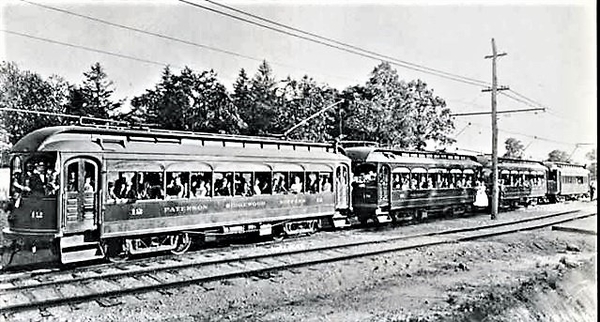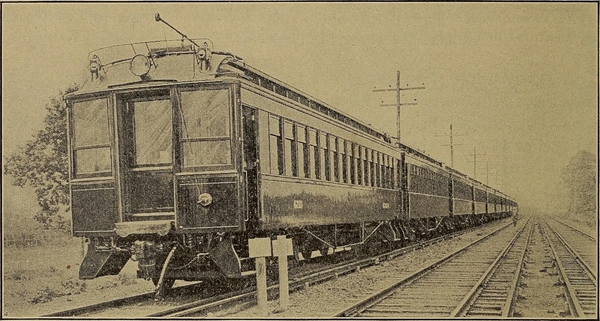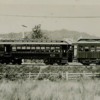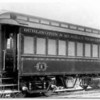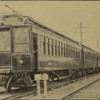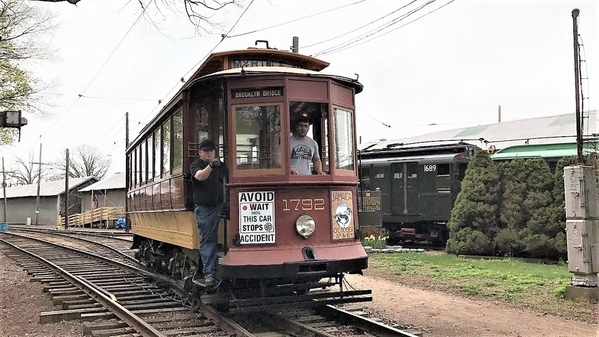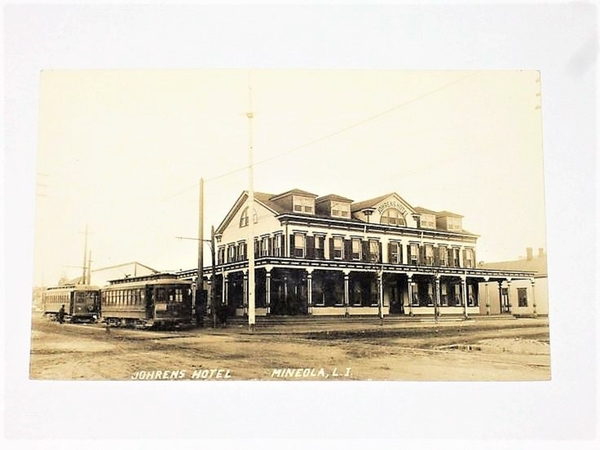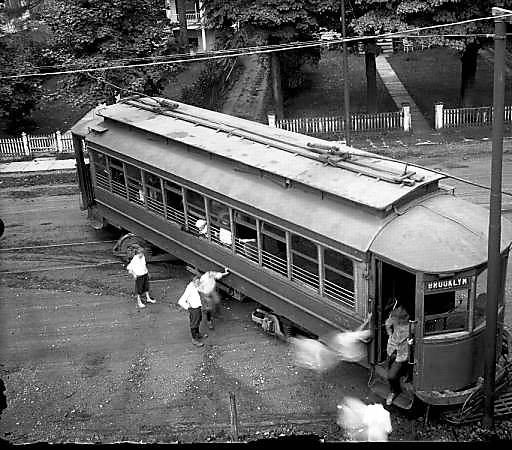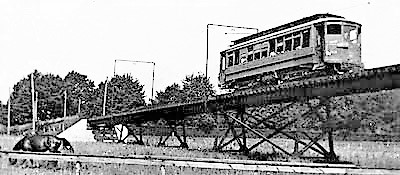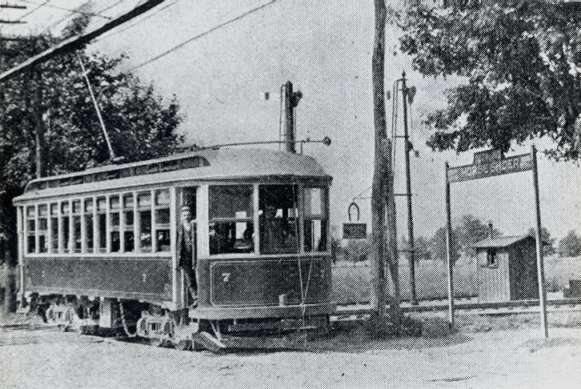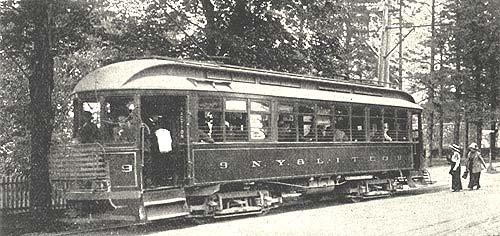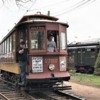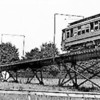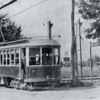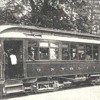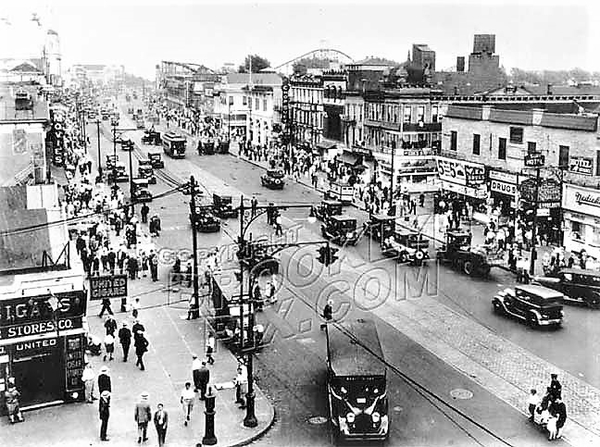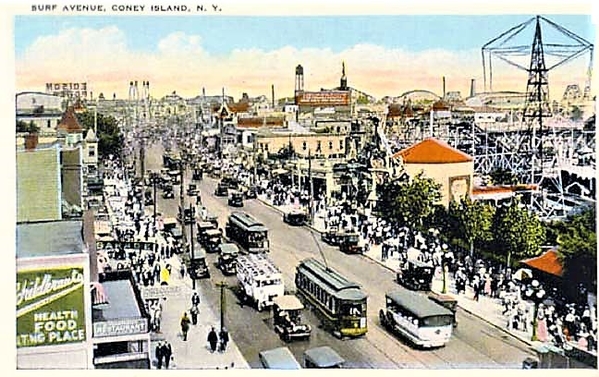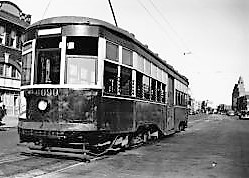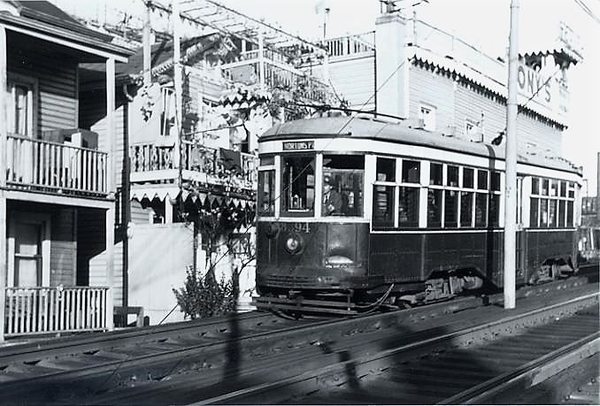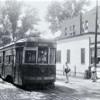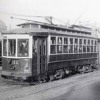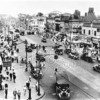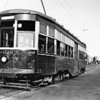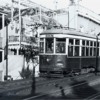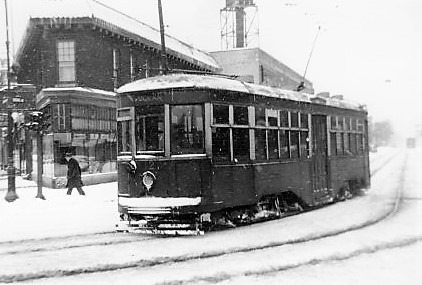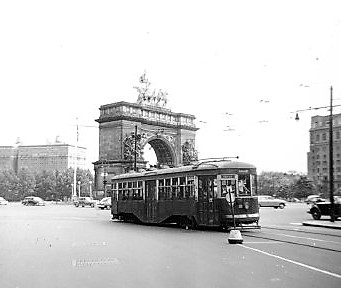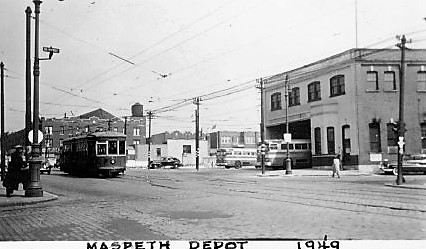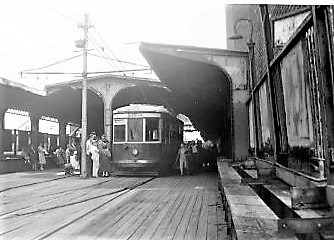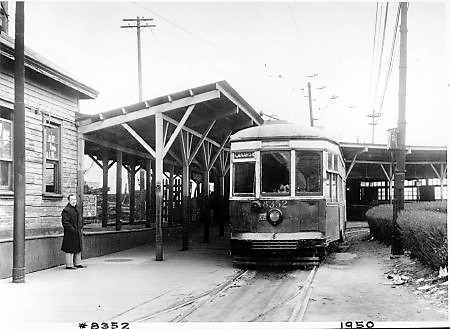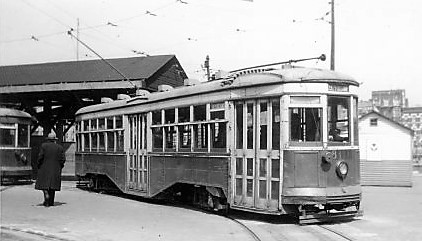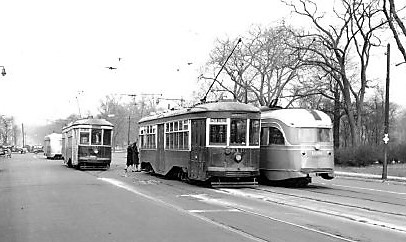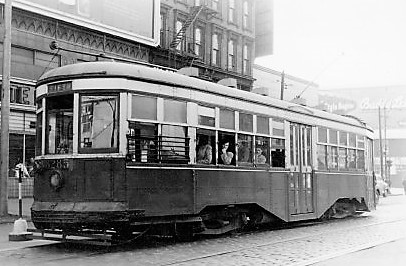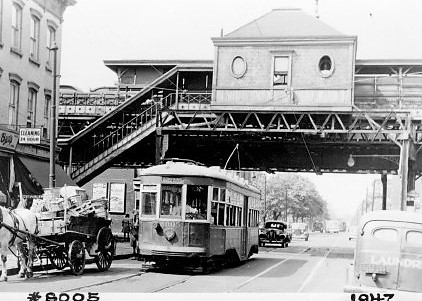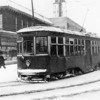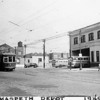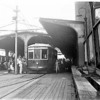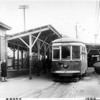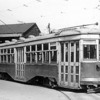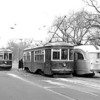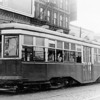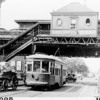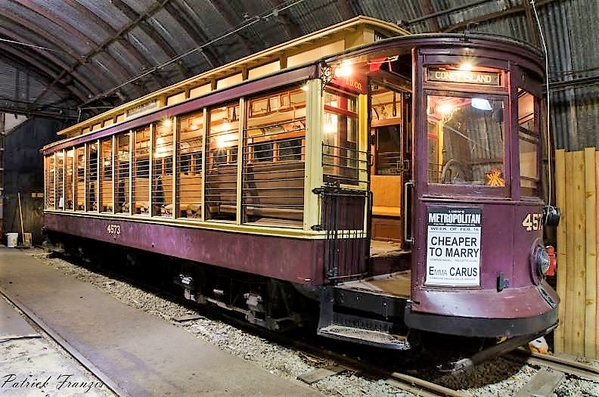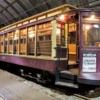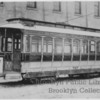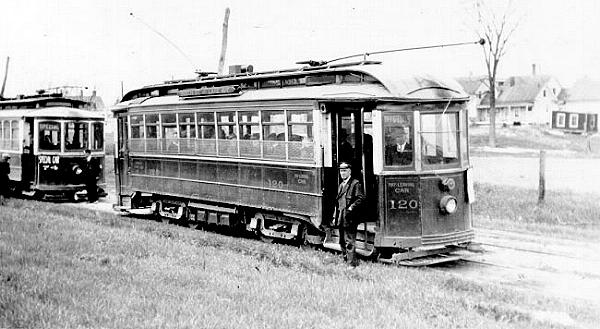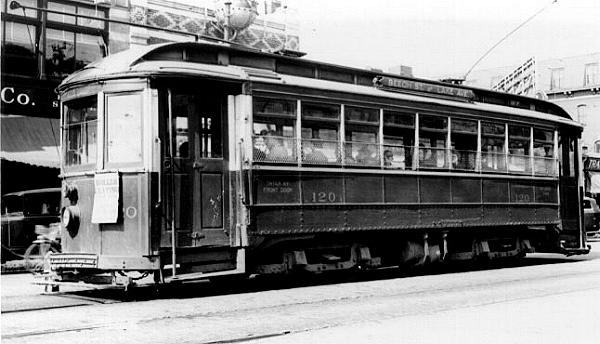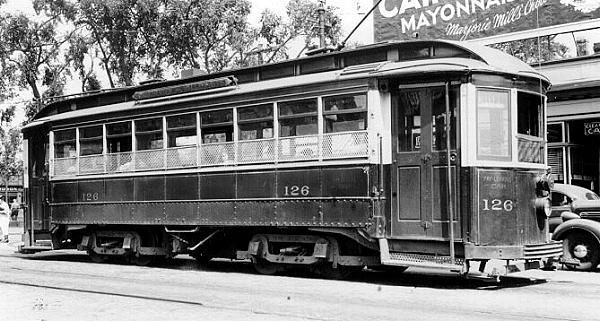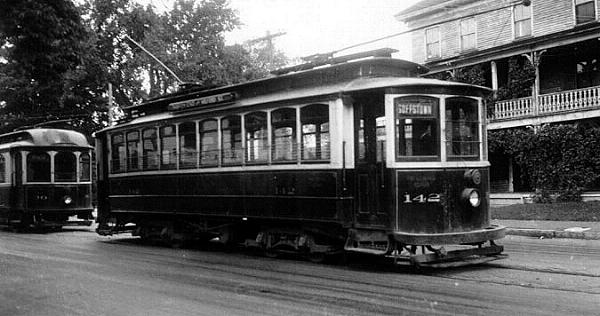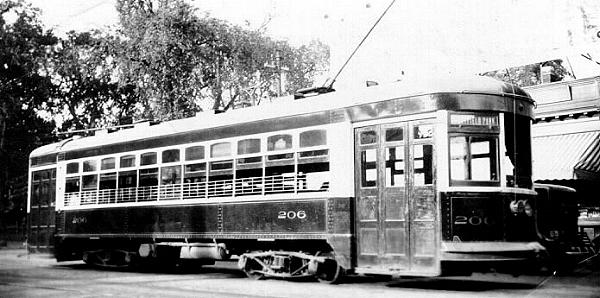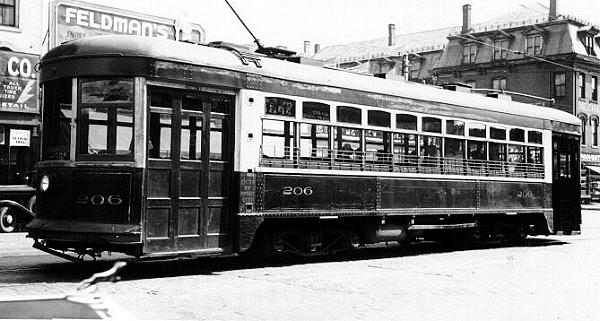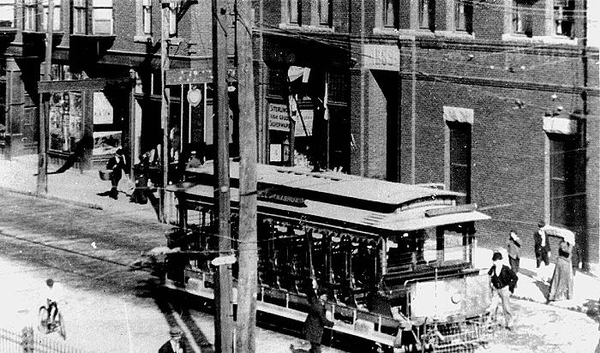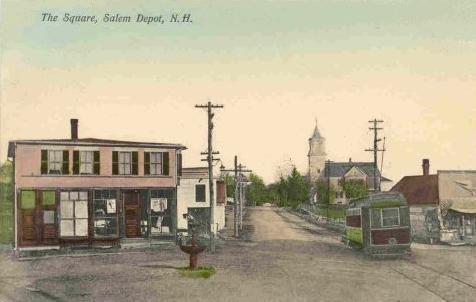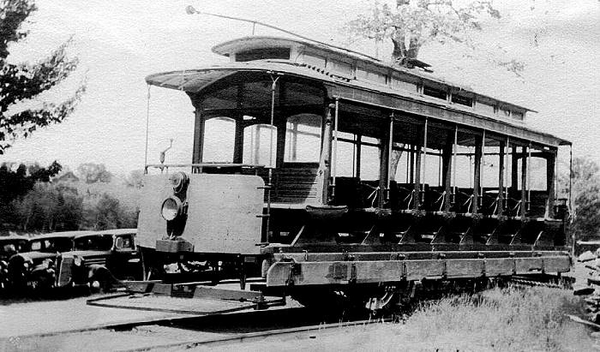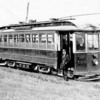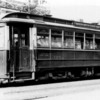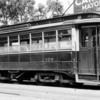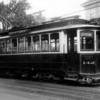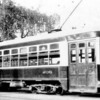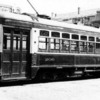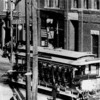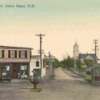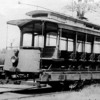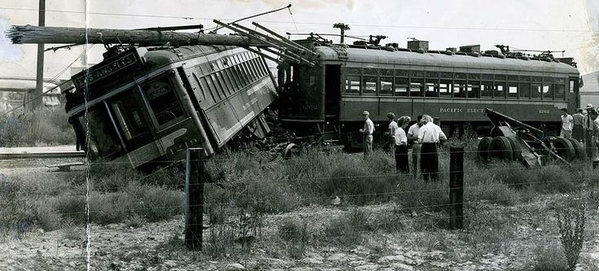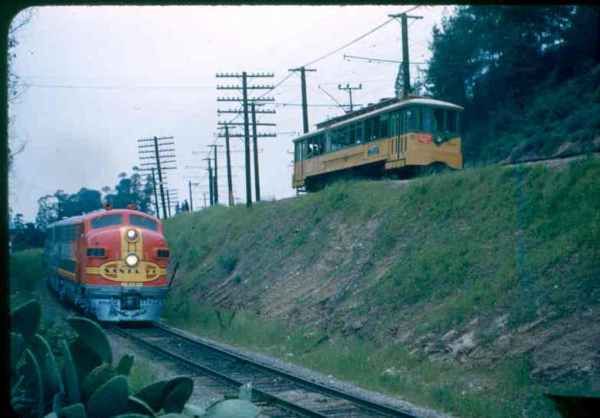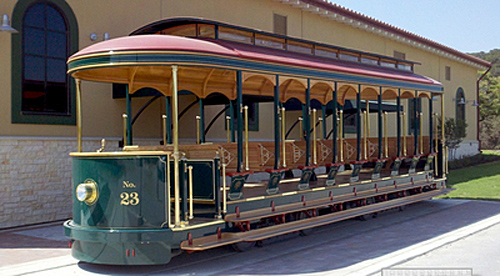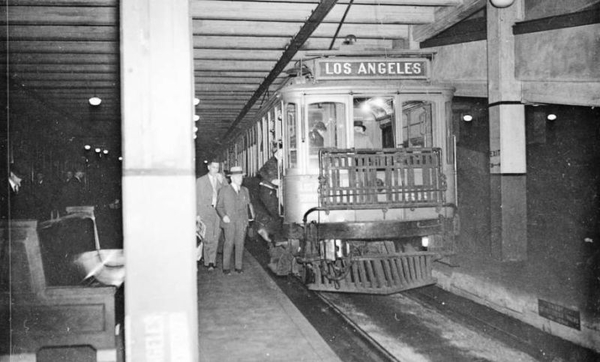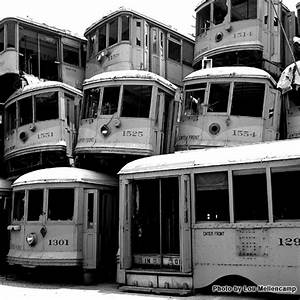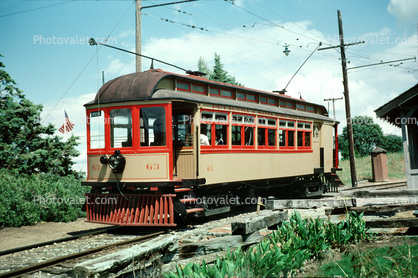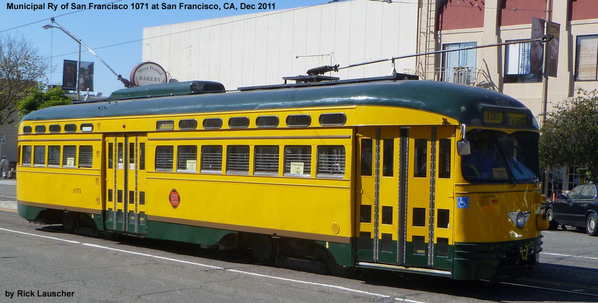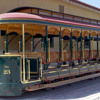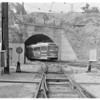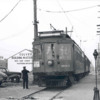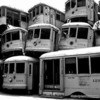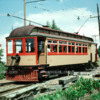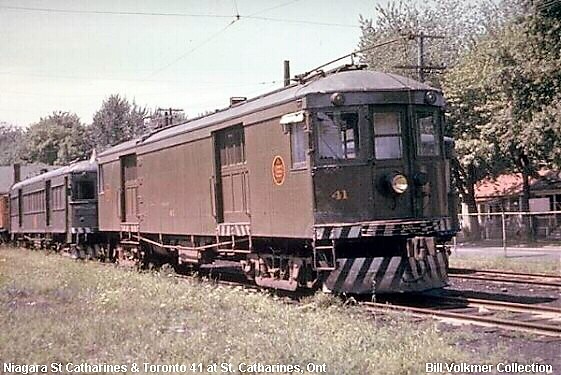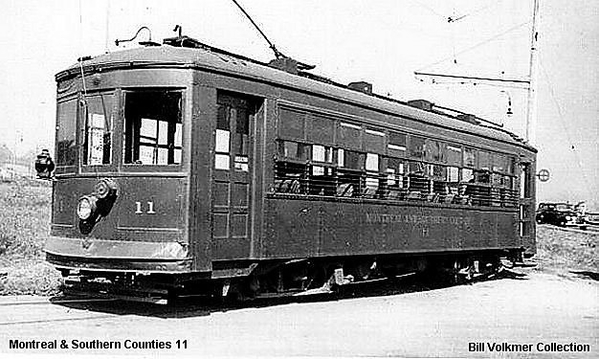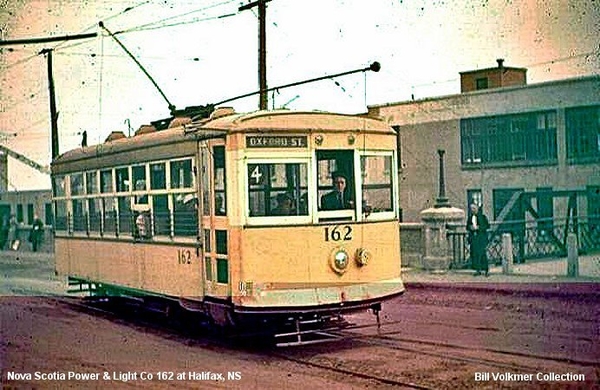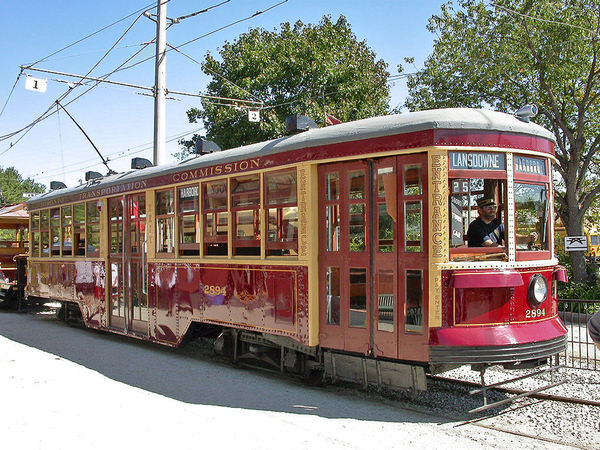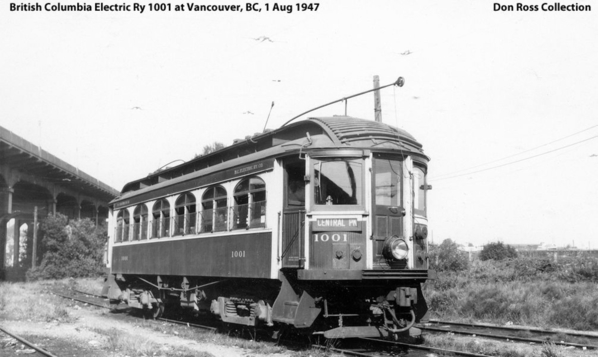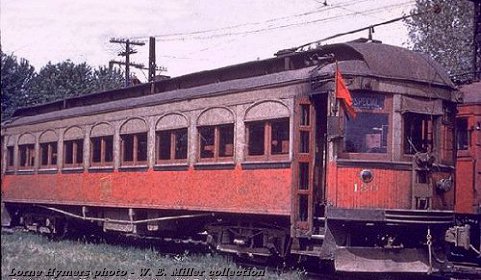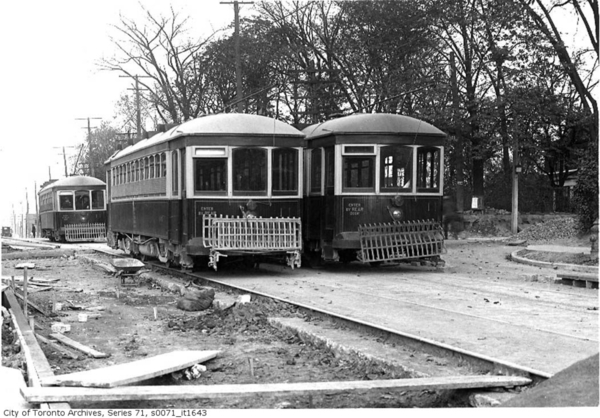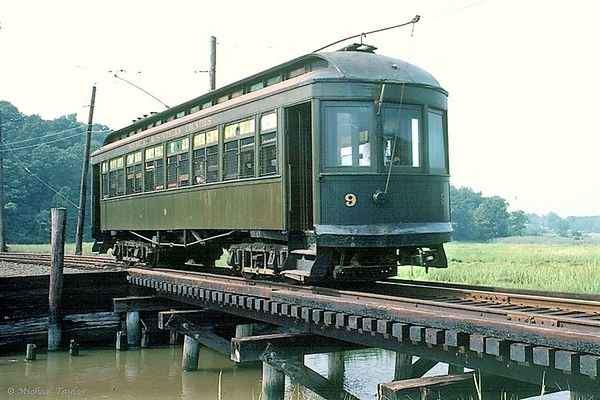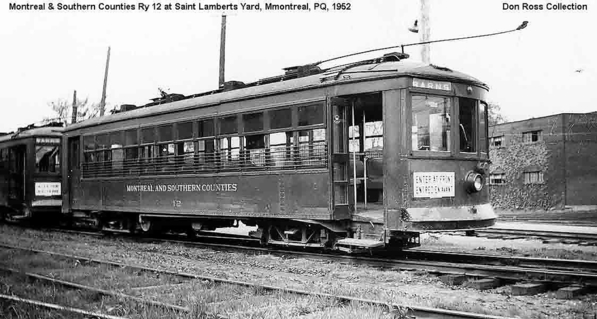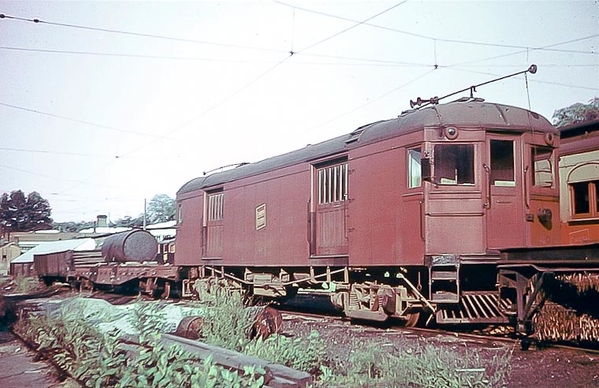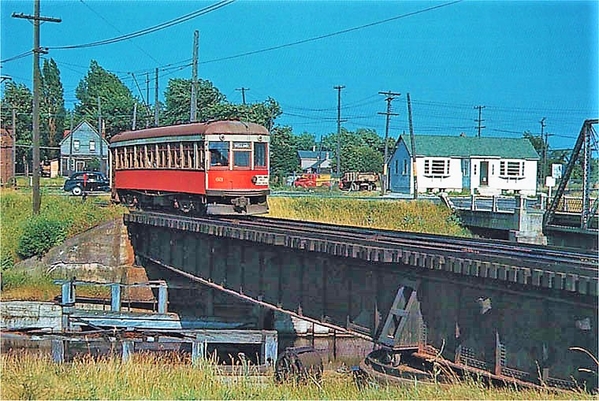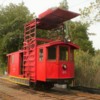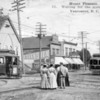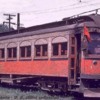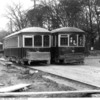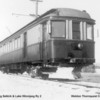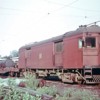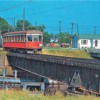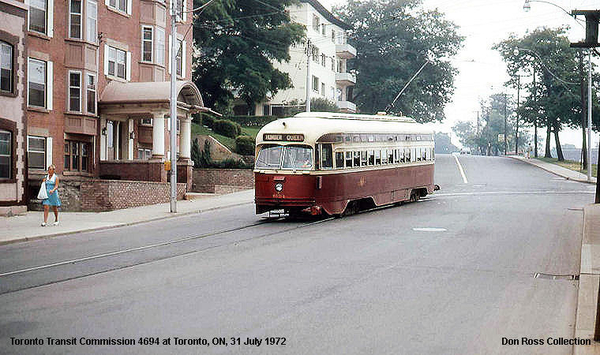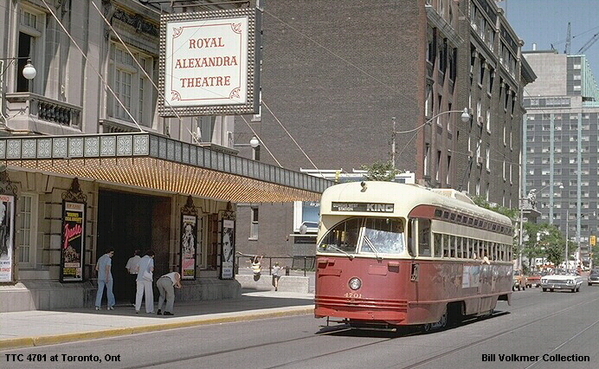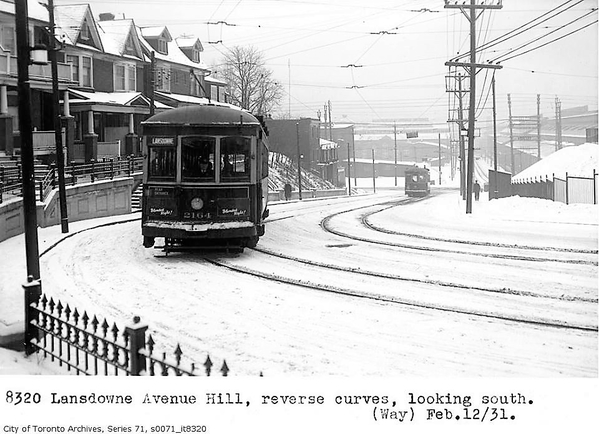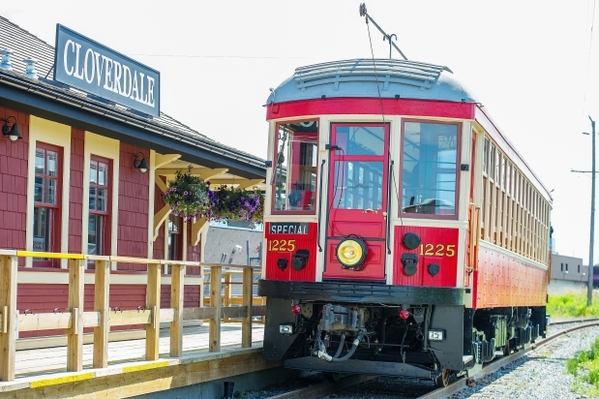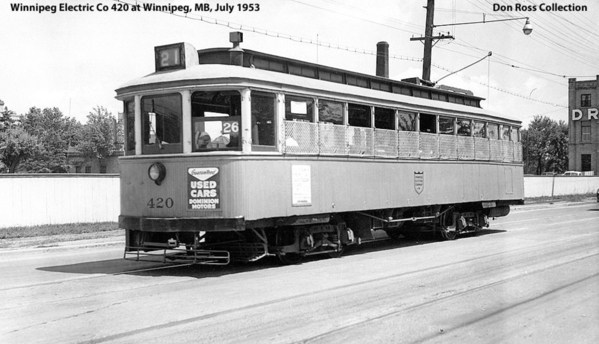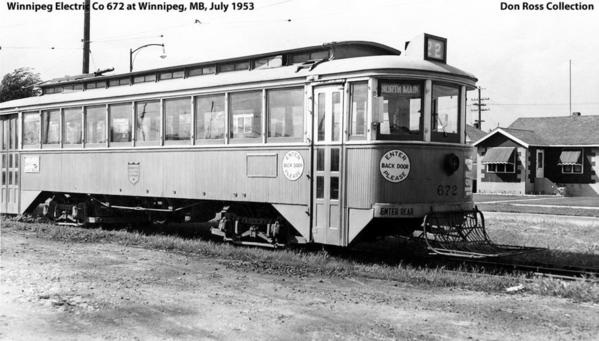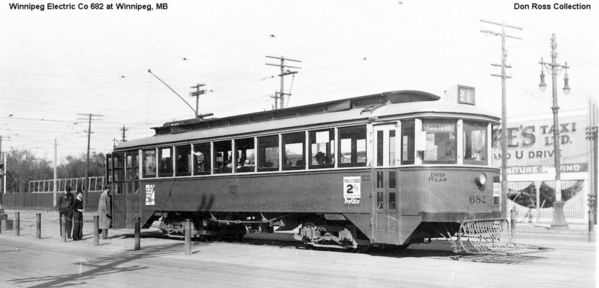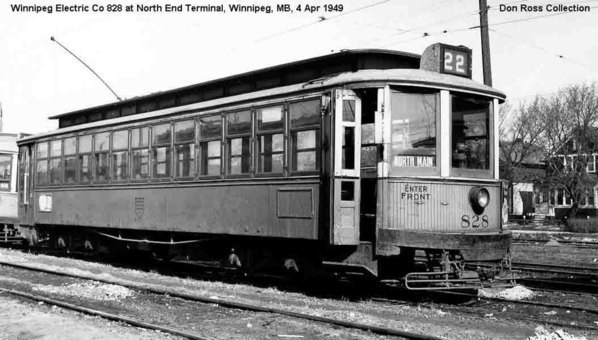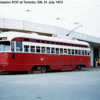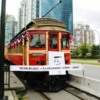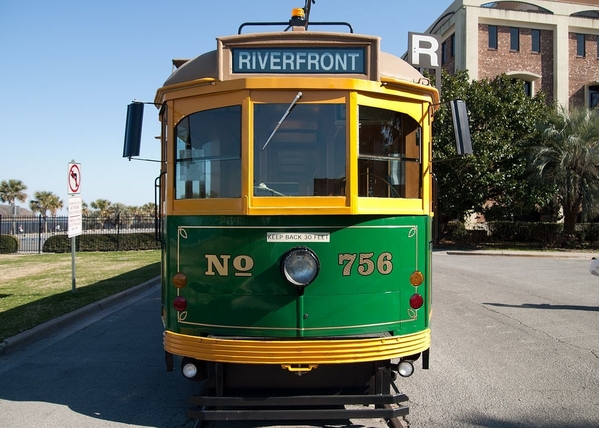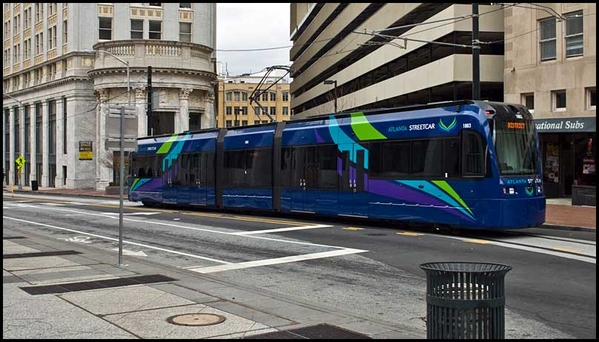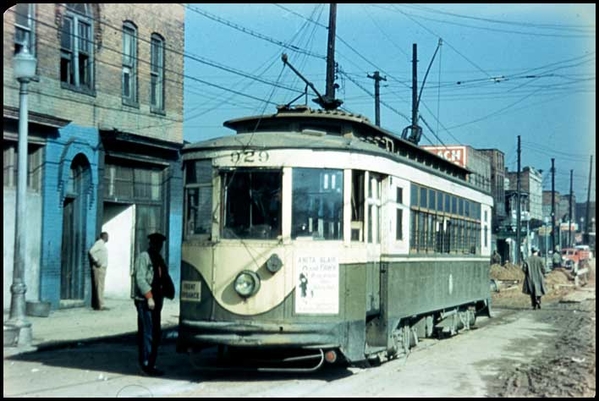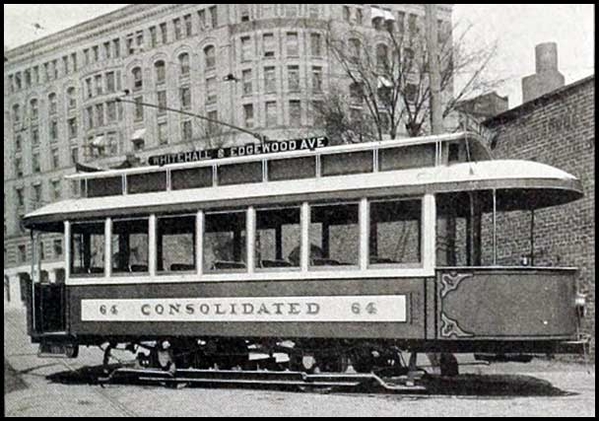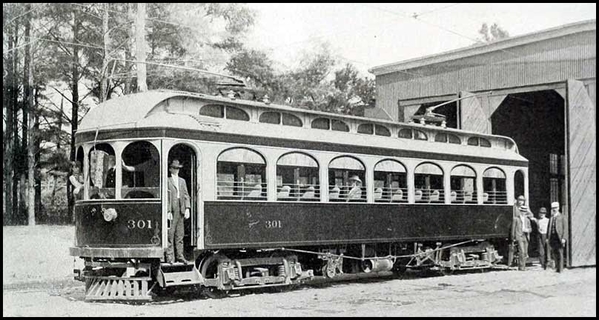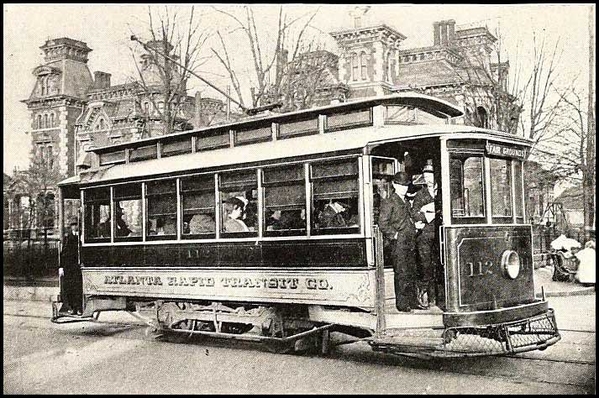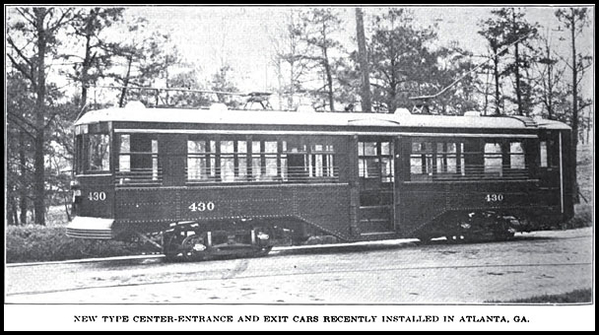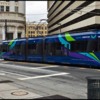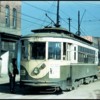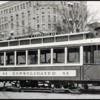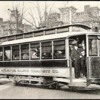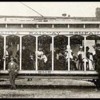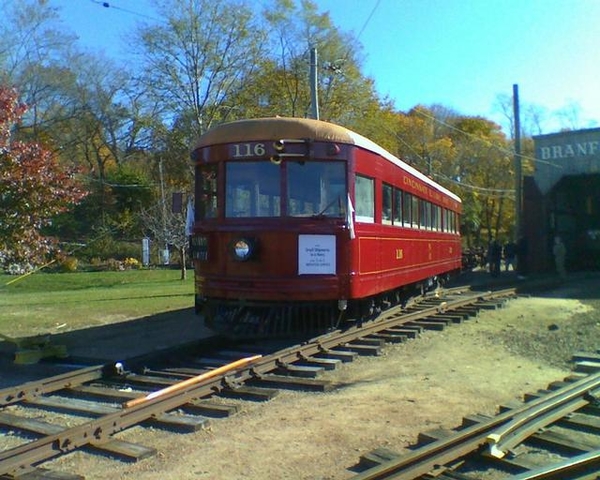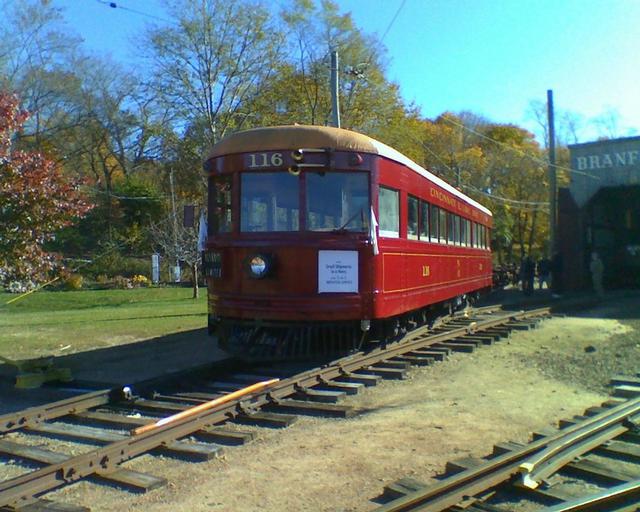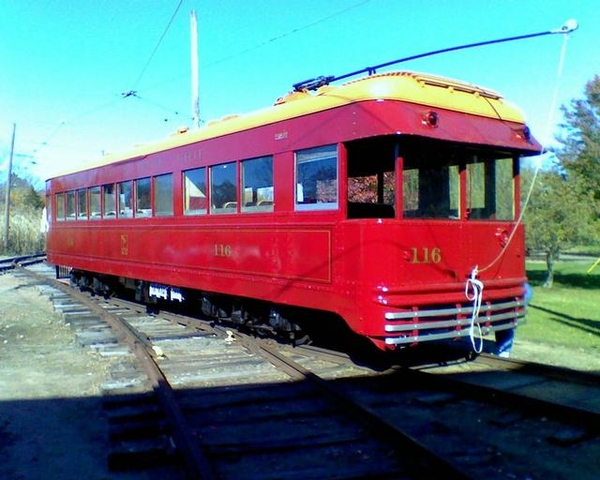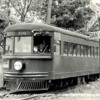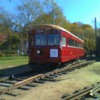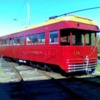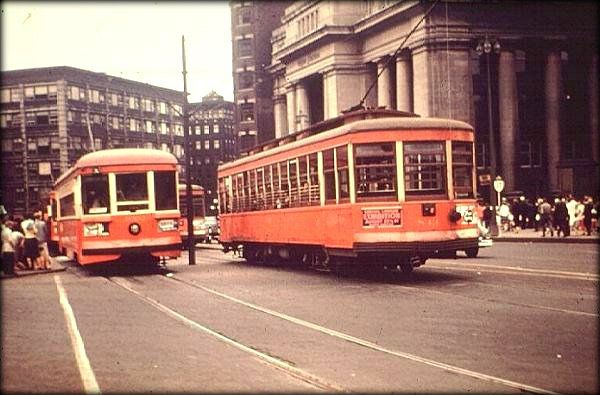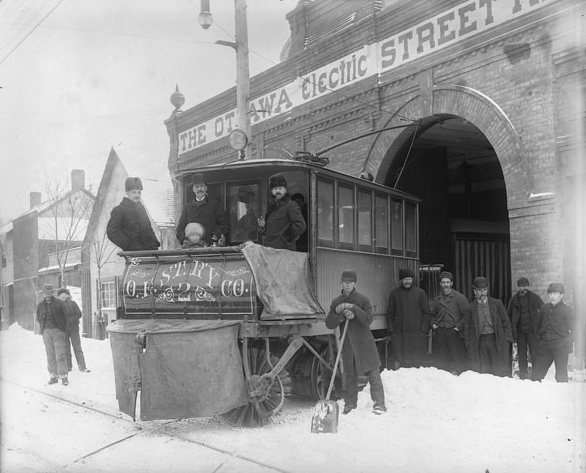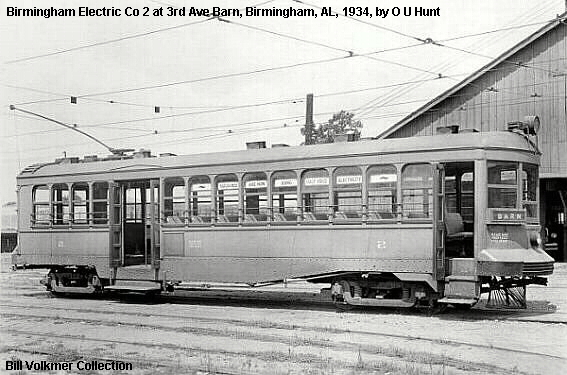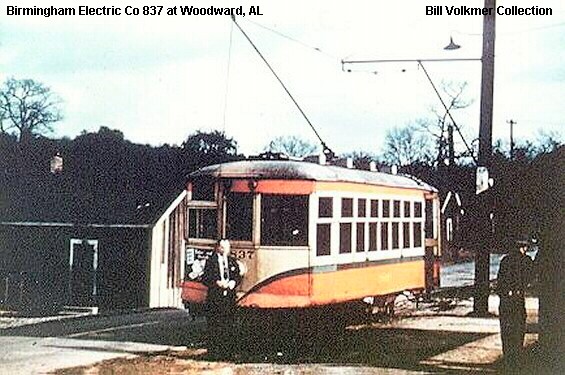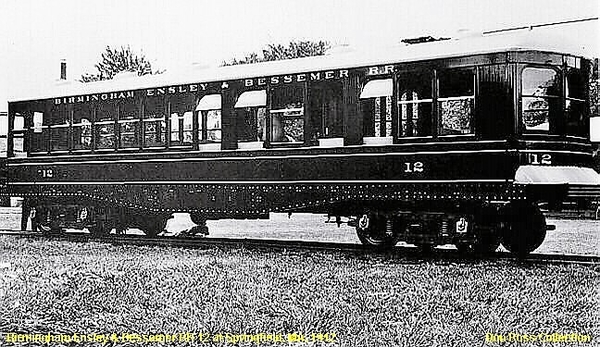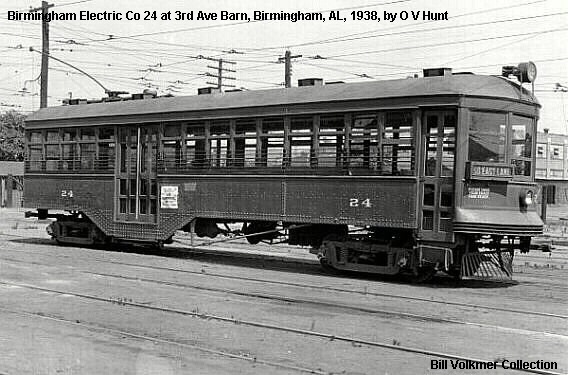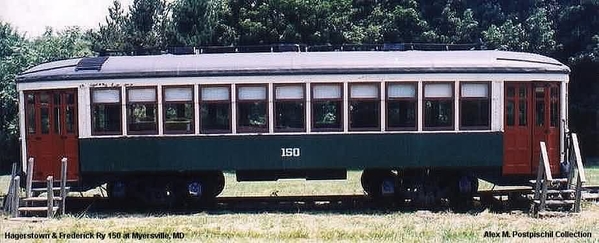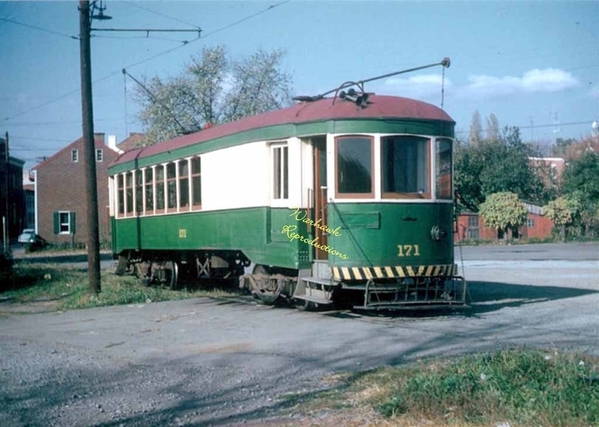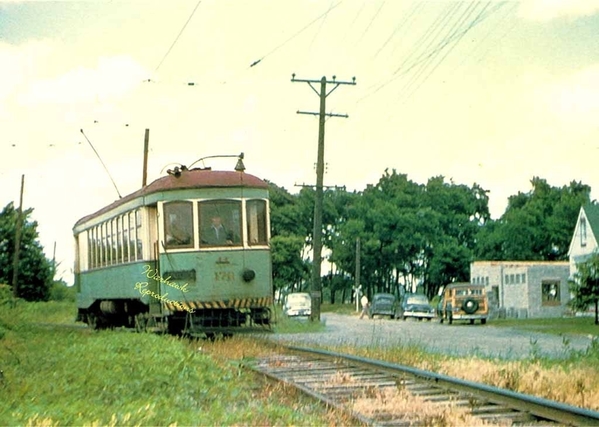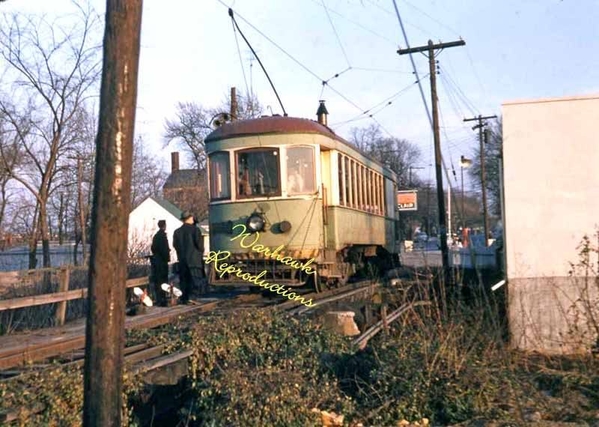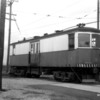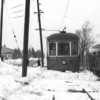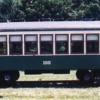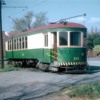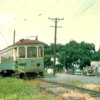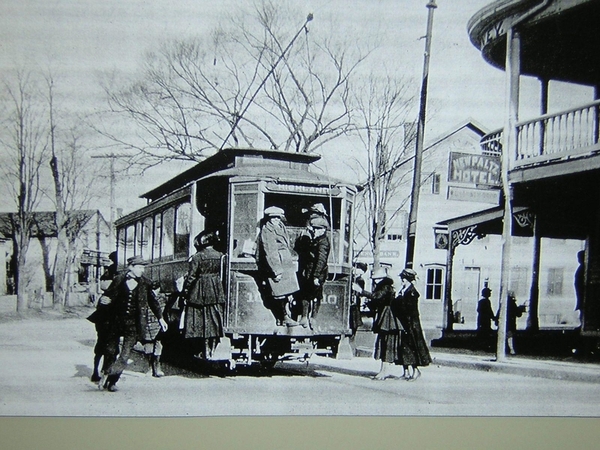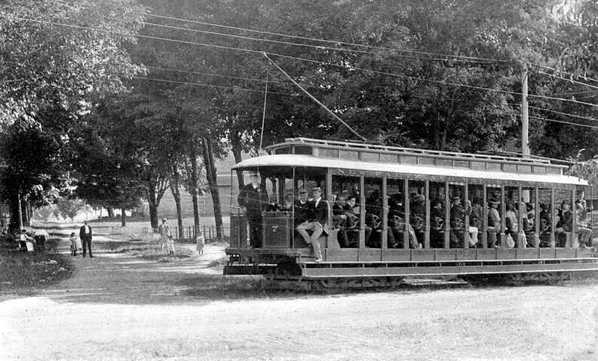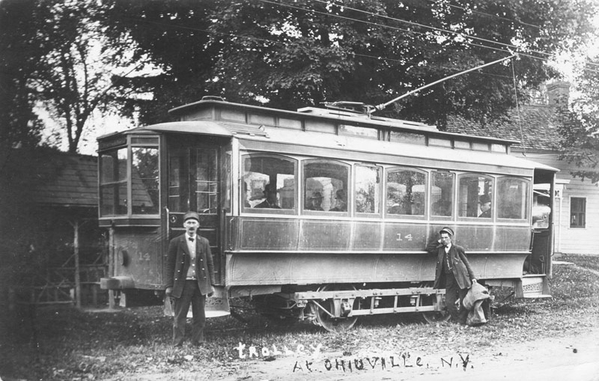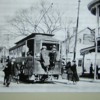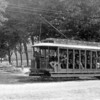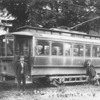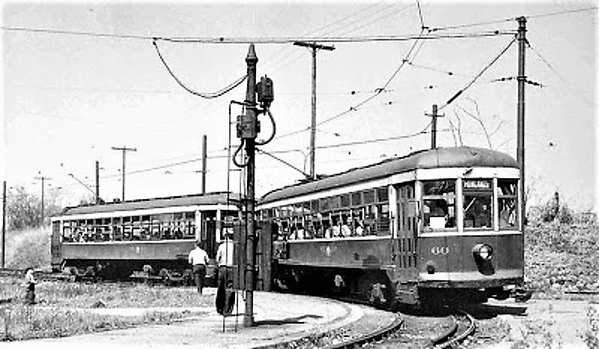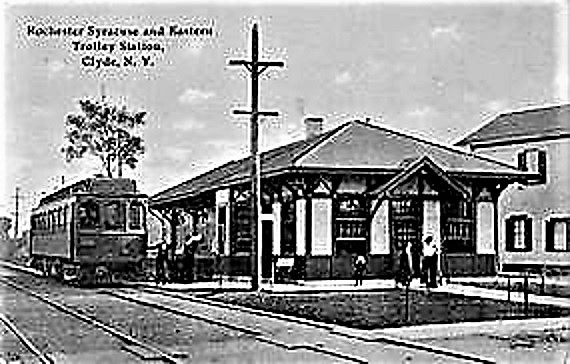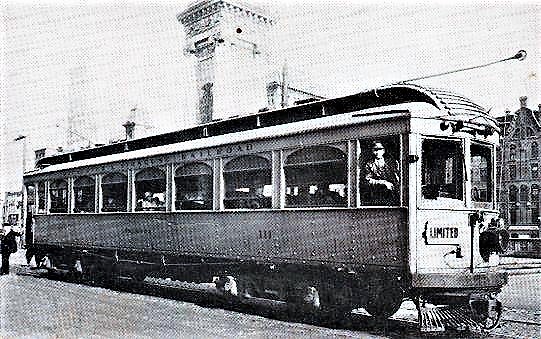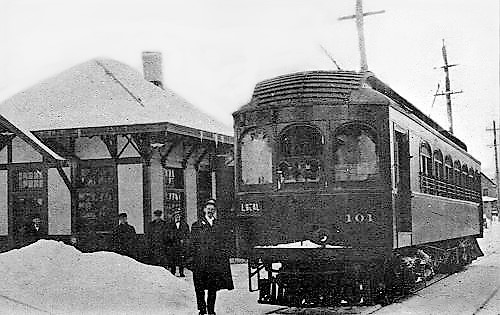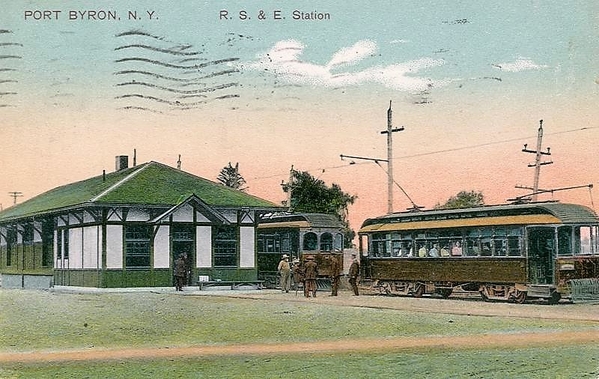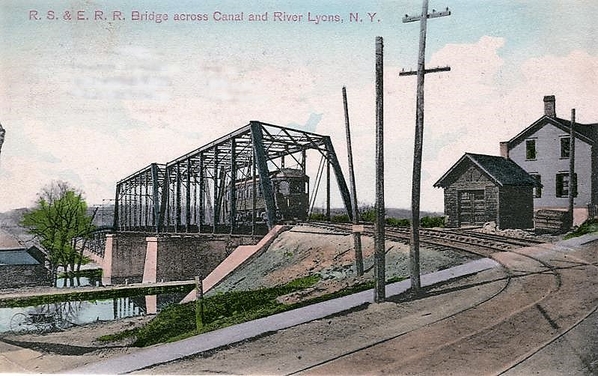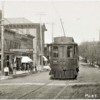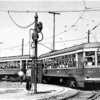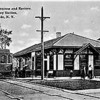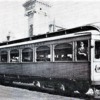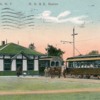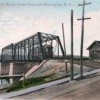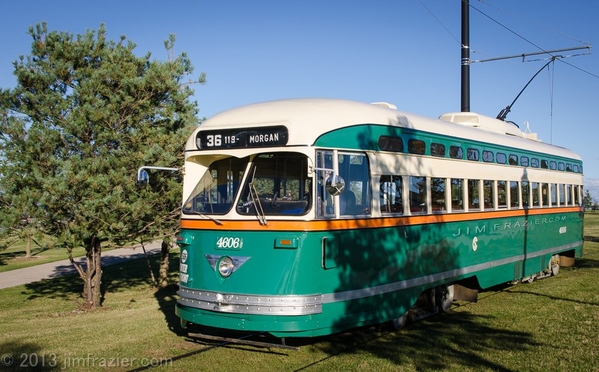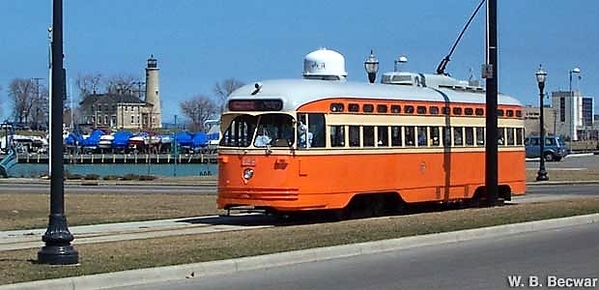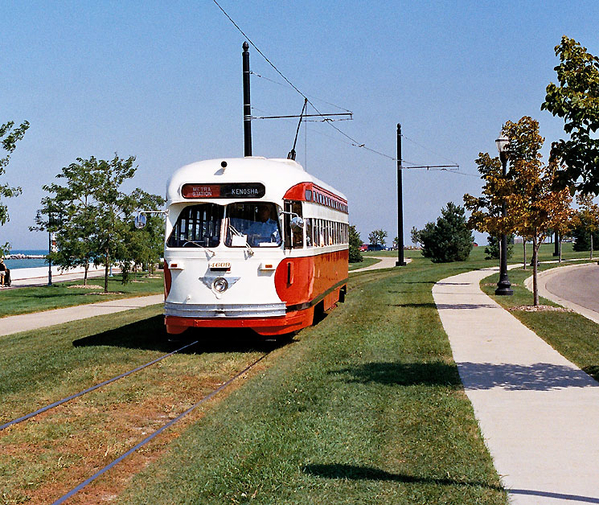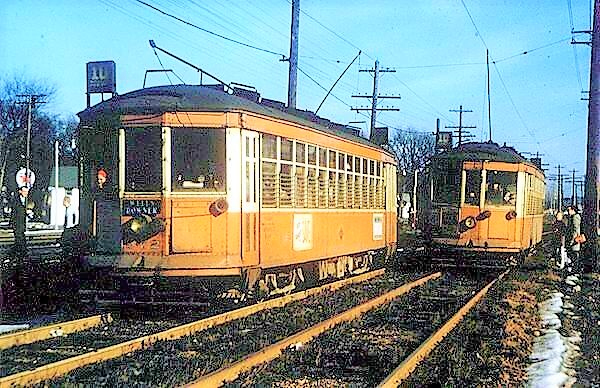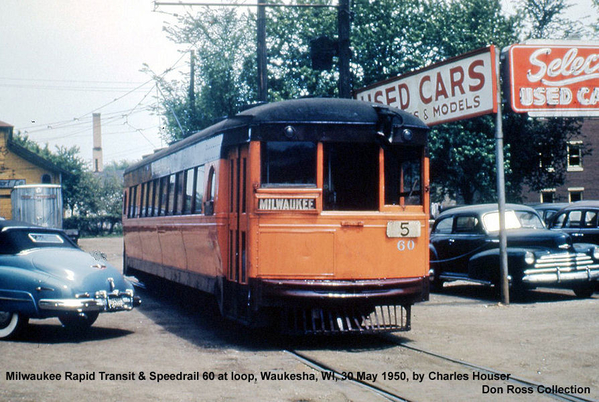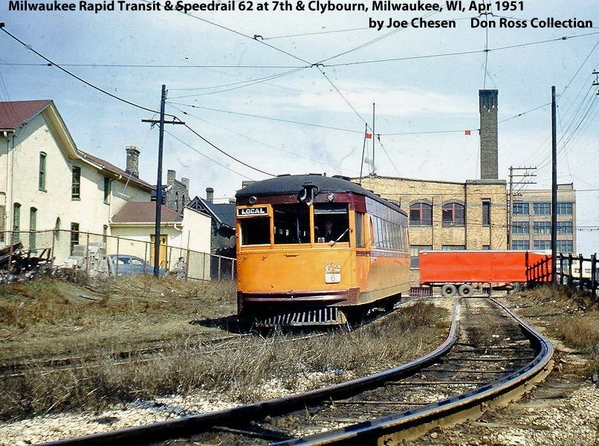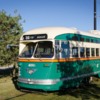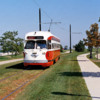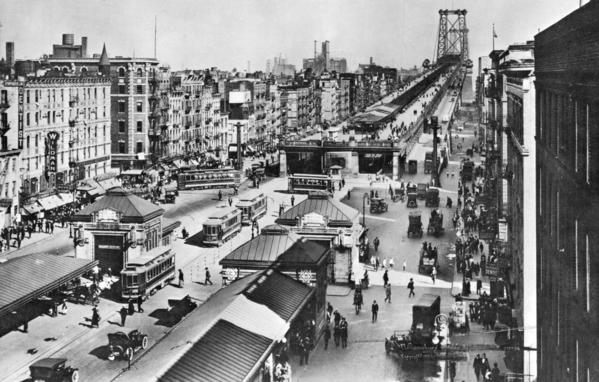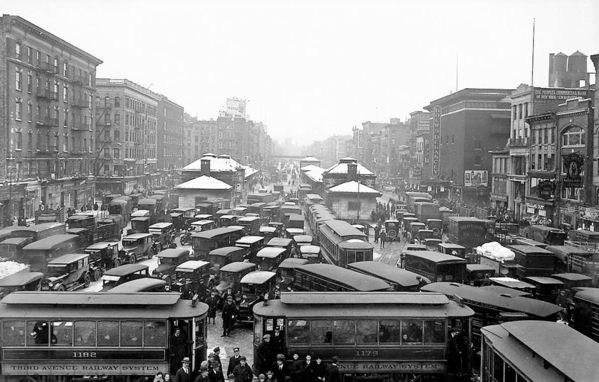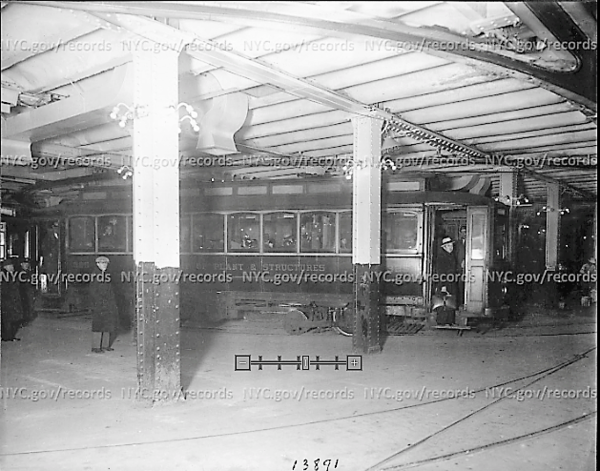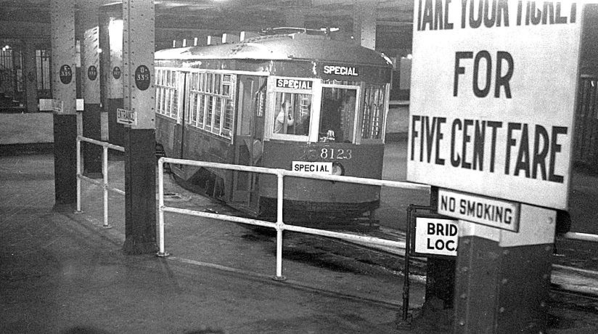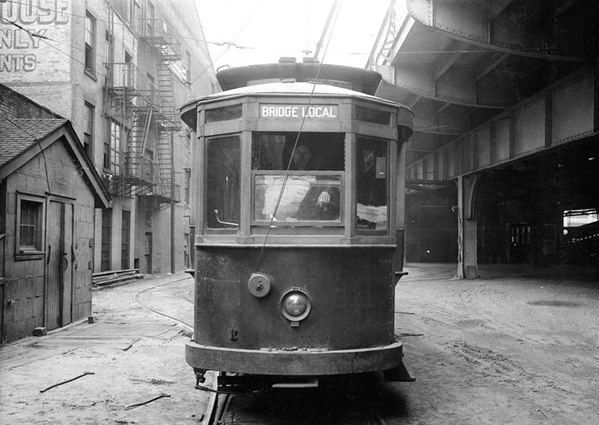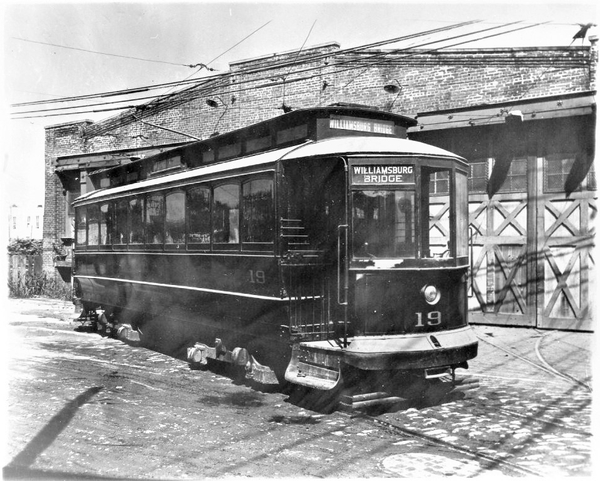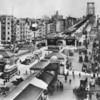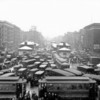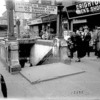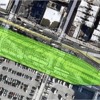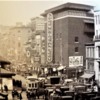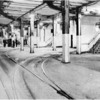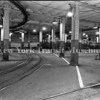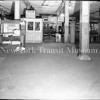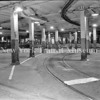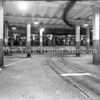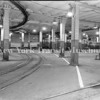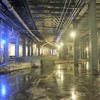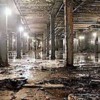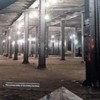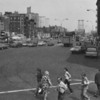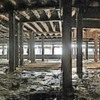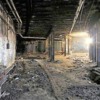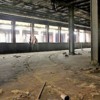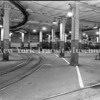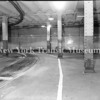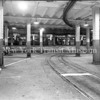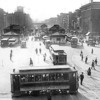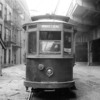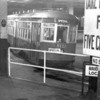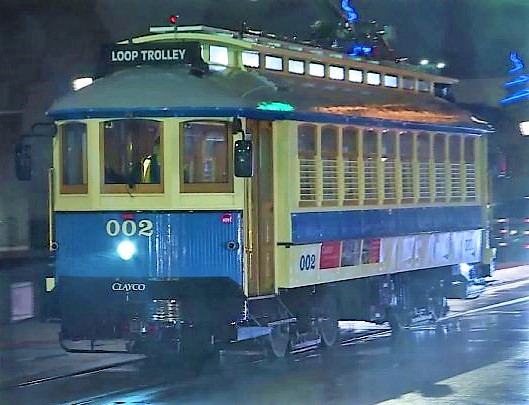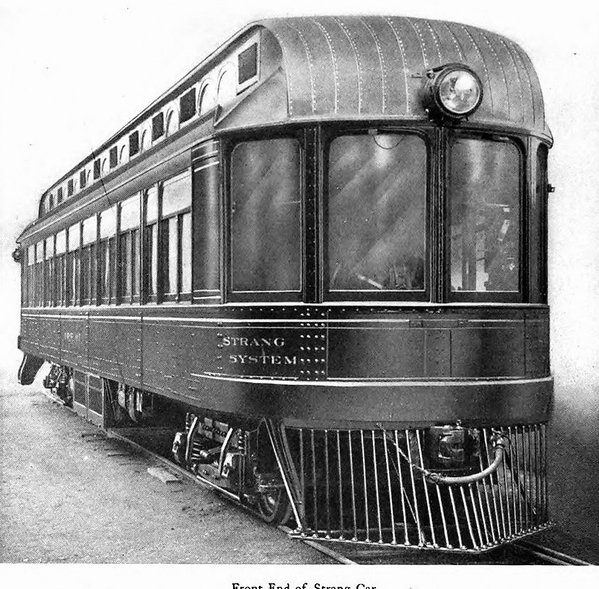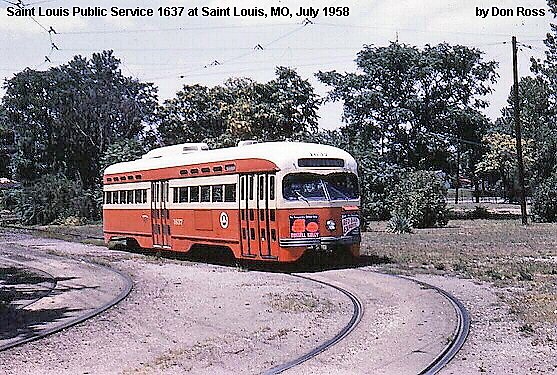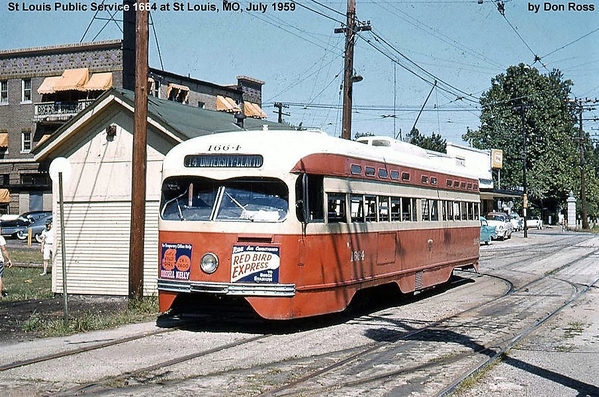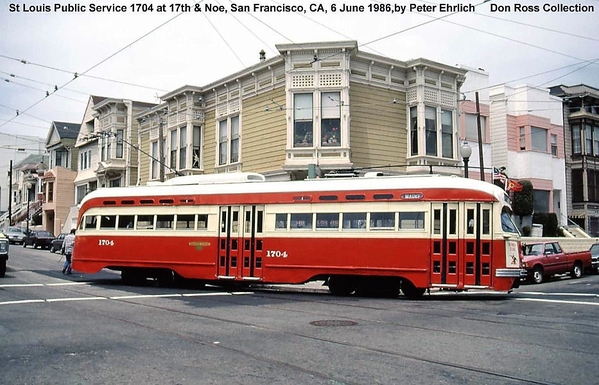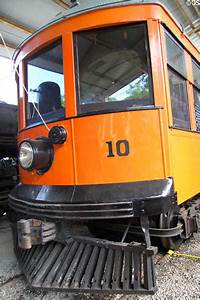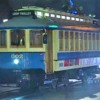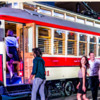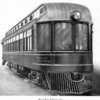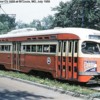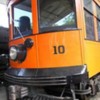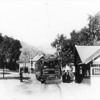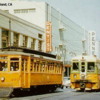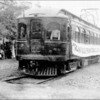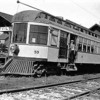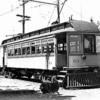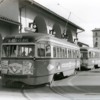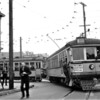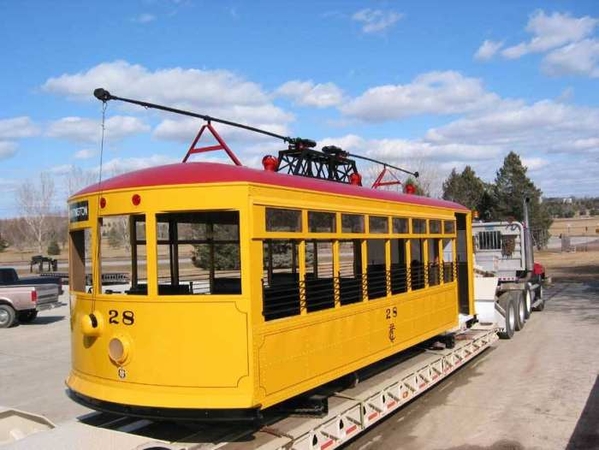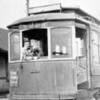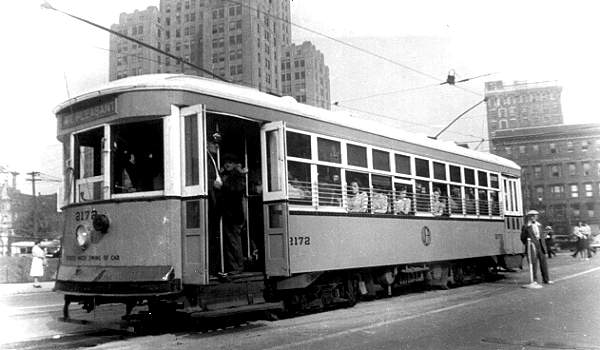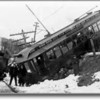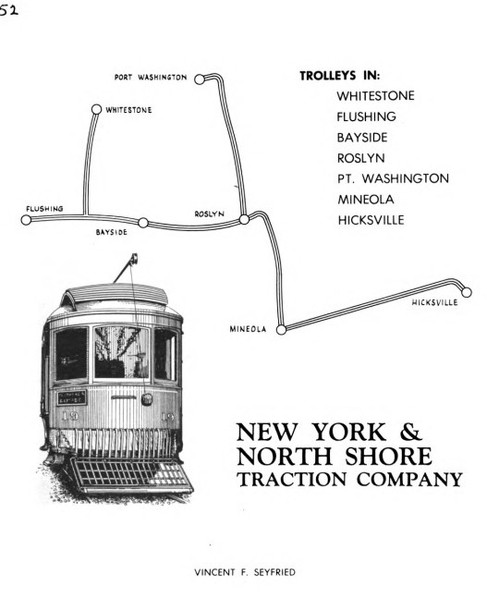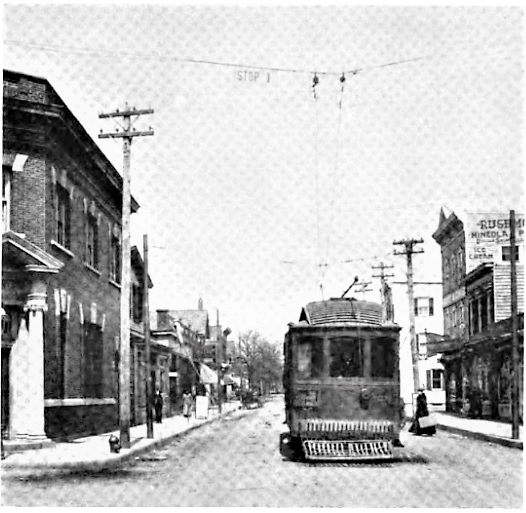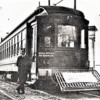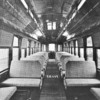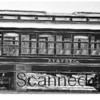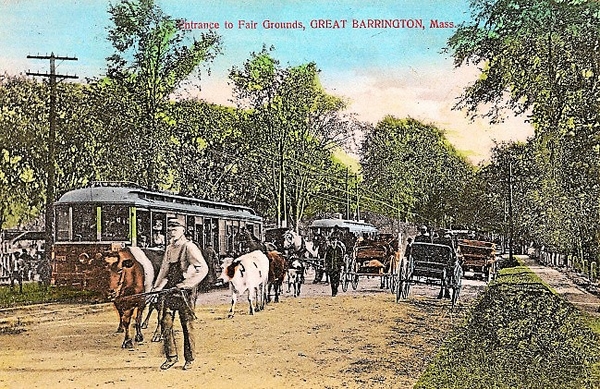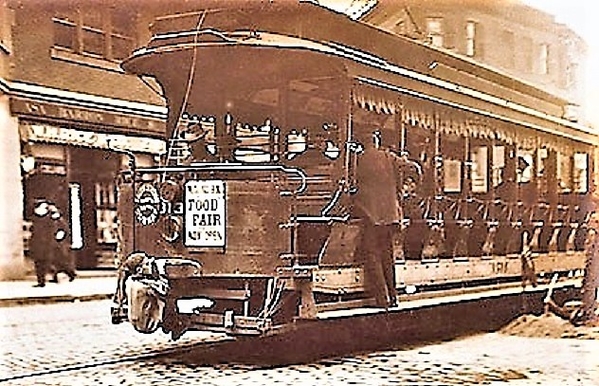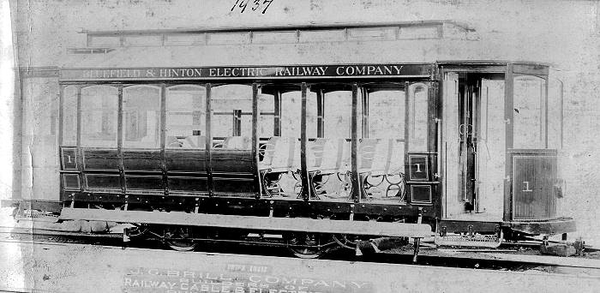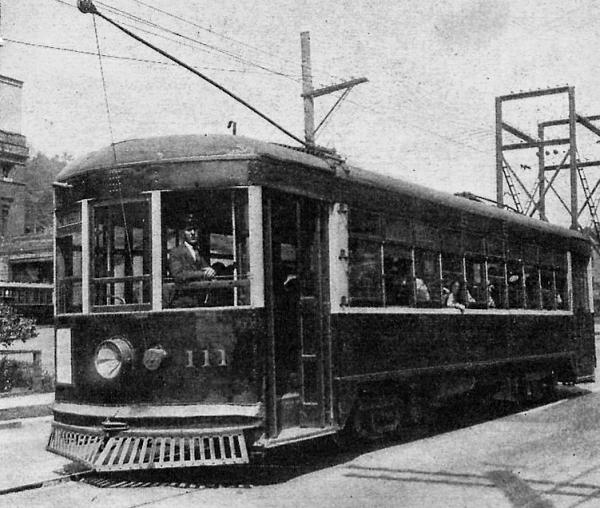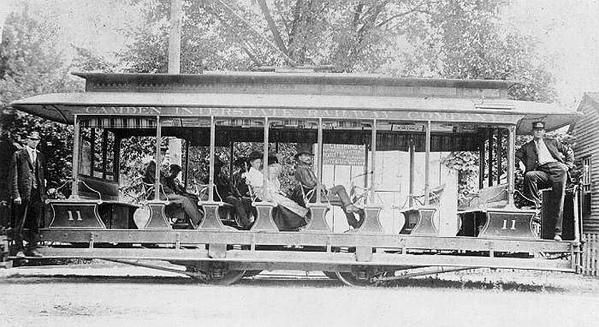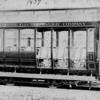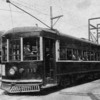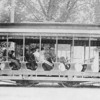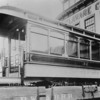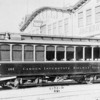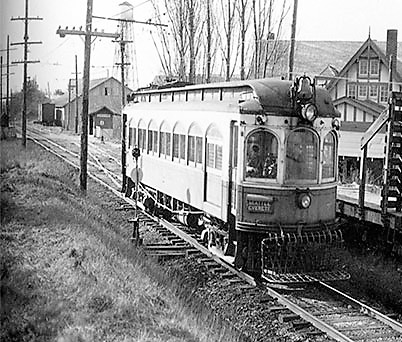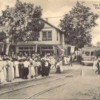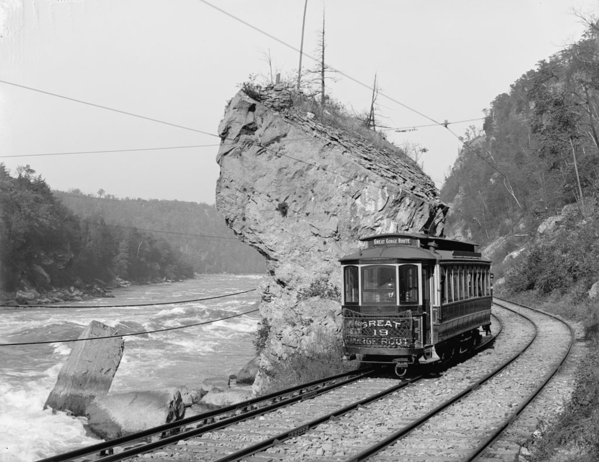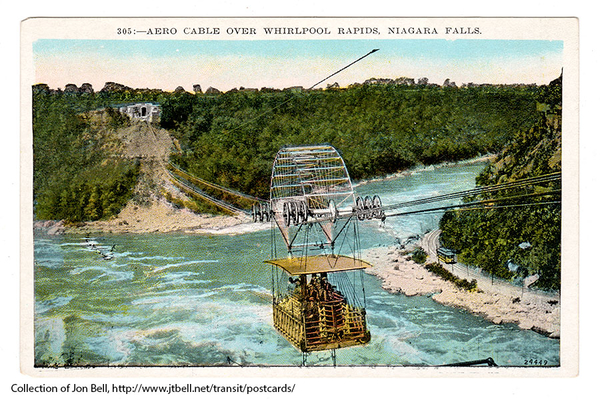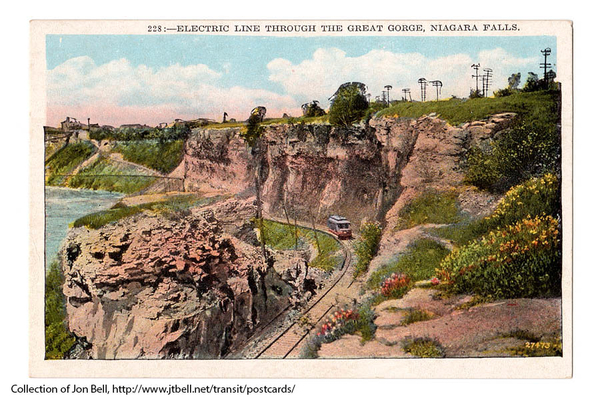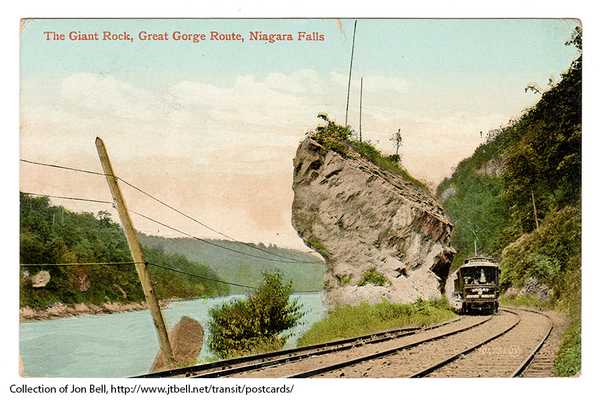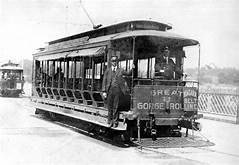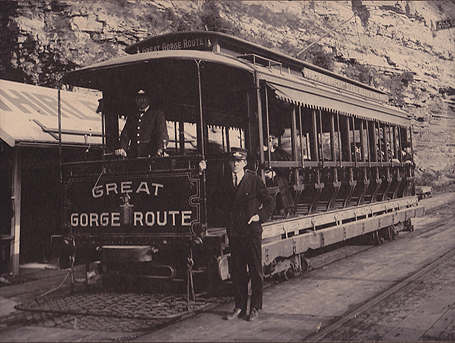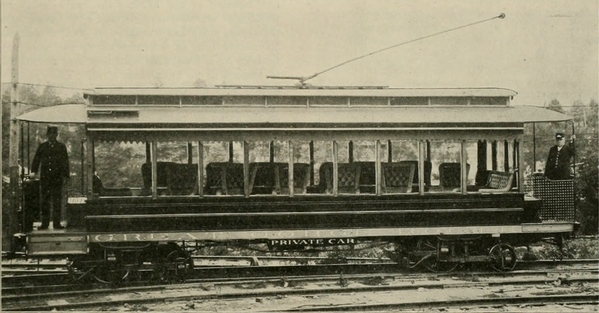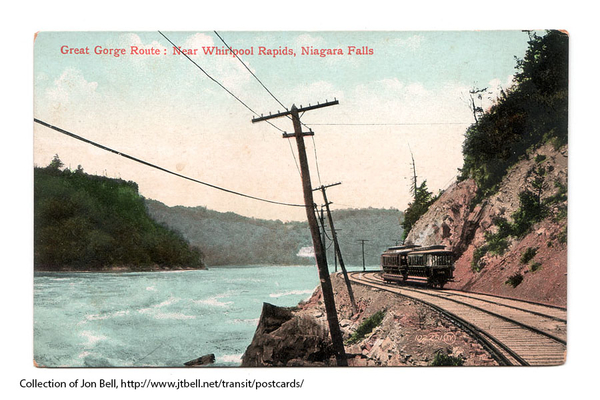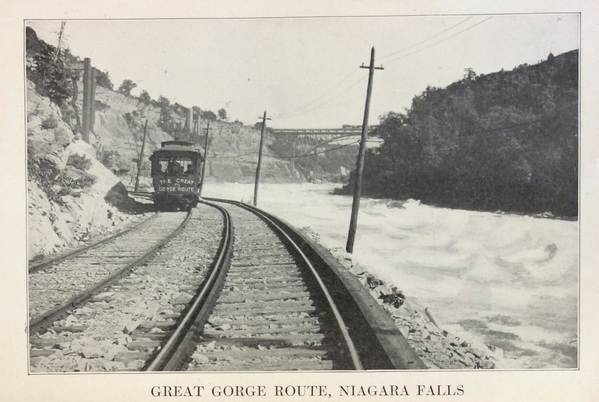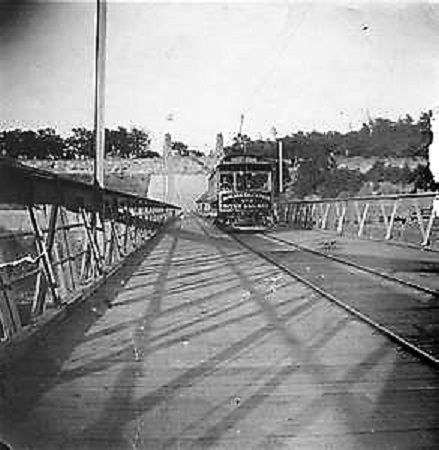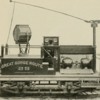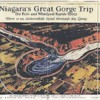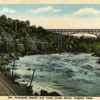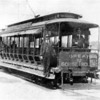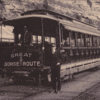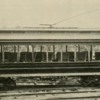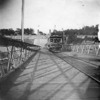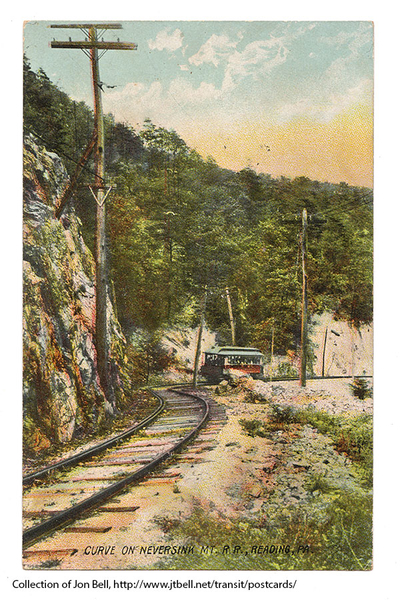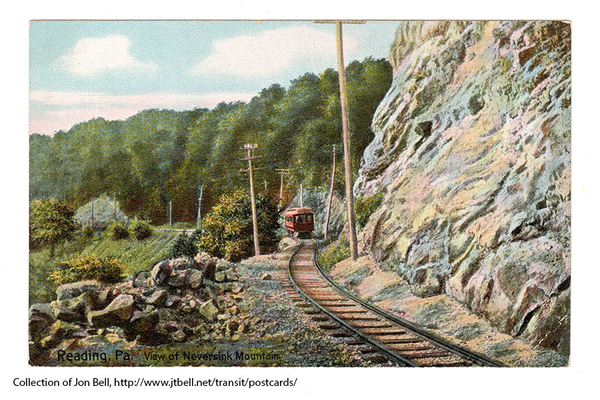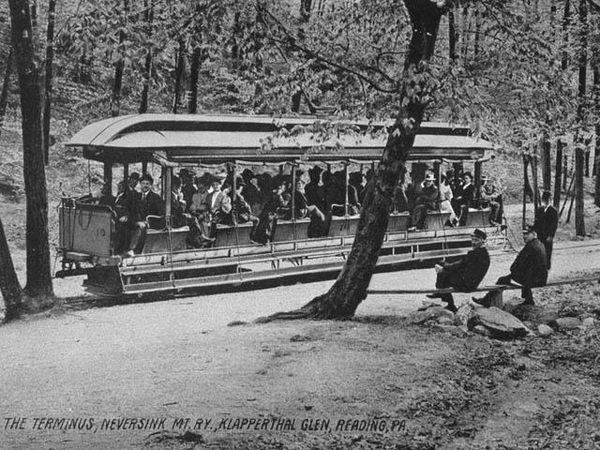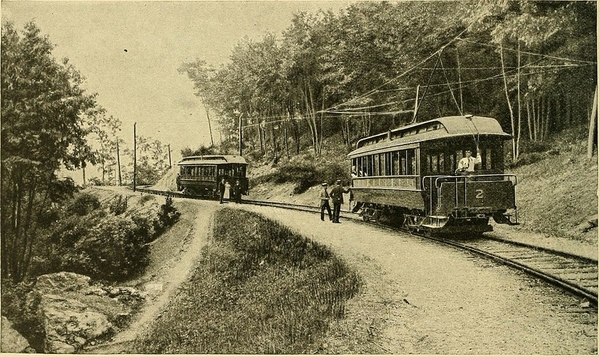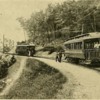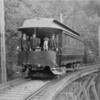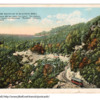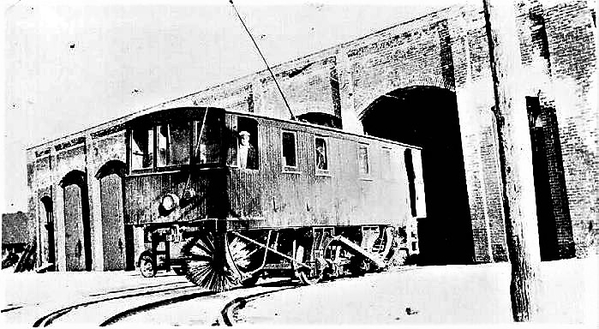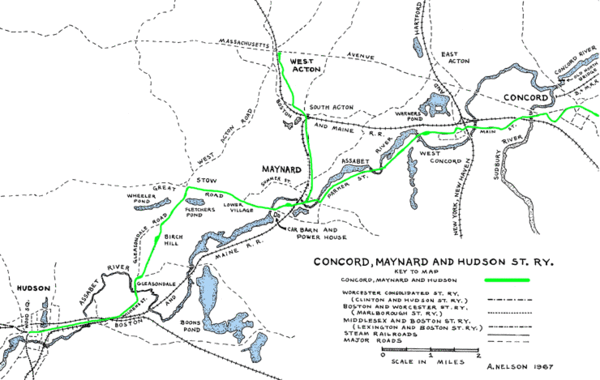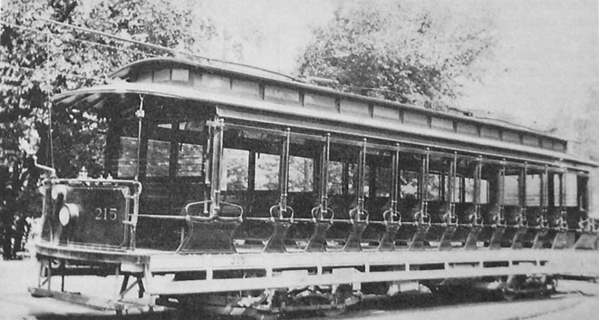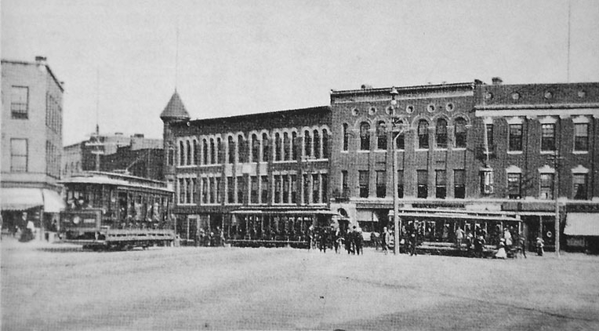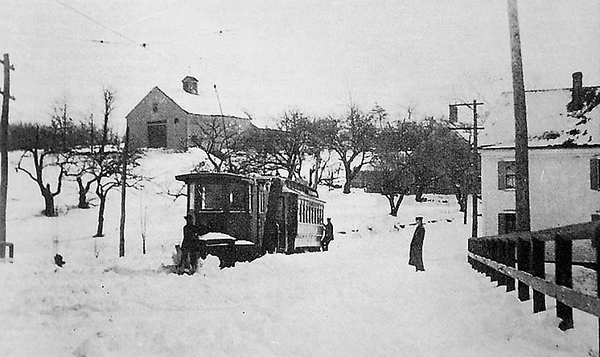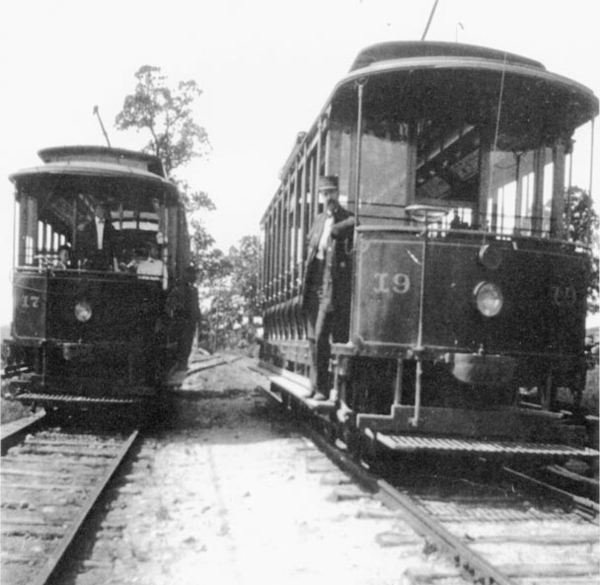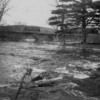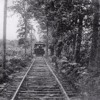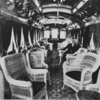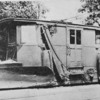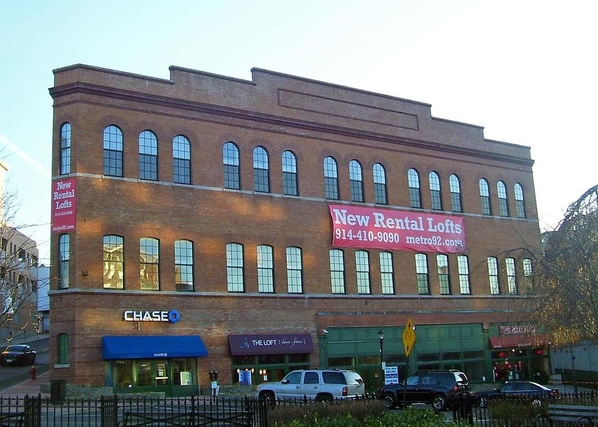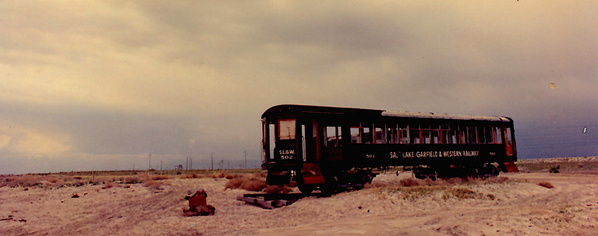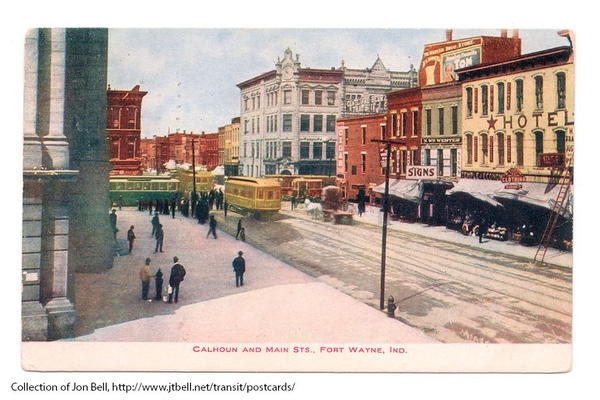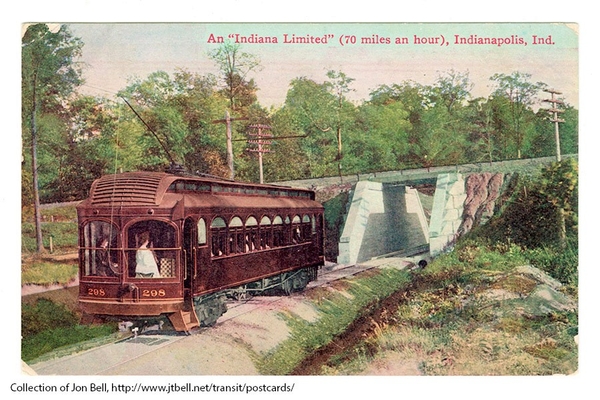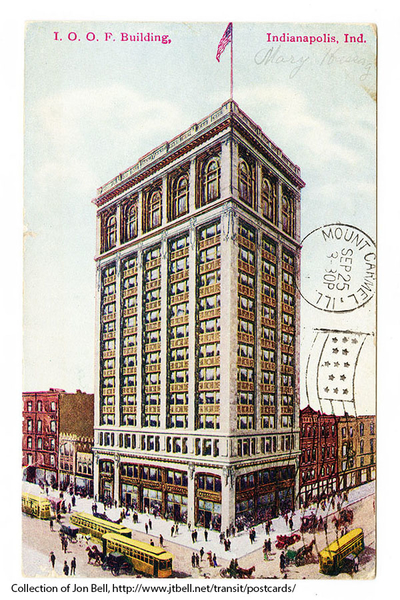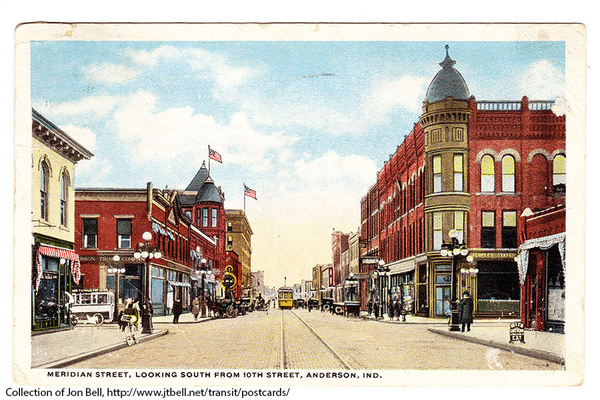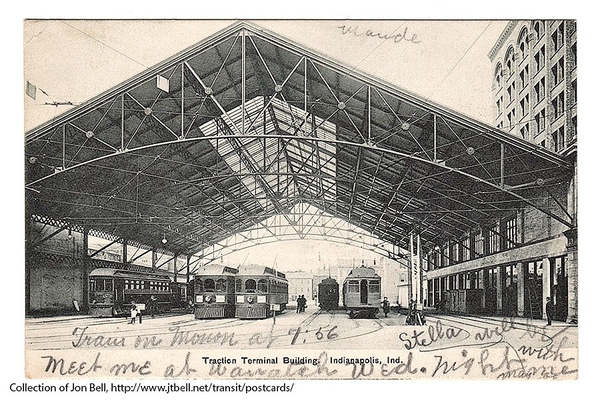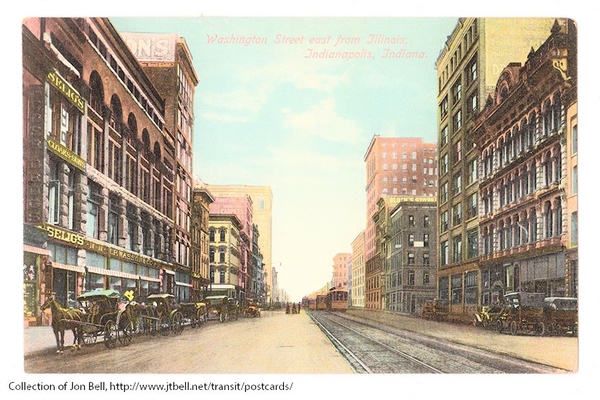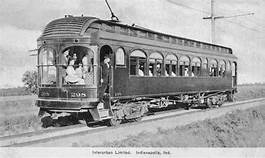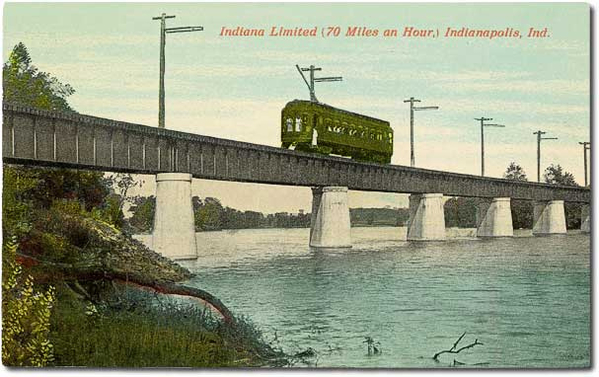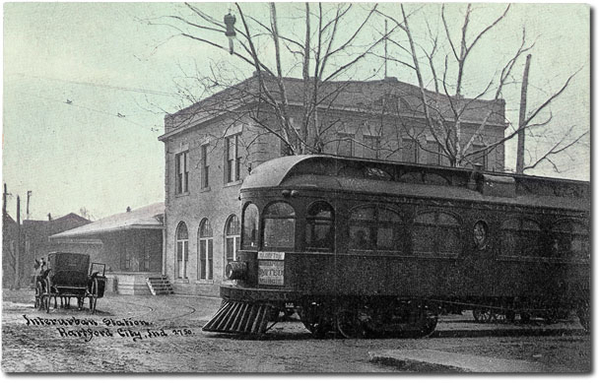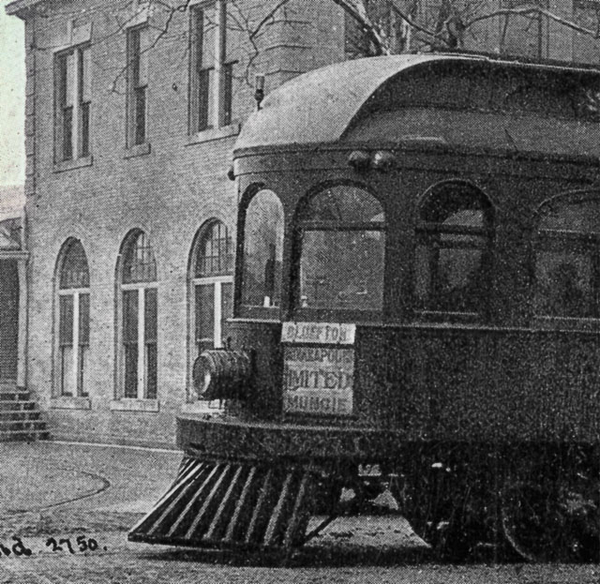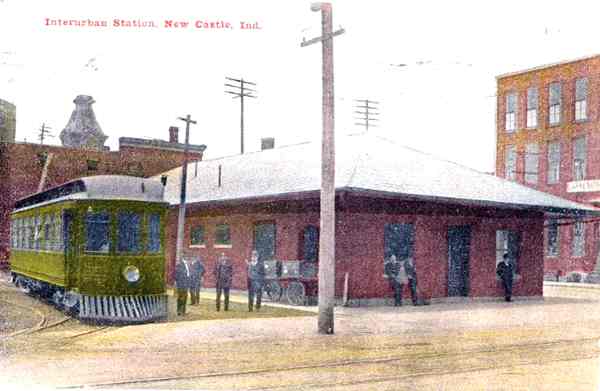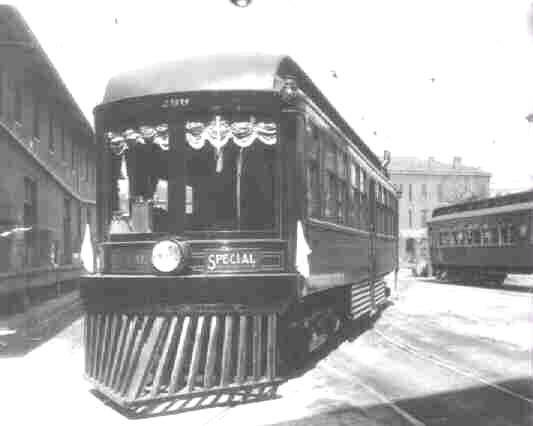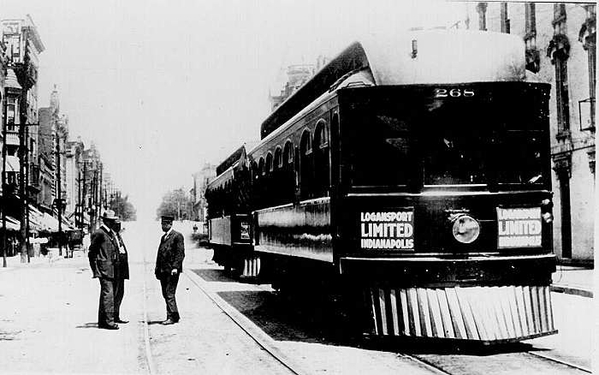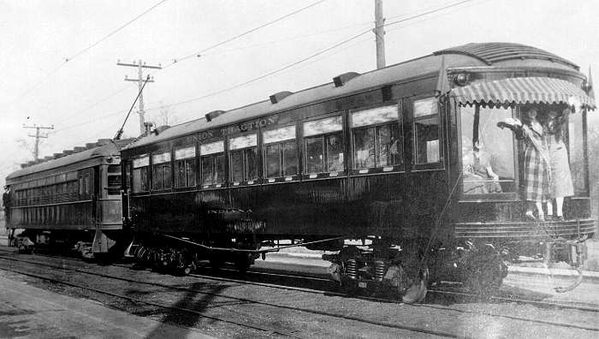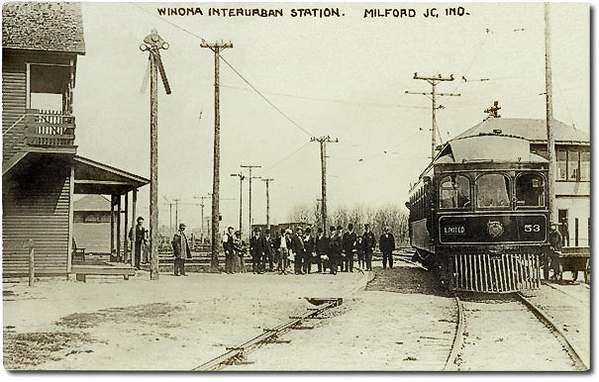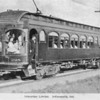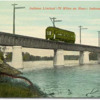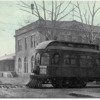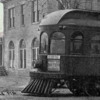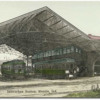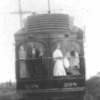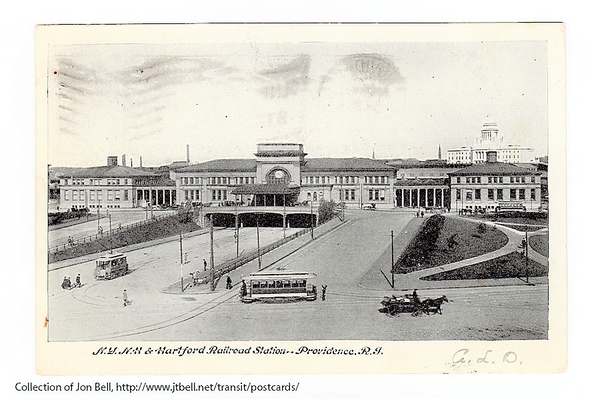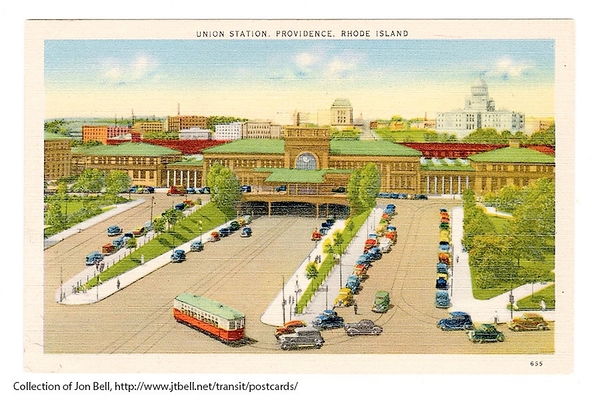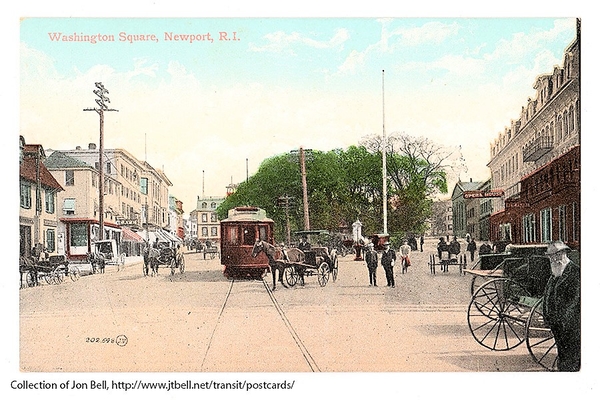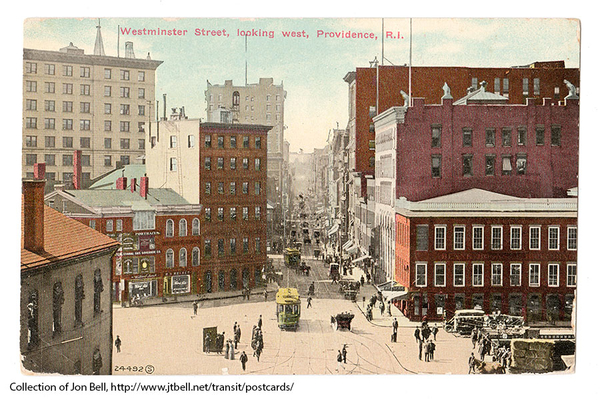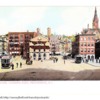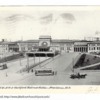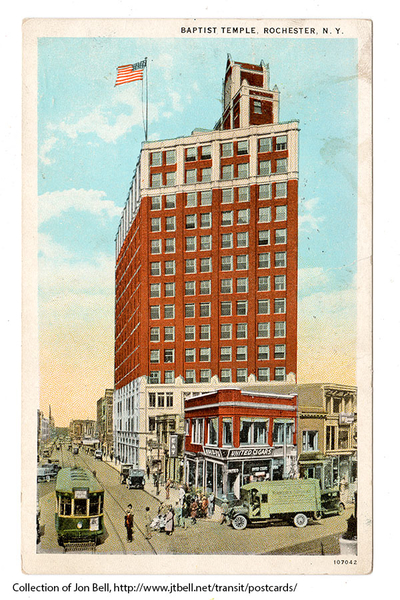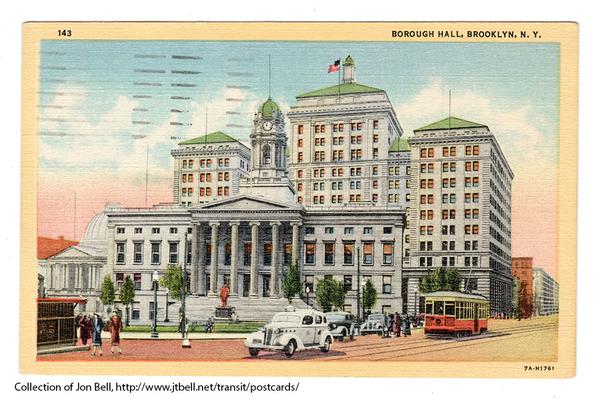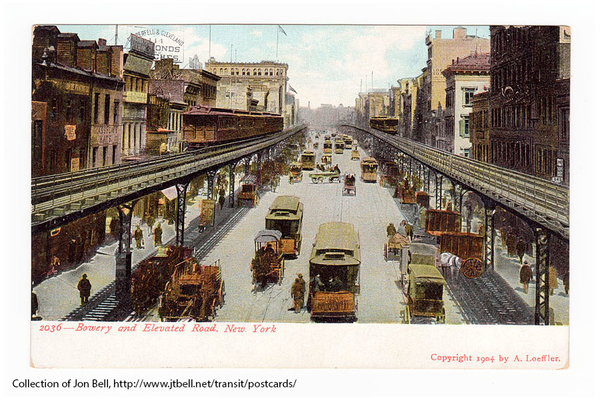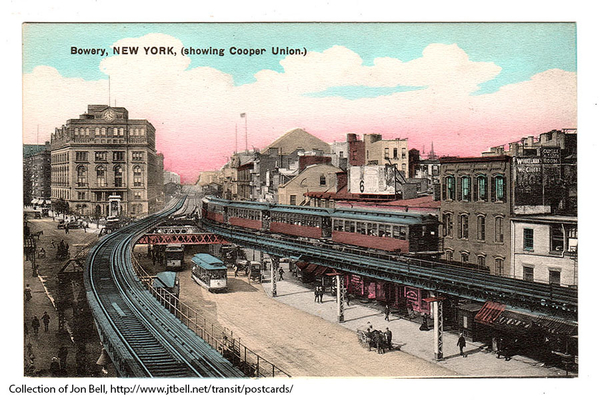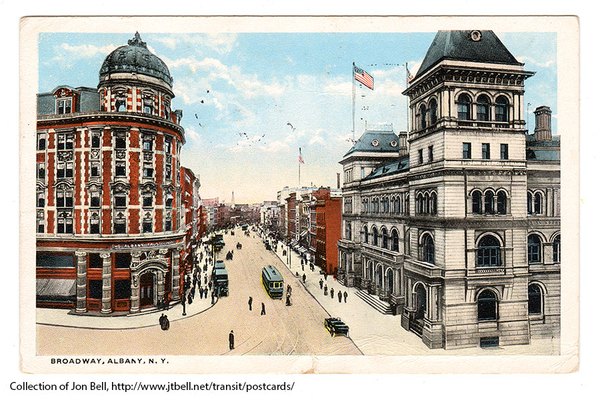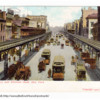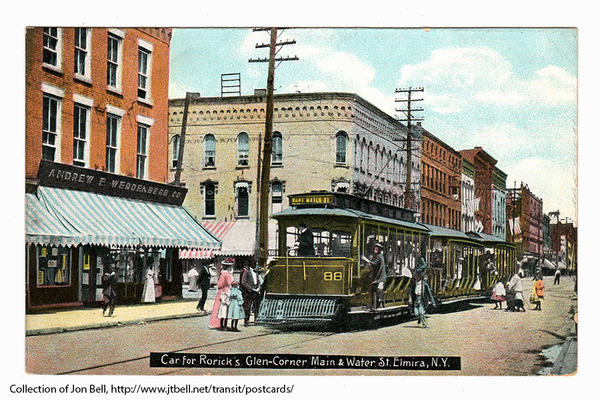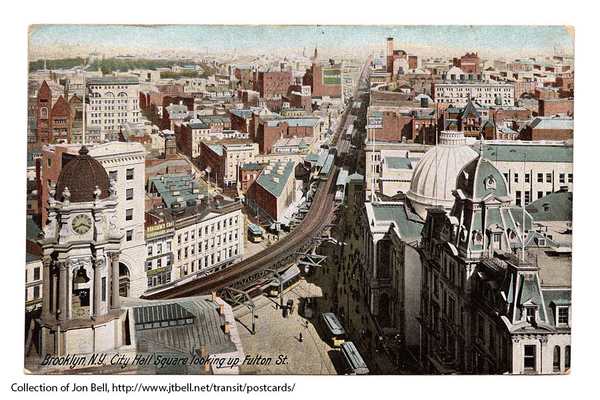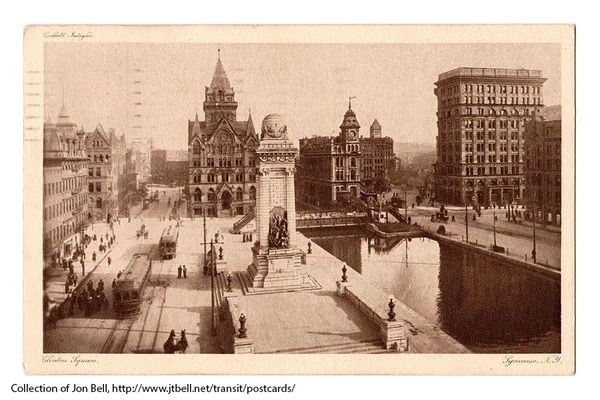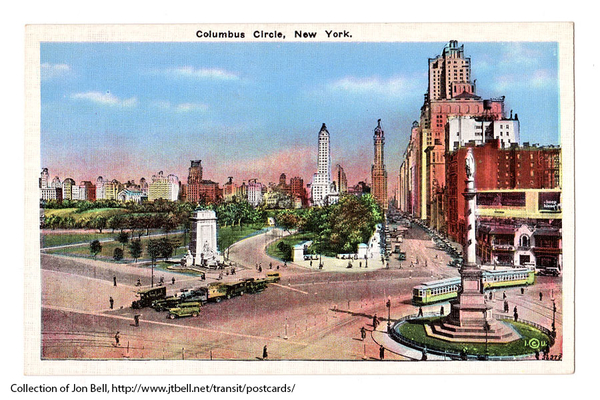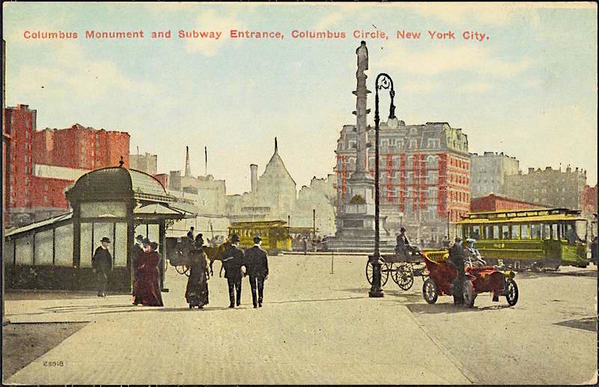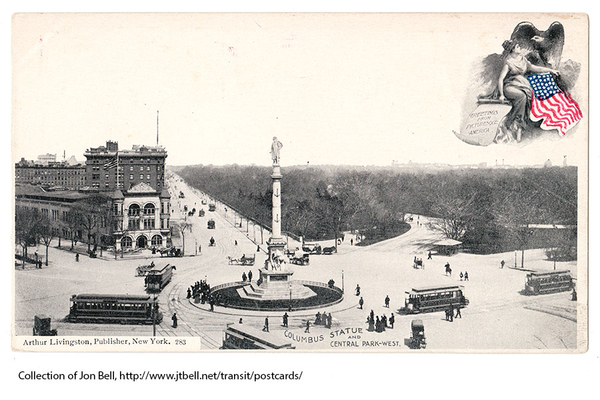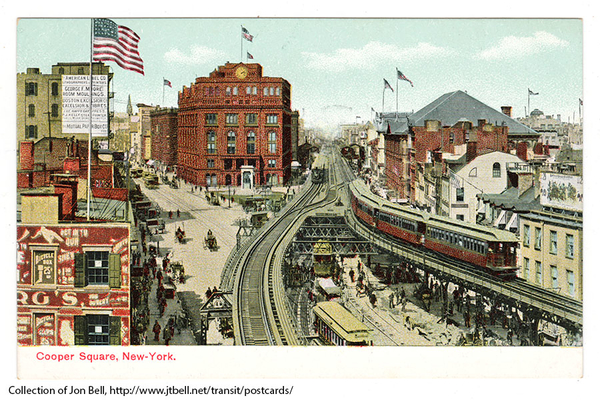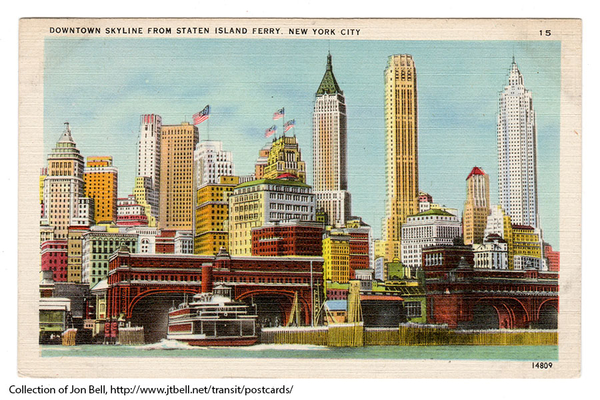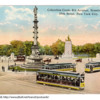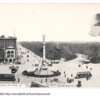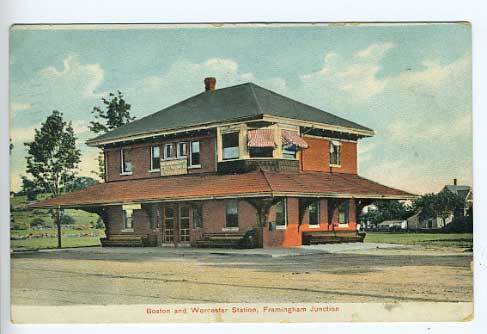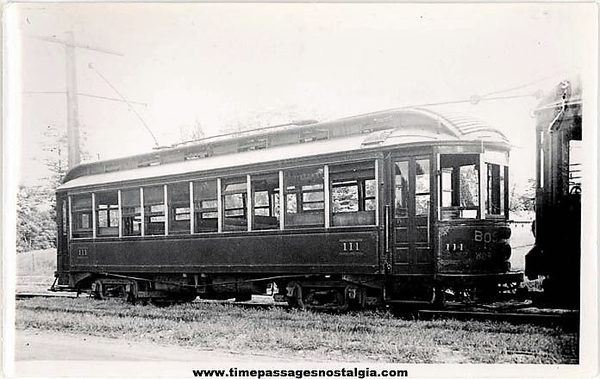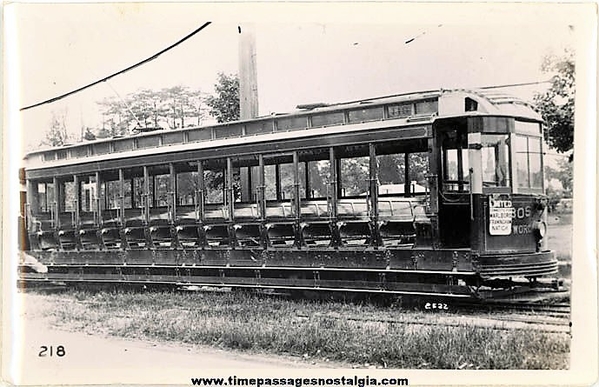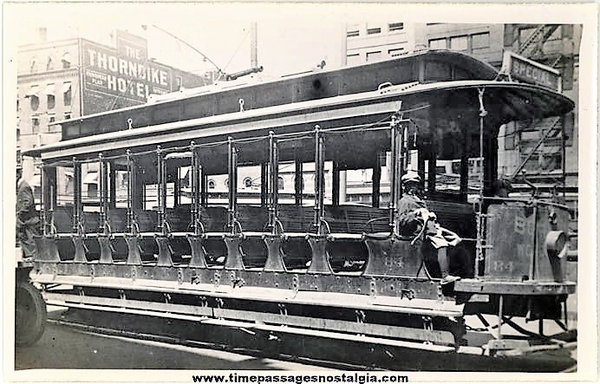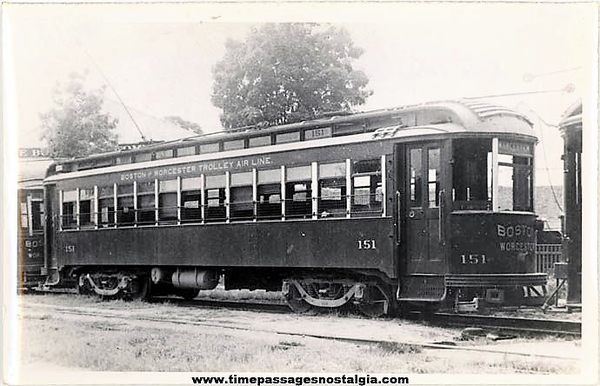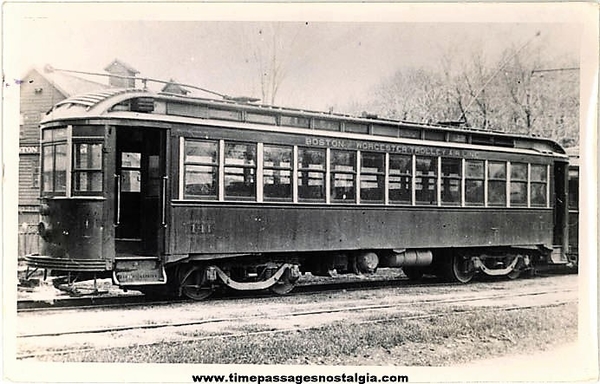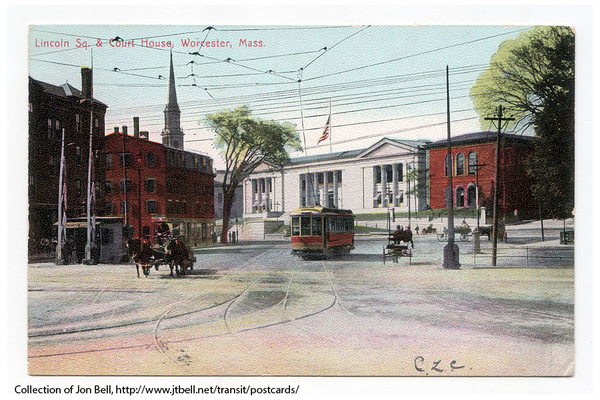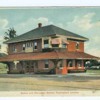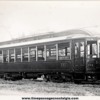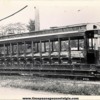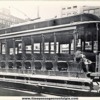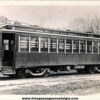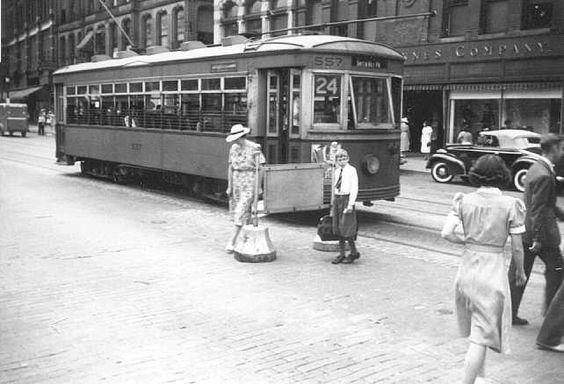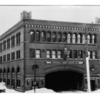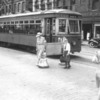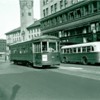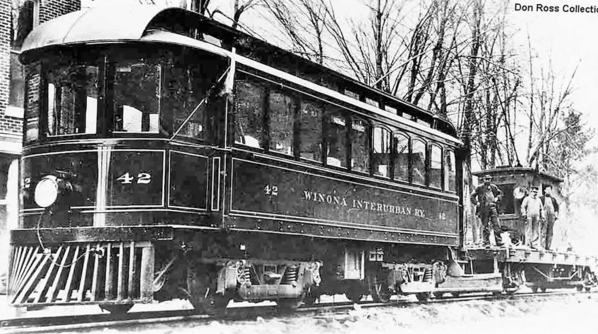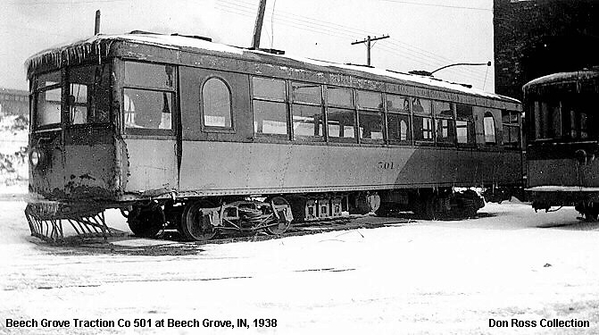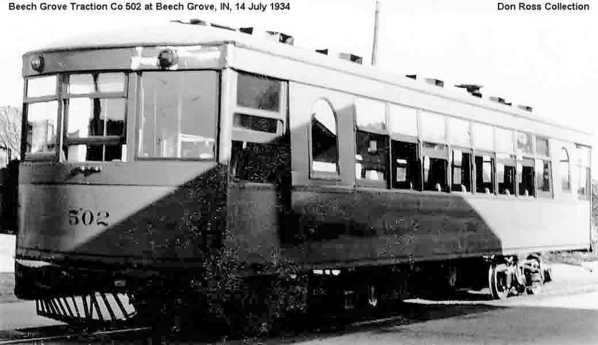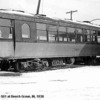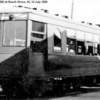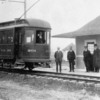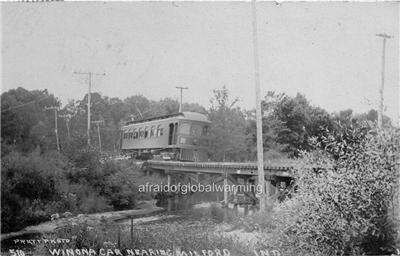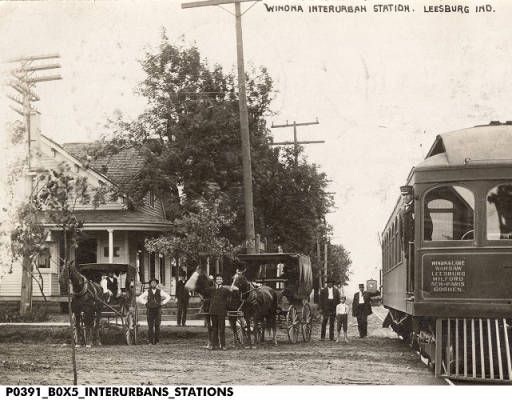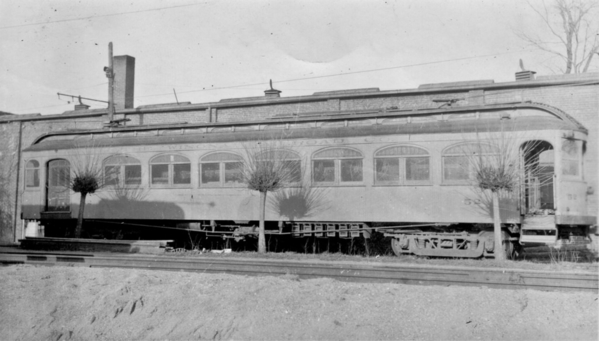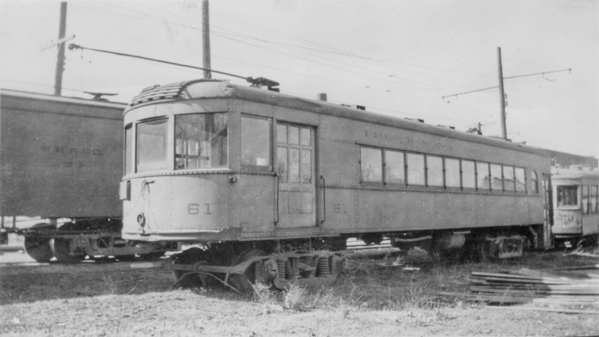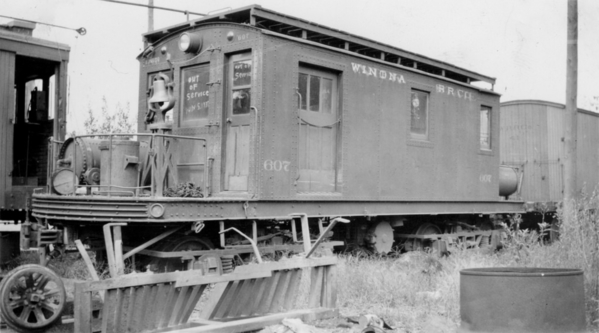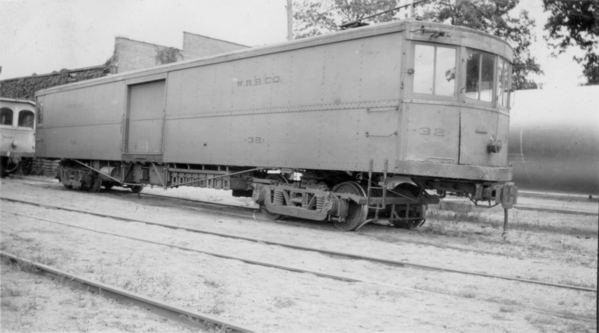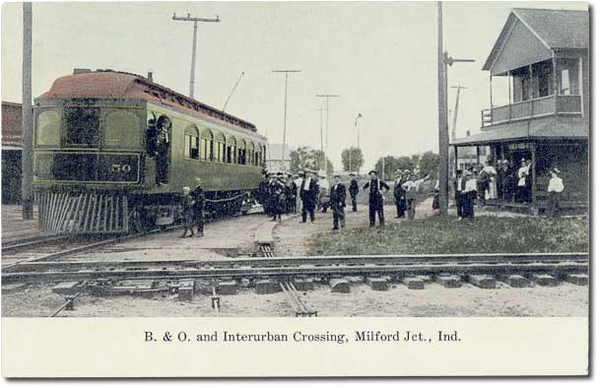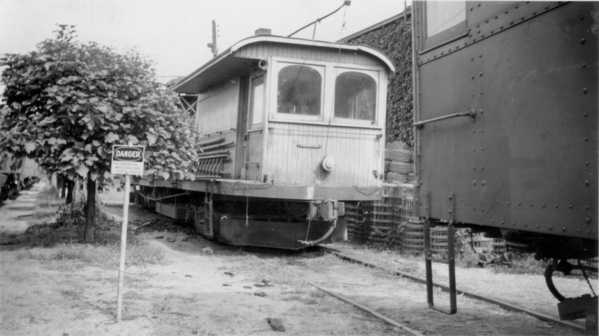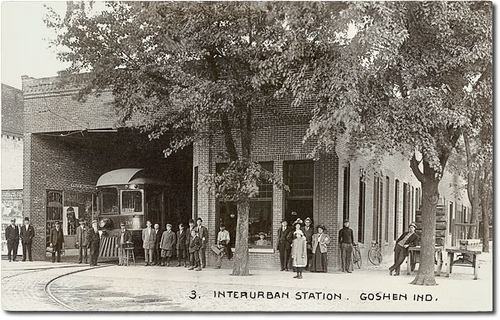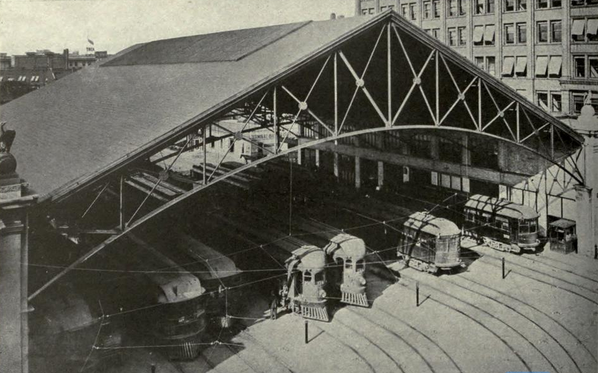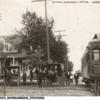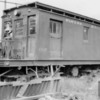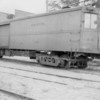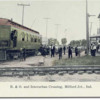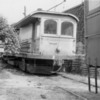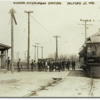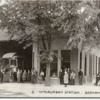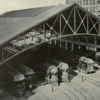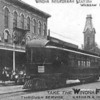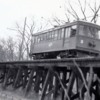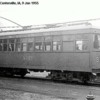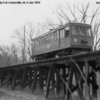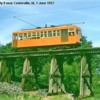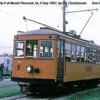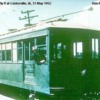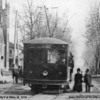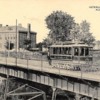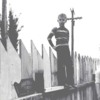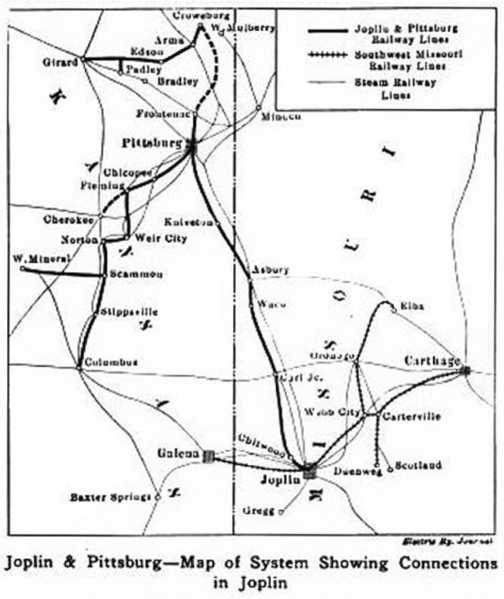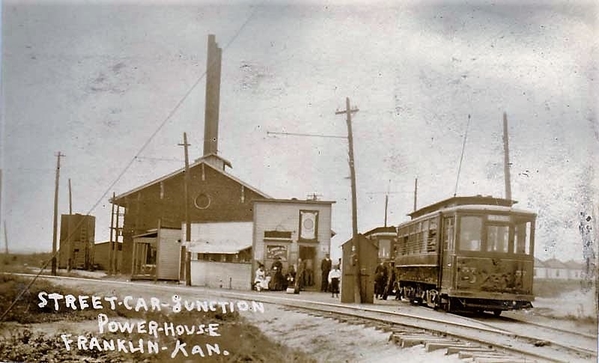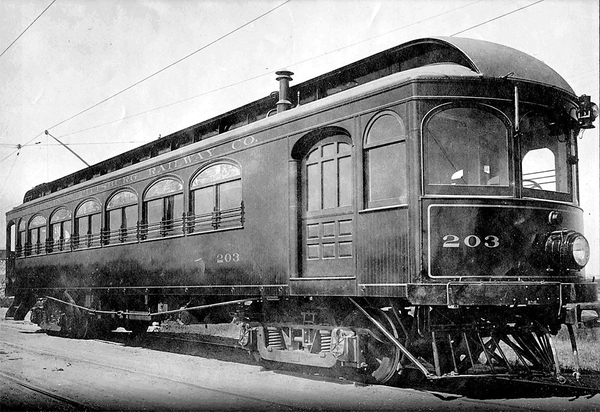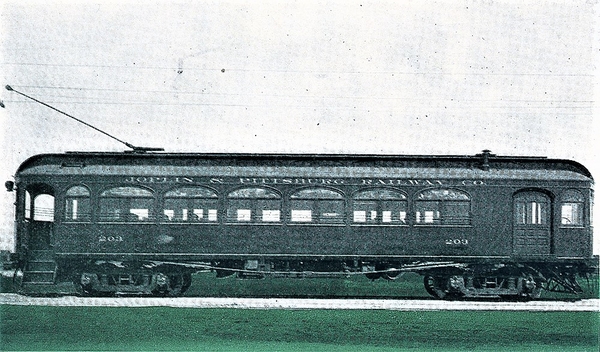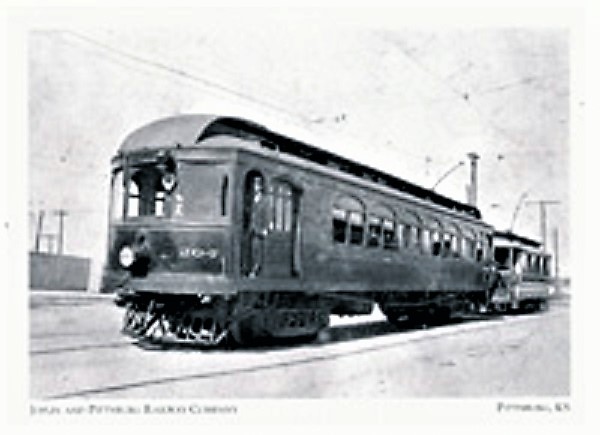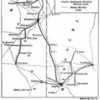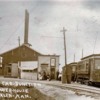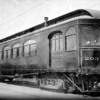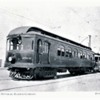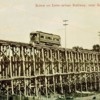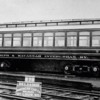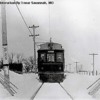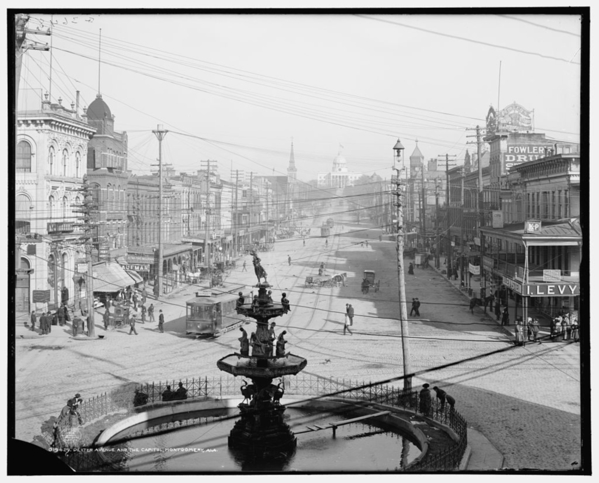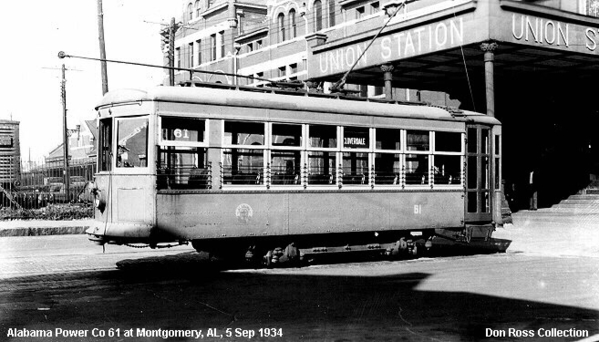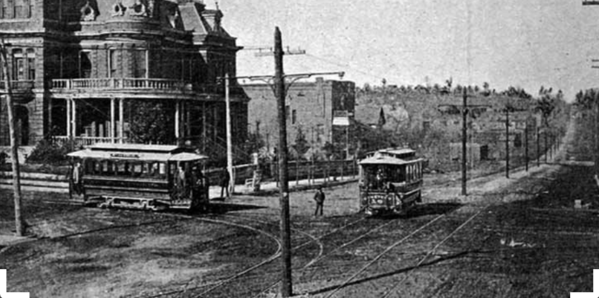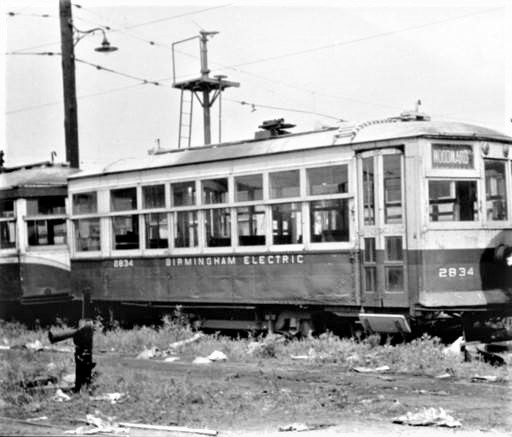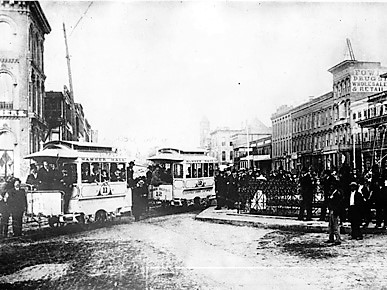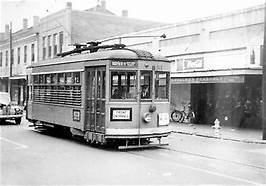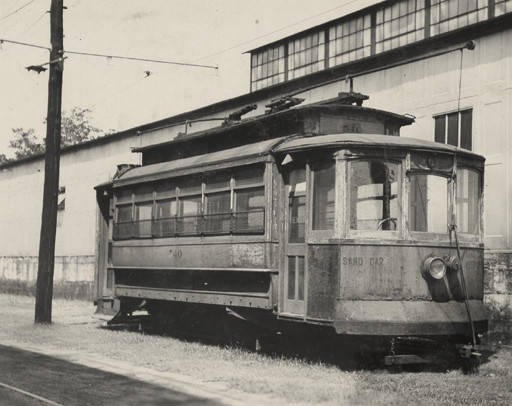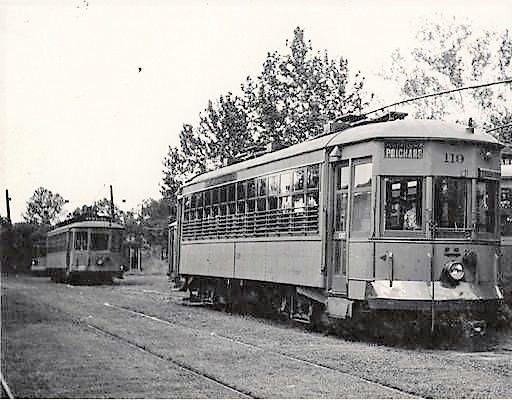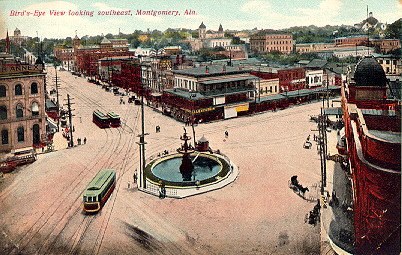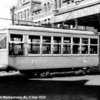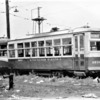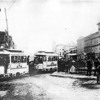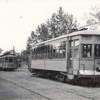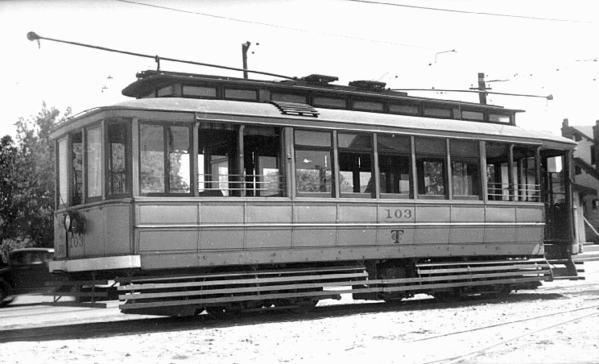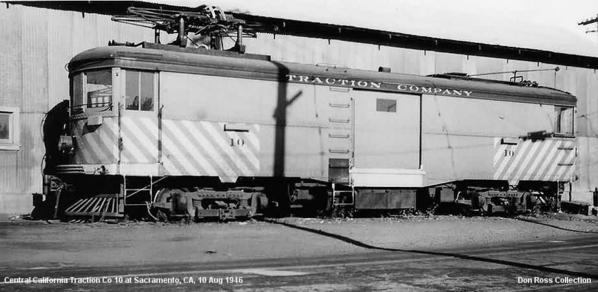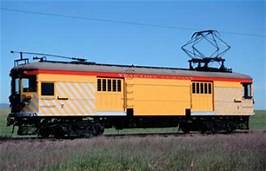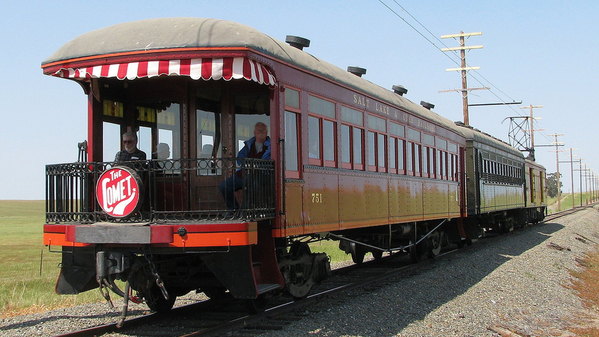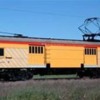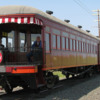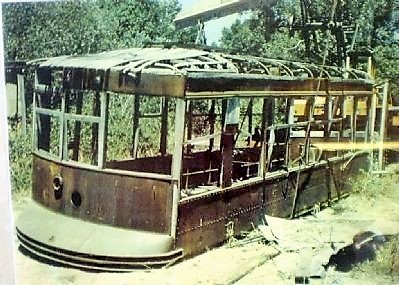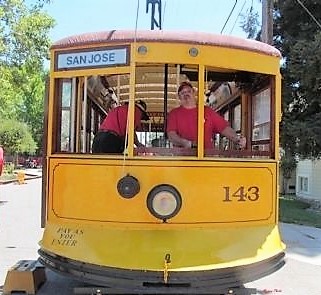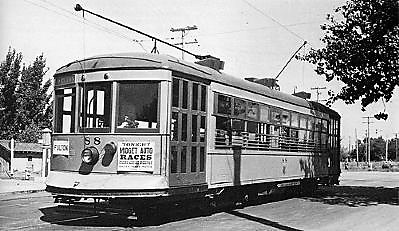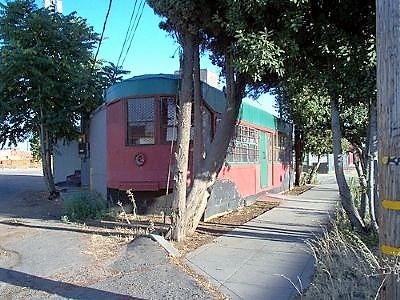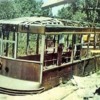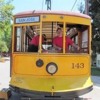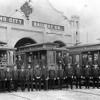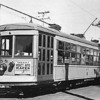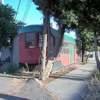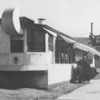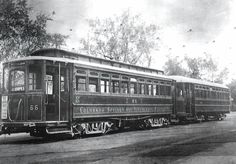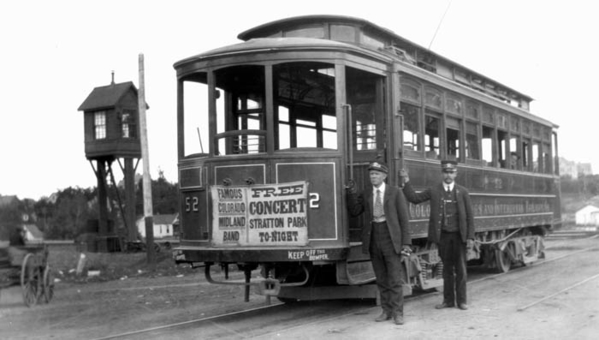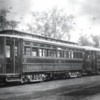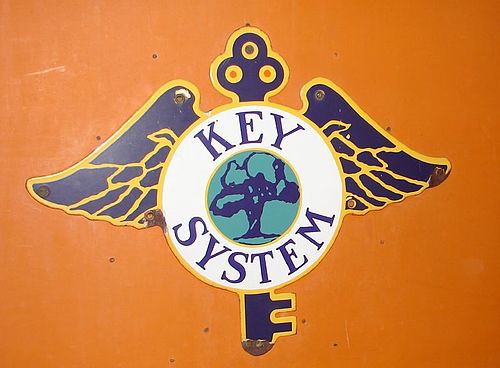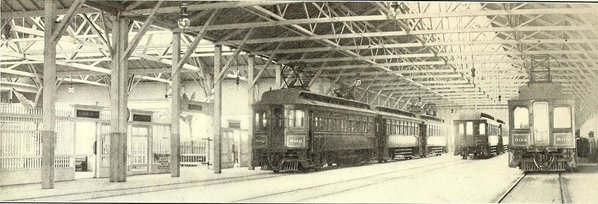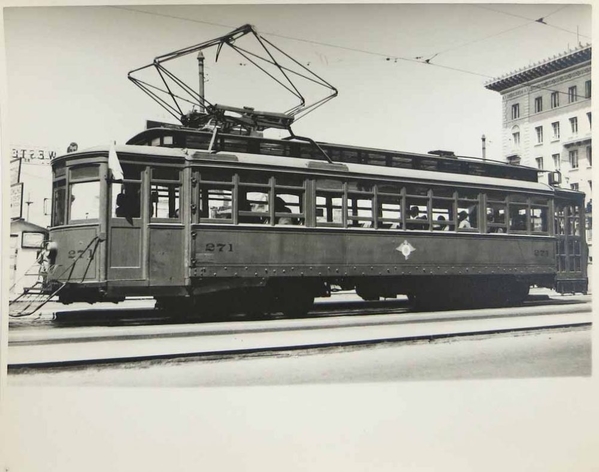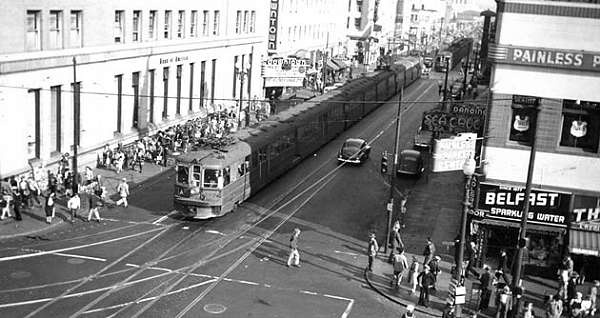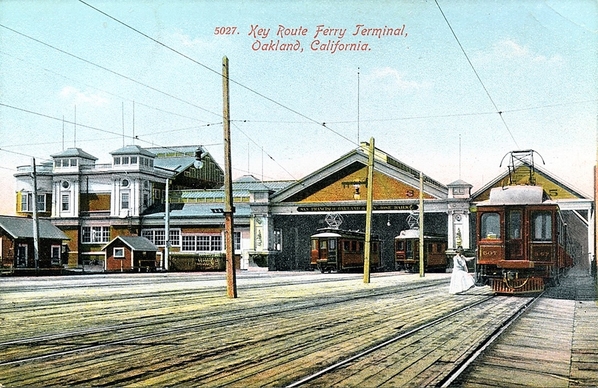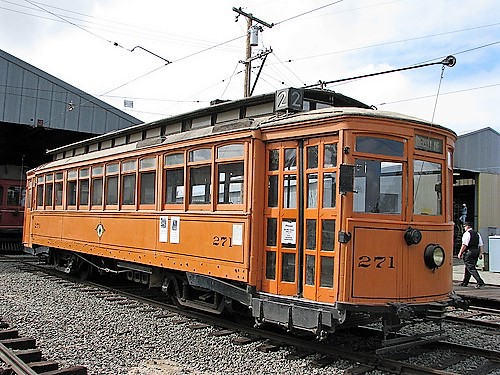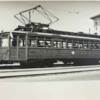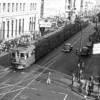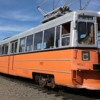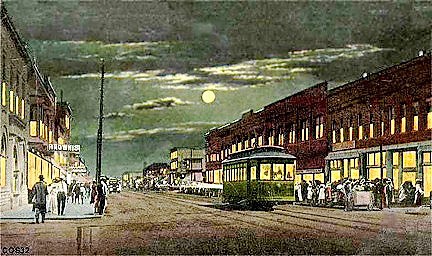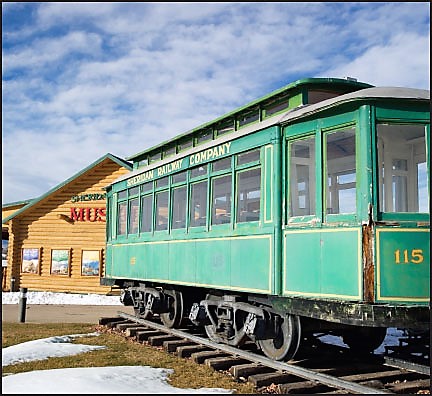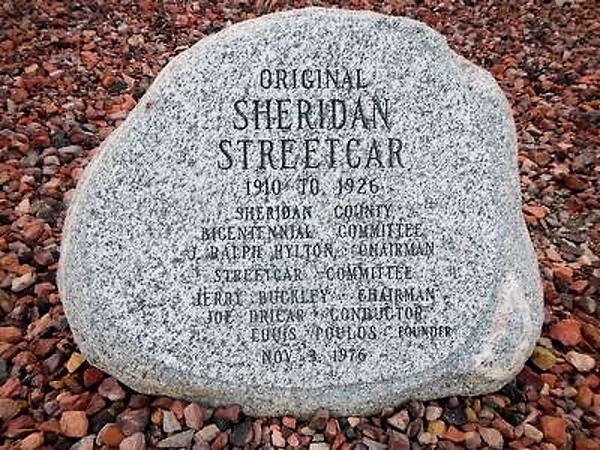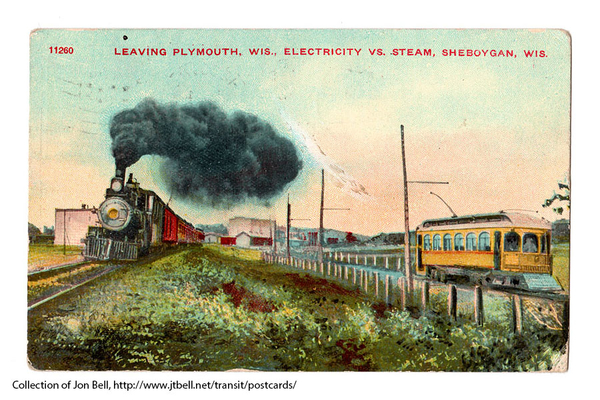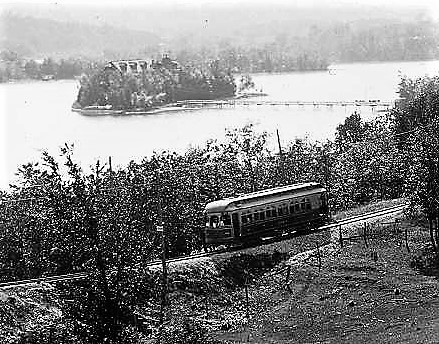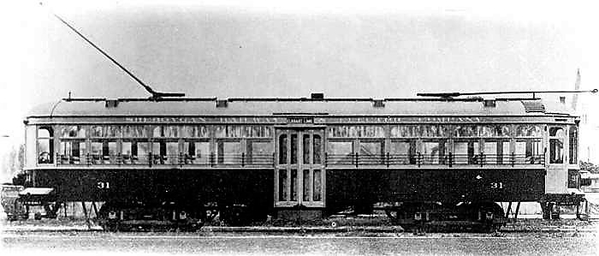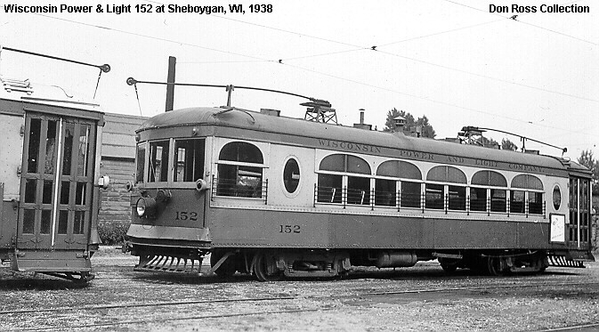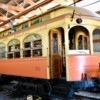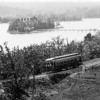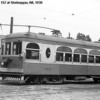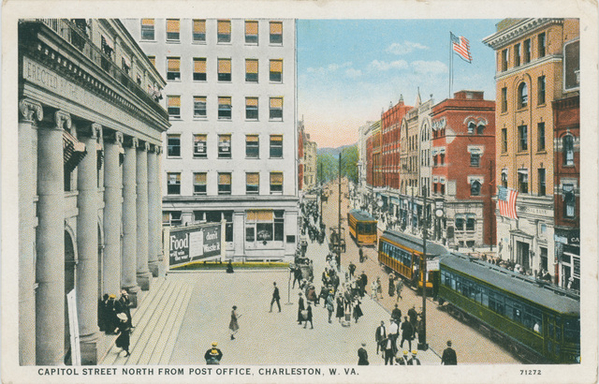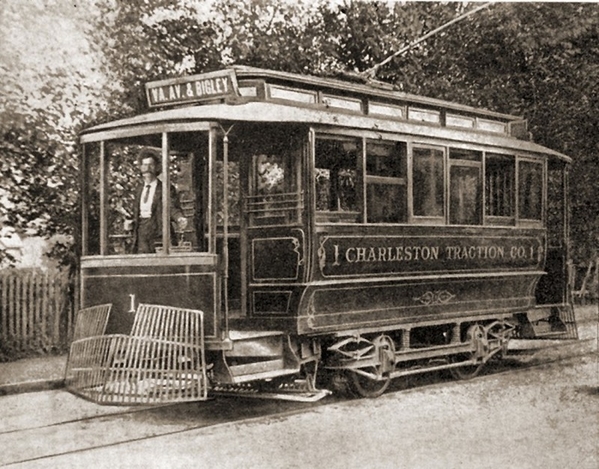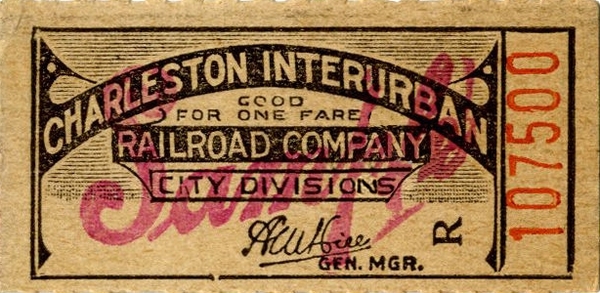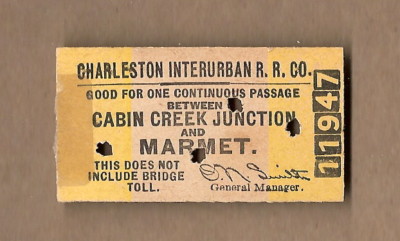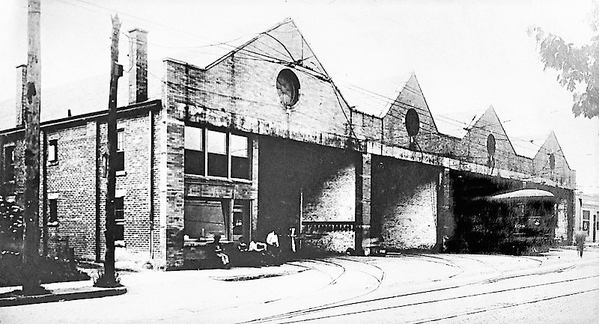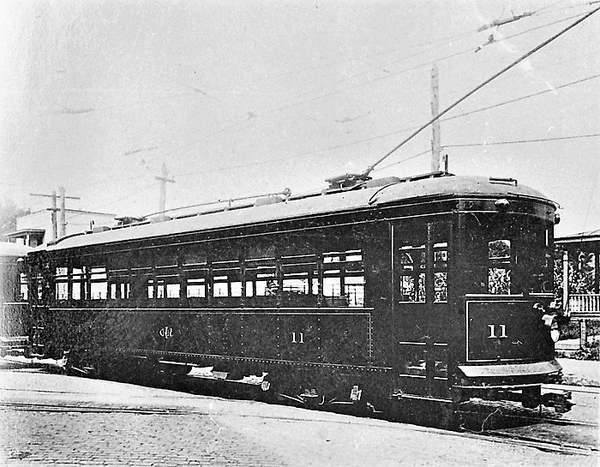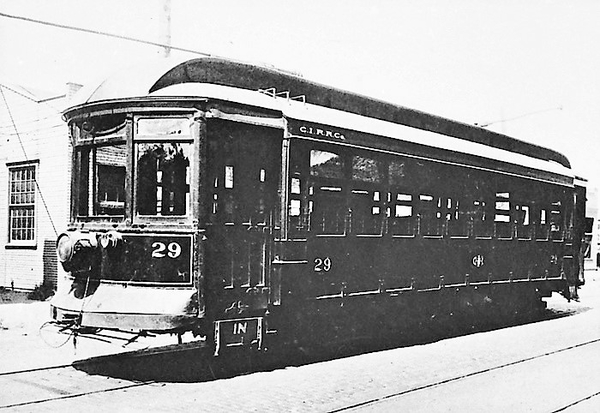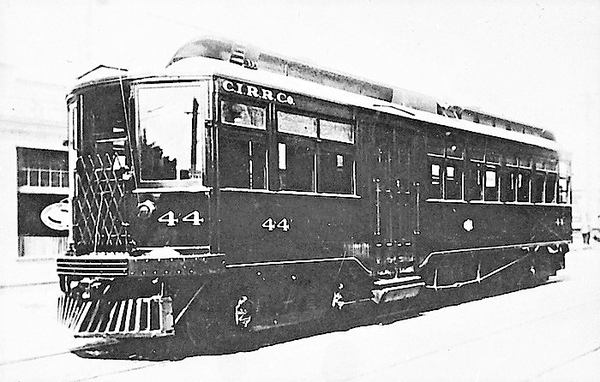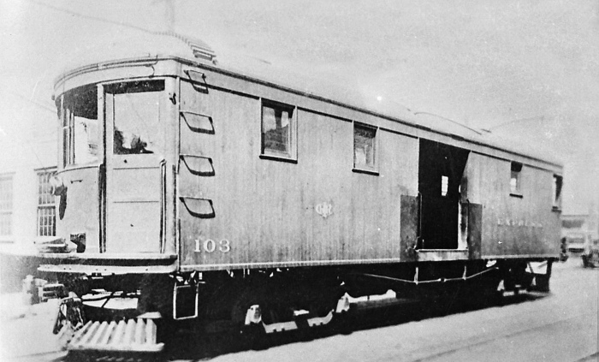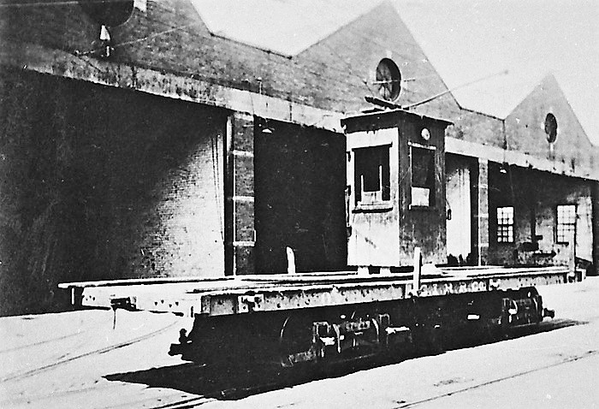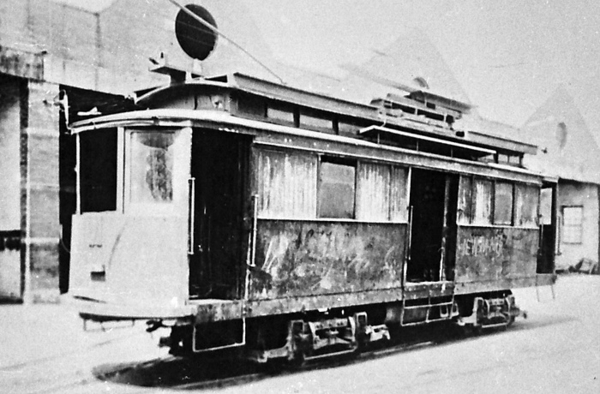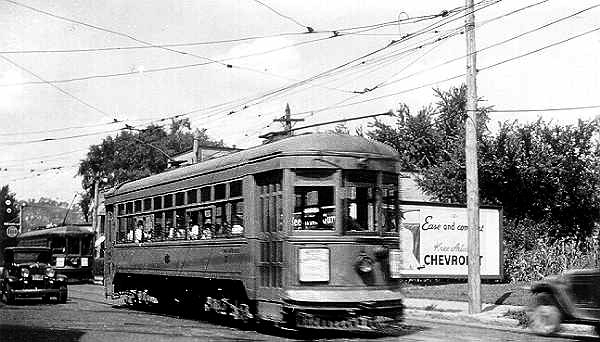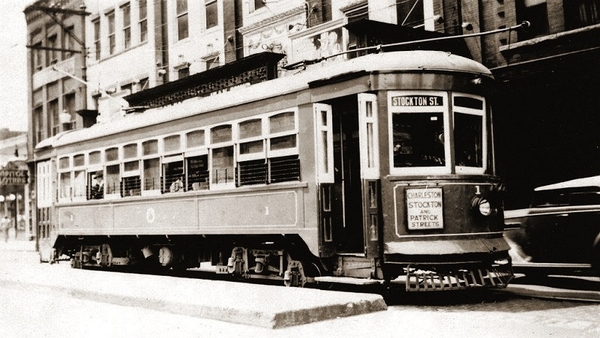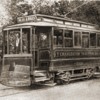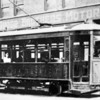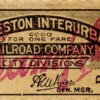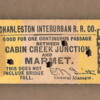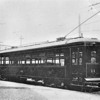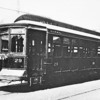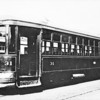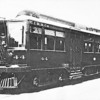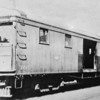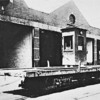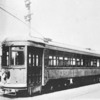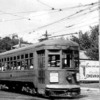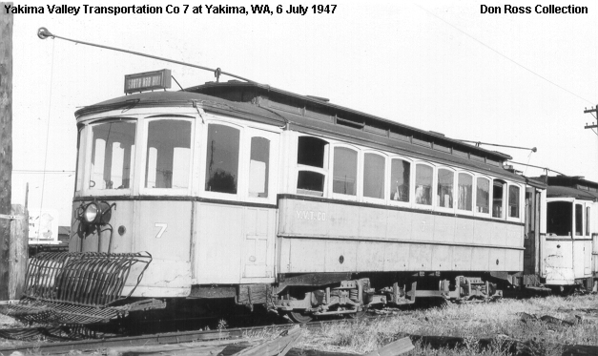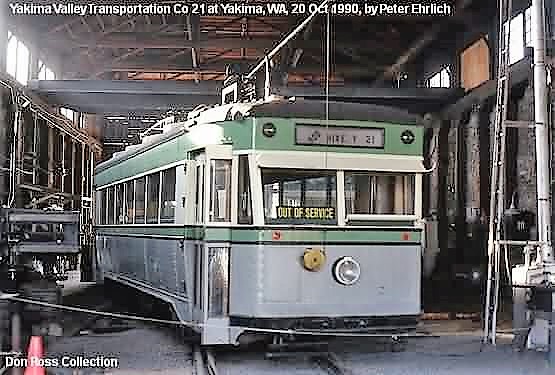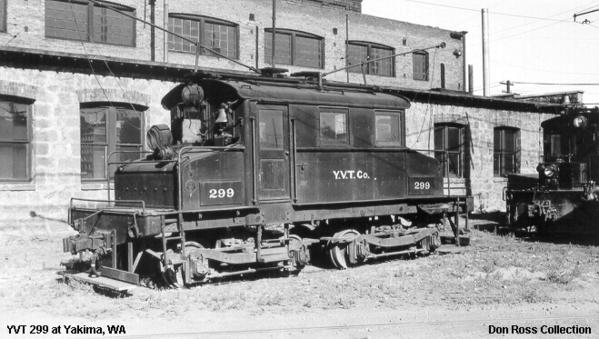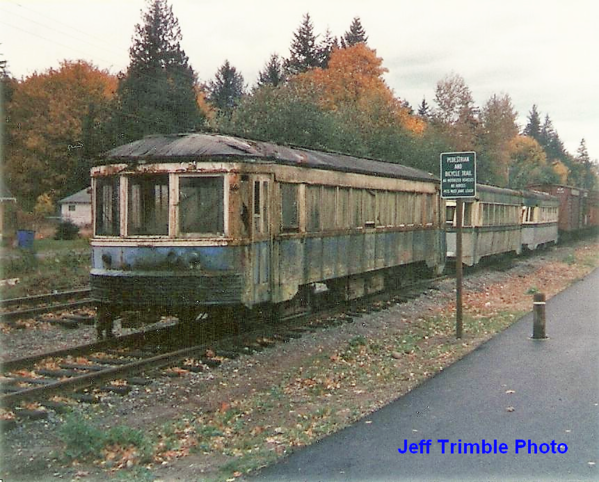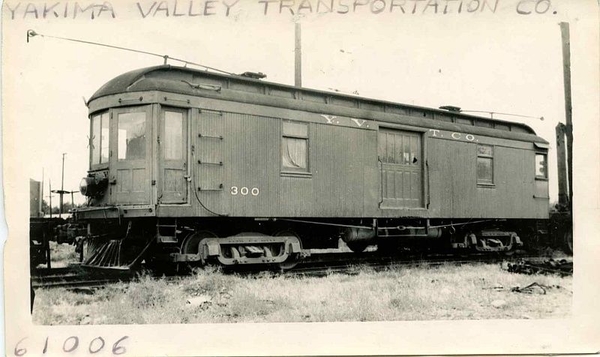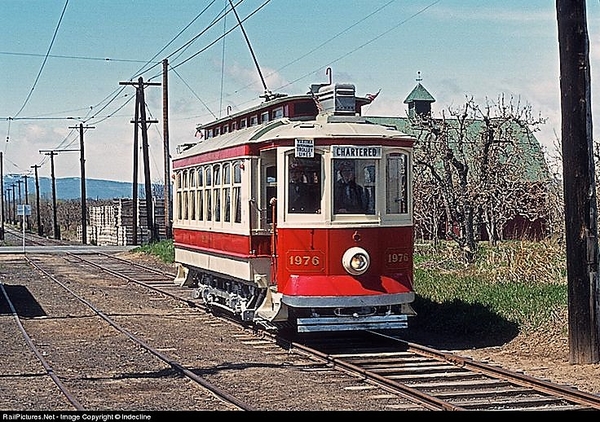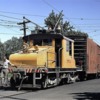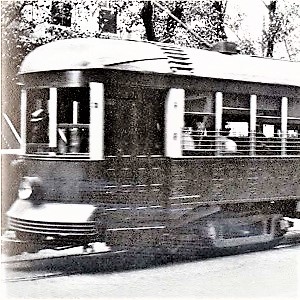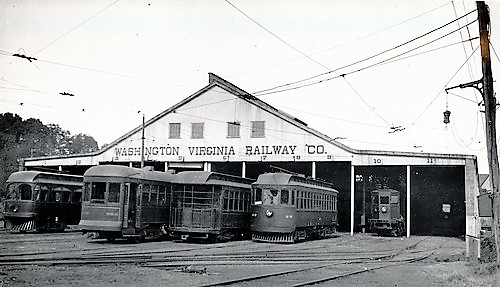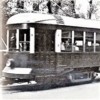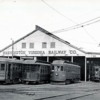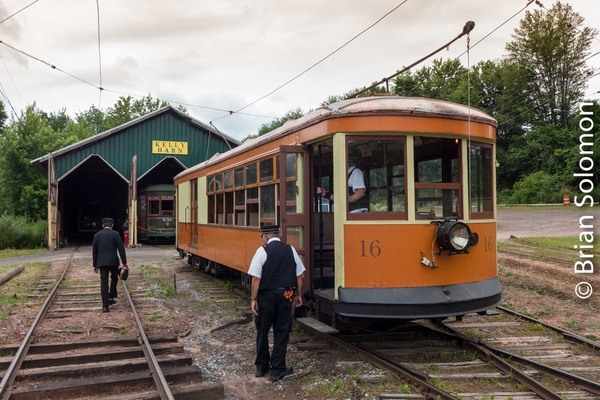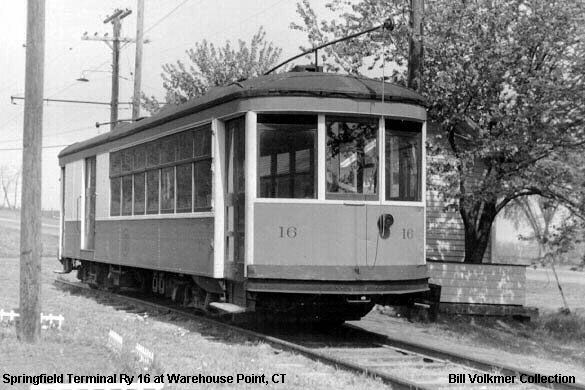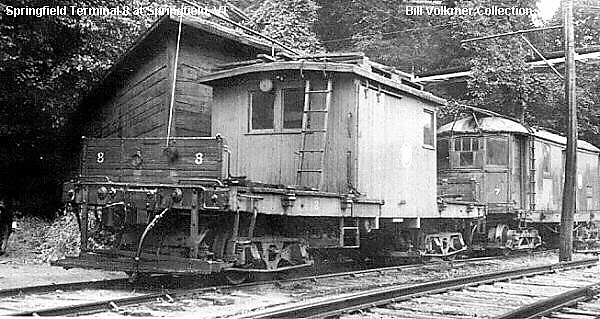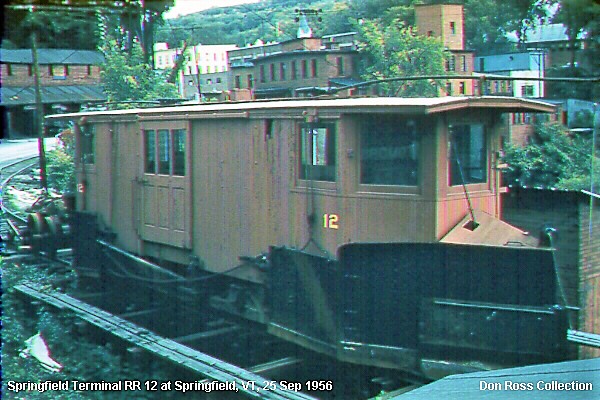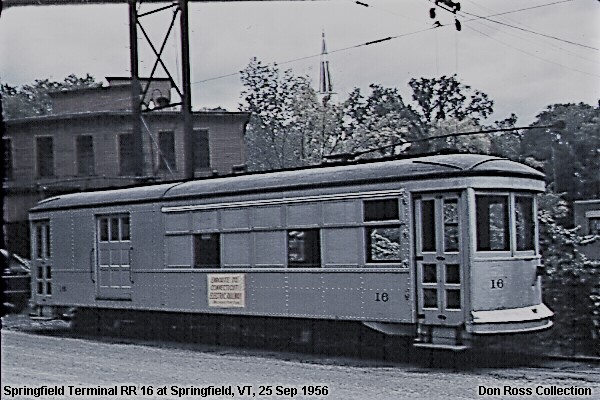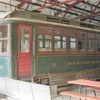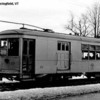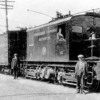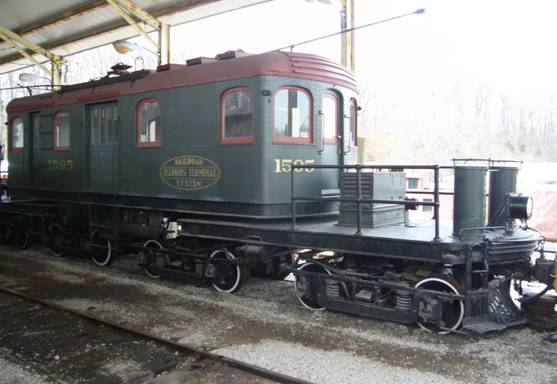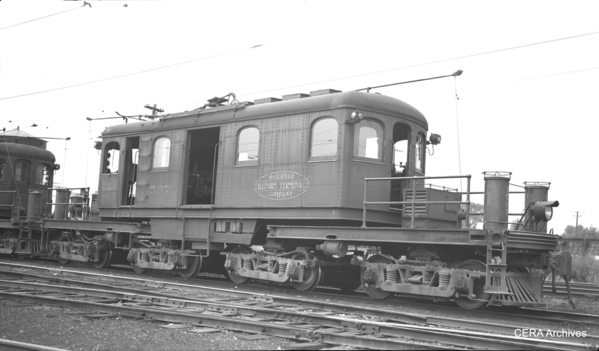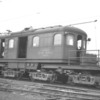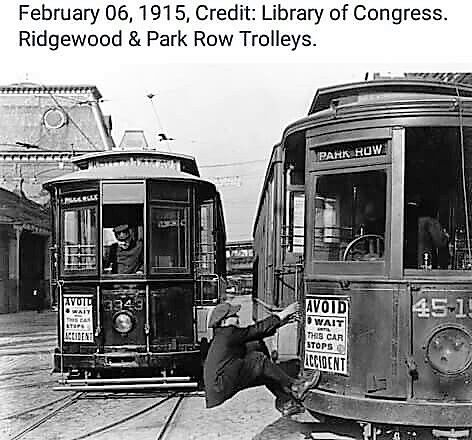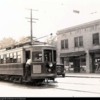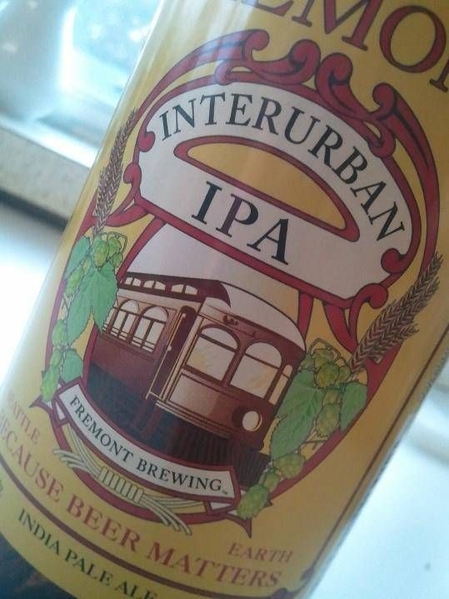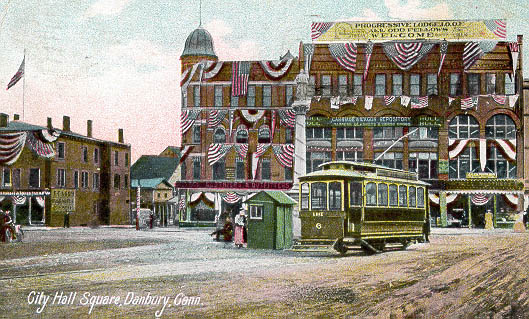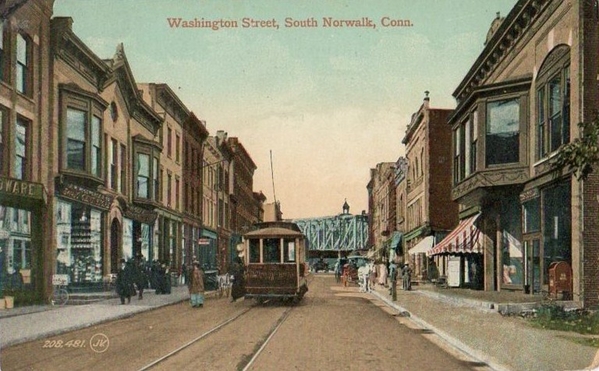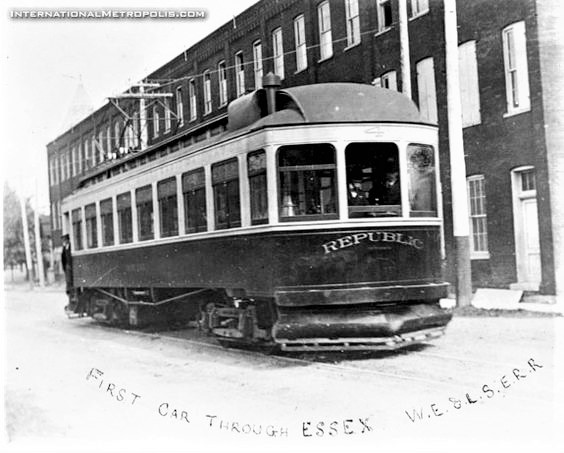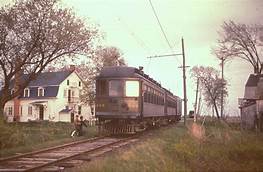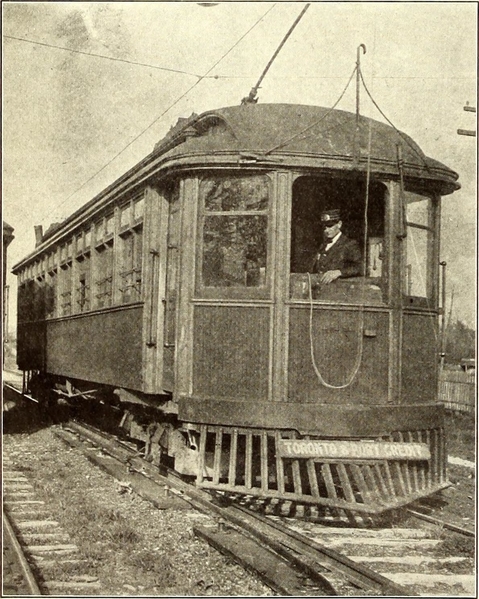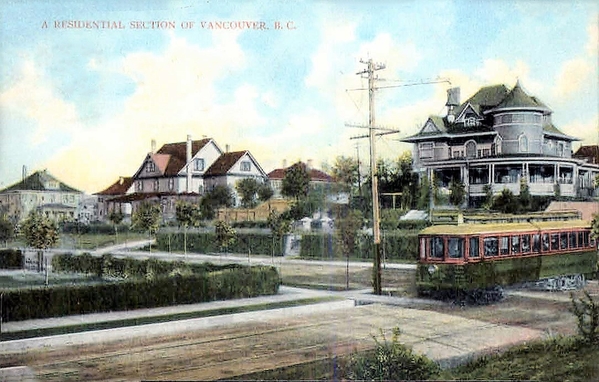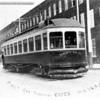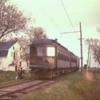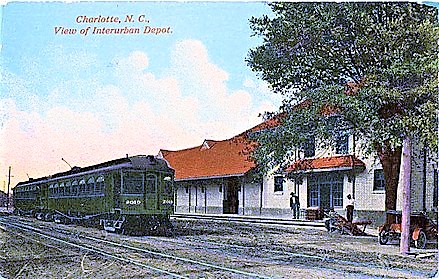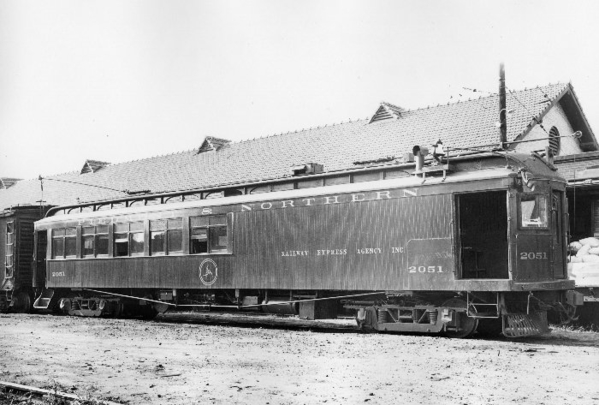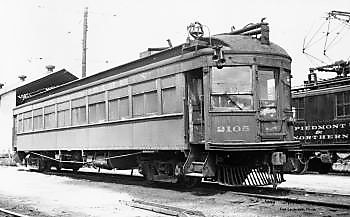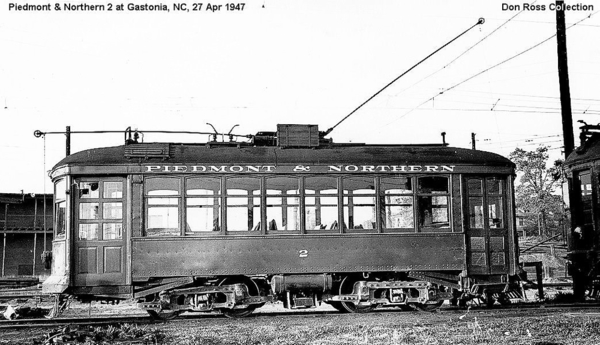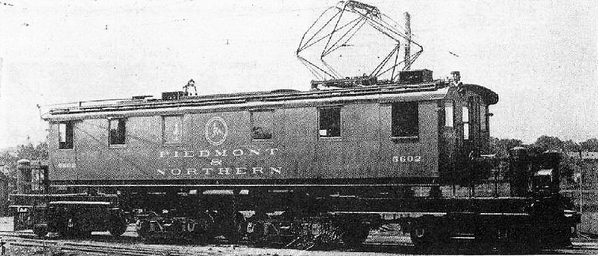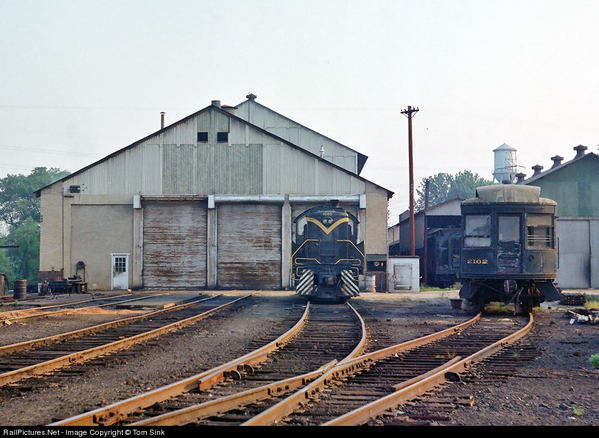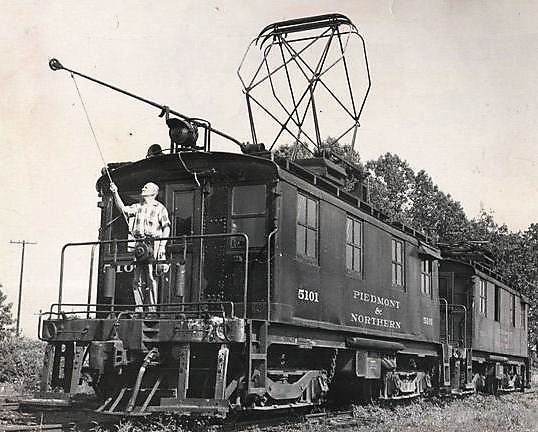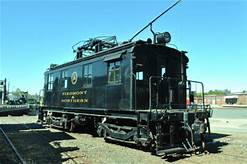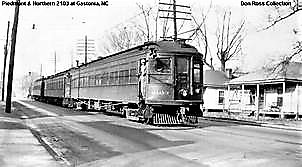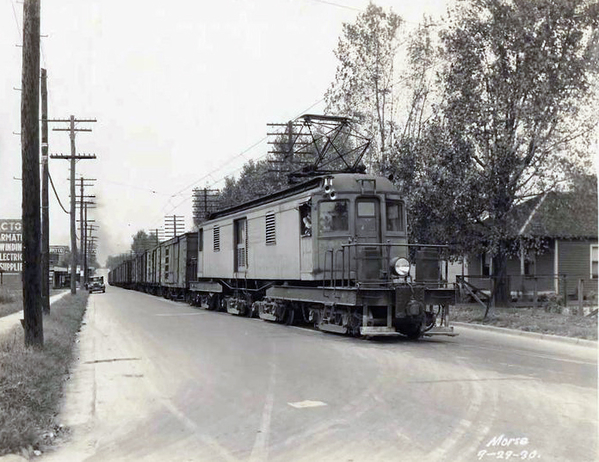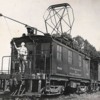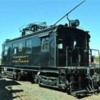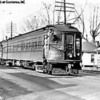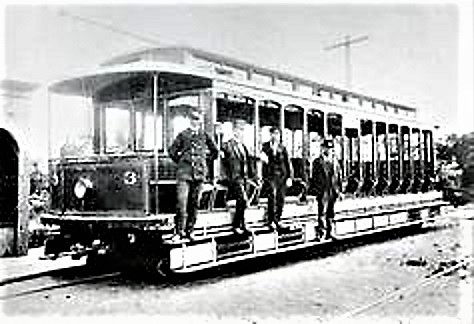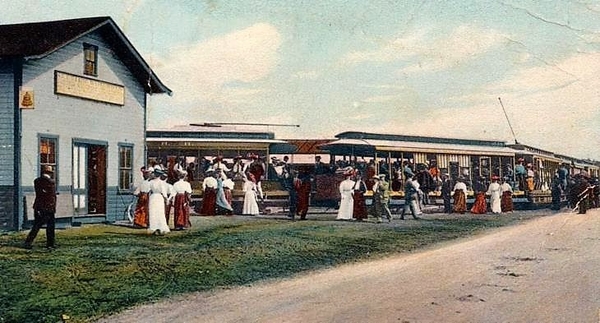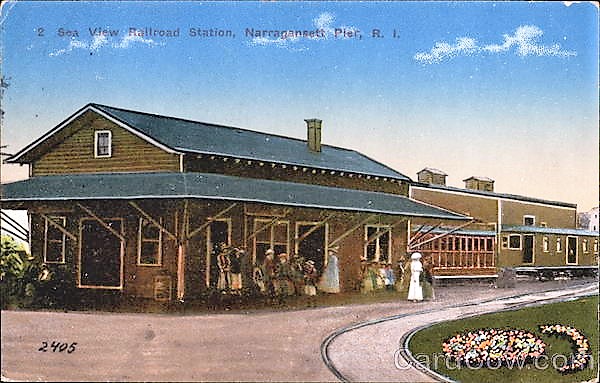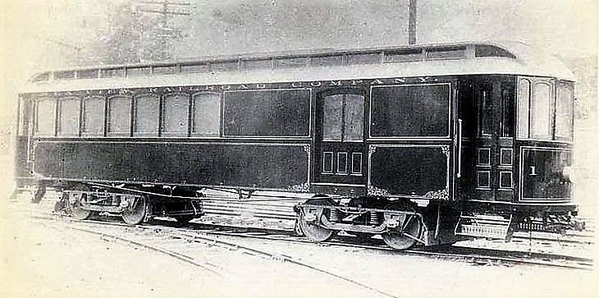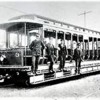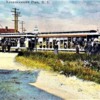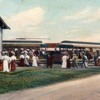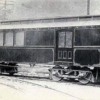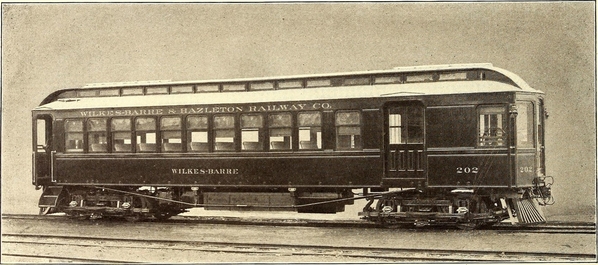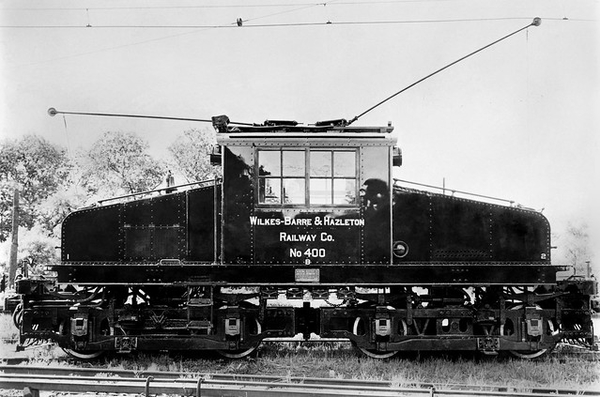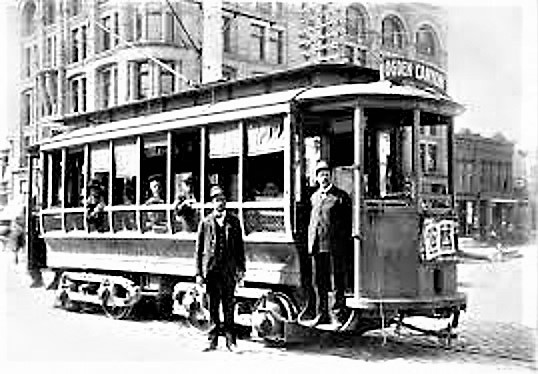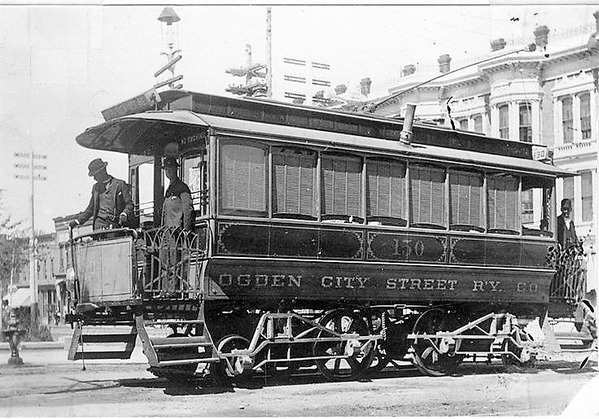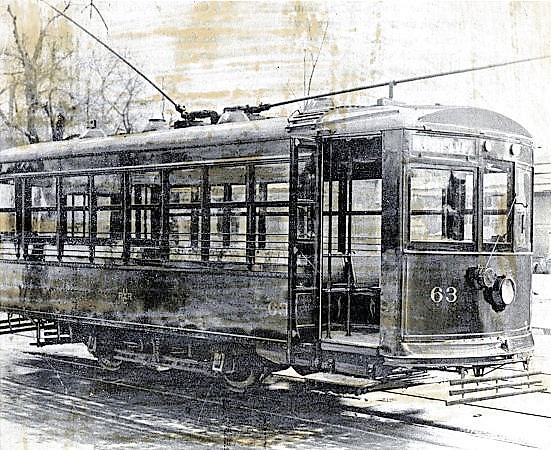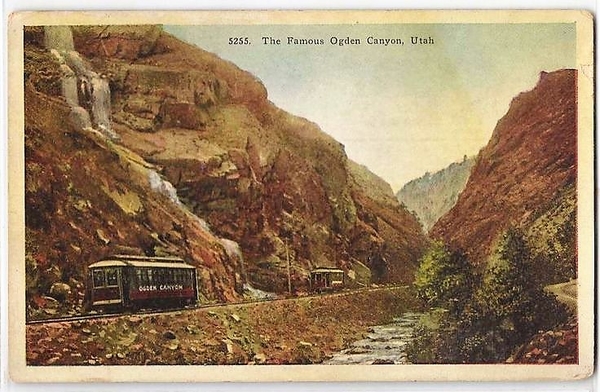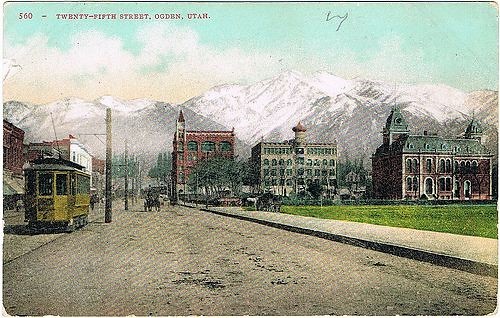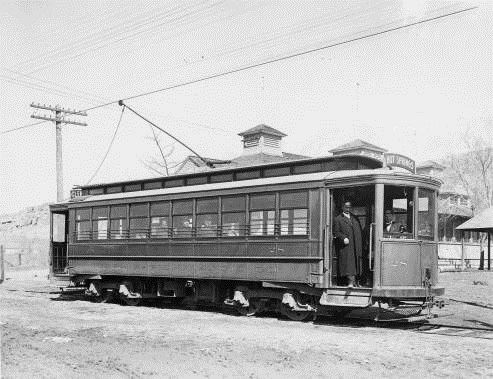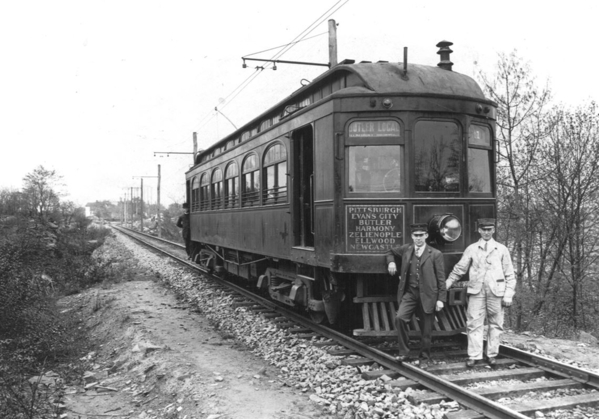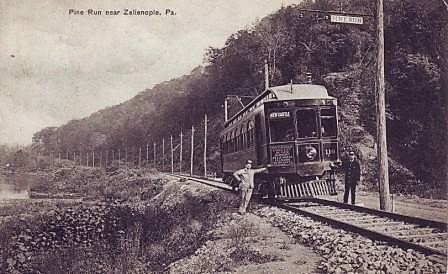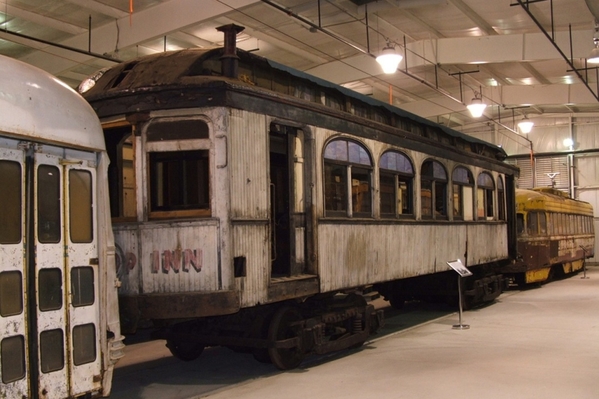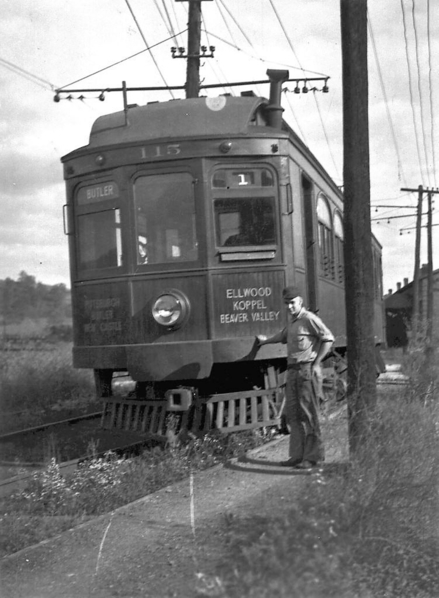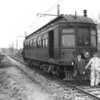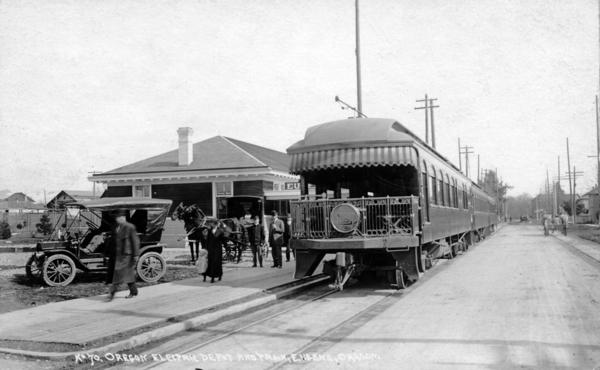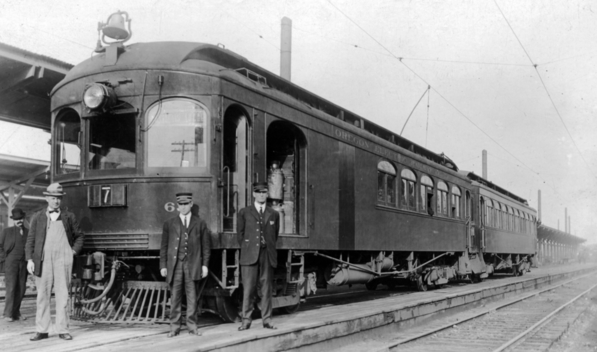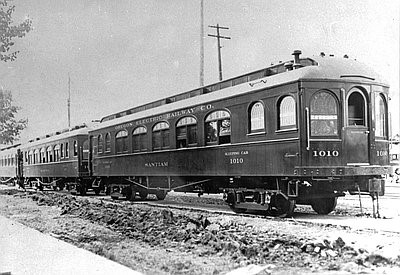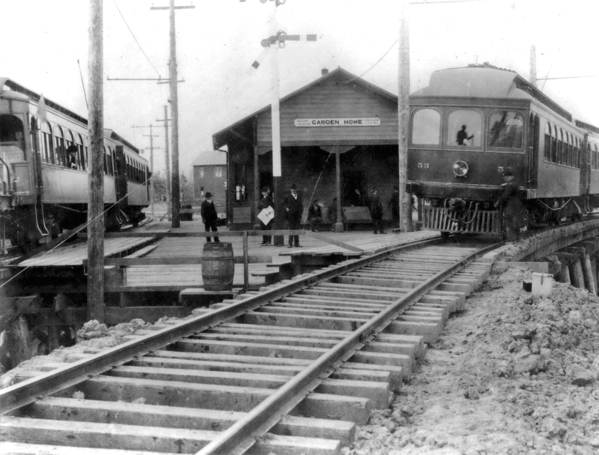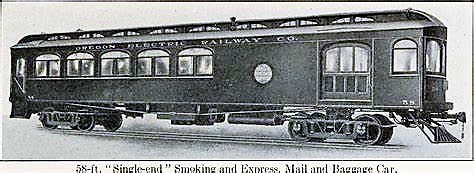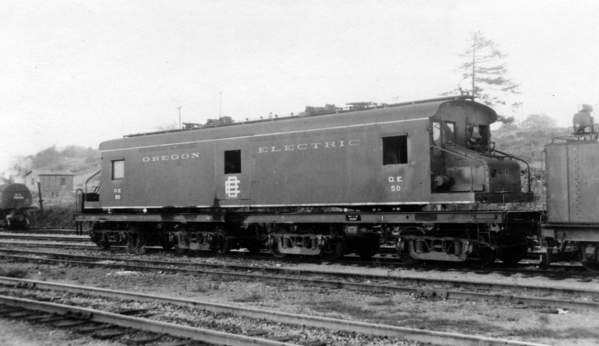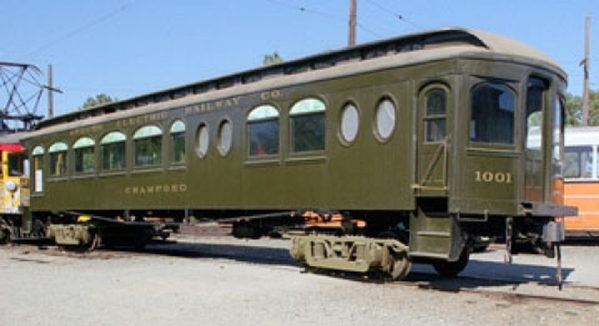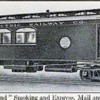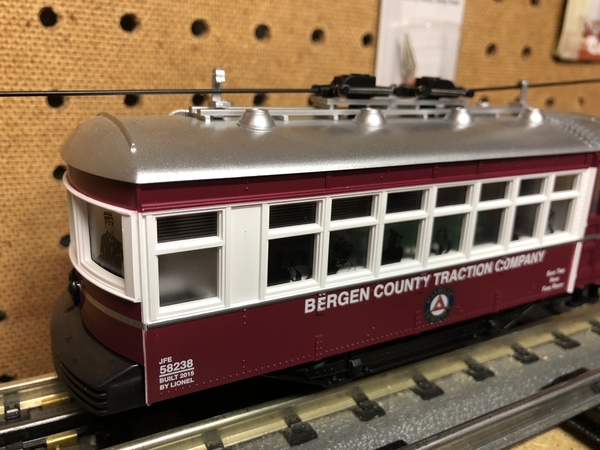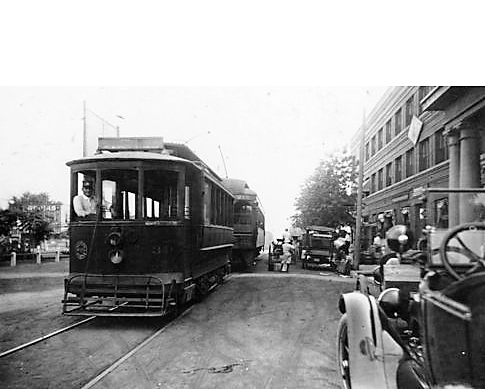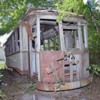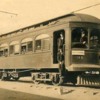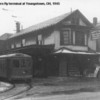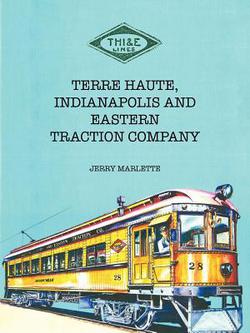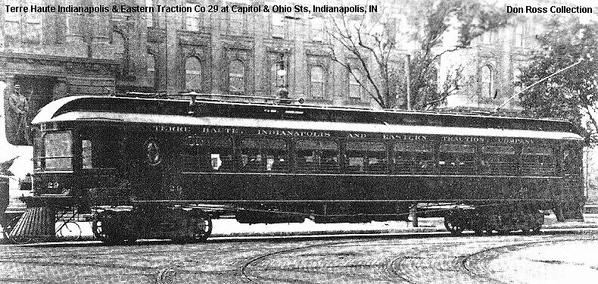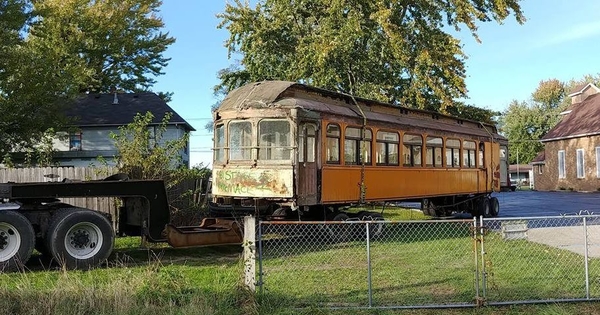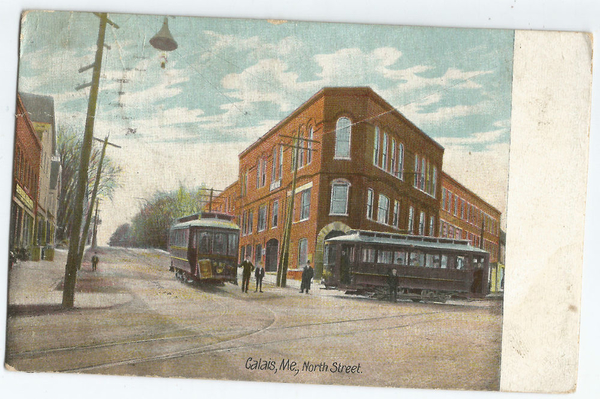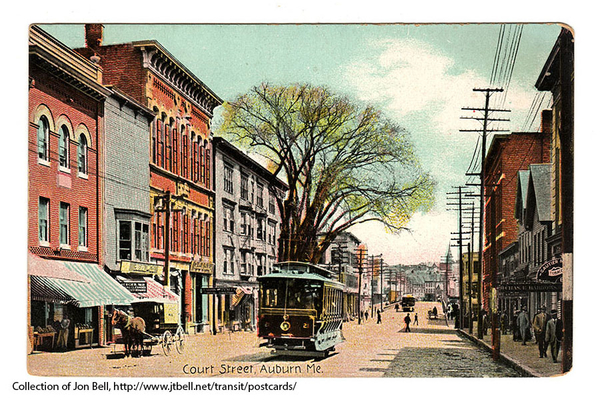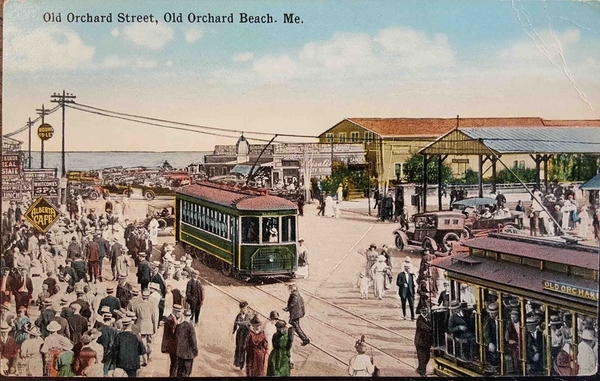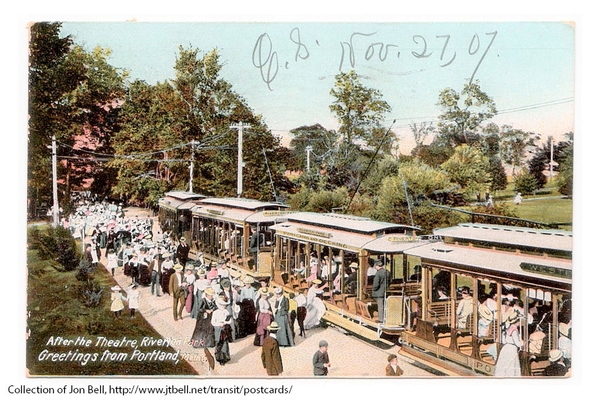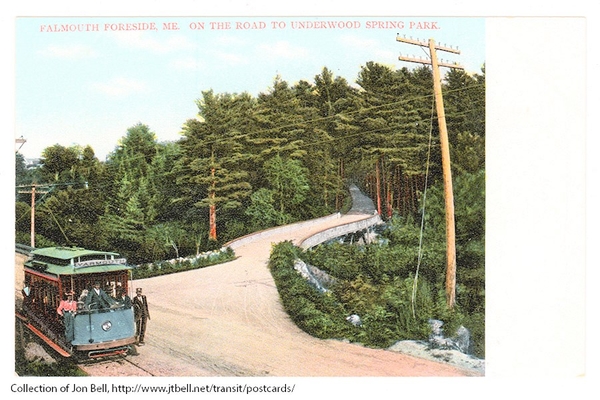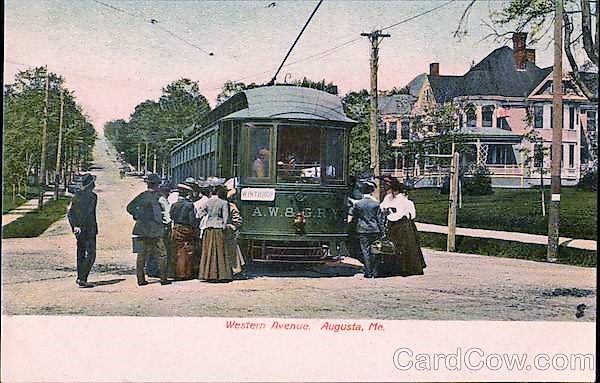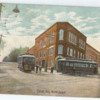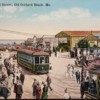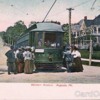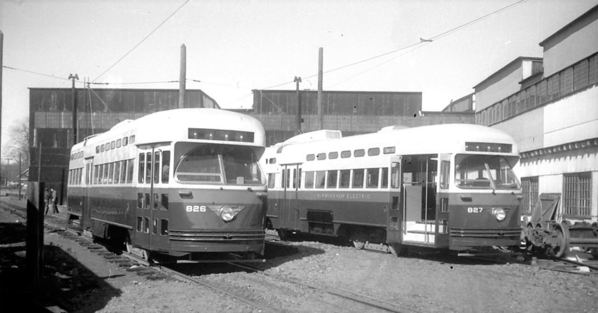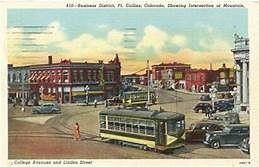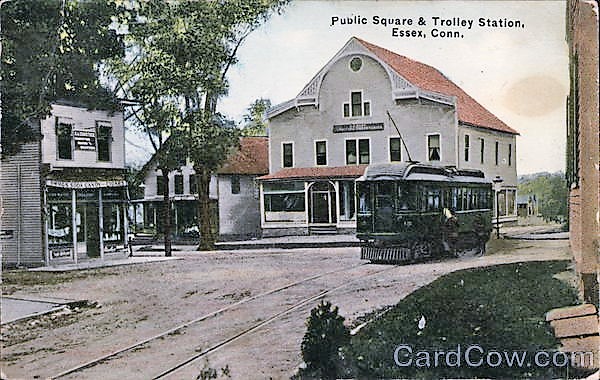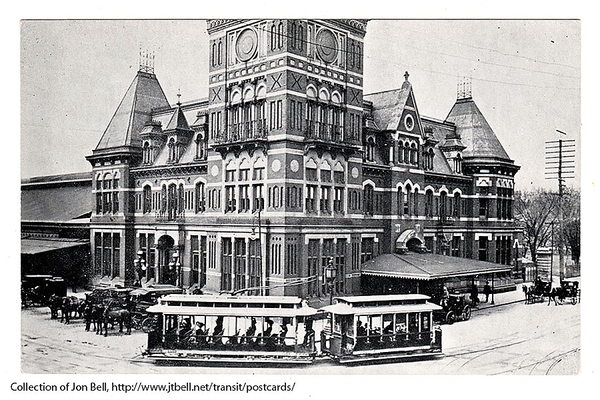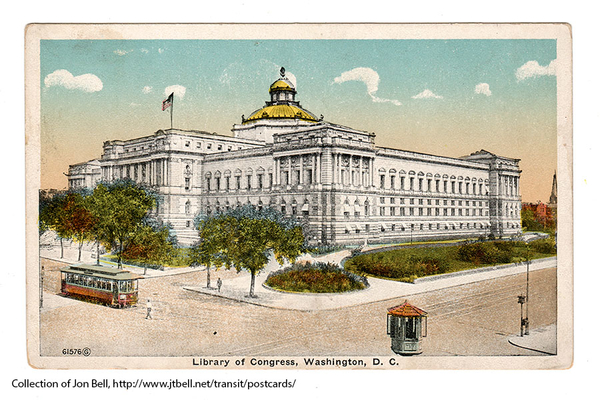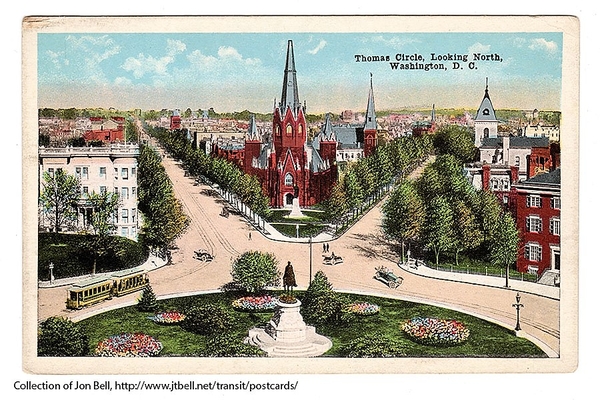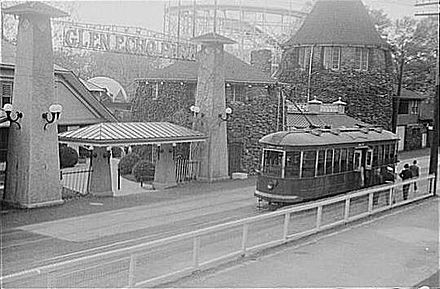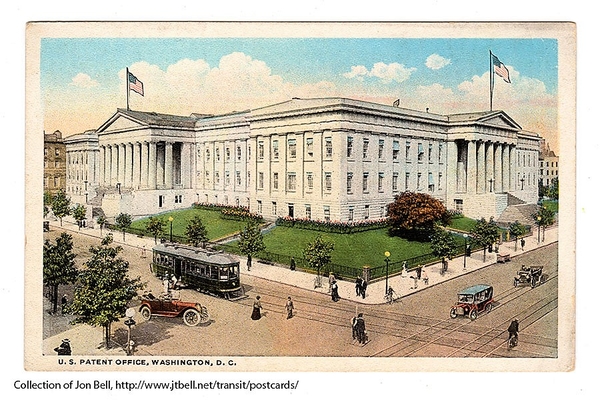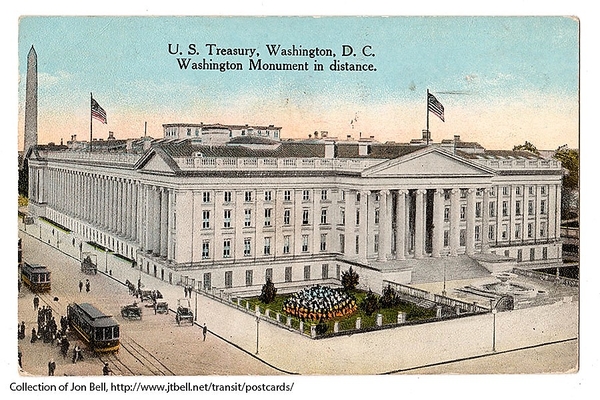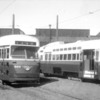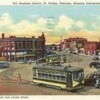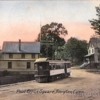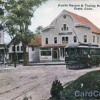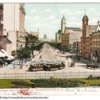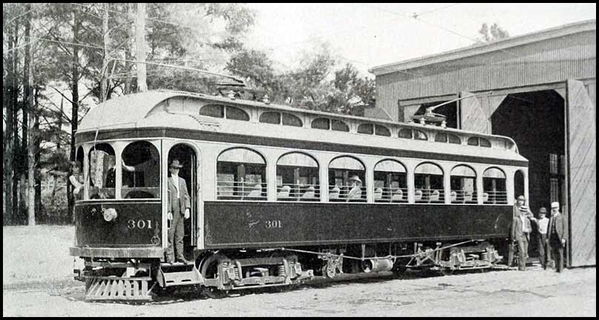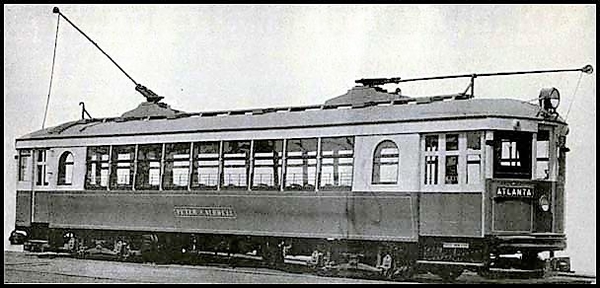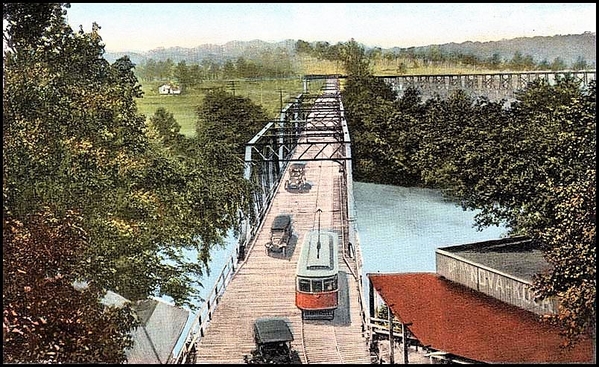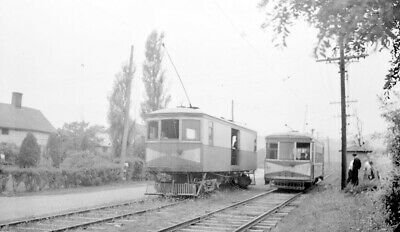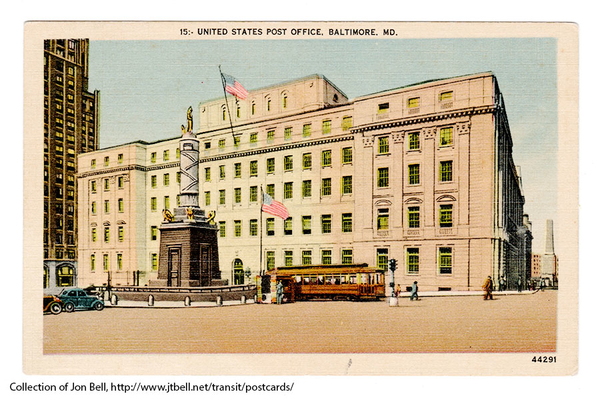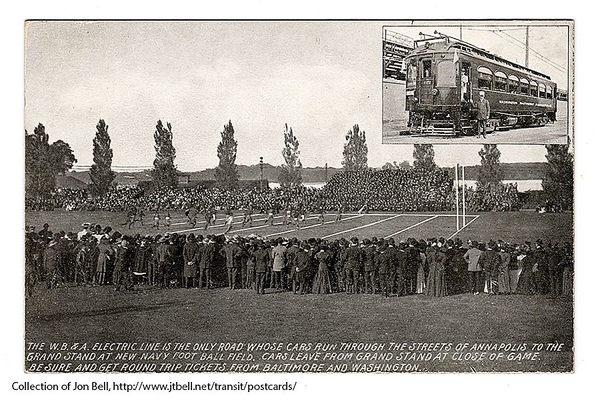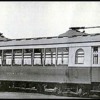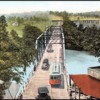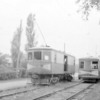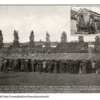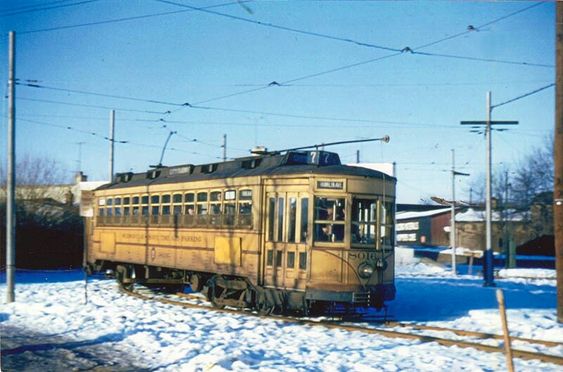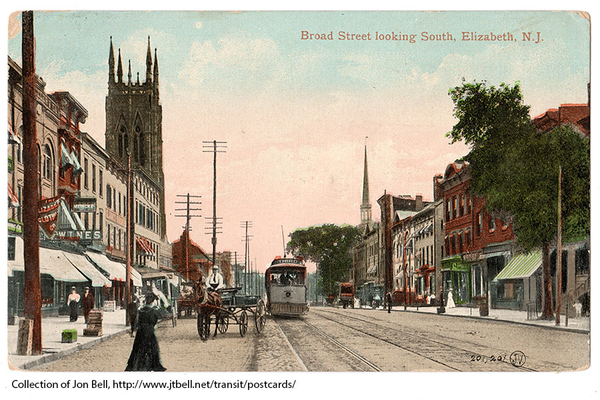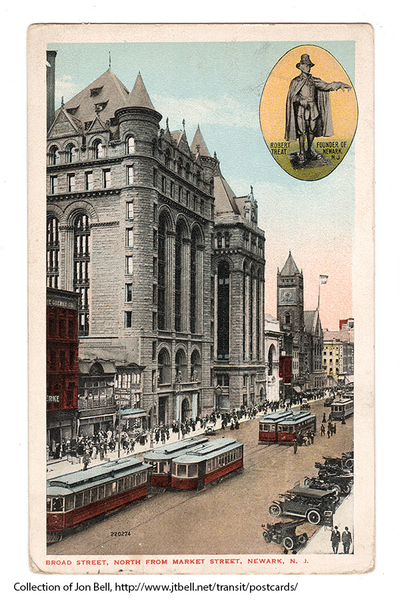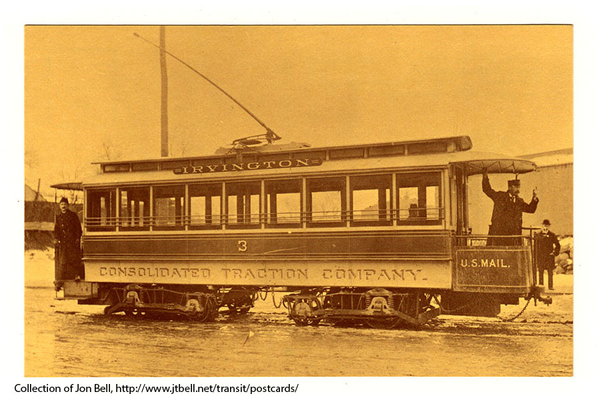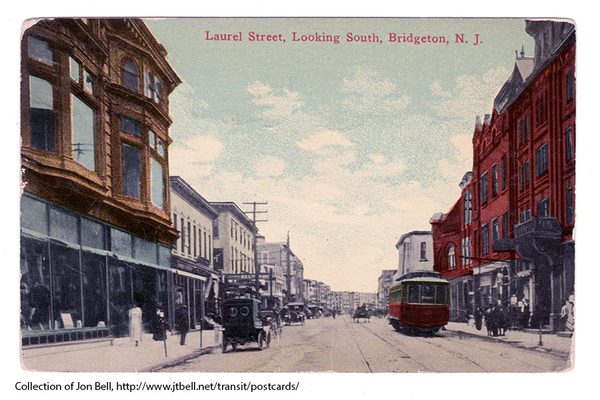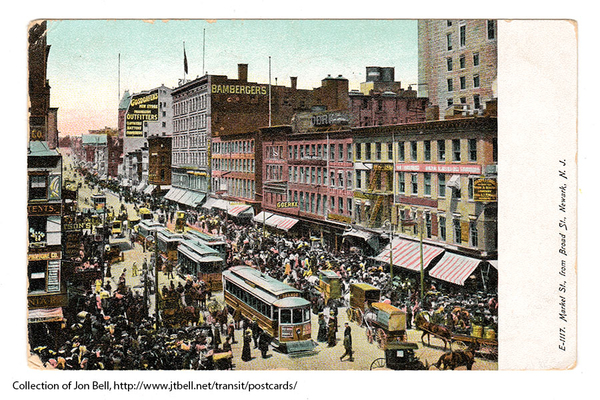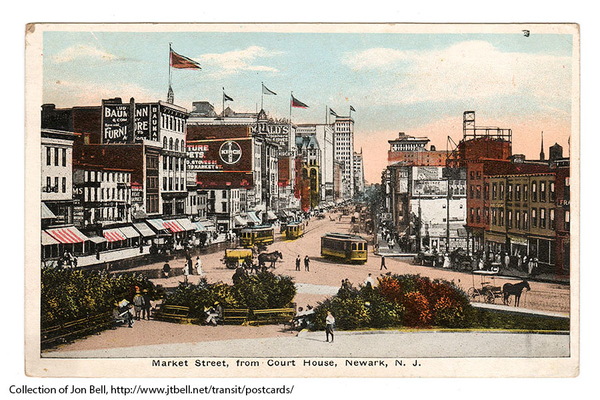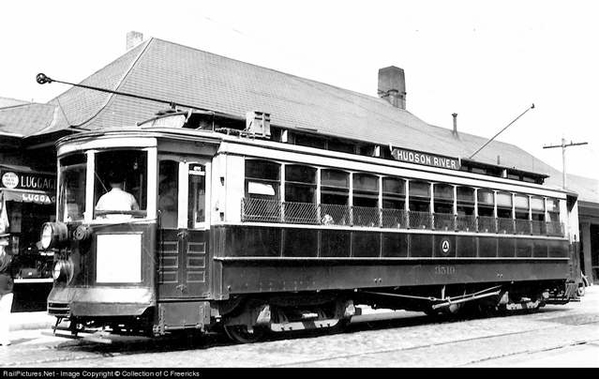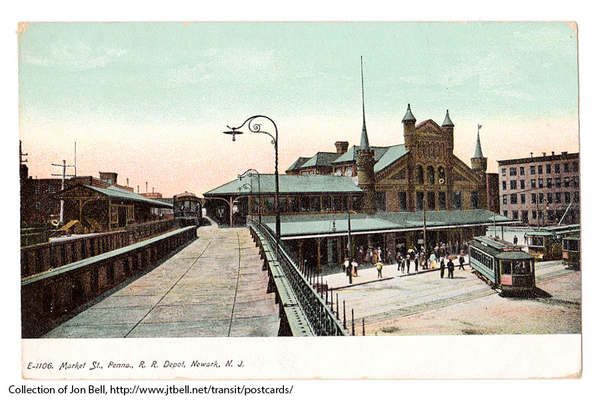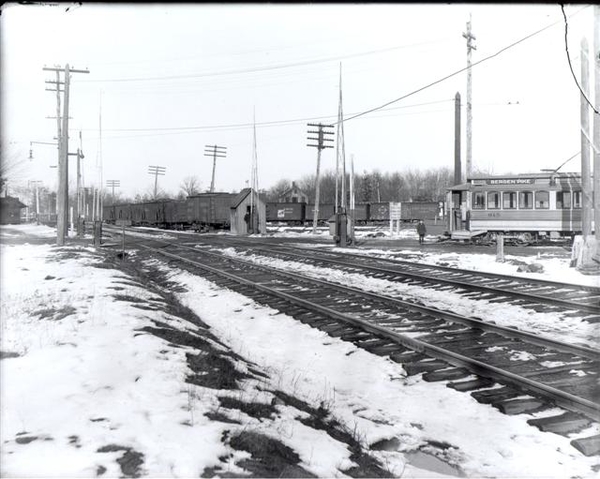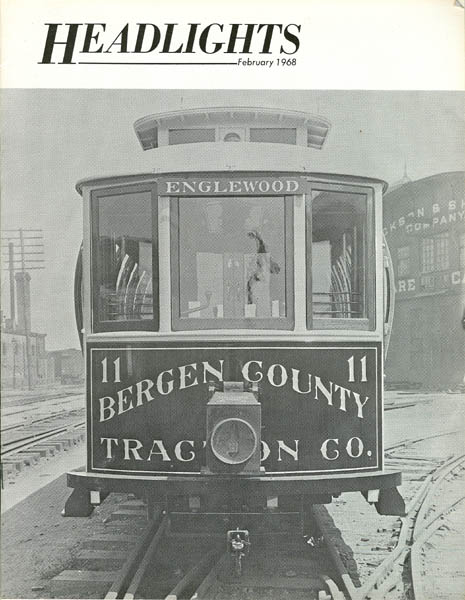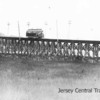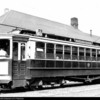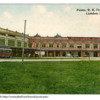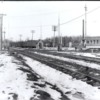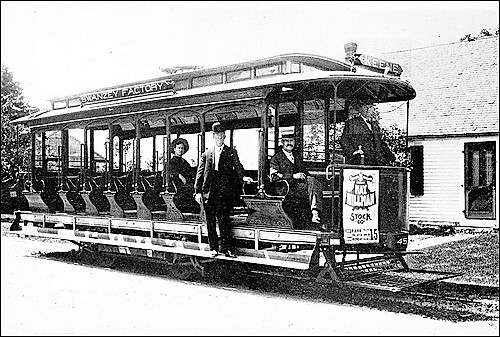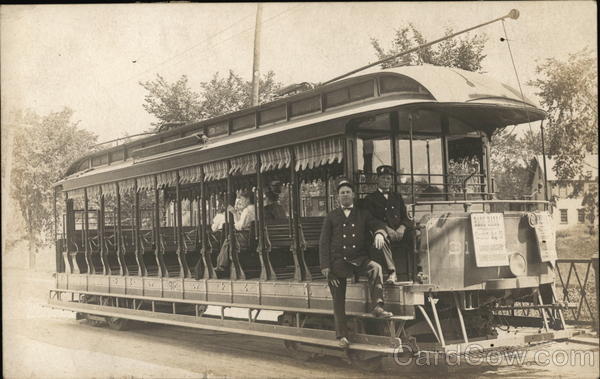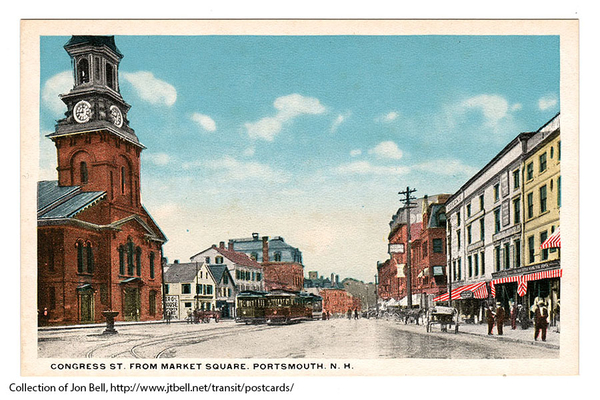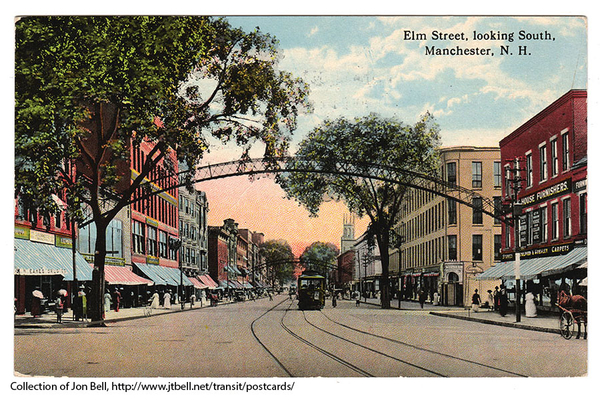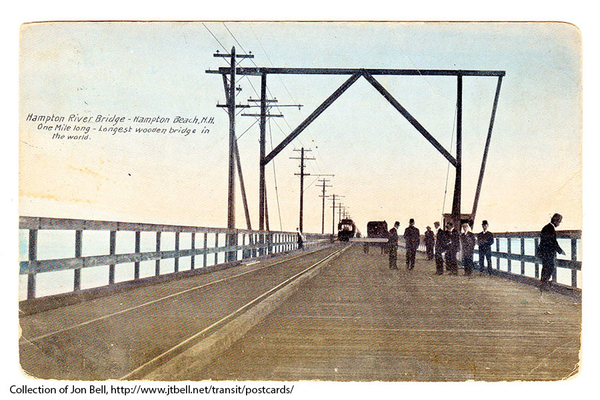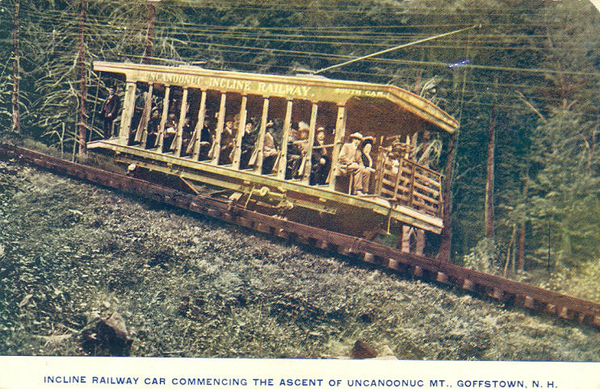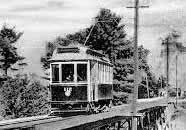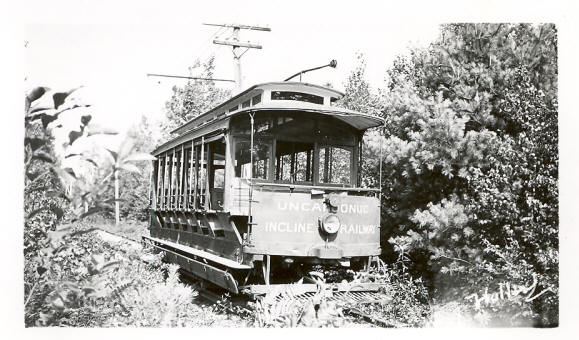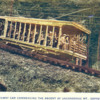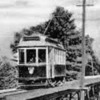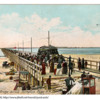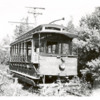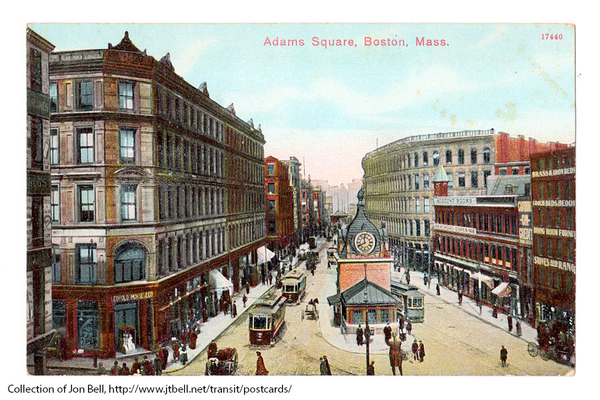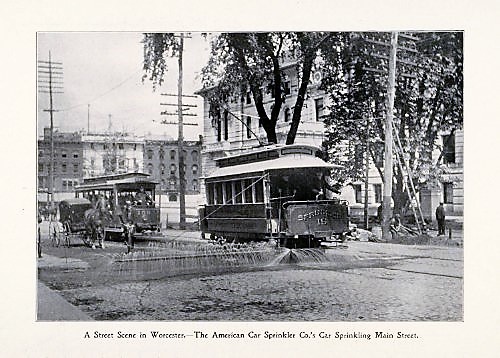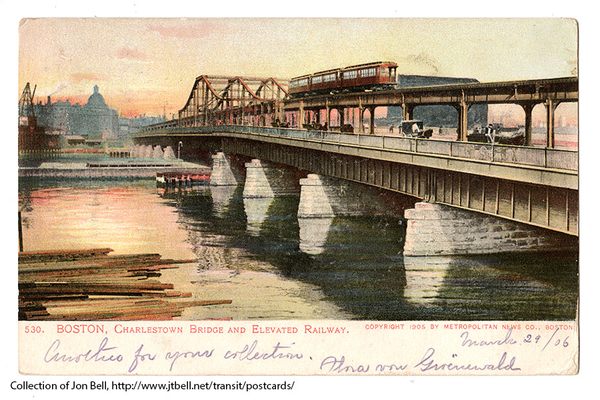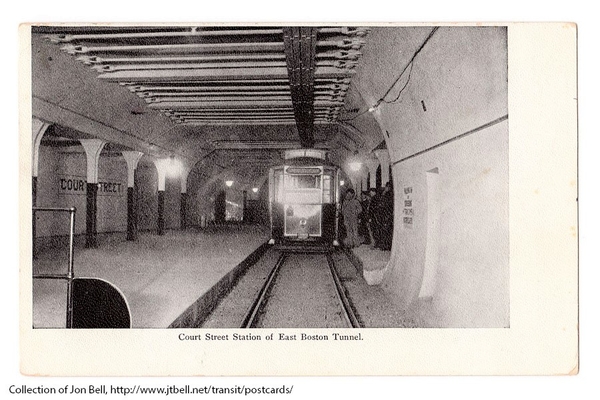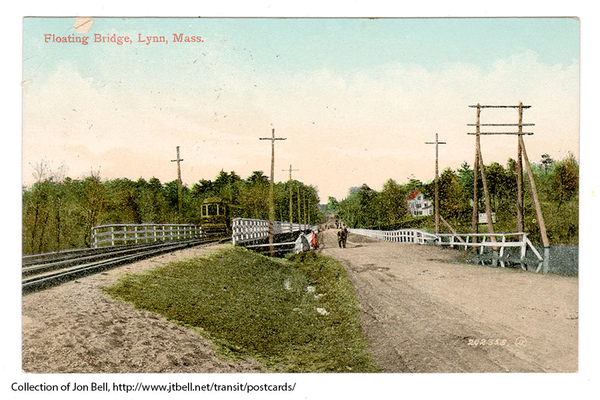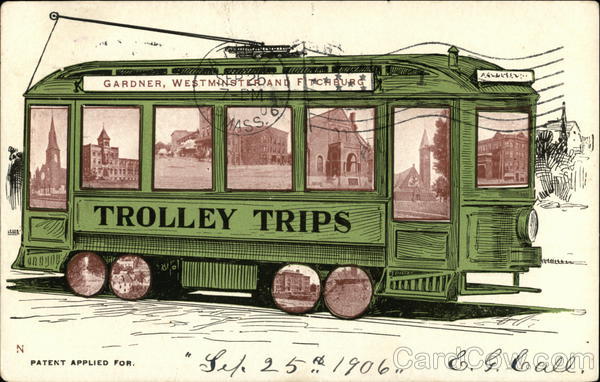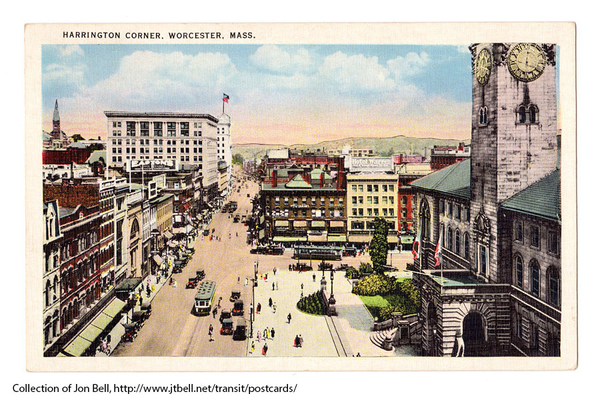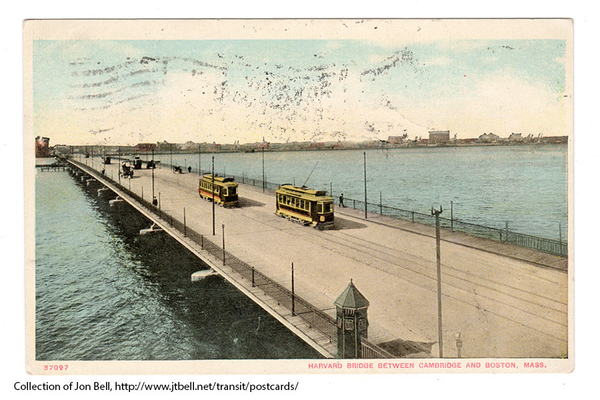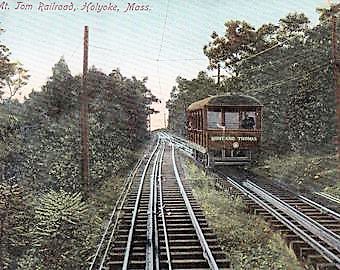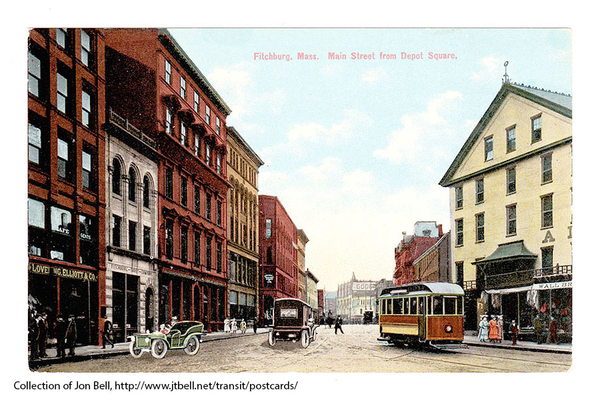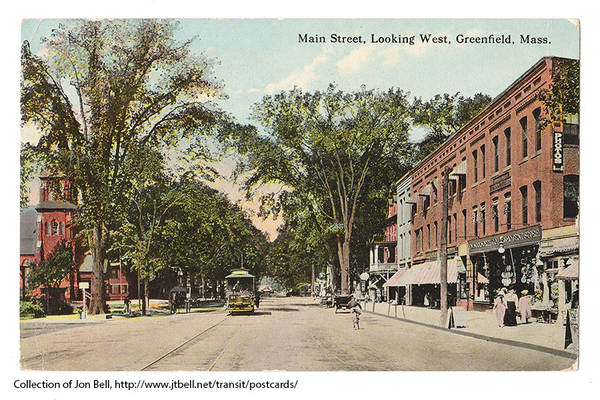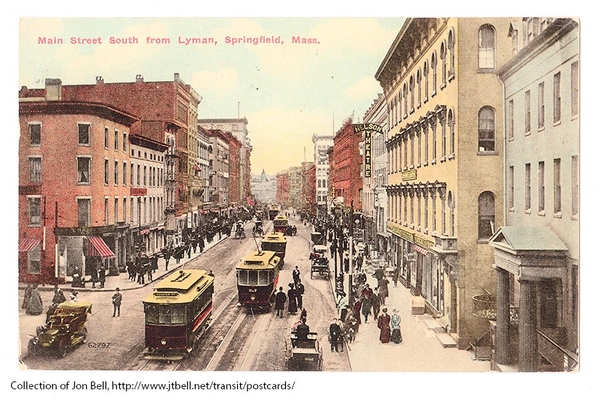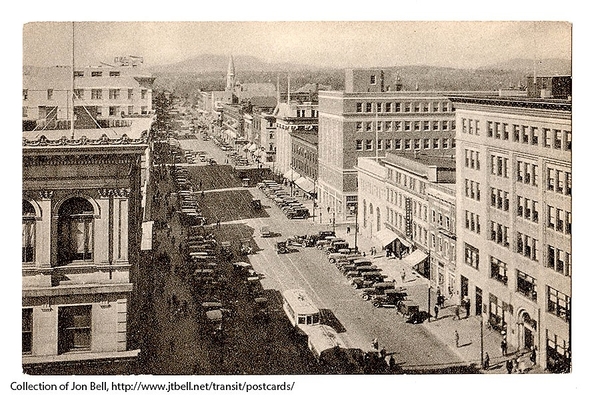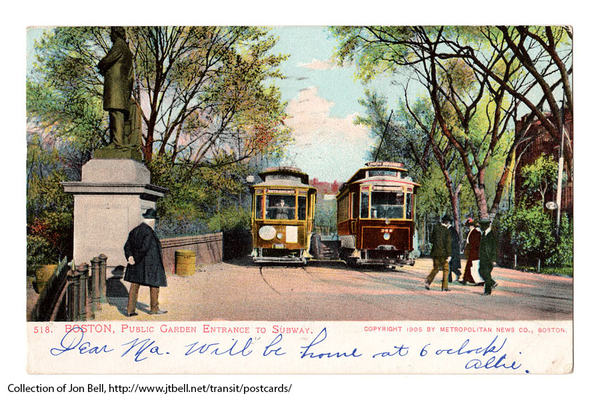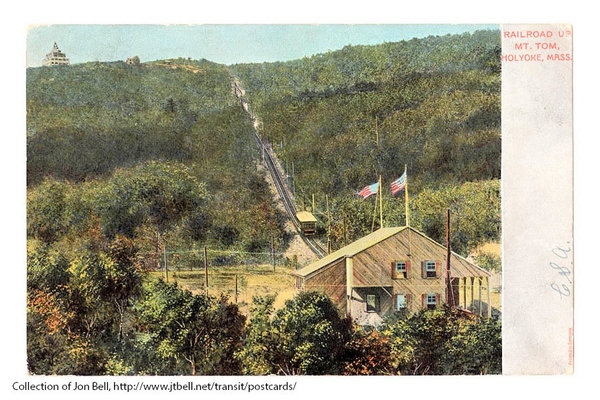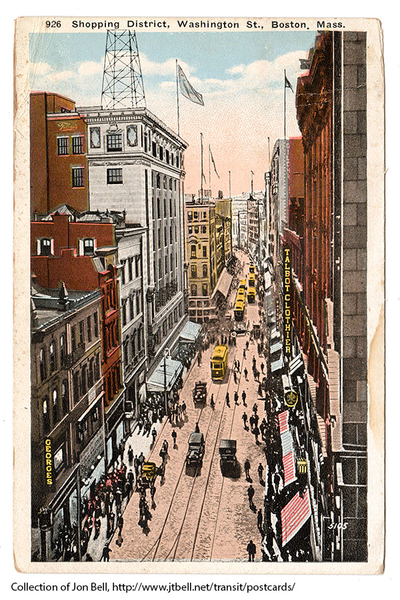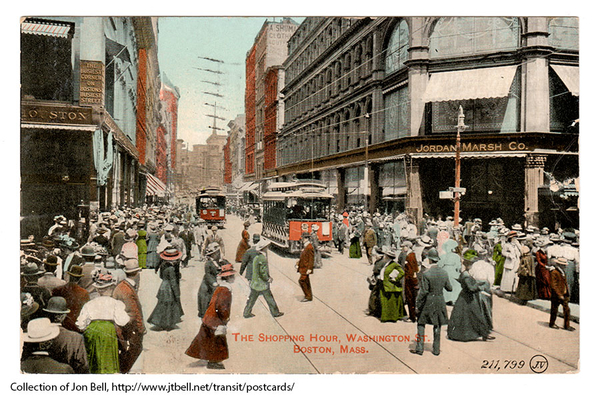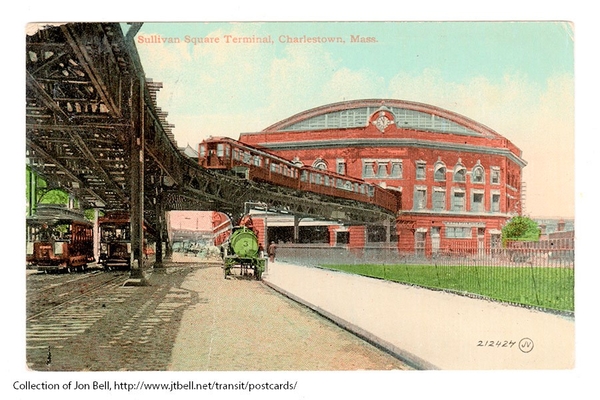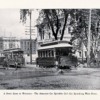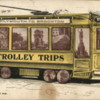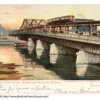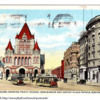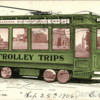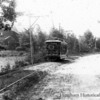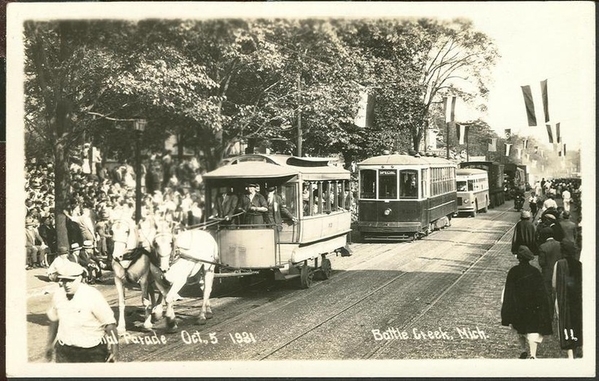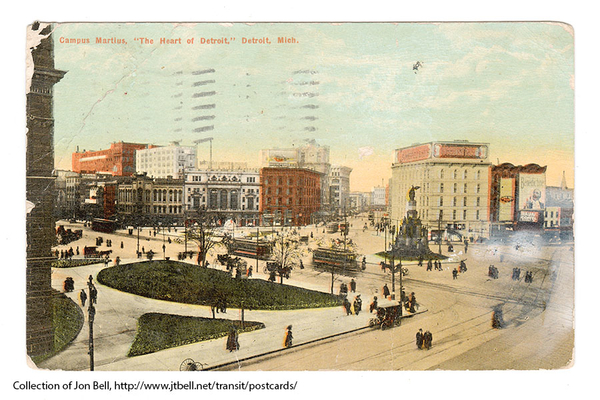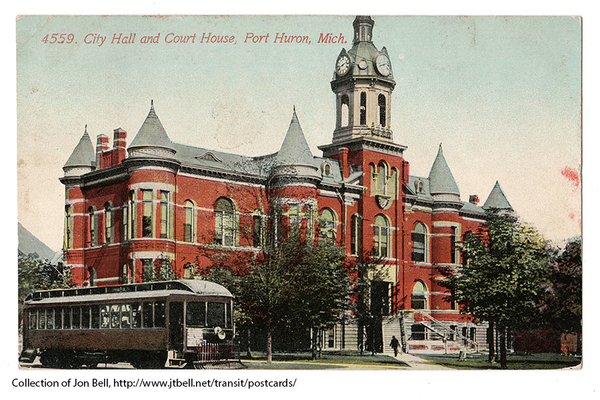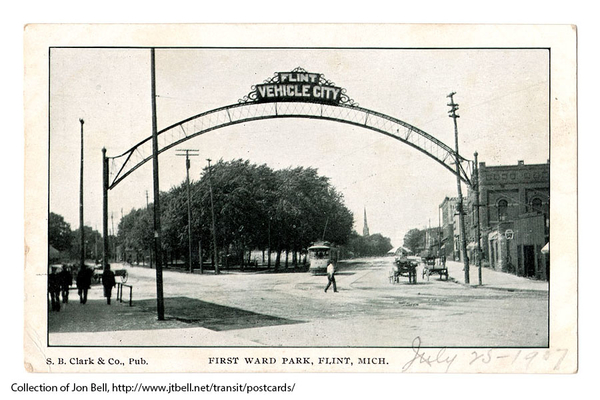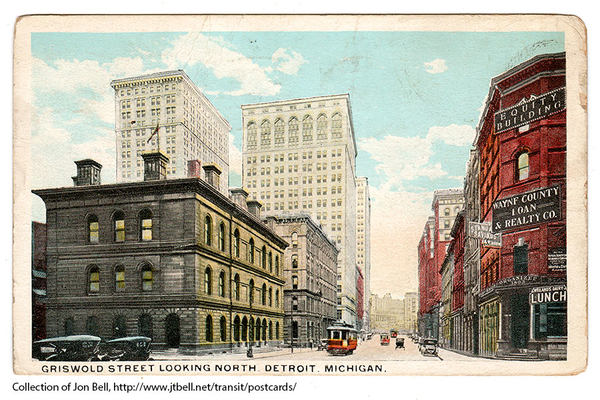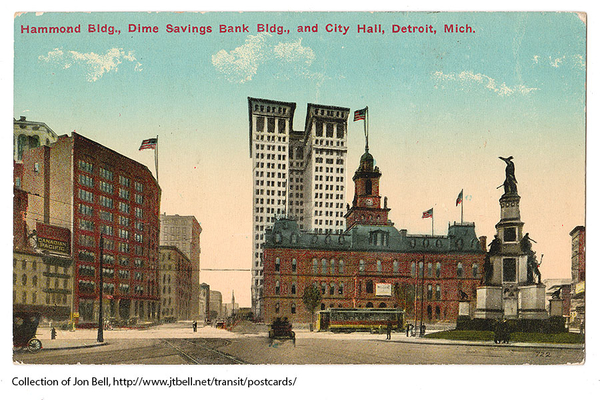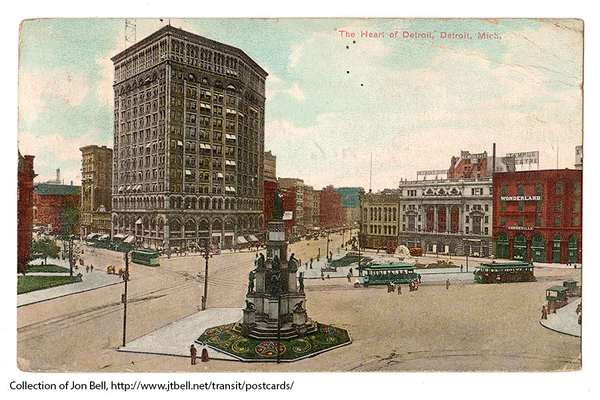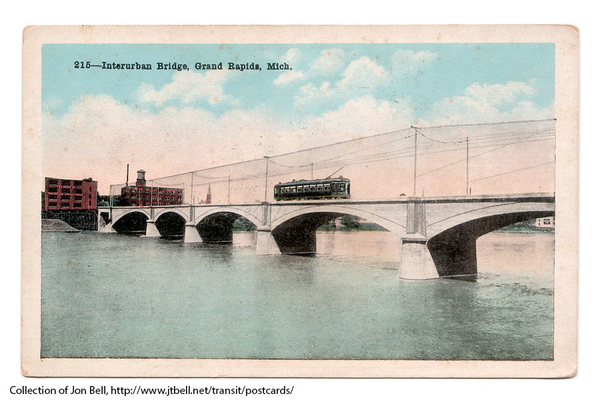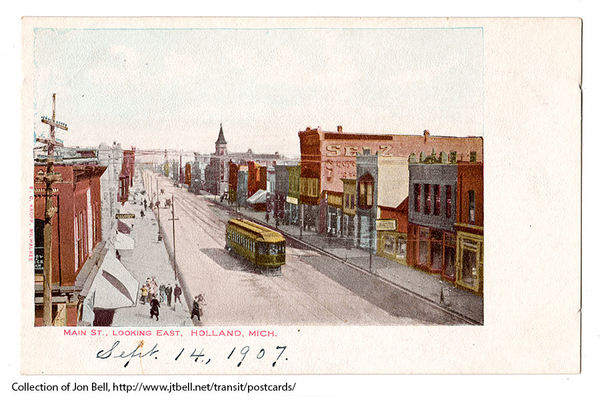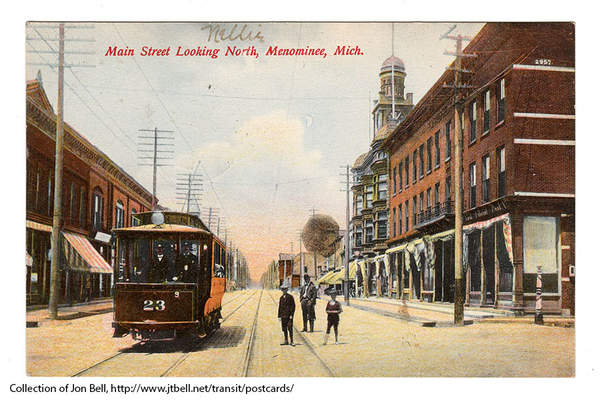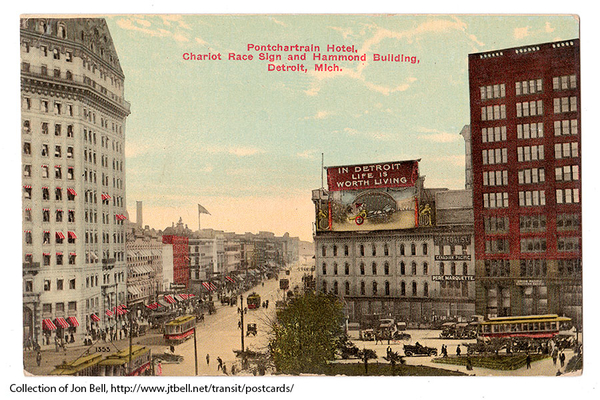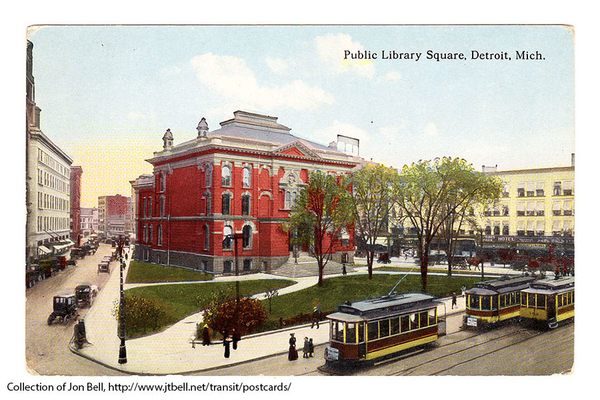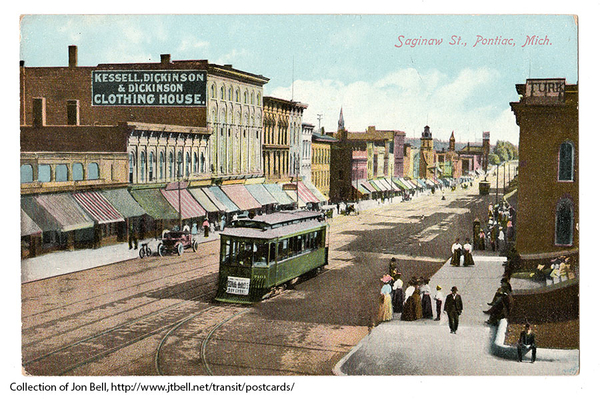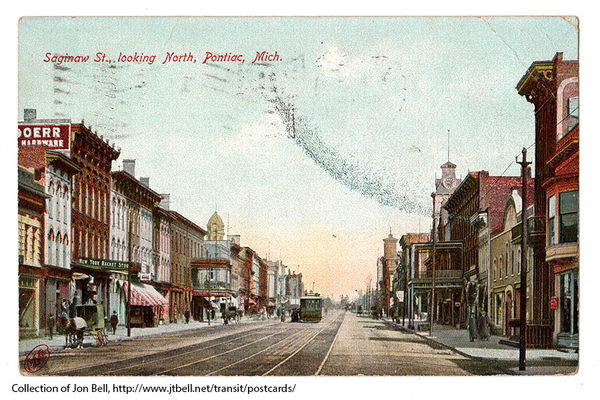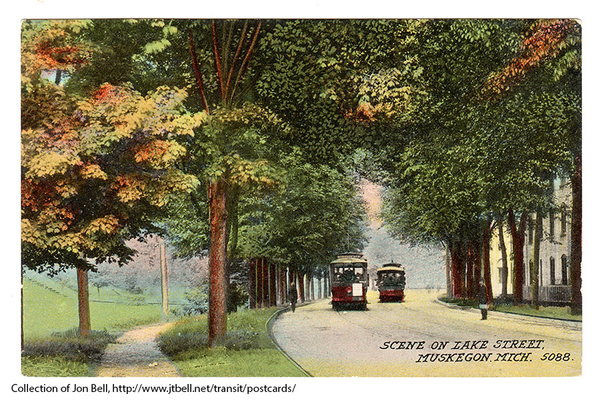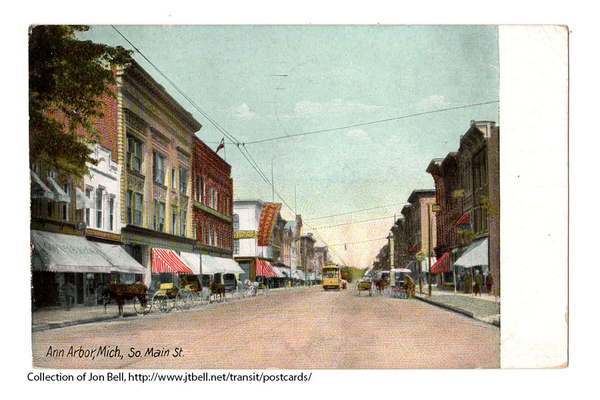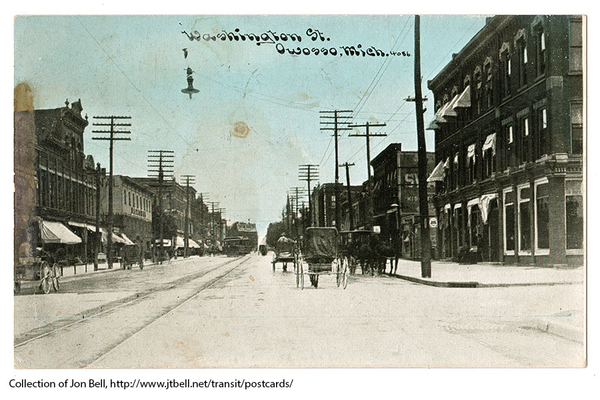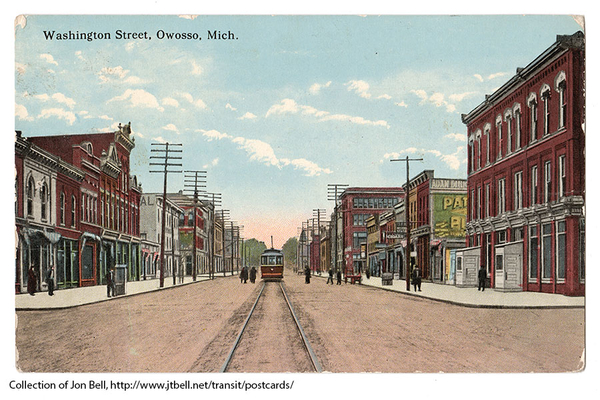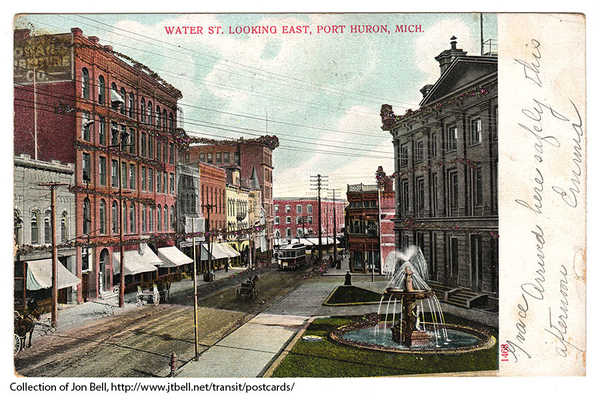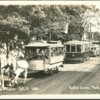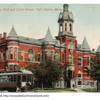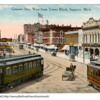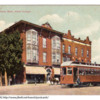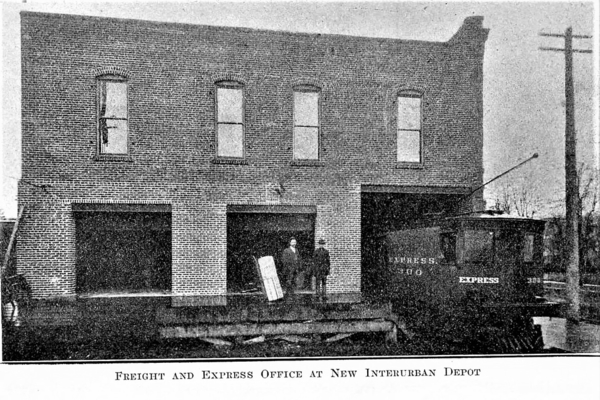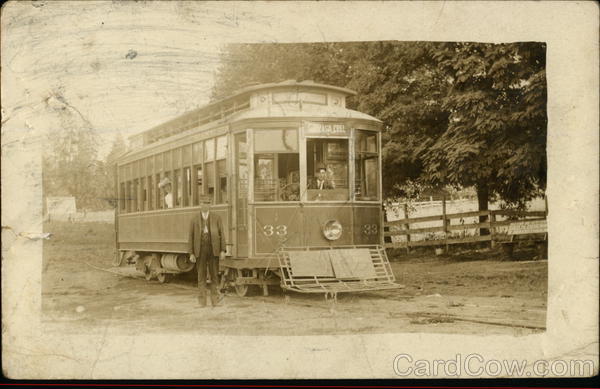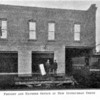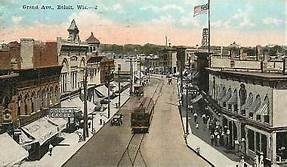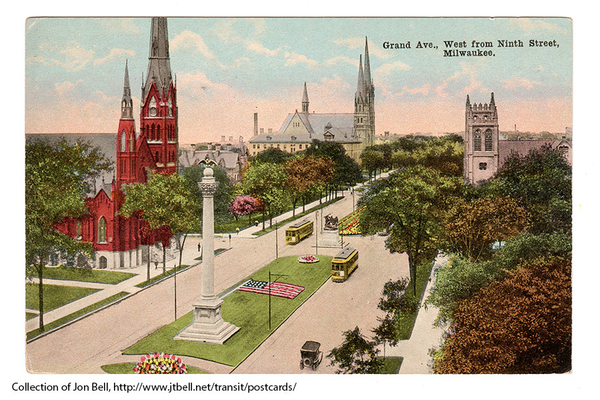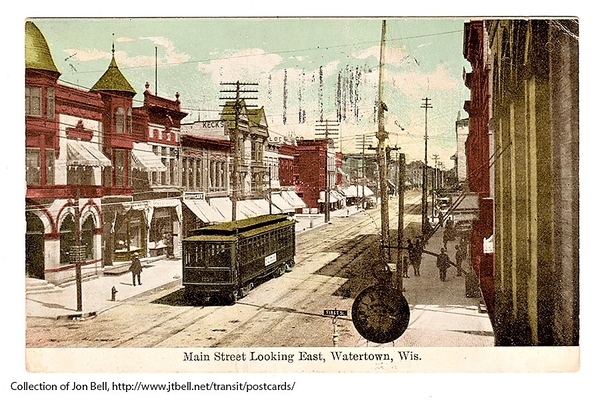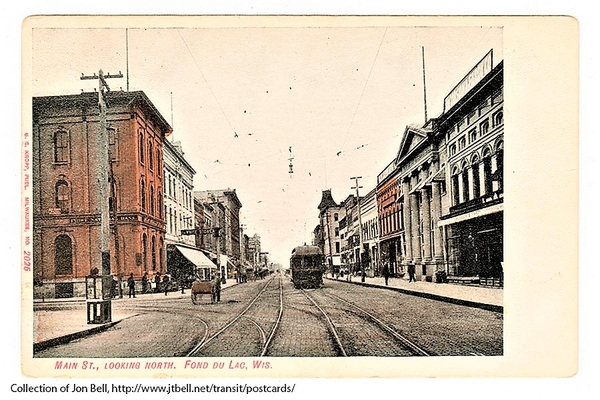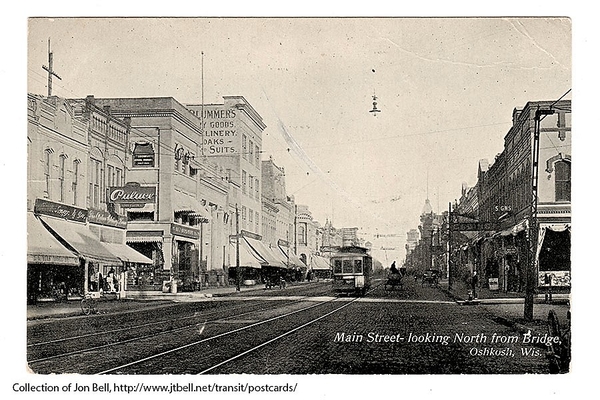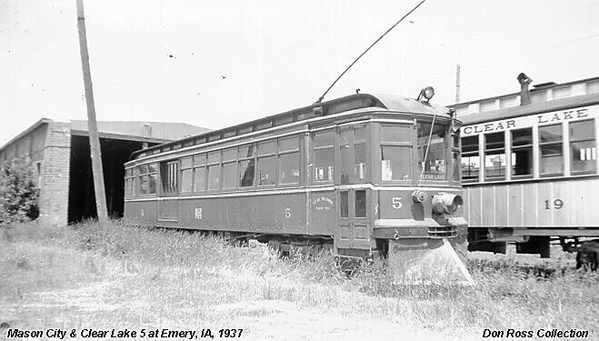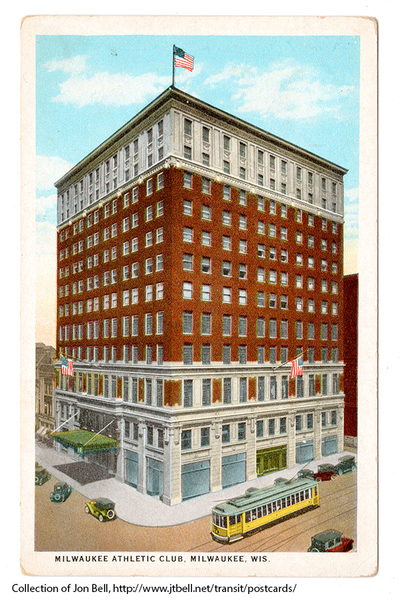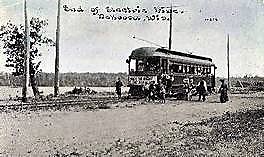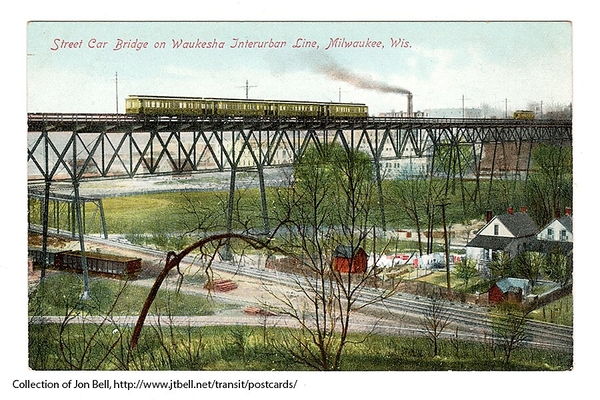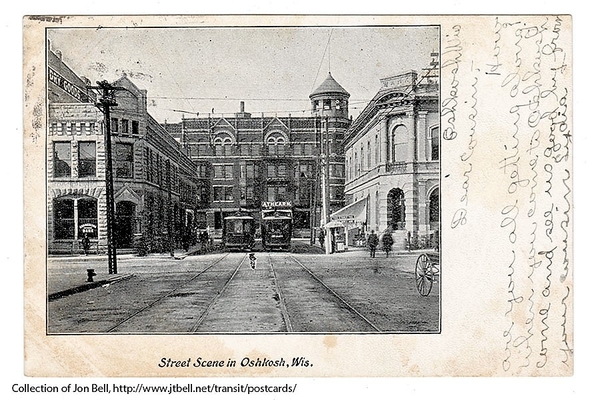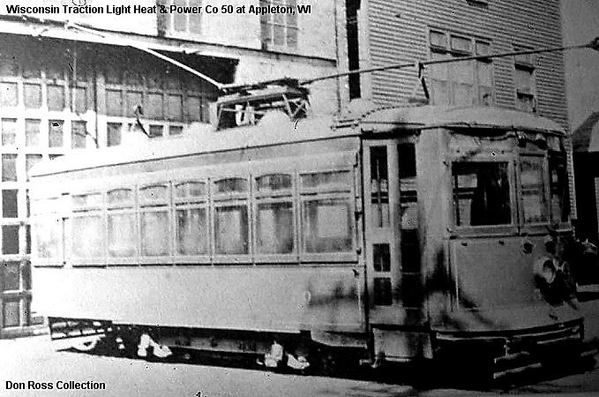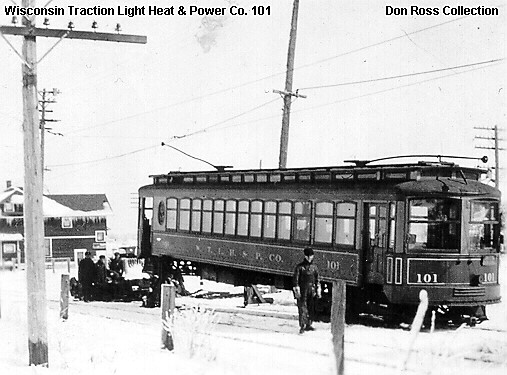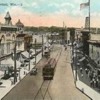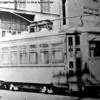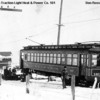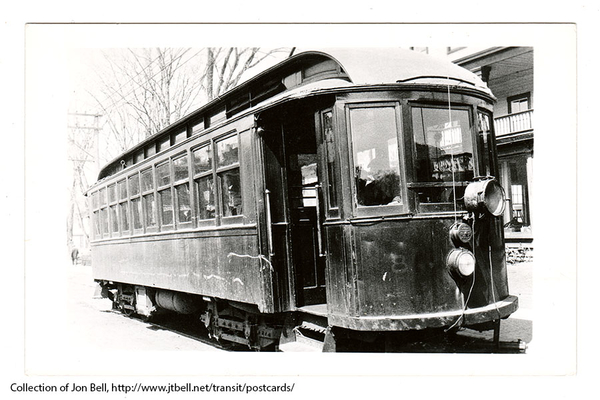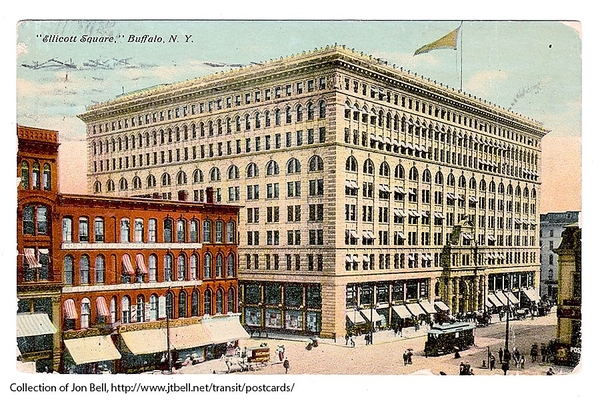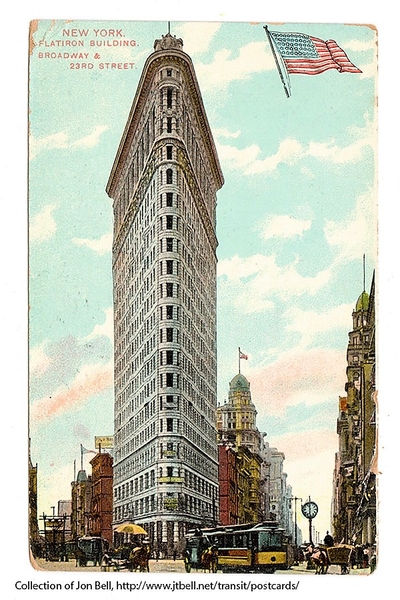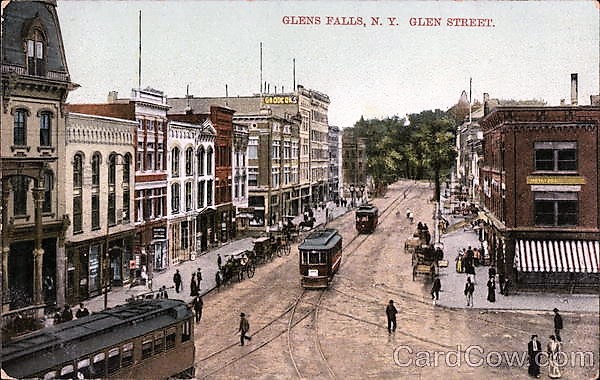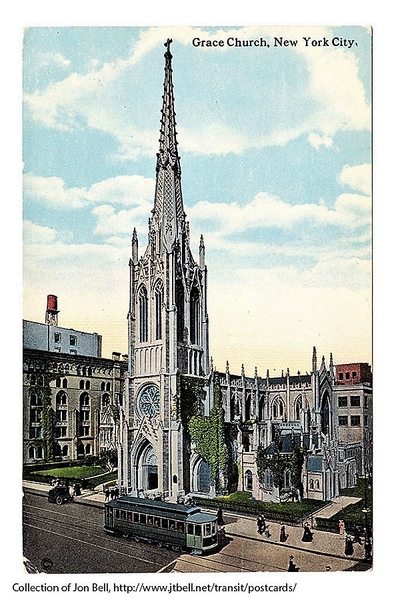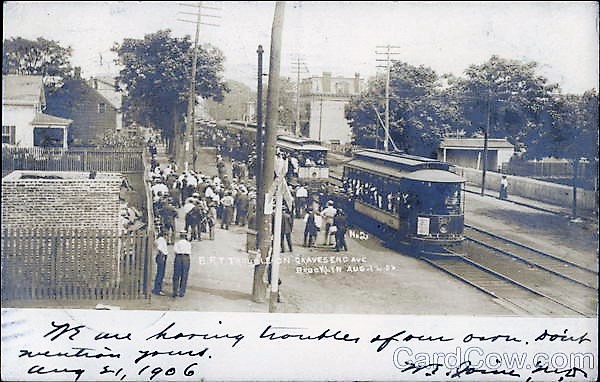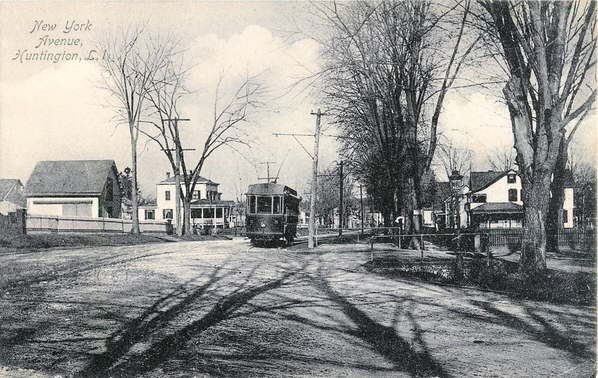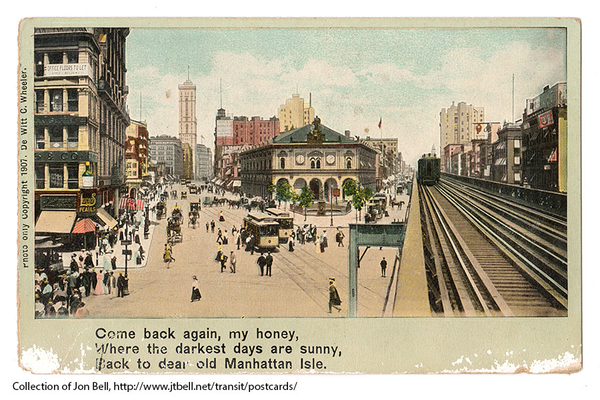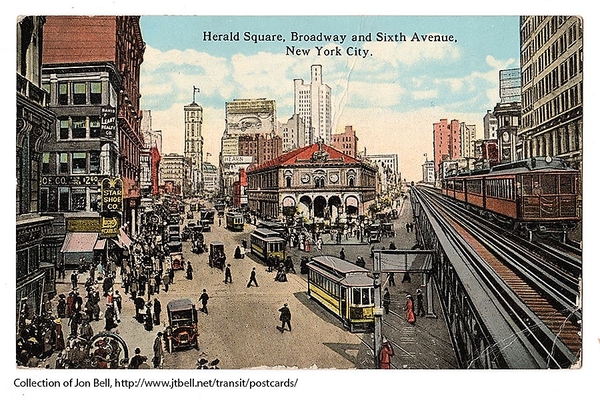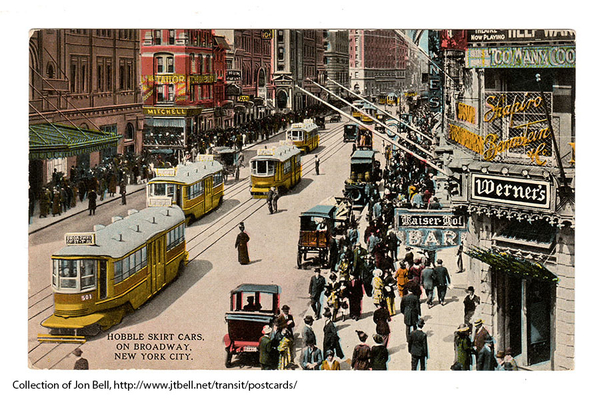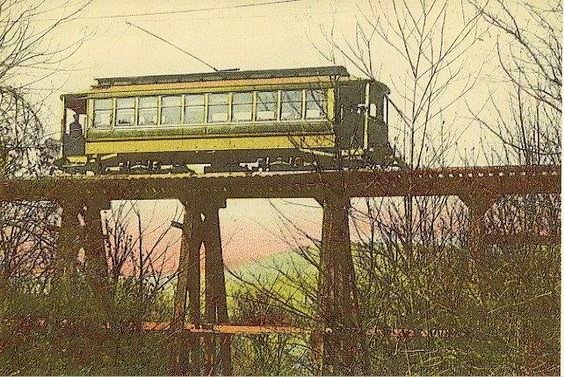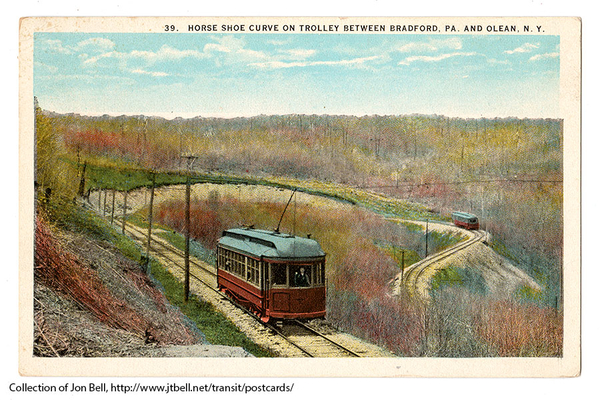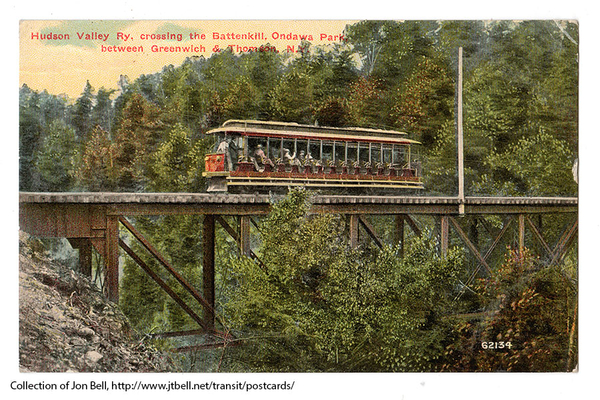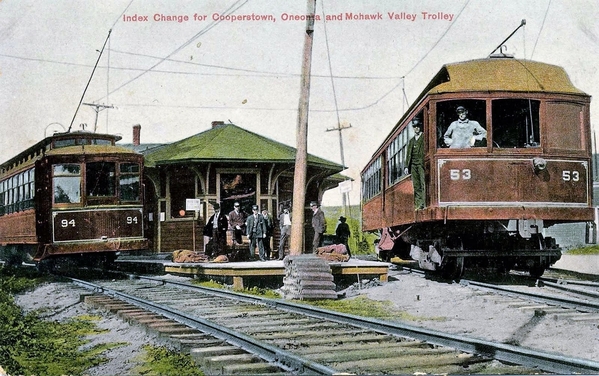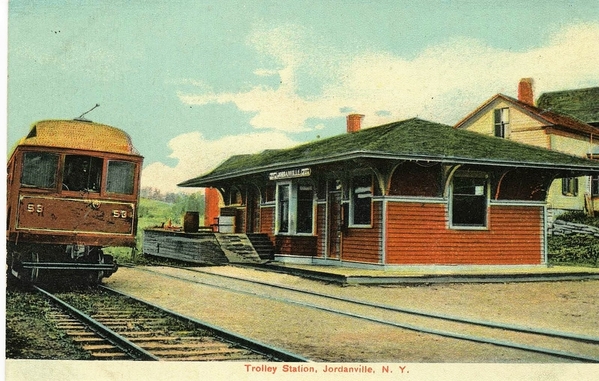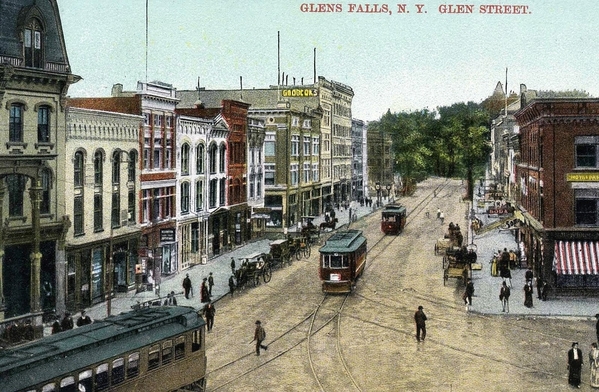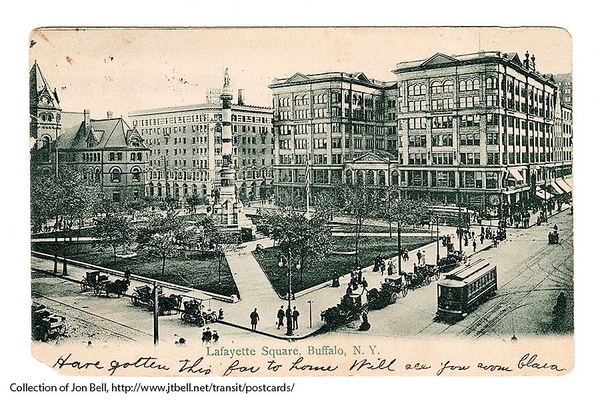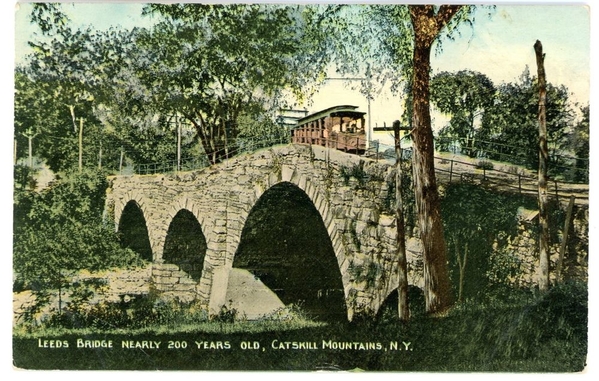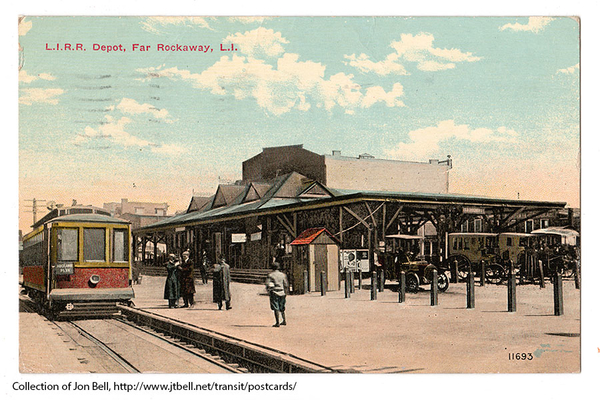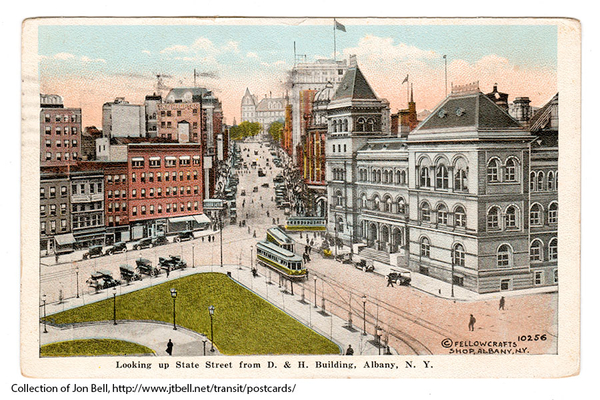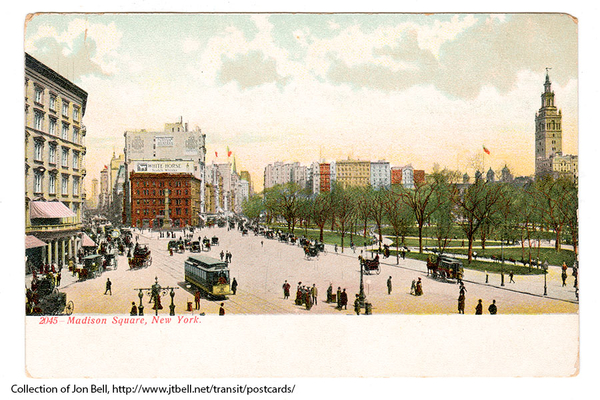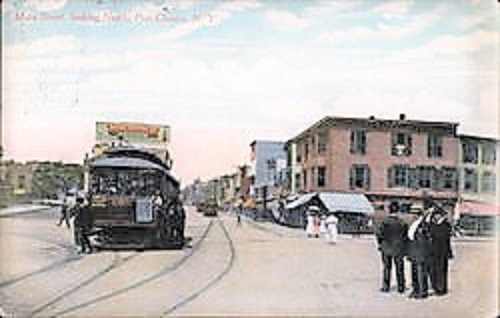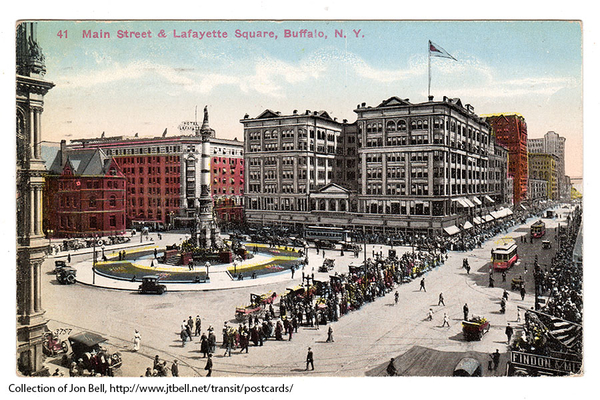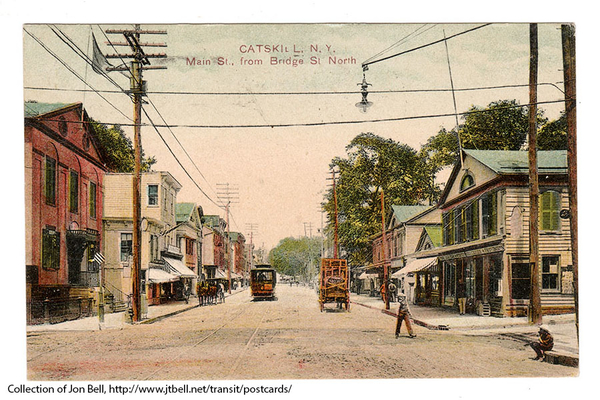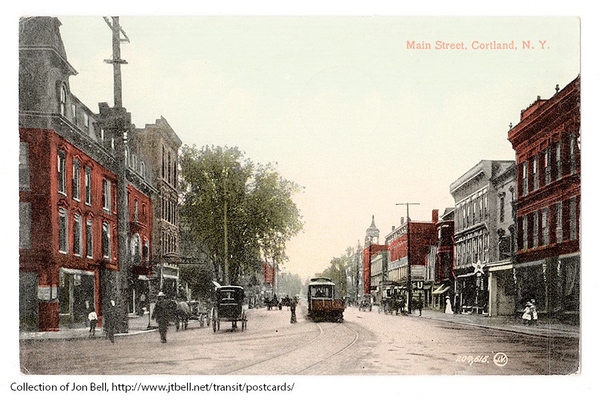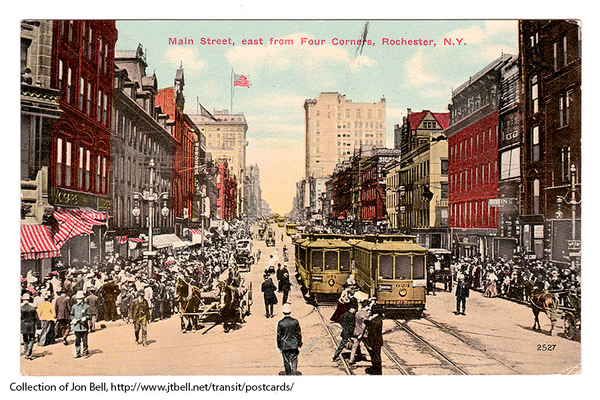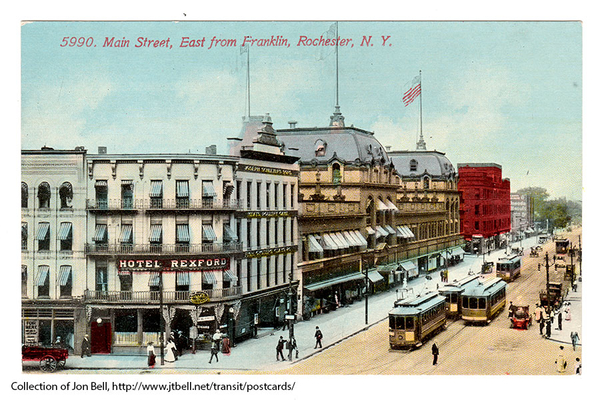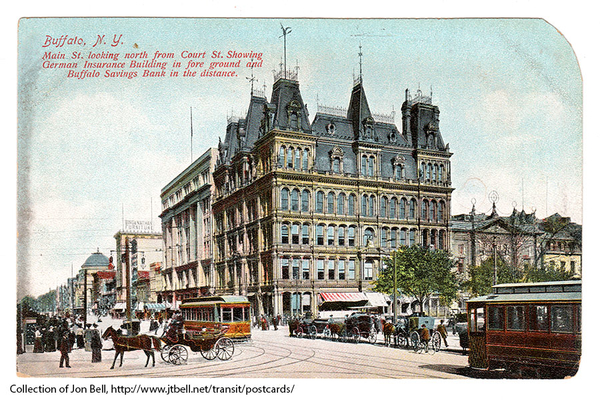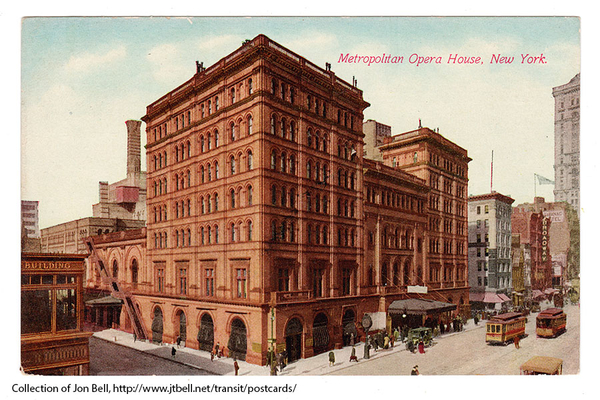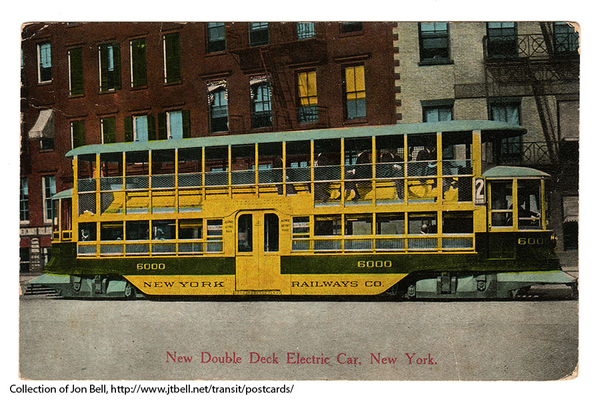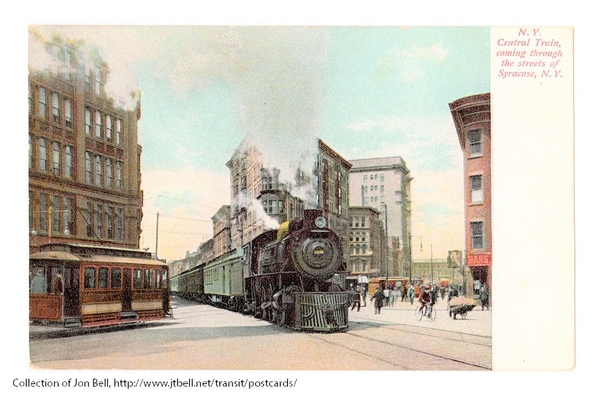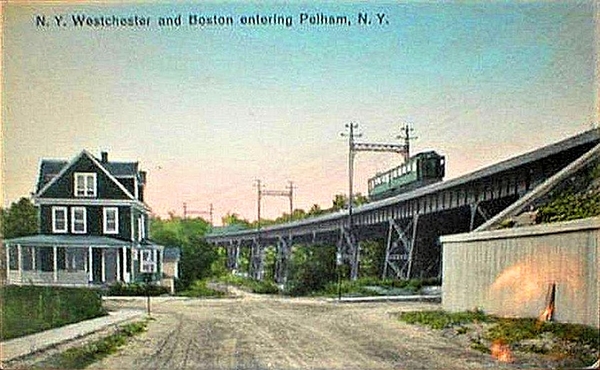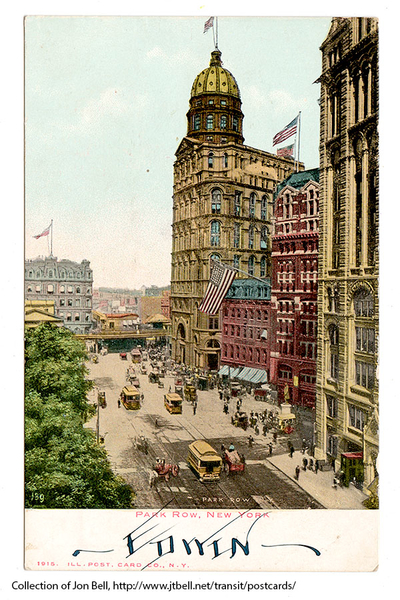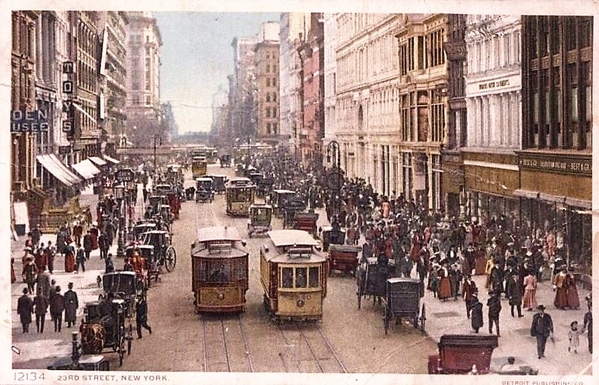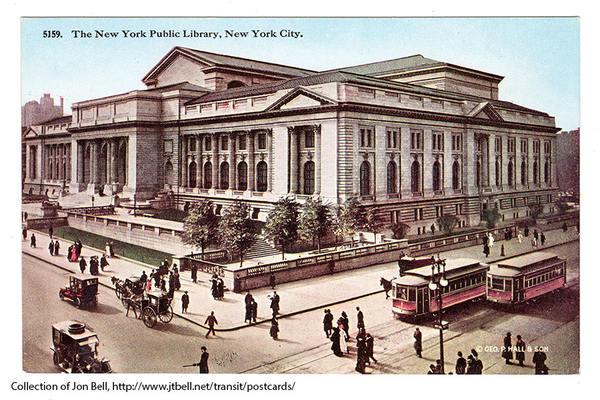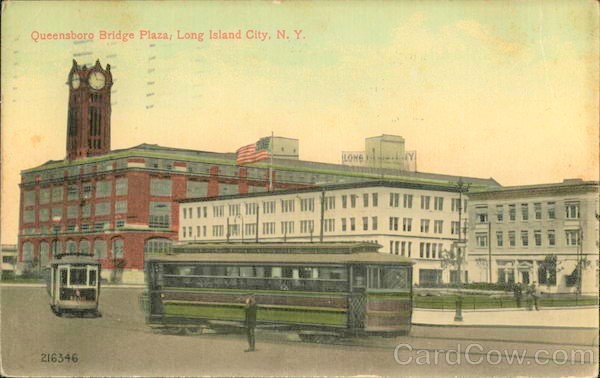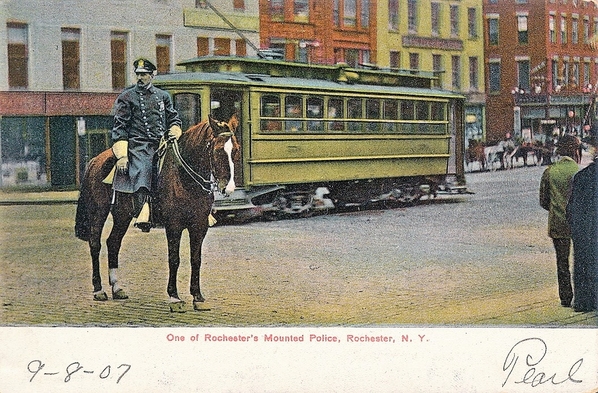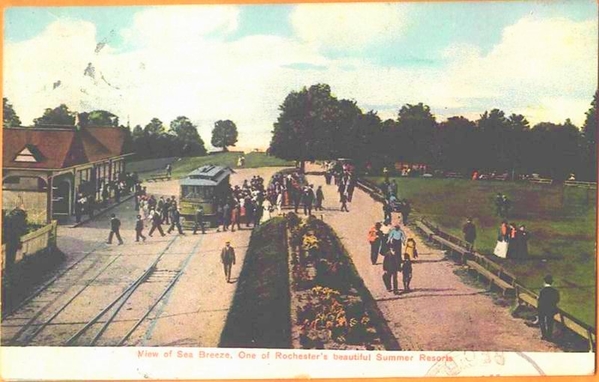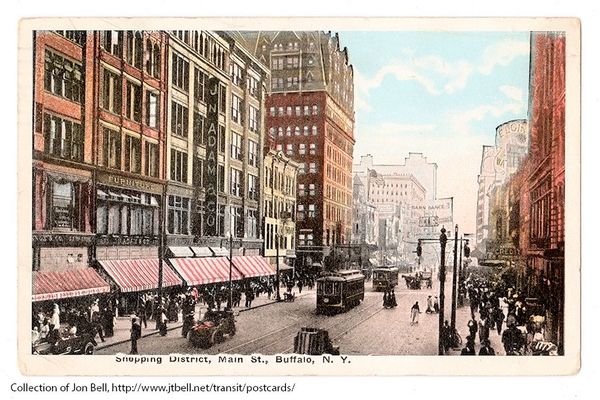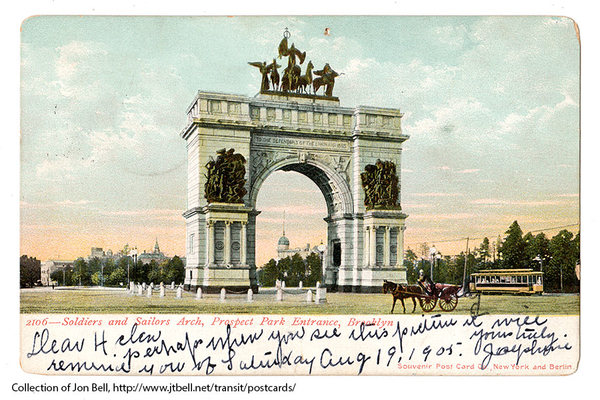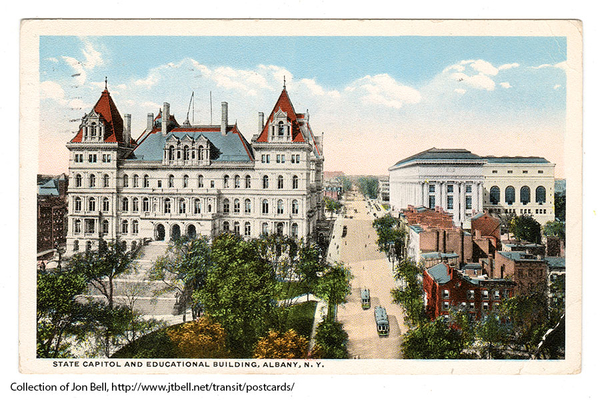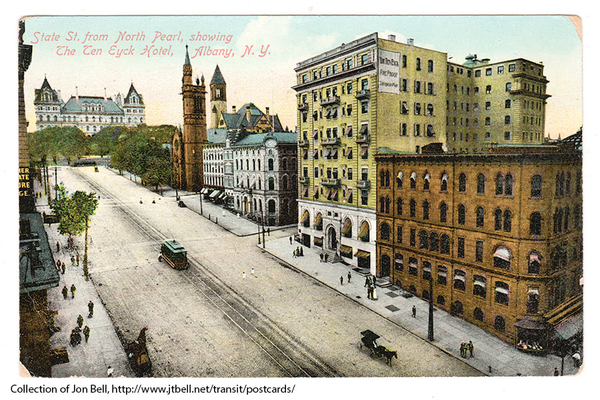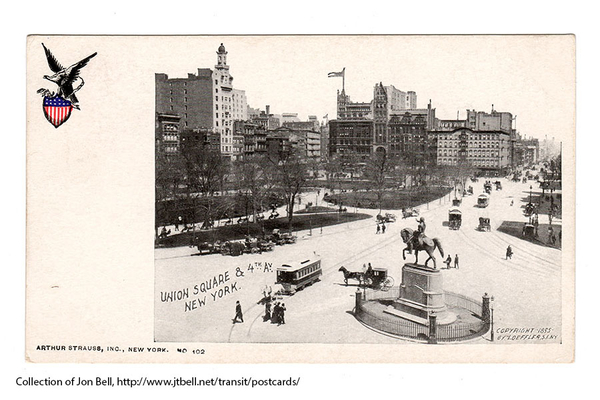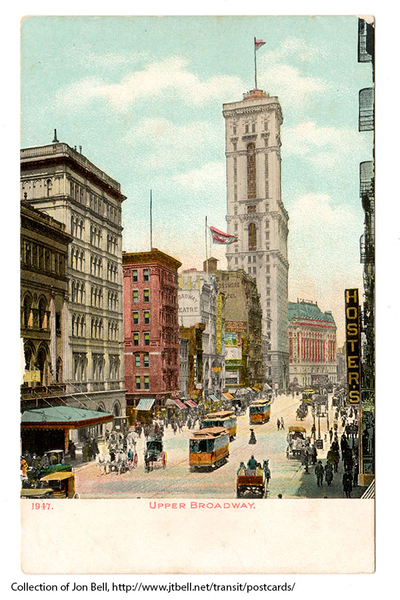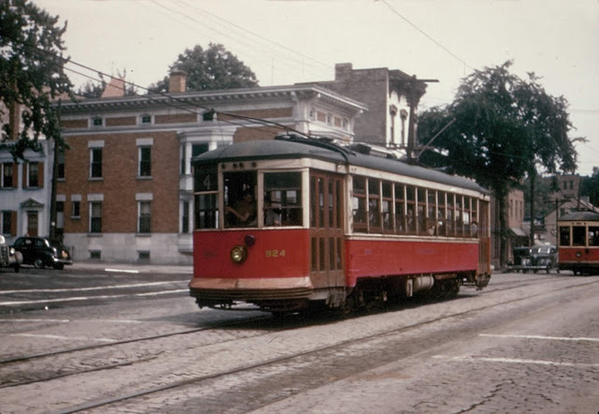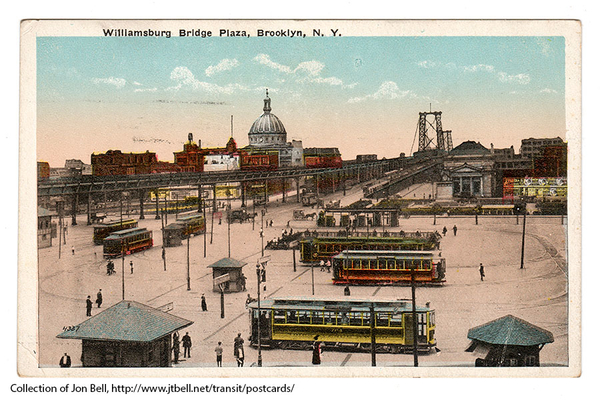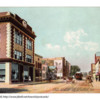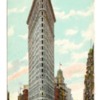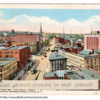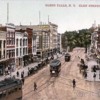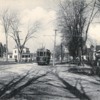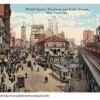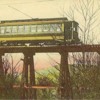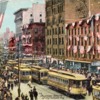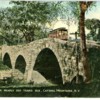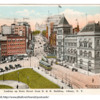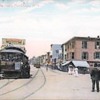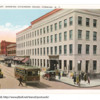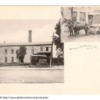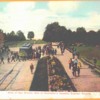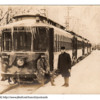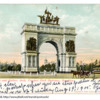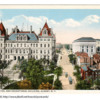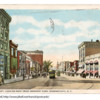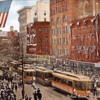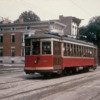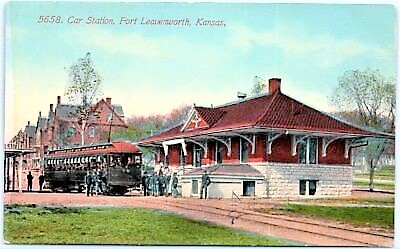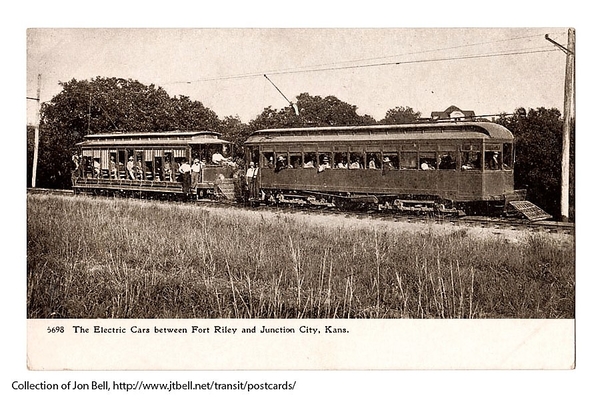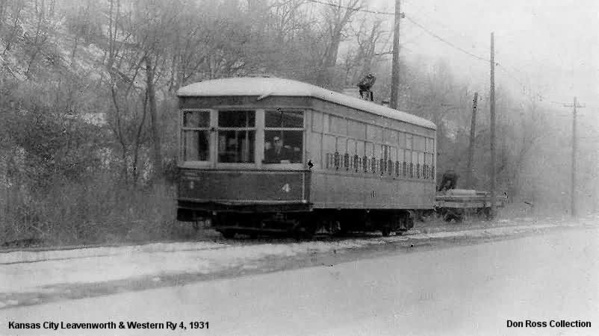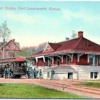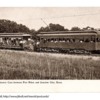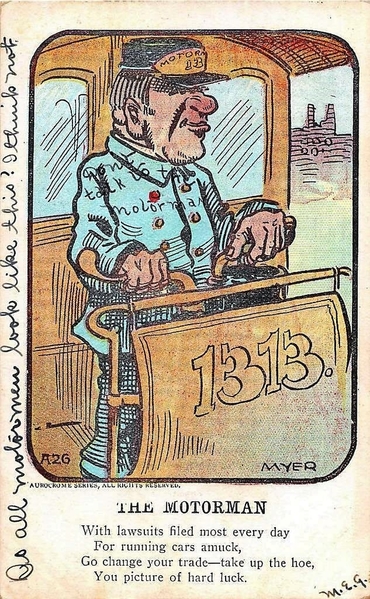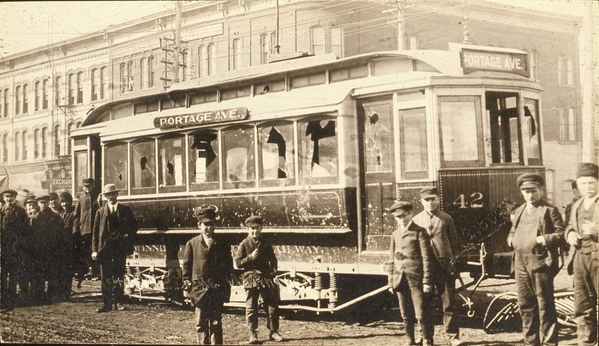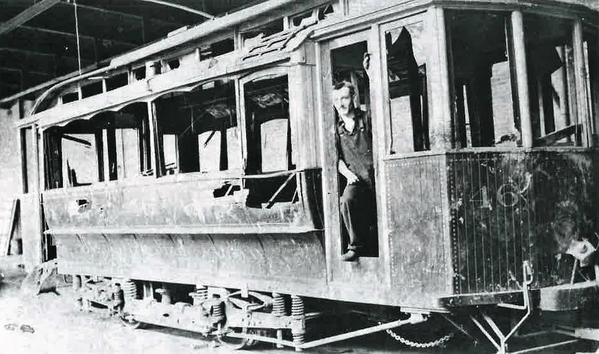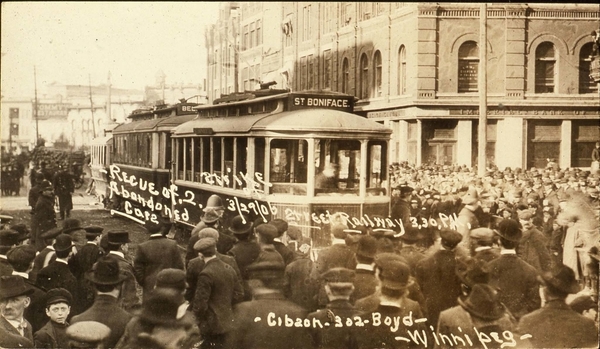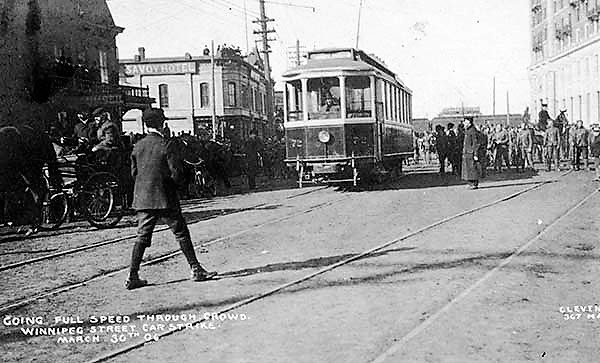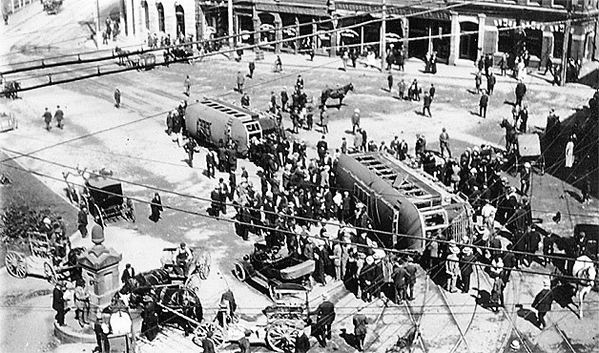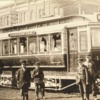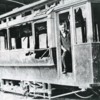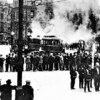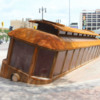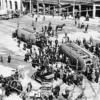Big Chet posted:
Thinking this a Graham Ave. car. This route ran down to Broadway and then headed for downtown Brooklyn. Some of these cars went over the Brooklyn Bridge to Park Row in Manhattan. The route was one of several B&QT lines that connected three borough's , ie Queens , Brooklyn and Manhattan. These cars started their run in Long Island City crossing the double Bascule bridge at Newtown Creek. . We are at Meserole Avenue in this photo. Lot of prewar cars in the photo so maybe early 1940s
B&QT cars.
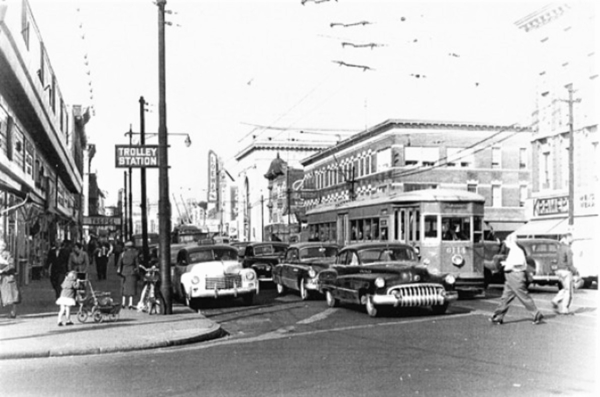 1950 Flatbush & Cortelyou Rd 197KB
1950 Flatbush & Cortelyou Rd 197KB
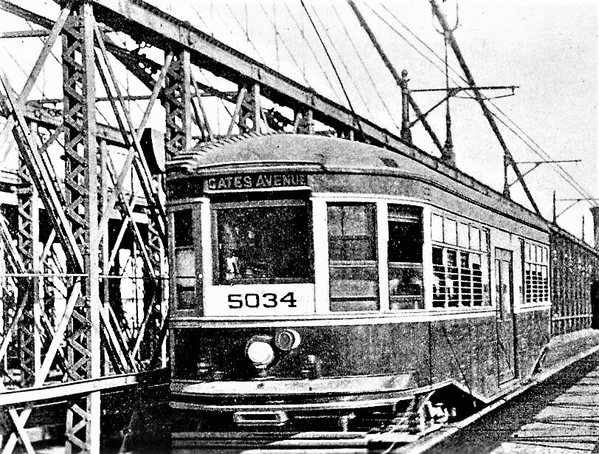 B&QT 5034 on Brooklyn Bridge, Gates Ave car
B&QT 5034 on Brooklyn Bridge, Gates Ave car
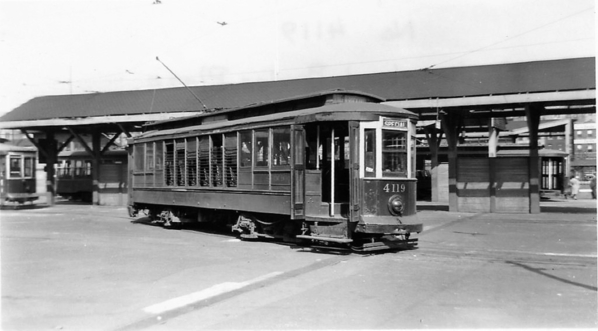 B&QT Convertible 4119 @ Williamsburg Bridge Plaza
B&QT Convertible 4119 @ Williamsburg Bridge Plaza
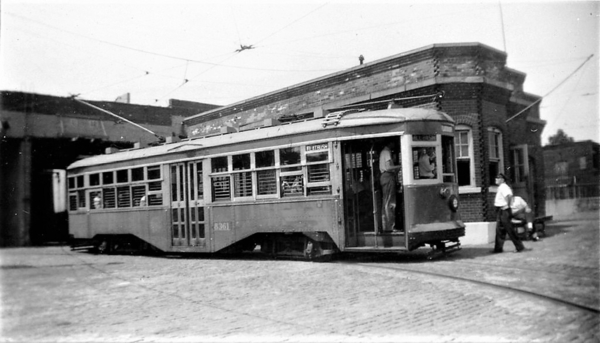 B&QT Peter Witt 8361 @ 10th Ave & 20th St, Brooklyn
B&QT Peter Witt 8361 @ 10th Ave & 20th St, Brooklyn
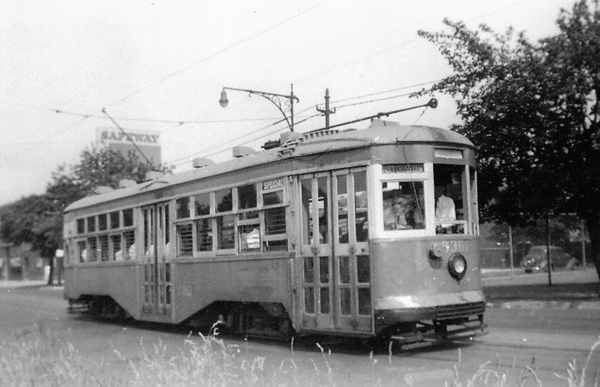 B&QT Peter Witt 8361 @ E92nd St. & Church
B&QT Peter Witt 8361 @ E92nd St. & Church
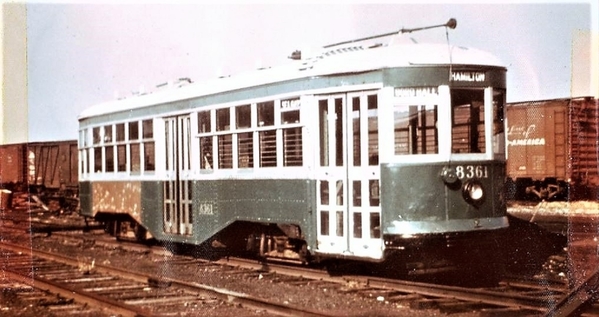 B&QT Peter Witt 8361 in St. George
B&QT Peter Witt 8361 in St. George
B&QT 2538 and 8034, Flatland Barn, Utica & N Aves
Trolley Cars @ Home of Brooklyn Dodgers
Attachments
Attachments
Attachments
Charlotte North Carolina Trolley on Elizabeth Avenue. Thanks LI Steamer!
Pittsburgh, Pa. Thanks Jim Pastorius!
Orell Interurban on Dixie Highway, Louisville
Attachments
The third one from the top with WACs recruiting is from Pittsburgh, the Oakland area home of Pitt & Carnegie-Mellon U. The recruiting office is in the "Jenkins Arcade' in the downtown section.
The second photo is the Charlotte North Carolina Trolley on Elizabeth Avenue.
Attachments
Trolley cars & interurbans in the "A" States.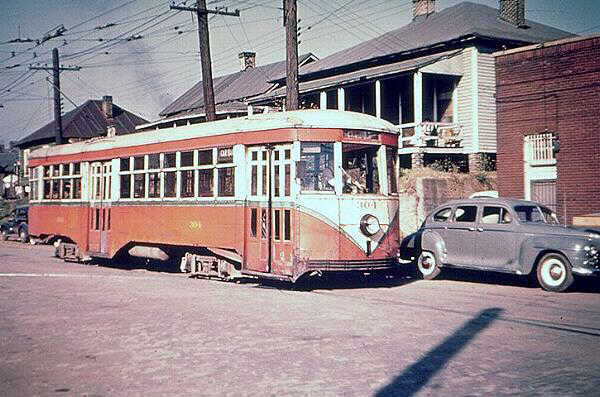
Birmingham, Alabama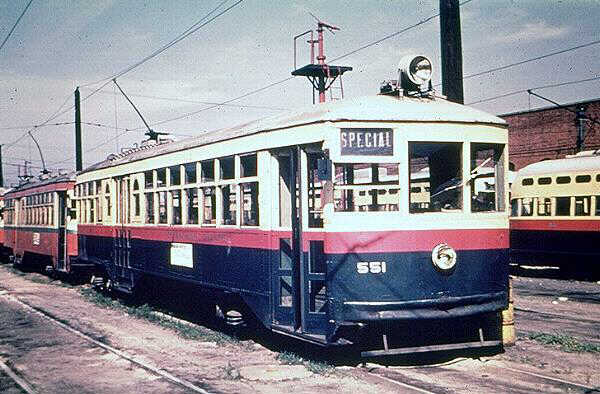 Birmingham, Alabama
Birmingham, Alabama
Thanks to Mitchell, this car actually of Fort Smith, Arkansas
Fort Smith Traction, Light & Power Co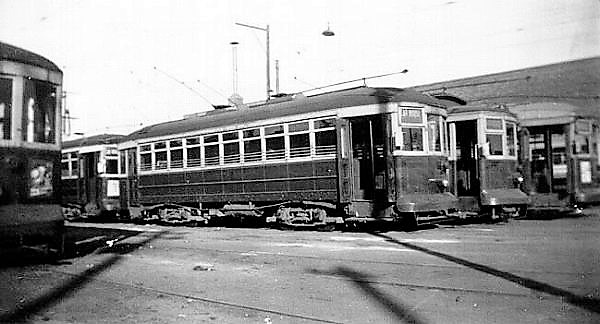 Little Rock Capital Transportation
Little Rock Capital Transportation
Little Rock Capital Transportation
Arkansas
Attachments
Bobby Ogage posted:
Interesting note about these Pullman PCCs: Some of 'em fetched up in Philadelphia via Toronto after the 1975 Woodland Carbarn fire wiped out about half of the SEPTA PCC fleet. Thirty years and three transit companies after they were built, they STILL had the holes in the seat backs for "Jim Crow" signs...
This particular car did not wind up in Philly, but lived out its days as Toronto Transportation Commission 4717, unless I'm mistaken.
Actually, also Fort Smith. ![]() https://www.fstm.org/
https://www.fstm.org/
Mitch
Trolley cars and interurbans from Canada and the "C" States.

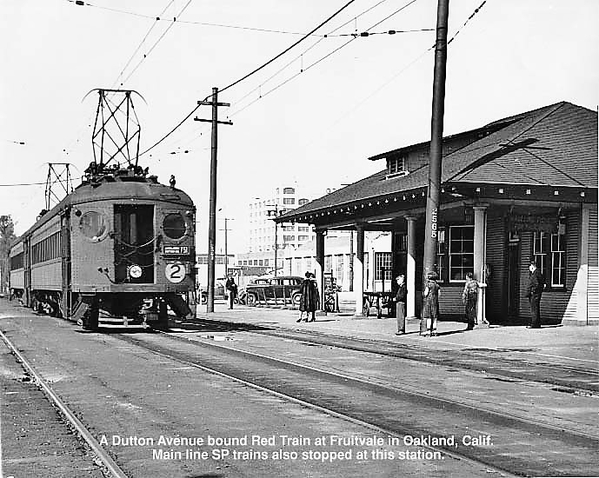
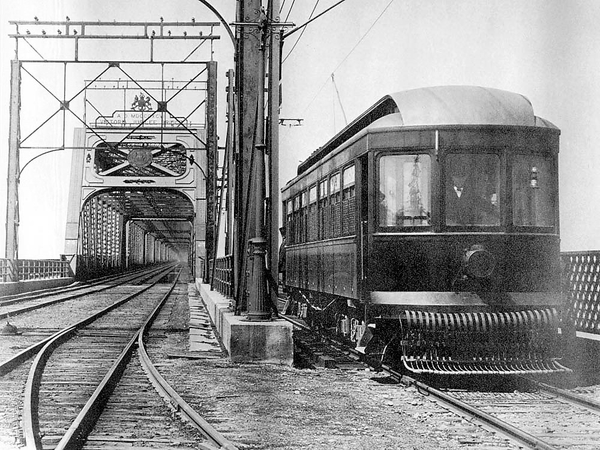 1st Montreal & Southern Counties tram arrives in Saint-Lambert via the Victoria Bridge
1st Montreal & Southern Counties tram arrives in Saint-Lambert via the Victoria Bridge
Mitchell is sharp and corrects me again. This car is in Pittsburgh, PA, and not in Toronto as I originally posted.
Colorado_Springs_&_Interurban_Railroad
Denver and Intermountain .02 @ Interurban Loop
1st Electric Car of Norwalk, Connecticut
14 Bench Open Car on Smith Cove Trestle In Waterford, Connecticut
Attachments
More cars from "C" states.
Los Angeles
Denver & Intermountain
Denver & Intermountain
Denver & Interurban M151
Denver Tramways
Denver
South Coventry, Connecticut
Attachments
Trolley cars & interurbans from California.
Pacific Electric
Pacific Electric
Pacific Electric
Pacific Electric
Pacific Electric
Pacific Electric
Sacramento Northern
San Diego Electric Rapid Transit. In lieu of a trolley pole, a cable with a gizmo at the wire was used to power the car.
San Diego Electric Ry
????????
Attachments
Speedrail wreck of 9-2-50 in Milwaukee. An NMRA fan trip on Labor Day of 1950 lead to 10 deaths and many injuries. The resulting claims and loss of ridership put the company in a downward spiral. All service ended on June 30, 1951.
Lightweight Articulateds 39 & 40, were running behind schedule towards Milwaukee. Heavyweights 1192-1193 were running out of Milwaukee. Around 9:45 a.m. the trains collided just south of National Ave. in Greenfield, approximately where the on ramp for I-894 from National Ave. is today. The impact resulted in the lead Hheavyweight 1192 telescoping into leading Car 39 and splitting it apart for 2/3rds of its length.
Attachments
Regarding the Speedrail NMRA Special wreck, as can be seen in the 2nd photo, none of the cars left the track in the accident. So it appears that Speedrail moved 39 & 40 off of the track to clear the line.
Trolley & interurban cars from Delaware.
Delaware Electric #3
Delaware Electric
Jackson & Sharp factory was situated in Wilmington, Delaware.
Wilmington City Railway
Attachments
Gomaco Trolley Car Fabrication
Attachments

Interurban cars in Idaho.
Boise & Interurban Railway Co
Boise Valley Railway Co
Coeur D'Alene & Spokane Railroad
Coeur D'Alene & Spokane Railroad
Coeur D'Alene & Spokane Railroad
Coeur D'Alene & Spokane Railroad
Attachments
Trolley & interurban cars in Iowa.
Charles City Western
Charles City Western
Charles City Western
Charles City Western
Attachments
More trolley & interurban cars from Illinois.
Rockford & Interurban Railway
South Shore Line #1126
Attachments
Interurbans & a trolley car of Kansas.
Arkansas Valley Interurban Railway
Hutchinson & Northern
Bridge Collapse On The Kansas City, Leavenworth & Western
Attachments
Trolley cars in District of Columbia.
Anacostia & Potomac Railroad
Washington Railway & Electric Co. #404 @ Eckington Plow Pit
Washington Railway & Electric Co. #604
Washington Railway & Electric Co. #649
Attachments
Attachments
Attachments
Trolley cars of New York.
Albany_
New York City
Brooklyn & Queens Transit
????????
Brooklyn & Queens Transit
Attachments
Bobby nice shots of the B&QT peter Witts. Brooklyn;s fleet was quite large, about 525 cars , all but 25 were double enders. In Later years may were operated as single enders because more loops were added to the system. Only Philadelphia had a larger fleet of these cars.
Regarding the photo of the car under the el structure, I am thinking its the myrtle avenue El . The car number is 8439. Its in Board of transport colors but it looks like the Boards medallion emblem is not yet on the car.
LIRR Steamer,
Did the Myrtle Avenue street car go as far into Brooklyn as Jay Street where the El terminated?
More New York City & Long Island trolley cars.
Times Square 1908
???????????????//
Brooklyn Rapid Transit Co. #458 on 5th Ave. at 59th Street, Brooklyn 1910
Oops! Not a trolley car, but a doodle bug.
July 20th, 1937 Queens Boulevard between Union Turnpike and Van Wyck Boulevard in Kew Gardens while passing Maple Grove Cemetery. This was the last car to run on this line.
Manhattan Bridge 3 Cent Line
NY & Flushing Cars
FAIRVIEW AVENUE WHERE TROLLEYS ENTERED AND LEFT THE L.I.R.R.
Steinway Lines
Attachments
Bobby Ogage posted:LIRR Steamer,
Did the Myrtle Avenue street car go as far into Brooklyn as Jay Street where the El terminated?
Bobby
There was a Myrtle Avenue car that originated in Ridgewood and followed Myrtle Ave downtown and continued past to Redhook . The Crosstown Car entered Myrtle Avenue at Vanderbilt avenue but it may have been rerouted after the Myrtle avenue route from Ridgewood was discontinued. There was also a car that ran to Greenpoint that turned off Myrtle Avenue at Kent Avenue. These thee lines ran into the area of Bridge and jay street. They all went through a downtown area near what was Sand Street terminal but became known as Civic Center . The Graham avenue, Vanderbilt avenue and Flushing Avenue routes went to Civic center as well via Flushing Ave however,
Greenpoint line closed 1945, The Ridgewood line in 1949 and the Crosstown line closed in 1951. The Greenpoint car was not replaced by a bus but the other two routes were. The Myrtle avenue El ran to Bridge and jay Street for another 18 years to 1969.
Bobby Ogage posted:More New York City & Long Island trolley cars.
Times Square 1908
???????????????//
Brooklyn Rapid Transit Co. #458 on 5th Ave. at 59th Street, Brooklyn 1910
Oops! Not a trolley car, but a doodle bug.
July 20th, 1937 Queens Boulevard between Union Turnpike and Van Wyck Boulevard in Kew Gardens while passing Maple Grove Cemetery. This was the last car to run on this line.
Manhattan Bridge 3 Cent Line
NY & Flushing Cars
FAIRVIEW AVENUE WHERE TROLLEYS ENTERED AND LEFT THE L.I.R.R.
Steinway Lines
The open car with the Myrtle avenue sign is probably near the end of the route in Ridgewood it would seem.
The photo with the reference to the 3 cents lie is actually a B&QT car on the Williamsburg Bridge, heading to the B&QT;s underground trolley terminal at Delancey and Essex Streets in Manhattan.
Attachments
Attachments
Attachments
More trolley & interurban cars from Texas.
McKinney Avenue
Brill #122 on McKinney Avenue
Interurban & Street Car In Dallas Had An Oops
Texas Electric Rwy
Attachments
Trolley & interurban cars of New York.
Car at Coney Island. I had my 1st roller coaster ride on the Cyclone.
Jamestown Street Railway
Attachments
Bobby Ogage posted:
Nice pics Bobby. The First pic is on Surf Avenue in Coney Island. The car was the last two man car built for the B&QT. They came before the 8000 series Peter Witts. Its in the pre board of transport colors , thinking late 1930s. And the Cyclone in the background. The trolley is gone more than 70 years but the Cyclone still runs in Coney Island. Believe it is the oldest wood coaster in the country.
The New York & Long Island Traction Company NY&LIT had 4 principal lines. The original line ran from Brooklyn along Rockaway Boulevard, North Conduit Avenue, Atlantic Avenue and Merrick Road serving Rosedale, Valley Stream, Lynbrook, Rockville Center, Oceanside, Baldwin and Freeport. Going north out of Freeport, a line served Roosevelt, Hempstead and Garden City. Departing Jamaica Avenue in Queens County, a line went along Hempstead Turnpike to the Belmont Race Track, Elmont, Franklin Square, West Hempstead and joined the northerly line out of Freeport in Hempstead. The Jamaica Avenue line from Queens County also continued past the junction with Hempstead Turnpike east onto Jericho Turnpike serving Queens Village, Bellerose, Floral Park, New Hyde Park and Mineola. In Mineola, the line went south over the LIRR and connected with the northern line out of Freeport in Garden City. By 1926, the company was out of business.
Although this car belonged to Brooklyn Rapid Transit, it saw service on the New York & Long Island Traction lines.
Brooklyn bound Car 35 went off of the track on Front Street, Hempstead
Trestle over the Long Island Railroad by the West Hempstead LIRR Railroad Station
Crossing LIRR @ Franklin Avenue in Garden City
Car 9 On Franklin Avenue, Garden City
Attachments
LIRR Steamer posted:Bobby Ogage posted:Nice pics Bobby. The First pic is on Surf Avenue in Coney Island. The car was the last two man car built for the B&QT. They came before the 8000 series Peter Witts. Its in the pre board of transport colors , thinking late 1930s. And the Cyclone in the background. The trolley is gone more than 70 years but the Cyclone still runs in Coney Island. Believe it is the oldest wood coaster in the country.
More like tied for 9th oldest as of 2015. I don't know the status of a few of the older ones, but at least some are still running. The Cyclone was built in 1927. Leap the Dips in Altoona, PA was built in 1904. Heck, in the year 1927, Kennywood Park was building its 8th coaster, 3 of which are still in operation. Cyclone is a youngin. ![]()
Bobby Ogage posted:Trolley and interurban cars of New Jersey.
I am not so sure that the photo above is Newark. It may be Detroit. Comments please.
Burlington & Mt Holly
Burlington & Mt Holly
West Jersey & Seashore Railroad
It is Detroit, That's the Hudson's Department store in the middle left, a Detroit icon.
Greg Nagy posted:LIRR Steamer posted:Bobby Ogage posted:Nice pics Bobby. The First pic is on Surf Avenue in Coney Island. The car was the last two man car built for the B&QT. They came before the 8000 series Peter Witts. Its in the pre board of transport colors , thinking late 1930s. And the Cyclone in the background. The trolley is gone more than 70 years but the Cyclone still runs in Coney Island. Believe it is the oldest wood coaster in the country.
More like tied for 9th oldest as of 2015. I don't know the status of a few of the older ones, but at least some are still running. The Cyclone was built in 1927. Leap the Dips in Altoona, PA was built in 1904. Heck, in the year 1927, Kennywood Park was building its 8th coaster, 3 of which are still in operation. Cyclone is a youngin.
The Cyclone is only wooden in the track area. The main structure is steel. That's why it's been around for quite a while. The first drop is a beauty and memorable. Love riding it.
Attachments
More Peter-Witt Brooklyn & Queens Transit trolley cars of Long Island, NY.
Brooklyn Trolley #8123, Ocean Ave. Line, Rogers Ave & Farragut St., 1947.
Brooklyn Trolley #8104 at Grand Army Plaza, 1949
Brooklyn Trolley #8423, Flushing-Ridgewood Line, Maspeth Depot, 1949
Norton Point Trolley #8002 at Stillwell Ave Terminal, 1948
Brooklyn Trolley #8352, Rockaway Line, Canarsie Shuttle, 1950
Brooklyn Trolley #8111, Ralph-Rockaway Line, Williamsbridge Plaza, 1949
Brooklyn Trolley #8346, Lorimer St. Line, Coney Island Ave., November 1947
Trolley #8285, Fifth Ave. Line, Atlantic and Flatbush Aves., March 19, 1948
Trolley #8005 at Tompkins and Lexington Avenues, under El, August 22, 1947
Attachments
Bobby Ogage posted:More Peter-Witt Brooklyn & Queens Transit trolley cars of Long Island, NY.
Brooklyn Trolley #8123, Ocean Ave. Line, Rogers Ave & Farragut St., 1947.
Brooklyn Trolley #8104 at Grand Army Plaza, 1949
Brooklyn Trolley #8423, Flushing-Ridgewood Line, Maspeth Depot, 1949
Norton Point Trolley #8002 at Stillwell Ave Terminal, 1948
Brooklyn Trolley #8352, Rockaway Line, Canarsie Shuttle, 1950
Brooklyn Trolley #8111, Ralph-Rockaway Line, Williamsbridge Plaza, 1949
Brooklyn Trolley #8346, Lorimer St. Line, Coney Island Ave., November 1947
Trolley #8285, Fifth Ave. Line, Atlantic and Flatbush Aves., March 19, 1948
Trolley #8005 at Tompkins and Lexington Avenues, under El, August 22, 1947
nice photos Bobby. These were all taken near the time that most of these lines were replaced by busses or trolley busses. The city did not repaint many of the Peter witts into the Green colors.
The second photo I am thinking might be a Flatbush Avenue car. Grand Army Plaza was an interesting place like some of the plazas in paris or Rome.
The third photo could be a Grand Street car beginning its run into Williamsburg. In the photo you can see the twin trolley wires for the Flushing Avenue Trolley busses. which would have been pretty new at this time.
The Canarsie shuttle ran down to the Canarsie pier when the original rapid transit line was cut back to this location. I remember riding that one.
Next photo with the Ralph Rockaway car has just left Bridge Plaza and will soon enter Broadway under the Jaamaica El to proceed eastward
the last photo Tompkins avenue . These cars were replaced by Trolley busses shorthly afte rthis pjoto,
More New York trolley cars.
Billionaire developer John Catsimatidis wants to construct a San Francisco-style trolley along a stretch of the Coney Island waterfront
Putnam_&_Westchester
Attachments
Trolley cars of New Hampshire.
Manchester Street Railway #120
Manchester Street Railway #120
Manchester Street Railway #126
Manchester Street Railway #142
Manchester Street Railway #206
Manchester Street Railway #206
Nashua Street Railway
The Square, Salem Depot
Uncanoonic Incline Railway
Attachments
Trolley & interurban cars of California.
Fairfax to San Rafeal Trolley Proposal
MCL No. 5010 - Coming out of subway at Toluca Yard
Pacific Electric Graveyard
Petaluma & Santa Rosa Railway
Attachments
More trolley and interurban cars from Canada. It is interesting that many trolley and interurban cars from from the USA wound up in Canada. 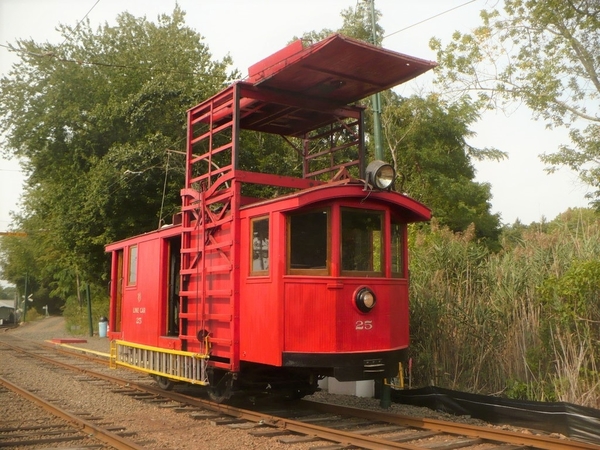
Built in 1923 by the Ottawa Car Company and operated on the Ottawa Electric Railways in Ontario, Canada. It can regularly be found in-service on the Branford Electric Railway
Ex-Toronto Civic Railway Cars on YONGE streetcar line, Toronto
Montreal & Southern Counties
Niagara St. Catharines and Toronto Express Car
NS&T 63 southbound to Port Colborne. Note that the bridge rotates.
Attachments
Bobby Ogage posted:More trolley and interurban cars from Canada. It is interesting that many trolley and interurban cars from from the USA wound up in Canada.
Thanks for remembering about us up here.

![]()
During my high school years I was a member at the Western Railway Museum (Bay Area Electric Railway Museum) at Rio Vista Junction. We had a Petaluma and Santa Rosa interurban that was restored by a pair of brothers, the Holmes brothers. It was a very nice piece of equipment. Same tan with red trim as the one pictured above.

Attachments
Don't know the ID of the car at the moment, but, the writing at the bottom of the photo says, Ohio Railway Museum, Worthington, Ohio. I did a search of images and found it's Cincinnati & Lake Erie car 119.
Rusty
Attachments
Diverging Clear posted:Don't know the ID of the car at the moment, but, the writing at the bottom of the photo says, Ohio Railway Museum, Worthington, Ohio. I did a search of images and found it's Cincinnati & Lake Erie car 119.
Rusty
I did the same while Rusty was doing his lookup. Here's the link to the roster: http://www.columbusrailroads.c...s/orm/orm-roster.pdf
It's from 1915 and was acquired in 1953. In addition to Cincinnati and Lake Erie, the car ran on the Cedar Rapids and Iowa ? City (can't read my own handwriting :-) Railway.
Tomlinson Run Railway
P.S. Is that a phone box on the pole in the background? Looks like the old box style.
Attachments
Attachments
Attachments
Attachments
Rochester, Syracuse & Eastern plus Rochester Subway in New York.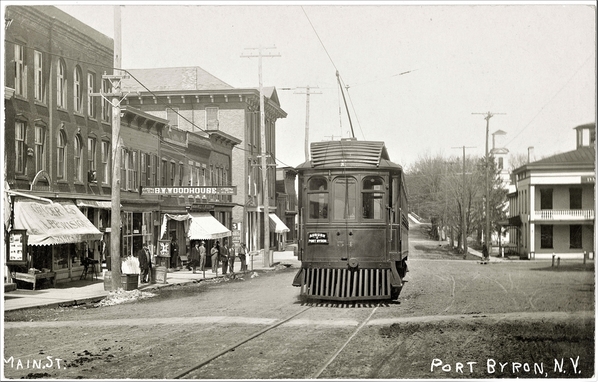 Rochester, Syracuse & Eastern In Byron, NY
Rochester, Syracuse & Eastern In Byron, NY
Rochester Subway Cars 60 & 66
Rochester, Syracuse & Eastern 1910_Niles Car
Attachments
Attachments
Trolley & interurban cars in Wisconsin.
Kenosha operates 6 street cars painted to represent various lines of the past, including Toronto, Cincinnati, Pittsburgh, Chicago, & Johnstown, PA
Milwaukee Electric Railway & Light Co. was the largest electric railway Wisconsin
Attachments
Valley Rwys #18

Delancey Street Terminal in New York City. There is a plan afoot to make this abandoned underground trolley terminal into a park.
Delancey Street Looking East In 1919 At The Williamsburg Bridge
Delancey Street Looking West In 1920
Delancey Street Looking West
There are 8 trolley car loops in the underground terminal.
Looking West At Conjested Delancey Street In 1923
Loop 1
There are trolley cars in the background
The trolley cars are all gone in this 1960s photo
Delancy Street Subway Station is in the background.
Attachments
From the MoW Dept. A Canadian bonding car. Check out the chunky motor/generator set (?) and the state-of-the art rheostat and knife switches on the front beam. Looks like there might be a trolley pole out of sight.
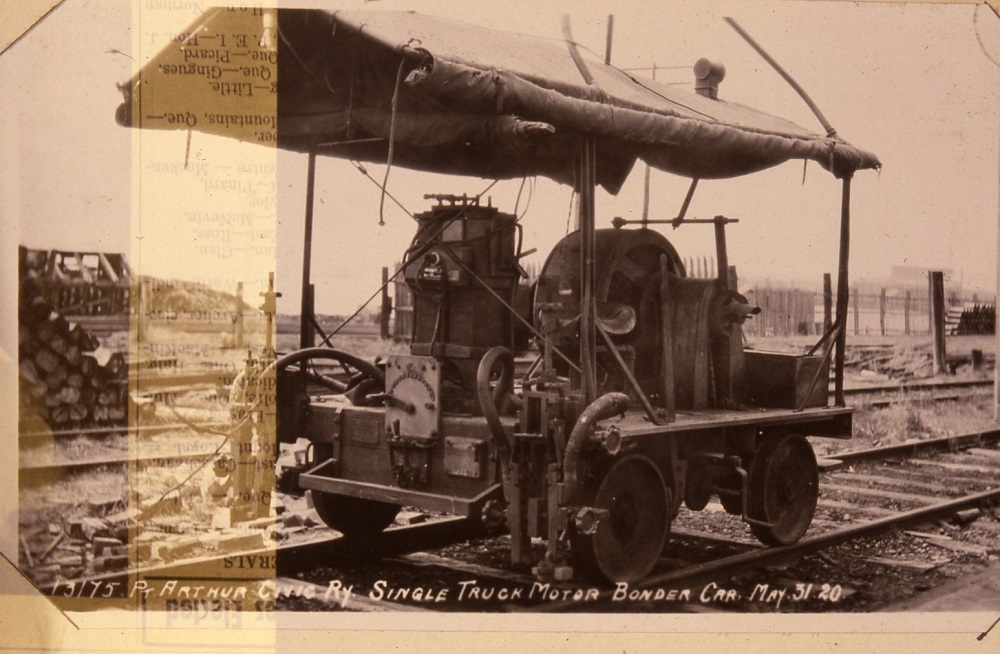
Attachments
Some trolley & interurban cars of California.
California Red Car Train
The gentleman with his back to the photographer is Harre Demoro. Harre was a noted author, historian, and newspaper reporter. He was an excellent writer who's histories are so enjoyable to read.
Los Angeles Railway
Napa Valley Interurban
Petaluma & Santa Rosa Railroad
Petaluma and Santa Rosa Railway car #63
San Diego
Los Angeles Railway
Attachments
Thumbnails are good but the large photos say "Image Not Found"
In your second photo, a picture of Key System 271 at the Western Railway Msueum, the gentleman in the photo with his back to the photographer is Harre Demoro. Harre was a noted author, historian, and newspaper reporter. He was an excellent writer who's histories were so enjoyable to read. Harre was a good friend who died way too young.
More trolley cars from California.
East Bay Transit, Oakland
East Bay Transit, Oakland
East Bay Transit, Oakland
Fresno Heritage Operation
Fresno Heritage Operation
Fresno Heritage Operation
Fresno Traction
Attachments
David Johnston posted:In your second photo, a picture of Key System 271 at the Western Railway Msueum, the gentleman in the photo with his back to the photographer is Harre Demoro. Harre was a noted author, historian, and newspaper reporter. He was an excellent writer who's histories were so enjoyable to read. Harre was a good friend who died way too young.
Thanks for the information David. I updated the photo to make note of Harre Demoro.
Attachments
Trolley cars of Rhode ISland.
Suburban Railway operated in Providence
United Electric Railway 2172
United Electric Railway
Attachments

Trolley car mishaps.
Boston Trolley Crushes Car 1932
Boston Trolley Goes Off Open Draw Bridge 1916
Boston Trolley Pins Car 1935
SEPTA 2014
Trolley & Coal Truck 1910
Trolley & Train In Boca Raton, Florida 1942
Trolley Jumps Track & Clogs Central Vermont Railroad 1927
Trolley Jumps Track Into Desplaines River Near Chicago 1926
Attachments
This post is for the Long Islanders and other New Yorkers who lurk here. It features the New York & North Shore Traction Company. This company ran interurban type cars along Northern Boulevard from Flushing with branches to Whitestone, Port Washington, Mineola and Hicksville, circa 1902 to 1920.
The cars were built by Stephenson and Kuhlman. I am in the process of modifying an MTH Brill to mimic these cars. What I know about the New York & North Shore Traction Company is principally from from Vincent F. Seyfried's book (below). Mr. Seyfried was my high school English teacher. If anyone has more information about the New York & North Shore, please reply to this post.
Cars 10 & 12 Ran On The Port Washington to Mineola Branches
Kuhlman's Photo of Car 32
NY&NST Car 4 at the Clock Tower in Roslyn. Car 4 is headed south to Mineola
NY&NST No 8 Flower Hill Ave, Pt Washington
NY&NST Car 26 @ Main St, Mineola
Typical Interior of NY&NST Cars - This Is Car 22
NY&NST Car 26 That Ran Along Northern Blvd Flushing to Bayside
NY&NST Car at Hicksville in 1916
NY&NST Car At The Roslyn LIRR Station In 1910
Attachments
Trolley cars of Massachusetts.
This 10-bench open was sold to the EH&A by the Brooklyn Rapid Transit Company in 1907
Amesbury carhouse on Clinton Street in 1900
Uphams Corner, Dorchester. 1930
Trolley car hitchhiker in Boston
Attachments
Bobby Ogage posted:Trolley car mishaps.
Boston Trolley Crushes Car 1932
Boston Trolley Goes Off Open Draw Bridge 1916
Boston Trolley Pins Car 1935
SEPTA 2014
Trolley & Coal Truck 1910
Trolley & Train In Boca Raton, Florida 1942
Trolley Jumps Track & Clogs Central Vermont Railroad 1927
Trolley Jumps Track Into Desplaines River Near Chicago 1926
I request more details about the the train/trolley accident shown in the above photo marked Boca Raton, Florida 1942. I’ve been in South Florida for over 72 years, and this is the first I have ever heard of trolleys in Boca Raton, plus the locomotive looks like it’s lettered for C&NW.
Bill in FtL
Bill,
Out of curiosity, I located this super depressing list of C&NW train wrecks:
http://www.cnwhs.org/articles/1361642286.pdf
Having just quickly skimmed the engine column for the number shown, and the details column for "trolley", I didn't find a good match. The two trolley accidents that I found involved a passenger train and an express, respectively. Clearly not this photo.
Maybe Bobby has more info.
Tomlinson Run Railroad
Passing TOMLINSONRUNRR,
The photo when enlarged is just a bit too blurry to definitely make out the roadname on the cab, it looks like 4 characters, starting with a “C” and maybe an ampersand in the second spot, from there I can’t really be sure (could it be C&EI?). In any event, I’m fairly certain Boca had no trolleys, and the only railroads through were FEC and SAL (three letters, not four). So, still wondering...
Thanks,
Bill in FtL
Definitely looks like it say C & N W
Bill Nielsen posted:
OK, other clues for you photo detectives. The box car reporting mark is MILW - the Milwaulkee Road, aka Chicago, Milwaulkee, St. Paul, and Pacific RR. The trolley is number 11 and the name on the marquee looks like it starts with a letter "P".
The building in the lower right foreground says "Wisconsin Ice and Coal".
I would think that engine would be pretty tracable, too -- whatever those letters are. Off to run an errand, so I can't explore further.
Tomlinson Run Railroad
I find these photos scattered about the internet, and I use their captions. I love it when you all put your detective hats on do some forensic work on these photos. Keep it going.
Trolley cars of West Virginia.
Bluefield & Hinton Electric Railway Car 1
Bluefield City Car 111 of Tri City Traction Co.
Camden Interstate 11
Attachments
Trolley and interurban cars of Washington.
Pacific Northwest Traction wreck at Rocky Point in 1929. I did not find any explanation of the cause of this wreck, but it was at the end of passenger service. Perhaps a broken rail was the culprit?
Puget Sound Electric Railway. This is an exceptional photo ion my opinion.
This picture is a repeat posting of Seattle and the Plaza Hotel. It looks like a dirty water hot dog stand in the lower right corner. The lack of automobiles suggests this picture is circa 1900.
Blue is a rare color for trolley and interurban cars. This photo of Seattle-Everett Interurban Railway 55 appears to be in a museum, but I do not know which museum.
Here is another look at a Seattle-Everett Interurban Railway car. Note the dual headlights, and the steam engine type bell.
The car has a destination sign reading Everett - Seattle. So in which of the cities is the car situated in this photo?
A sight-seeing car in Seattle.
This photo was taken in Tacoma.
This is a local car, and I opine that it is headed into Tacoma. Note the bell and dual headlights again.
Attachments

Note the light over the center window. What would this light be called, classification or marker? I am guessing that it has a red lens to the front and white lenses to each side.
Sintra-Atlantico
The last trolley car line to operate in New York State was the Queensboro Bridge Line connecting Manhattan with Queensboro Plaza on Long Island. Enjoy this video which some snap shots not commonly seen.
https://youtu.be/xxbmR14UPF8
Attachments
Really enjoy these posts--its not just the trolleys but the window into a not too distant past that we've forgotten.
Thanks guys for finding and posting.
Here is a video of the Lake Shore Electric Ry in Ohio.
https://video.search.yahoo.com...4282&action=view

Bobby Ogage posted:Trolley and interurban cars of Washington.
Pacific Northwest Traction wreck at Rocky Point in 1929. I did not find any explanation of the cause of this wreck, but it was at the end of passenger service. Perhaps a broken rail was the culprit?
Puget Sound Electric Railway. This is an exceptional photo ion my opinion.
This picture is a repeat posting of Seattle and the Plaza Hotel. It looks like adirty water hot dog stand in the lower right corner. The lack of automobiles suggests this picture is circa 1900.
Blue is a rare color for trolley and interurban cars. This photo of Seattle-Everett Interurban Railway 55 appears to be in a museum, but I do not know which museum.
Here is another look at a Seattle-Everett Interurban Railway car. Note the dual headlights, and the steam engine type bell.
The car has a destination sign reading Everett - Seattle. So in which of the cities is the car situated in this photo?
A sight-seeing car in Seattle.
This photo was taken in Tacoma.
This is a local car, and I opine that it is headed into Tacoma. Note the bell and dual headlights again.
But those hot dogs were so good !
Besides me, who remembers knockwurst on rye with a whole pickle from the big barrel for 35 cents in Rosie's Bar on Jay Street in Brooklyn Borough Hall, just around the corner from the end of Myrtle Avenue?
Attachments

Attachments
mwb posted:
What a great picture ! My interest in trolleys has grown. I've been reading a bit more about them, as they were in and around Philly, this past year or so. I would love to have a time machine.

I suspect that the trolley car in the above photo is eastbound towards the Delaware Water Gap on Rt 611.
Today's Route 611 was once where the Stroudsburg, Water Gap & Portland Railway, a trolley line that provided a scenic ride from Stroudsburg, PA ran through the Delaware Water Gap and ended just north of the Lehigh & New England's tracks in Portland. This trolley line was controlled by the Lehigh Valley Traction Company (better know for its Liberty Bell Limited), which had dreams of providing service all the way from the 69th Street Terminal at the edge of Philadelphia directly to the resorts in the Delaware Water Gap. However the Lehigh & New England prevented the line from crossing its tracks, thus requiring passengers and their bags to get off of one car, walk a block across the L&NE and then resume their journey. The combination of the general decline in trolley car line fortunes, the transfer in Portland, and the superior service offered by the PRR from Philadelphia via the Belvidere-Delaware Line and trackage rights on the Delaware, Lackawanna & Western to Stroudsburg doomed the line.
In 1926 the DL&W cancelled the lease of land that allowed the SWG&P to operate through the Gap. By now renamed the Stroudsburg Traction Company, all service ended in 1928.
Attachments
Niagara Gorge Route Trolley Line
In 1891, the Queen Victoria Parks Commissioners granted the Niagara Falls Park and River Railway a charter to operate an electric railway through Queen Victoria Park and Parks Commission land from Chippewa to Queenston. This single track Canadian railway was opened on May 24, 1893 and was double-tracked in 1894.
A similar double track railway line was constructed by the Niagara Falls and Lewiston Electric Railway on the American side of the River in the early 1890's. This line started at Niagara Falls, New York, gradually descended to the water's edge, proceeded along the Whirlpool and Devil's Hole to Lewiston, where it returned to the top of the gorge.
In 1902 the two trolley lines were purchased by the International Railway Company and combined into the "Great Gorge Route." The Route began at the Gorge Terminal on Falls Avenue in Niagara Falls, NY, where passengers paid a fee of $1.00 and boarded the electric trolleys. The trolleys left the station, crossed the Falls View Bridge into Canada, and proceeded along the top of the Gorge to Queenston, where they met incoming steamships from Toronto. Next the trolley cars crossed the Queenston-Lewiston Suspension Bridge into the United States, descended into the Gorge and followed the route of the original American railway.
The Great Gorge Route had 38 trolley cars, most of which were open cars that ran from May to September. Beginning in 1901, the International Railway Company began offering nightly trips with several powerful spotlights illuminating the Gorge. The Great Gorge Route remained a very popular tourist attraction for nearly 40 years.
The Niagara Gorge Route proved to be dangerous because of rock falls, derailments, and washouts of the tracks on the American side of the Route. On July 15, 1915, a trolley left the rails, killing 13 tourists. In 1917, a trolley toppled into the Whirlpool and twelve more passengers were drowned. A conductor was killed by falling rocks, and on another occasion, refuse was accidentally dumped from a garbage chute onto an open trolley car. In spite of these incidents, however, the attraction remained open.
With the arrival of the Great Depression, the Great Gorge Route faced a declining number of passengers. Poor business, coupled with high maintenance costs and increasingly hazardous rock falls made the Route too costly and dangerous to continue. Trips along the Great Gorge Route ceased in 1932. The railway on the Canadian was dismantled by the Niagara Parks Commission. Trolleys continued to operate in the United States until a rock fall in 1935 buried the tracks under 5000 tons of rock. At the time of its closure, over 13,000,000 passengers had ridden on the Great Gorge Route and had experienced the magnificent view of the whirlpool and rapids.
Search Light Car
Niagara Falls Park & River Railway
Attachments
The Oley Valley Railroad of Pennsylvania
The Oley Valley Railroad Company built a trolley car route connecting Reading, Pleasantville and Boyertown in Pennsylvania that met another electric trolley line in Stony Creek which came from Reading. The Oley Valley Railroad had 22.5 miles of track, and it was built at a cost of $500,000. The trolley ran through the village of Pleasantville near the covered bridge and what is now Tollgate Road. Edna Yoder Dierolf of the Oley Yoder Heritage Association, remembers riding the Oley Valley trolley from Washington Street in Boyertown, around the Horseshoe Curves and into Pleasantville. The tracks were removed in the 1930's about the time the sewers were installed in Boyertown.
Builder's Photo of Oley Valley Railway Car #1
Horseshoe Curve On The Oley Valley Near Shanesville
Attachments
For those of us who were born at the twilight of steam, late '40s, we were certainly born too late for almost anything to do with trolleys and interurbans. Until I started doing some research into trolleys, last year, I wasn't aware that most of the lines were gone by the great depression, and with the exception of city lines, almost all trolley lines in the rural and suburban areas were defunct by 1950.
Thanks to those who model trolley lines, we have an idea of what was around, back in the day. Just as those of us who model railroads of days gone by, provide a glimpse of what was.
Neversink Mountain Railroad of Pennsylvania
The Neversink Mountain Railroad commenced operating on June 30,1890. It was the third electric railroad in the United States, and the first electric railroad in America operated by water power. The water-power plant using Edison generators of 1000 HP was located at the “Big Dam” on the Schuylkill River, below Reading. The railroad was standard gauge, and cars ran on 56 lb. steel rails. Each trolley car had two motors of 25 HP each. However, more powerful motors were necessary to operate on the mountainous grades The Neversink Mountain Railroad ceased operations in 1917 due to financial difficulties.
Attachments
The Berlin Street Railway of New Hampshire
The Berlin Street Railway began operation between Berlin and Gorham, New Hampshire on July 24, 1902. This enterprise enabled residents of Gorham to work and shop in Berlin. In 1920 alone, the railway transported over 1.6 million passengers. Situated on the Androscoggin River, Berlin once was the center of the pulp and paper-making industry, and had a population over 20,000 people. The Berlin Street Railway ceased operations in 1938.
Attachments
Concord, Maynard and Hudson Street Railway Company of Massachusetts
Founded in 1899 with $50,000 in capital, and beginning service in 1901, this railway provided service between Maynard, Concord, Stow and Hudson on 20 miles of track. The initial cars where purchased from the Laconia Car Company. By 1911, the railway had absorbed the "Concord & Clinton Railway" as well as the "Lowell, Acton & Maynard Street Railway". As with many electric railways, it couldn’t compete with the automobile and so it went into receivership late in 1921. It never came out of receivership, terminating service in 1923.
CM&H 12 Meets Lexington & Boston Car11 in Monument Square, Concord. (December 1908)
CM&H 14 stops in Westvale
CM&H 18 Under Left Side of B&M RR Bridge
CM&H 208 At Hudson circa 1914 Waiting @ Wood Square
CM&H 210 derail ed by Ice February 2, 1915 at Hale's Corner in Gleasondale.
CM&H 210 derail ed by Ice February 2, 1915 at Hale's Corner in Gleasondale.
CM&H Birney On Acton Bridge
CM&H Car 215-1912
CM&H Car crosses Assabet River via the Great Road bridge, circa 1903.
CM&H Car In StowCM&H Car on Powdermill Road
CM&H Car on PowdermCM&H car, left front. Boston & Worcester car, left rear. Worcester Consolidated car, right front.ill Road
CM&H car, left front. Boston & Worcester car, left rear. Worcester Consolidated car, right front.
CM&H Cars in Wood Square, Hudson. (circa 1910)
CM&H Parlor Car Concord in Wood Square, Hudson, shortly after going into service in 1902
CM&H Parlor Car Concord
CM&H Plow 2 In Acton
CM&H Plow 2
CM&H Power plant In Maynard
CM&H Turnout on Powdermill Road
CM&H-Car 12
Attachments
Bobby Ogage posted:Niagara Gorge Route Trolley Line
In 1891, the Queen Victoria Parks Commissioners granted the Niagara Falls Park and River Railway a charter to operate an electric railway through Queen Victoria Park and Parks Commission land from Chippewa to Queenston. This single track Canadian railway was opened on May 24, 1893 and was double-tracked in 1894.
A similar double track railway line was constructed by the Niagara Falls and Lewiston Electric Railway on the American side of the River in the early 1890's. This line started at Niagara Falls, New York, gradually descended to the water's edge, proceeded along the Whirlpool and Devil's Hole to Lewiston, where it returned to the top of the gorge.
In 1902 the two trolley lines were purchased by the International Railway Company and combined into the "Great Gorge Route." The Route began at the Gorge Terminal on Falls Avenue in Niagara Falls, NY, where passengers paid a fee of $1.00 and boarded the electric trolleys. The trolleys left the station, crossed the Falls View Bridge into Canada, and proceeded along the top of the Gorge to Queenston, where they met incoming steamships from Toronto. Next the trolley cars crossed the Queenston-Lewiston Suspension Bridge into the United States, descended into the Gorge and followed the route of the original American railway.
The Great Gorge Route had 38 trolley cars, most of which were open cars that ran from May to September. Beginning in 1901, the International Railway Company began offering nightly trips with several powerful spotlights illuminating the Gorge. The Great Gorge Route remained a very popular tourist attraction for nearly 40 years.
The Niagara Gorge Route proved to be dangerous because of rock falls, derailments, and washouts of the tracks on the American side of the Route. On July 15, 1915, a trolley left the rails, killing 13 tourists. In 1917, a trolley toppled into the Whirlpool and twelve more passengers were drowned. A conductor was killed by falling rocks, and on another occasion, refuse was accidentally dumped from a garbage chute onto an open trolley car. In spite of these incidents, however, the attraction remained open.
With the arrival of the Great Depression, the Great Gorge Route faced a declining number of passengers. Poor business, coupled with high maintenance costs and increasingly hazardous rock falls made the Route too costly and dangerous to continue. Trips along the Great Gorge Route ceased in 1932. The railway on the Canadian was dismantled by the Niagara Parks Commission. Trolleys continued to operate in the United States until a rock fall in 1935 buried the tracks under 5000 tons of rock. At the time of its closure, over 13,000,000 passengers had ridden on the Great Gorge Route and had experienced the magnificent view of the whirlpool and rapids.
Search Light Car
Niagara Falls Park & River Railway
About 7 years ago on a visit to Niagara Falls, NY, I started walking downstream from the Rainbow Bridge. I found a walking path that dropped gently down the side of the gorge. It turned out to be the great gorge route trail. Not a lot of sign of the old line where I hiked, but certainly was a broached.
I ended up following a blazed path back up the hill before reaching the river.
Anyone have any pics of YONKERS RAILROAD CO. cars before THIRD AV. took over?Can't seem to find any....Yonkers NY....thanks...joe
Just noticed this topic actually has a few pix of O Gauge trolleys, so I thought I would post these two of my Lionel Polar Express trolley running on the bump-and-go route of the Portland Chapter TCA/TTOS Clubhouse layout during last year’s holiday open house.
Cheers!
Alan
Attachments


Attachments
TomlinsonRunRR posted:Bill Nielsen posted:OK, other clues for you photo detectives. The box car reporting mark is MILW - the Milwaulkee Road, aka Chicago, Milwaulkee, St. Paul, and Pacific RR. The trolley is number 11 and the name on the marquee looks like it starts with a letter "P".
The building in the lower right foreground says "Wisconsin Ice and Coal".
I would think that engine would be pretty tracable, too -- whatever those letters are. Off to run an errand, so I can't explore further.
Tomlinson Run Railroad
That is a Milwaukee 800 or 900 series street car on route 11. Route 11 went down Howell ave on Milwaukee's south side. This mishap was most likely on 1st and Becher st. There was a diaganal crossing through 1st street for Vilter manufacturing, it is possible the Milwaukee Road was switching it when this happened. There was another crossing further south at the Nordco plant, not sure if that was the location.
If this where I think it is, you are with in less than a mile of the Salt Pavilion. If so, the SL G&W ran with in 100 feet of this location. When the lake receded all the lake side business at this location closed up. The SLG&W continued to run excerrsion trains, but not out this far, pulled with their 44 tonner. The cars were equipment left over from their electric operation. Then that operation ended. This car was bought and located near the end of the railroad. It was to be used as offices for helicopter rides. It never happened and time and the salt finished this car off. It was finally cut up for scrap.
Although the weather is easy on old carbodies that survived Utah’s extensive electric rail system, preservation has not gone well. Most of Utah’s surviving electric cars are in California, and only a few survive there.
Attachments

Attachments

This appears to be an MTH Bump-n-Go car. I have a few of these cars, and they operate very well at low speed, so there are no fatalities when the car hits the bumper.
Attachments
Attachments
Attachments
Attachments
The Boston & Worcester Street Railway was chartered November 16, 1901, and the first section, from the Newton/Brookline line at Chestnut Hill to Framingham Junction, opened May 12, 1903. The remainder to Worcester opened June 30, 1903. The Framingham Union Street Railway, providing service within Framingham and intersecting the B&W at Framingham Junction and Framingham Center, was bought December 21, 1903. On February 1, 1904, the B&W bought the Framingham, Southboro and Marlborough Street Railway, which the B&W used between Framingham Center and Fayville.
Boston and Worcester Electric Companies was incorporated December 29, 1902 to serve as a holding company for these railroads.
Streetcars last operated on June 10, 1932.

Attachments
To finish-up about trolley railways in Worcester, Massachusetts, heree is the story of the Worcester Consolidated Street Ry.
Home to trolley manufacturer Osgood Bradley and Pullman Standard, Worcester played an important role in the history of passenger rail travel in the United States. The Worcester Consolidated Street Railway Company formed in 1907 when various local street railways where merged.
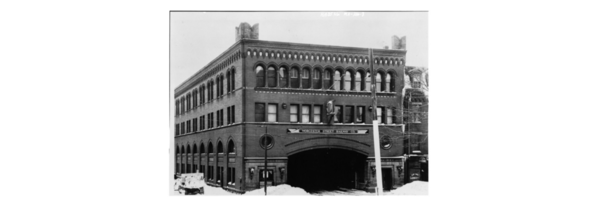 Worcester Consolidated Street Railway, Administration Building, 99-109 Main Street
Worcester Consolidated Street Railway, Administration Building, 99-109 Main Street
Worcester Consolidated Street Railway Car 557
Worcester Consolidated Street Ry Car @ Main & Franklin Streets, September-26-1945
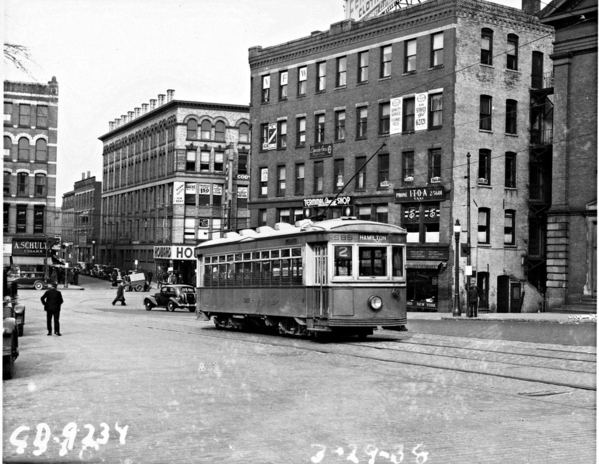 Worcester Consolidated Street Ry Trolley @Hamilton Street & Salem Square, March-29-1938
Worcester Consolidated Street Ry Trolley @Hamilton Street & Salem Square, March-29-1938
Attachments
The Beach Grove Traction Company of Indiana ran from downtown Indianapolis for 6 miles to Beech Grove, which is barely outside the Indianapolis city limits. It looped south of the business district and never made it to the Traction Terminal. It was built in 1911 and lasted until late 1937 with a 10 cent fare. It was finally closed when Indianapolis Railways cut off its power for non-payment. The original cars were former Winona Interurban Railway cars.
Beach Grove Traction 202 came from the Winona Interurban Ry.
Attachments
The story of the Beach Grove Traction Company above is a segway to this story of the Winona Railroad of Indiana because some of the Winona's trolley cars saw service on the Beach Grove.
The Winona Railroad of Indiana came into operation in 1902 when the Pennsylvania Railroad announced that the sidetrack on which a local train brought visitors to Winona from Warsaw would no longer operate. However by the summer of 1903, the directors of the Winona Christian Assembly had completed a trolley line between the two towns. The 18 open cars ran on an hourly schedule, sometimes carrying 15,000 passengers in one day for special events at Winona.
Goshen, Warsaw, Peru and towns along the way voted subsidies totaling $170,000 on condition that the Winona Interurban Railway build a high speed electric railway north and south connecting with other interurban systems that had spread all over Indiana. The north line to Goshen was started in 1905 with the first cars running by June of 1906. The south section was completed in 1907. A large powerhouse, costing $200,000 was constructed where the Gatke Corporation now stands. It supplied the additional power needed for the 70-mile system and also provided steam heat and electricity to all the public buildings at Winona and about 50 private homes in the town. Electricity as well as water were supplied by the railroad to the city of Warsaw.
Winona Railroad officials planned to expand with new lines east to Fort Wayne and west to Valparaiso, but these sections were never built. In July 1916 the mortgage on the Goshen-Warsaw line was foreclosed and the road went into receivership. However, a freight handling business inaugurated in 1924 aided the Winona considerably as it serviced nine steam railroads connecting with its 66-mile routes. When Goshen residents petitioned to have the tracks in their city removed, passenger service to the Winona railroad's northernmost point ceased in 1934. Then the only passenger service operated by the railroad was on the 3-mile run between Warsaw and Winona. The latest street car ran July 4, 1938.
Winona @ Milford
Winona Car 52
Winona Car 61 @ Warsaw
Winona Car 607
Winona Freight Car 32
Winona Line Car
Winona Windspliters
Model of Windspliter
Winona Windspliter
Attachments
This is the story of the Southern Iowa Railway.
The main line of the Southern Iowa Ry between Albia and Centerville was once a branch of the Wabash Railroad. In 1885 the Wabash went into bankruptcy and line was reorganized as the Albia & Centerville. In 1914, the line was absorbed by the Centerville Light and Traction Company, which operated the local street railway. The combination of the Albia & Centerville and the street railway became the Centerville, Albia & Southern Ry. In 1916, the Albia, Centerville & Southern Ry was purchased by Iowa Southern Utilities, and in 1941 the railway became the Southern Iowa Ry.
The Mystic branch line of the railway served several mines. Passenger service was not the main revenue generator, however the railway ran 6 trains a day to Albia and had hourly service to Mystic. Local street car service ended in 1925, and all passenger service ended in 1933. In 1944, the Mystic line was cut back to Appanoose where there was a connection with the Milwaukee Road. In 1948 the Albia line was cut back to Moravia where there was interchange with the Wabash.
In the 1950s, the railroad became home to the Iowa Chapter of National Railway Historical Society. Three interurban cars were acquired, plus a Chicago & Great Western caboose. In 1958 1.5 miles of the Mystic branch was abandoned. In 1966 the wire was removed from most of the Moravia line, but remained in Moravia where Box Motor 101 was stationed for switching. Also in 1966, the Chariton River trestle burned and the line was severed. The wire at Centerville was removed, and the Moravia operation was abandoned on July 18, 1967. The Moravia operation was the final electric operation.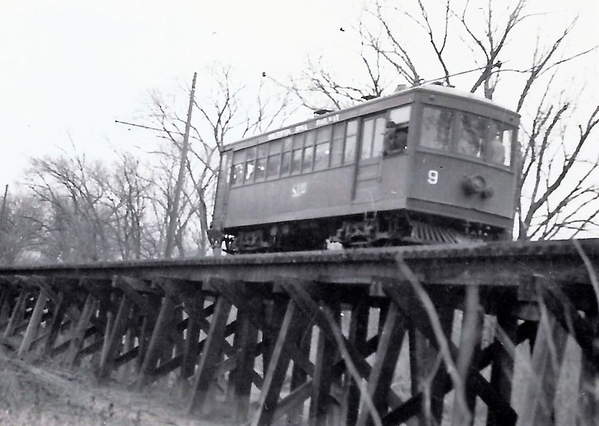
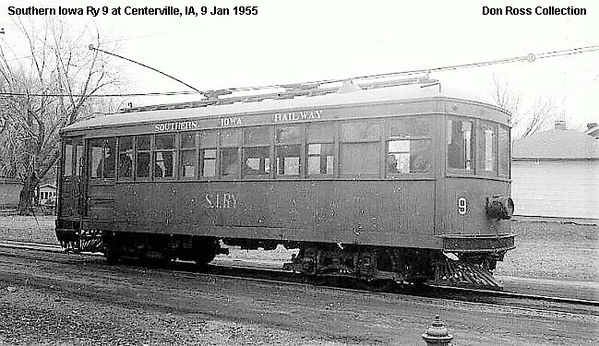
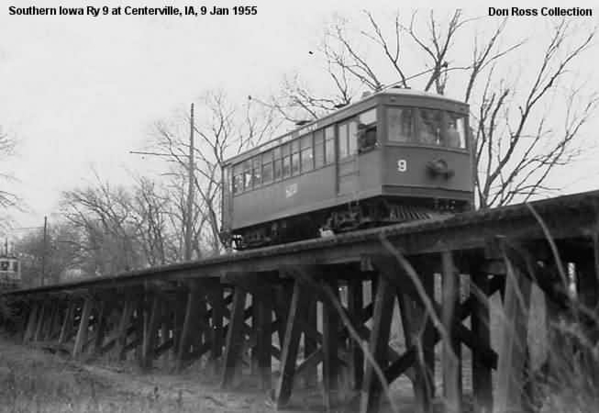
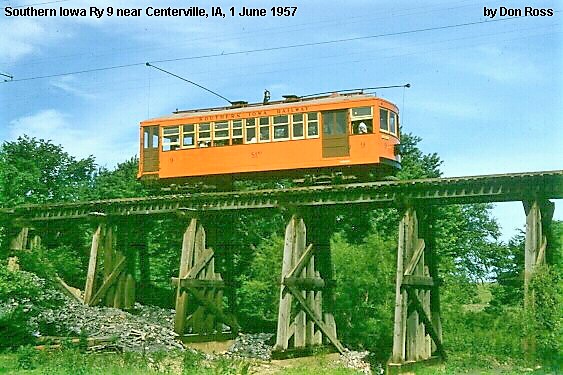
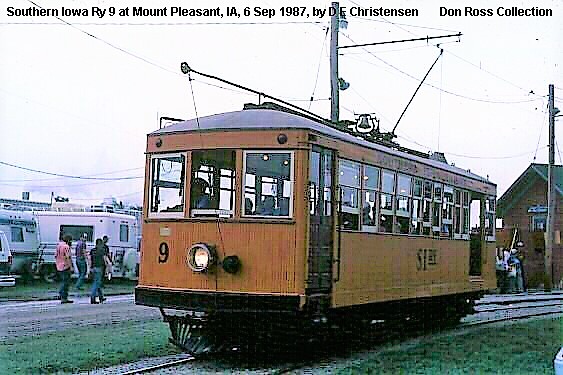

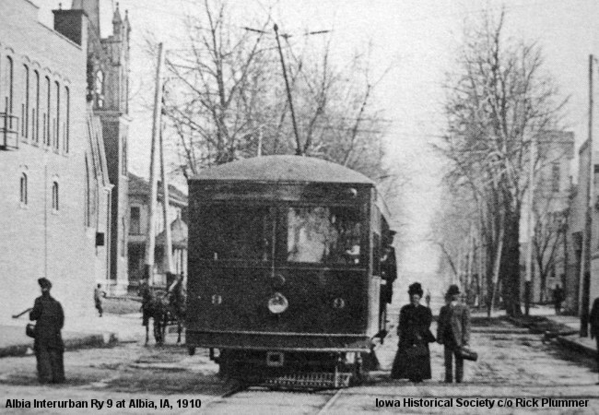
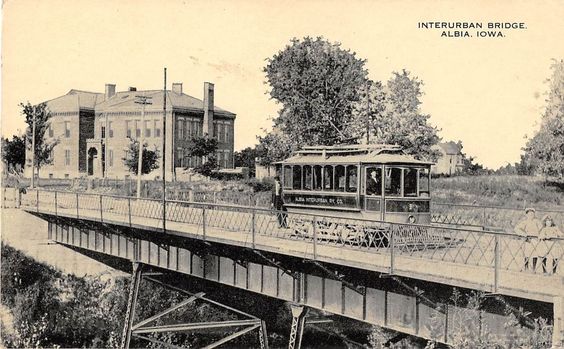
Attachments
I was born in Los Angeles in 1944 and we lived there tell the early 50's. The Palms area by Culver City was were our home was on Mentone Blvd. That's Lou Costello coming out our front door. Exteriors for the movie "Dance With Me Henry" were all shot at the house. It was Lou's and Bud's last film together. Pacific Electric ran a few blocks away. In the summer we took the PE to the beach or shopping. I loved taking the street cars. Freight also ran on the line through Palms. It was pulled by a Westinghouse electric. Maybe that's why I love electric railroads so much. This small bridge is on Motor Ave. One summer "our Palms gang" watched a movie being made with a SP steam engine on that bridge. We got to eat with the film crew at lunch and they even let me sit in the cab of the engine. By the way most of the early real "Our Gang" movies were filmed all around the Palms area. Fourth picture is my buddy and I. I'm the one on the fence. Last picture is the same fence from the alley side. Lou was about ready to go over it. They put a 2x4 on top so he wouldn't rip his pants. I remember my Mom not liking it when they started taking out the street cars. She always said the buses smelled bad and smoked. This all brings back wonderful memories. Don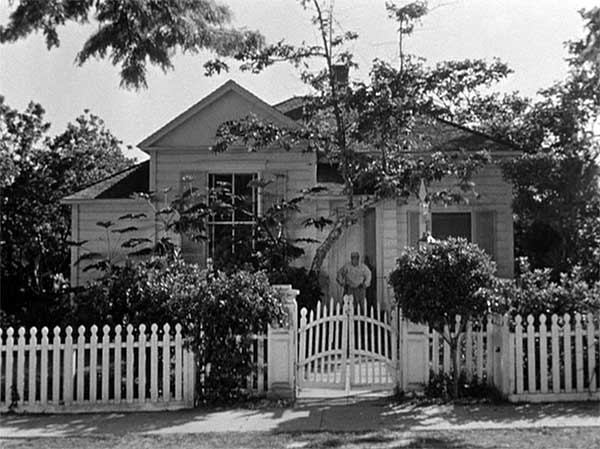
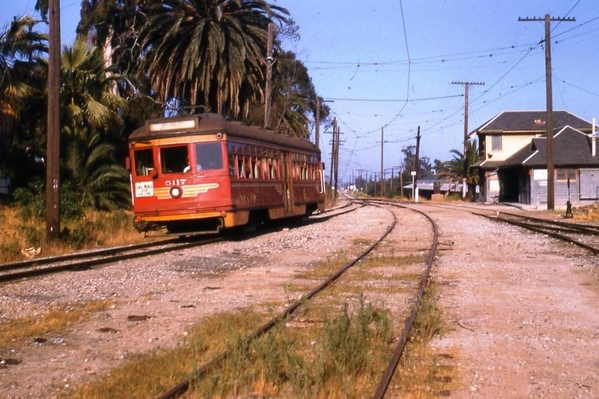
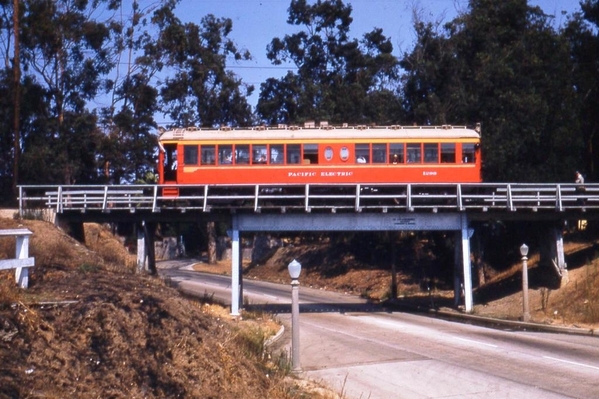

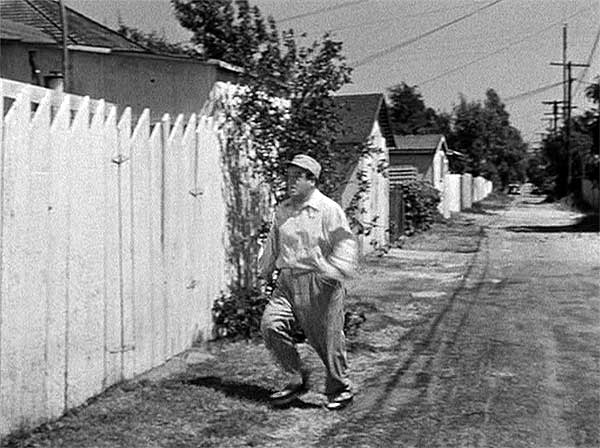
Attachments
The Joplin-Pittsburgh Railway of Kansas And Missouri
The Joplin-Pittsburg Railway Company began as the Pittsburg, Frontenac & Suburban Electric Railway Company in July, 1894. Its first line was purchased from the Forest Park Electric Railway and extended from Pittsburg north to Frontenac. Its second line was purchased in 1895 from the Pittsburg Electric Railway Company which extended the railway to the many coal camps surrounding Pittsburg. By 1907, the railway had lines throughout Crawford and Cherokee Counties in Kansas, and Jasper County, including Joplin, in Missouri. The line to Joplin was completed in 1908, and it was named the "Air Line" because of its direct route and the speed of its cars. The Air Line cars were large and could attain speeds of 60 mph.
The Joplin-Pittsburg Railway suffered labor troubles from 1911 to 1919 in which six strikes took place. Regulation-forced rate cuts, jitney competition, lawsuits and labor issues after 1920 cut into the line's profits, so it entered receivership in 1924. Special weekend fares, more Air Line cars to Joplin and freight connections to steam railroads were attempts to revive the line. But by the late 1920s, it was still deeply indebted, and the last blow was losing its Joplin connection in 1929. On May 14, 1929, the company was sold at auction. Pittsburg businessmen bought the line to save it from being junked. Passenger service ran until 1932, and the freight business continued to 1954 when all operations ceased.
Attachments
This is about and interurban short line in Missouri.
The St. Joseph and Savannah Interurban Railway was a 13-mile interurban electric railway that ran between St. Joseph, Missouri and Savannah, Missouri from 1910 to 1939. It was operated by the St. Joseph Railway, Light, Heat and Power Company, which also operated the trolley system in St. Joseph. The St. Joseph and Savannah Interurban Ry began on July 5, 1910 to compete with the Chicago Great Western Railroad. It consisted of three wooden cars and headed north on the streetcar line down St. Joseph Avenue and terminated four blocks west of the square in Savannah. The line connected to the Kansas City, Clay County and St. Joseph Railway.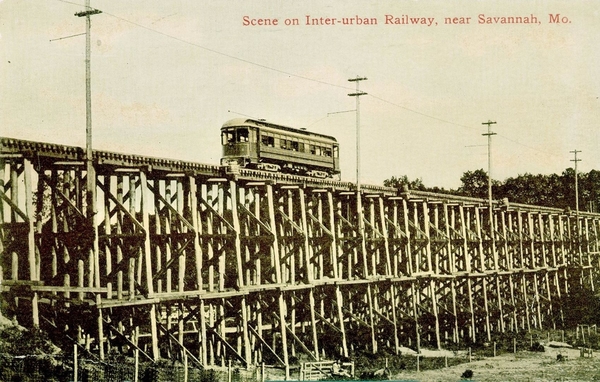
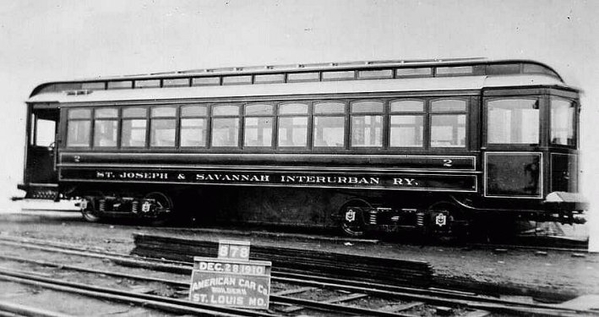
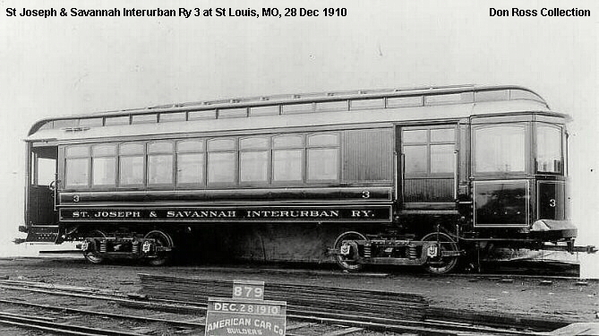
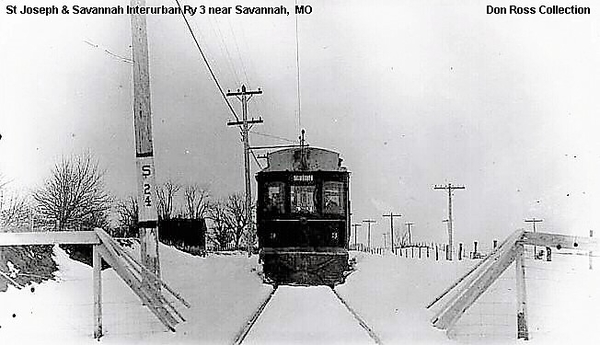
Car 3 Near Savannah
Attachments
Some of the vehicles in the IRM trolley parade on July 4, 2007.
Chicago Surface Lines #1374
Chicago Surface Lines #141
CTA #3142
CTA #4290
North Shore Line #160
North Shore Line #251
North Shore Line #229
TMERL #L7
Cornwall Street Ry. #14
Illinois Terminal #1565
Commonwealth Edison #4
TMERL # D13
North Shore Line #604
Illinois Terminal #101
CA&E #308
CA&E #431
Sand Springs #68
Attachments
Central California Traction Company
Originally, the Central California Traction Company planned to run a line southward from Sacramento through rural farms and grape vineyards all the way to Modesto. It was anticipated that most of the San Joaquin and Sacramento County communities would be connected to the main tracks by branch lines. The first purchases in 1905 were for electric cars, car motors, air brake equipment and track materials. Streetcar lines in Stockton opened in May 1907, and a gold spike ceremony was held on August 31 in front of the Lodi Hotel. In 1909, the railroad was completed to its terminus in Sacramento. The cost was nearly one million dollars.
Overhead wires were used in Stockton, Lodi and Sacramento as the power source for the electric train. In the rural areas, power was transmitted by a wood-covered third rail, energized at 1,200 volts. The Central California Traction railroad was one of the first in the United States and the first in California to use high-tension direct current. Previous voltage had been 600 volts or less.
By 1914, the electric line operated 36 daily passenger trains. The first cars were painted red, but later Pullman green became the popular color, and in the 1930’s, yellow emerged as the official color. The wooden cars were attractive and equipped with both trolley poles and third rail shoes so they could run in the cities as well as the country.
The last interurban passenger run was made on February 4, 1933. The original owners, the Fleishackers of San Francisco, tried to sell the California Traction Line to the Southern Pacific. This resulted in a power struggle among Southern Pacific, Western Pacific and the Santa Fe Railroad with all three vying for control. A 1936 decision allowed joint operation of the Central California Traction by all three railroads.
Electric power costs to maintain freight service proved too costly, so in 1947, the Central California Traction railroad lost its uniqueness and trolley power was abandoned. The pantographs came down for the last time when the system was converted to diesel.
Car No. 7
Attachments
California once was riddled with traction companies, but they threw it all away. This story is about the Fresno Traction Company.
In 1901, three different lines, Fulton, Fresno, and Mariposa Streets were merged into one and called the Fresno City Railway Company. While converting the merged lines to electricity, the owners changed the name to the Fresno Traction Company. The Fresno Traction Company was incorporated in 1903 with authorization to build 196 miles of electric lines connecting Fresno to Selma, Trimmers Springs, Wawona, Central, and Washington Colonies. Electric operations commenced with three single truck Hammond cars purchased from the United Railroads of San Francisco, and five California cars built by W. L. Holman Car Company. After 4 miles of new track had been laid, these expansion plans were curtailed by the 1906 San Francisco earthquake. By 1909 the lines along Tulare Street, Fresno Avenue, and J Street had been improved with double track. A car barn and repair shop was built at the end of Tulare Street to hold ten new double-truck Paye cars built by the American Car Company.
Southern Pacific purchased a controlling interest in 1910 and replaced most of the older rail with heavier 75-pound rail. The Roeding Park branch line was completed in 1912, and four longer Paye cars were purchased from the Jewett Car Company. A line was completed to the company-owned Fresno Beach in 1915. A total of 41.55 miles of track was in operation when automobile competition halted further expansion after World War I
Power was purchased from San Joaquin Light and Power Corporation at 1000 volt, 60 cycle, 3 phase AC and converted to 550 volt DC in substations at O and Platt Streets, at Herndon and Forkner Avenues, and on Blackstone Avenue near Webster Street. Nineteen Birney cars were placed in operation after the war, and the original Hammond cars were replaced by twelve lightweight double-truck cars built by St. Louis Car Company in 1925. Individual lines were abandoned as service contracted through the 1930s. All streetcar operations ended on 20 May1939.
Fresno 68 was rescued from a field in 1970 & restored at the San Jose History Park as SJRR 143
Attachments
Thanks for your ongoing research and photos, Bobby. My iPad is taking days to load this and the prior posts' photos, so this text-only reply will have to do.
The last two photos in your post of a trolley-to-restaurant conversion are actually one and the same. That great Standard Diner photo is new to me but I recognized the photo just above it as a former trolley restaurant described by our friends at Hicks Car Works.
They reported that the building consists of a 1912 Brill built as a Fresno Traction Dragon car and a 1925 Birney, apparently placed in an L-shaped configuration. They dated the Standard Diner remodel to 1936.
The trolley restaurant was later turned into an office and at one point the interior was damaged by fire. Google maps still shows it at 1732 S. Cherry Avenue in Fesno, CA.
Tomlinson Run Railroad
Bobby Ogage posted:
Of course, now that I just posted, the missing photos all appeared ![]() . Here they are for a comparison. Definitely one and the same trolley car.
. Here they are for a comparison. Definitely one and the same trolley car.
TRRR
Colorado Springs & Interurban Railway Company
By 1902, the Colorado Springs & Interurban Railway Company consisted of a consolidation of the Colorado Springs Rapid Transit Railway and the Colorado Springs & Suburban Railway Company. Colorado Springs and Interurban Railway ridership peaked in 1911 and within three years it began to suffer financially as automobile ownership increased. By 1916 the system served Colorado Springs, Old Colorado City, Manitou Springs, Ivywild, and Roswell over 38 miles of track with 56 motor cars and 13 trail cars in 1917. Buses began replacing the system's trolley cars in 1931, and the last electric trolley ran on April 30, 1932. In the mid-1930s, the Works Progress Administration removed most of the street car rails.
Attachments
To get back to California trolleys for a minute. This afternoon I did some work on the brakes and air compressors on Sacramento Northern 1005. At the end of the day we took it for a ride to the end of the line to ensure everything was working properly. The trip south was in Salt Lake and Utah control trailer observation 751. I had a few minutes to take a short video on my phone. Nicest day so far this spring. Very pleasant ride.
This is a 5 mile stretch of the Sacramento Northern, which has been restored by the Western Railway Musuem. If this was in the days of the SN, which discontinued electric operation here in 1957, we would have been traveling south about 5 miles short of the ferry slip where the electric trains crossed Suisun Bay. On the other side of the bay the trip would have continued on about 30 miles to Oakland.
Attachments
This is a picture near the end of the line of the cars in the above video. The train was SN 1005, SN 1020 and SL and U 751. The control is being moved from the rear observation car to the lead motor for the trip back north.
Attachments
The Key Route of California
The Key System (or Key Route) was a privately owned company that provided mass transit in the cities of Oakland, Berkeley, Alameda, Emeryville, Piedmont, San Leandro, Richmond, Albany, and El Cerrito in the eastern San Francisco Bay Area from 1903 until 1960, when it was sold to a newly formed public agency, AC Transit. The Key System consisted of local streetcar and bus lines in the East Bay, and commuter rail and bus lines connecting the East Bay to San Francisco by a ferry pier on San Francisco Bay, later via the lower deck of the Bay Bridge. At its height during the 1940s, the Key System had over 66 miles (106 km) of track. The local streetcars were discontinued in 1948 and the commuter trains to San Francisco were discontinued in 1958. The Key System's territory is today served by BART and AC Transit bus service.
Key Pier, 1909
Attachments
This post is about the sole surviving street car in Wyoming.
In early 1910, Albert Emanuel and William Sullivan of the Electric Street Railway of Dayton, Ohio, proposed to build and operate an electric streetcar system in Sheridan, Wyoming. The proposed line would run through Sheridan and serve as a direct line to the nearby coal camps. The City of Sheridan quickly approved the proposal and by July of 1910, rails were being laid. In just over one year's time, the City Line was completed with service beginning on August 11, 1911.
Following the tremendous success of the City Line, a second route, known as the Fort Line, was established. The Fort Line was an extension from Main Street, up Lewis Hill to the county fairgrounds, across Deadman's Draw, and on to Fort Mackenzie - the present day VA Hospital. Once at the Fort, passengers would help turn the streetcar on a turntable for the ride back to town.
The streetcar service expanded even more with the construction of a 12-mile route from Sheridan to the nearby coal camps. This Interurban route was completed in February of 1912 and made stops at Dietz, Acme, Model, Carneyville, and Monarch. Sheridan's streetcar system has some 18 miles of track within the city, which included a short spur from the end of the City Line to the sugar factory on Coffeen Avenue. Over the years, the streetcar became the pride and joy of Sheridan and the nearby mining communities.
After the city decided to repave downtown Main Street and not replace that stretch of double track due to decreases in passengers, service on the City Line was discontinued in September of 1923. The Fort Line continued to operate until March of 1924 when it was replaced by a bus. That left the Interurban routes to carry on as the last remaining electric railway in Wyoming. However, it was abandoned in June of 1926.
Fifty years after the streetcars made their last runs, the dilapidated body of one of the cars was discovered in a field near town. As part of the Bicentennial Celebration in 1976, #115 from the Fort Line was saved and renovated by local individuals, businesses and organizations. Today, #115 is the only remaining streetcar in the state of Wyoming. Restoration plans and preservation continue for streetcar #115 to this day including a custom made protective cover during the winter months.
Attachments
https://wnep.com/2019/03/06/gr...t-known-trolley-car/
A link to a local businessman's efforts to save the last known Wilkes-Barre trolley.
The Sheboygan Light, Power & Railway Company of Wisconsin
In 1889, the Sheboygan Electric Light Company began providing electricity to homes, and in 1893 it took over the money-losing horse-drawn streetcar system, renamed itself the Sheboygan Light, Power & Railway Company, and replaced the horses with electric-powered cars. The cars ran 19 hours on normal days, and to improve revenue, the system carried freight for Kohler Co., local cheese factories, and quarries. Gradually the system added track until by 1908 the rail line had extended service to Elkhart Lake. In 1908 the Sheboygan rail system also bought three new cars from the Cincinnati Car Company: #25, #26 and #27.
Sheboygan's electric rail system operated into the 1930s, but ridership began dropping in the early 1920s. Aiming to keep its rail system viable, Sheboygan expanded the freight service in 1930, joining with other railroads to haul loads to and from Chicago. This service was called the "Bathtub Special" because the main user was Kohler Company for its plumbing supply business. Service within Sheboygan ended in 1935 and the last run to Plymouth was in 1938.
As business waned, car #26 was sold in 1937 and became a summer cottage near Lake Michigan. By 1988 it was deteriorating, so it was donated it to the Friends of the East Troy Electric Railroad Museum. They restored it to near original condition. The car was added to the National Register of Historic Places in 2006. Today the car is operated intermittently by the East Troy Museum, carrying visitors on the museum's 7.5 mile remnant of the Milwaukee Electric Railway & Light Company's interurban line.
Sheboygan Power & Light Ry Car 26
Sheboygan Power & Light Ry Car 28
Attachments
Traction in Charleston, West Virginia
The Charleston Interurban Railroad Company was organized on July 28, 1909 for leasing and operating the Kanawha Valley Traction Company. The Kanawha Traction Company was organized on May 20, 1902 as the successor to the Charleston Street Railway. The properties were operated under the name of the Charleston Street Railway until the early part of 1902. It consisted of 6 miles of track and 12 mule-drawn cars, 6 of which were open summer cars. Also in 1902, the line was electrified with 8 open summer cars and 8 closed cars. A 40’ x 140’ brick powerhouse and car barn of the same size were erected. By 1905 the properties had a value of $200,000.
By 1906 the company extended the line 2.3 miles to Edgewood Park, and added 2 loops for an additional 2.3 miles of track. A new powerhouse was also built containing 300 horsepower boilers and a 400 kilowatt generator. A Kanawha & Michigan Railway bridge was purchased and a new bridge was built enabling the railroad to expand another 28 miles in 1907.
The Charleston Interurban Railroad also operated two interurban lines, one west to St. Albans built in 1912, and the other east to Cabin Creek built in 1916. At a receiver’s sale in 1935, the property passed into the hands of the Charleston Transit Company, which converted the entire operation to buses on June 29, 1939.
Attachments
Last weekend, at the Western Railway Museum, Portland Traction 4001 was out of the barn for a few minutes. Theis car was originally Indiana Railroad 202.
Attachments
The Yakima Valley Transportation Company of Washington
The Yakima Valley Transportation Company (YVT) began operations in 1907 as a streetcar line downtown. Although some freight operation took place almost from the beginning, streetcar service was the company's primary activity for its first several years, and interurban service extended to several areas. Its greatest length was just over 44 miles. Presently, approximately five miles of track remain that connect the cities of Yakima and Selah, Washington. Electric trains have operated on the YVT trackage every year since 1907.
From 1909 onward, the company was a wholly owned subsidiary of the Union Pacific Railroad. Freight service expanded in the 1910s, and by 1920 it had become a major function of the YVT. Interurban service was discontinued on May 15, 1935.
The Yakima Valley Transportation Company operated the local streetcar system from 1907 until 1947. The first streetcars purchased new came from the Danville Car Company of Illinois, while later purchases were from the John G. Stephenson Company and the J. G. Brill Company.
Due to declining revenue, the Union Pacific filed for abandonment of the YVT and operation ceased on November 18, 1985. However, at the request of Yakima city officials, the Union Pacific donated the entire YVT railroad to the City of Yakima. This enabled the city to allow continued operation of a heritage streetcar service by the Yakima Valley Trolleys which currently operates. The donation included two of the railway's three locomotives, 1909 "Line car" A (for overhead line maintenance) and 1922 GE "steeple-cab" locomotive No. 298.[6] The third YVT electric locomotive, 1923 boxcab-type No. 297, was donated by UP to the Orange Empire Railway Museum.
Attachments
Washington-Virginia Railway of Northern Virginia
The Washington, Alexandria, and Mount Vernon Electric Railway merged with the Washington, Arlington & Falls Church Railway in 1913 to form the Washington-Virginia Railway. The trolley company went into receivership in 1923. In 1927, the two railways were separated and sold at auction. The last trolleys of the line ran on January 18, 1932. Later that year the tracks were removed when some of the right-of-way was used for the George Washington Memorial Parkway. The path of the trolley turnaround at Mount Vernon remains as a traffic circle at the south end of the Parkway, while the former rail yard in southern Arlington now serves as a Metrobus yard.
Washington, Arlington & Falls Church Railway
In 1896, the Washington, Arlington & Falls Church Railway began running electric trolleys from Rosslyn to Falls Church on the present routes of Fairfax Drive and I-66. By 1907, the line linked downtown Washington to Ballston, Vienna, and the Town of Fairfax.
Washington, Alexandria, and Mount Vernon Electric Railway
The Washington, Alexandria, and Mount Vernon Electric Railway served the populace of northern Virginia and began transporting people in 1892. This company ran between Alexandria and Mount Vernon. By 1896, the company had expanded and was using tracks owned by the Belt Line Street Railway Company in Washington D.C. Also by 1906, the railway reported transporting 1,743,734 passengers along its routes with 92 daily trains. During World War I, the line was extended to Camp Humphreys (now Fort Belvoir).
Washington, Alexandria & Mount Vernon Electric Railway
Washington, Alexandria & Mount Vernon Electric Railway
Attachments
The Springfield Terminal Railway in Vermont
The Springfield Terminal Railway was only 8 miles long, operating between Springfield, Vermont, and Charlestown, New Hampshire. The railway opened in 1897 and it provided rail service to Springfield from a connection with the Boston & Maine Railroad. Freight was always a major contributor to revenue and when passenger service ended in 1947, electric locomotives continued until replaced by diesels in 1956. The company was originally the Springfield Electric Railway, but after a bankruptcy in 1918, it became the Springfield Terminal Railway in 1923. The line was controlled by the Boston & Maine for many years, and it became part of the Guilford Lines. When the railway changed its the Springfield Terminal Railway became the operating arm of the Guilford Lines and a major railroad system.
The above depicts an Illinois Terminal Motor and does not belong in this post.
T
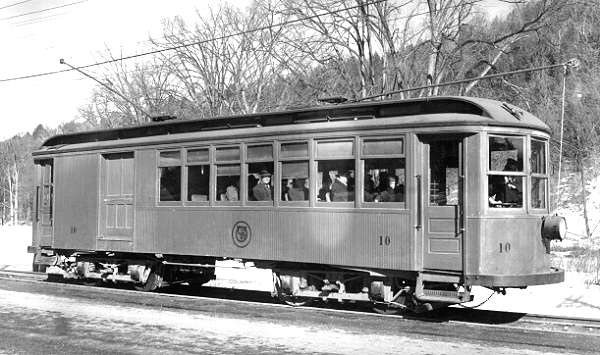 labor rules,
labor rules,
Attachments
Did Springfield Terminal actually acquire a Illinois Terminal Class C motor?
Rusty
Well, I just had to ask, Bob. The IT did sell off some of it's Class A and B motor's to on line power plants, such as Danville, IL. at the end of electrification as diesels took over. My wife and I just seen the Class C and B motor's and the IT rail bus at the Museum of Transport near St. Louis, Mo. a few weeks ago.
Thank you for posting on this topic regularly, I enjoy seeing the photo's and reading about Interurban's and Trolley lines. I've always had an attraction to things that run under wire and down the middle of the street! Must be something I did and enjoyed in a past life. ![]()
Rusty
Random photos of trolley & interurban cars:
The hitchhiker is in for a surprise. The motorman in Car 3343 has his window open, and it wouldn't surprise me if the motorman has a club. These are New York City cars.
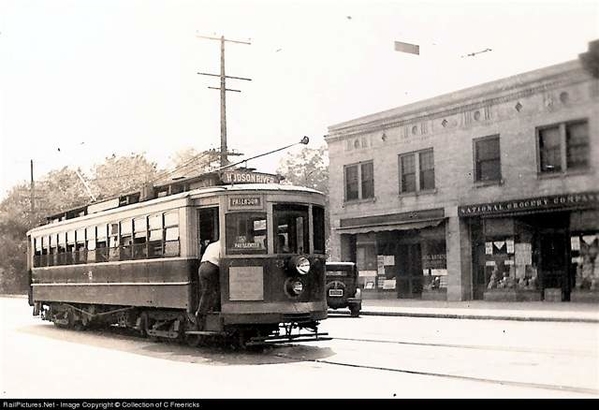 Pictures of traction in New Jersey are scarce.
Pictures of traction in New Jersey are scarce.
This car originally operated in New York City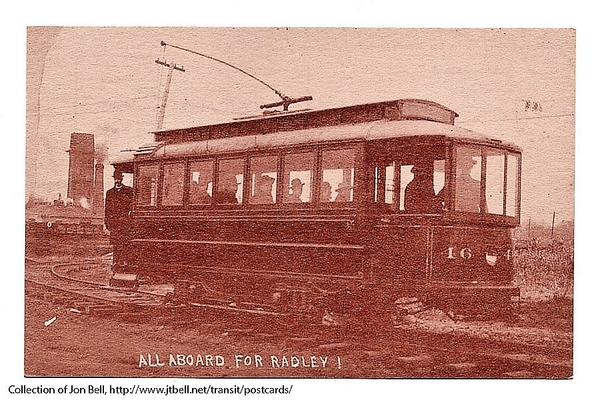
This car is in Kansas. Notice the bend in the trolley pole. That pole is exerting a lot of force on the overhead wire.
Attachments
Attachments

briansilvermustang posted:
This is W. Clifton, Lakewood, OH.
This is the story of the Piedmont & Northern, a disjointed electric railway with divisions in North & South Carolina.
The Piedmont & Northern Railway was a heavy electric interurban company operating over two disconnected divisions in North Carolina and South Carolina. Tracks spanned 128 miles total between the two segments, with the northern division running 24 miles from Charlotte to Gastonia in North Carolina, including a three-mile spur to Belmont. The southern division main line ran 89 miles from Greenwood to Spartanburg, South Carolina with a 12-mile spur to Anderson. Both sections were electrified to 1,500 volts DC with power supplied from mostly hydroelectric sources. Additionally, both segments were built to steam road standards with minimal street running.
Plans to connect the North and South Carolina divisions between Spartanburg, South Carolina and Gastonia, North Carolina, and to expand northwards towards Winston-Salem, North Carolina were successfully blocked by the Southern Railway and other entities in court cases in the 1930s.
The Piedmont & Northern Railway, though involved heavily in passenger operations, was primarily a heavy freight carrier. The most important commodities transported were coal and coke, cotton, cotton waste and paper.
The Piedmont & Northern survived the Great Depression and was later absorbed into the Seaboard Coast Line Railroad in 1969. Although part of the railroad was abandoned in South Carolina between Greenwood and Honea Path, and Belton to Anderson, much of the original system exists today as short lines.
According to an agreement with the North Carolina Department of Transportation in 2010, Patriot Rail will restore and operate the Piedmont & Northern rail corridor in Gaston County, North Carolina. The Boca-Raton, Florida based Patriot Rail will restore freight service on four miles of track upgraded in late 2009 between Gastonia and Ranlo. Another nine miles of the state-owned Piedmont & Northern corridor from Ranlo to Mount Holly should be upgraded by spring 2011.
Attachments
Bobby Ogage posted:This is the story of the Piedmont & Northern, a disjointed electric railway with divisions in North & South Carolina.
Once upon a time I built a P&N engine....

In Sellersville, Pa.....

The Sea View Railroad of Rhode Island
The 19 mile Sea View Railroad was completed in 1900 from Narragansett Pier to East Greenwich, Rhode Island where it connected with the Rhode Island Company for a through run into Providence. It was leased to the Rhode Island Co. in 1911 but the lease was terminated in 1918 and the Sea View Railroad was abandoned in 1920.
SEA VIEW DEPOT AT NARRAGANSETT PIER
SEA VIEW DEPOT AT NARRAGANSETT PIER
Sea View Trolley @ Nelson's Crossing, 1910
Attachments
The Wilkes-Barre and Hazleton Railroad of Pennsylvania
Construction of the Wilkes-Barre and Hazleton Railroad started in 1901, and the railroad opened for business in 1903 operating with 625 Volts. At that time, the railroad only ran from Hazleton to Ashley. In 1907, trains began running all the way to Wilkes-Barre via a 1040-foot long viaduct that was 34 feet high.
The Wilkes-Barre and Hazleton Railroad ran freight trains and passenger trains alternately. From Hazleton to West Hazleton, the railroad used tracks belonging to the Lehigh Traction Company. From West Hazelton, the railroad went past Conyngham Gap, Butler Mountain, Buck Mountain and into the valley of Nescopeck Creek. Upon leaving the Nescopeck Creek valley, it went up Nescopeck Mountain via Nescopeck Pass, then descended into the valley of Big Wapwallopen Creek. The railroad went up Penobscot Mountain, tunneling through it at 1300 feet above sea level. The route then went down the mountain and past Sugar Gap and Solomon Creek to the community of Ashley.
In Ashley, the Wilkes-Barre and Hazleton Railroad connected to the tracks of the Wilkes-Barre Traction Company. The route was 26 miles long, but was later extended into downtown Wilkes-Barre via Georgetown. The crossing of the Wilkes-Barre and Hazleton Railway over Black Creek is a very large three-arch viaduct made of stone. Slightly over two miles north of the railroad's southern terminus, there is an interchange to the Lehigh Valley Railroad.
All service on the railroad stopped on September 17, and power to the rail line was removed on October 3, 1933, after a final attempt to save the railroad from bankruptcy failed.
Attachments

Hey thank you for posting MWB. That's a nice shot of sweeper 107 at Rockhill Trolley Museum.
Rusty
My grandfather was a motorman on Louisville, Ky. Street railways before building cabooses for the L&N. I vaguely remember riding a streetcar down Louisville's then major shopping Fourth St. before they disappeared. I have not been through all the 30+ pages of postings here, but hope there are some of lndiana and Ohio interurbans, which ran all over those states. I would love to see some freight motors operating on those systems.
By chance, does anyone have any pictures from the RICHMOND, VA system?
briansilvermustang posted:
This photographic print shows a streetcar parked next to a stop on the Main Street line in Richmond, Virginia. A sign on the front of the streetcar reads “VA. LEAGUE / BASEBALL / TODAY / ISLAND PARK,” and one painted on the streetcar indicates that the fare is six cents. Two women are sitting on the streetcar. A driver and conductor are also on board the streetcar. Two additional conductors, one seated and one standing, are to the left.
This is such a great photo, so much detail of an early streetcar operation. A semi convertible car with all the windows up in the ceiling except for one, which is probably stuck. A single ended car with screens all down the left side. Track centers must have been close. The car in the background shows the left side with all the screens. Brill maximum traction trucks, 39E? Note the guards around the head light to protect it from the fender when it was up. Not sure why you would put a fender up on a single ended car. Noted the exact fare sign on the front of the car, but passengers would have probably boarded at the rear door and exited from the front. Looks like a US-6 trolley base I do not see much equipment under the car. I assume the car had air brakes, but maybe not. The open channel side sill is an interesting detail.
Must have been a hot day. Every door and window is open, except for the one right in front of the motorman. Even the clerestory windows are open. Must have been some kind of important junction for the streetcars with the extra crew standing by and a car on an intersecting line sitting in the background.
Those rails above seem to be 5' gauge. Any confirmation??
The Trolley Cars of Ogden, Utah
Ogden area residents loved the Ogden Canyon enough to warrant a railroad there, so the Ogden Rapid Transit Company trolley line opened in July of 1915. The Ogden Rapid Transit Company provided reliable transportation into Ogden Canyon, and for 17 years it traveled from the Ogden Depot to Huntsville by way of Eden. The railroad was quite the engineering marvel, having to hug the canyon walls and rock cliffs.
The Standard of July 18, 1912 reported that the Ogden Rapid Transit Company had decided to change its route from the south side of the canyon’s river to the north side. This route change opened the Ogden Valley to a much larger farming population. For the Ogden Rapid Transit Company, it meant new business shipping beets, hay, grain and dairy products to Ogden.
The trolley line carried some 7,000 passengers during the 4th of July Holiday in 1910. The first trolley cars used carried 46 passengers and had both smoking compartments and toilets. By 1913, several trolleys were modified to be open roof observation cars. Through the warm weather season, the trolley cars to the Hermitage ran hourly.
The line weathered lots of snow slides over the years. The Standard on Feb. 18, 1926 reported that three avalanches had buried the tracks in Ogden Canyon. It took almost two full days to clear the tracks and restore full service again. However, it wasn’t snow or even the advent of the automobile that doomed the Ogden Canyon line. It was the severe flooding in the canyon during 1932 that badly damaged the tracks.
Attachments

That is an interesting signal in the photo. Is there any info as to what railway this is, and the location of this scene? My guess judging by the car, the year us about 1935 - 1938.
Attachments
The Harmony Line of Pennsylvania
The Pittsburgh, Harmony, Butler and New Castle Railway, commonly called the Harmony Line, was a broad gauge interurban streetcar line connecting Pittsburgh, Pennsylvania, United States to Butler and New Castle via Harmony and a split at Evans City. There was also an extension that was later added to the line from Ellwood City to Beaver Falls.
The Harmony Line was developed by business partners Russel H. Boggs and Henry Buhl as an adjunct to their department store in Pittsburgh. Mr. Boggs already had a business relationship with many of the farms between Evans City and Pittsburgh and proposed exchanging the right of way across their land for one dollar, a guaranteed trolley stop and an electricity supply. The Butler and New Castle Railway was formed in 1906 by consolidating 11 small railways that ran into Harmony.
The first trolley ran to Ellwood City on July 2, 1908. At the southern end of the Harmony Line, the run into Pittsburgh was via the Pittsburg Railways. In 1914 an extension along the Beaver Valley opened leaving Ellwood City heading south west, and crossed the Beaver River on Koppel Bridge which was built for the purpose. This bridge also carried vehicle and pedestrian traffic and was subject to a toll.
In 1917 the railway amalgamated with the Pittsburgh and Butler Street Railway that operated the Butler Short Line between Pittsburgh and Butler. The new company became the Pittsburgh, Mars and Butler Railway. Combined the new system had a length of 118 miles. In 1922 the railway formed the Harmony Short Line Motor Transportation Company to carry freight between Bakerstown, and Butler.
In April 1931, the company went into receivership. The Butler Short Line was closed on April 22, 1931 as it was in poor condition. Services were absorbed into the PA 8 bus service. Beaver Falls – Ellwood City – New Castle services were replaced by buses on June 15, 1931. The remaining lines were replaced by buses on the same day, with the final trolley running on August 15, 1931. The stub of the Butler Short Line continued to be used by Pittsburgh Railways until its closure in 1952.
Car 115 avoided being burnt when the line closed because it had mechanical problems and was abandoned where it failed. Car 115 then became The Dew Drop Inn, a roadside diner, but is was later recovered by the Pennsylvania Trolley Museum where it awaits restoration. In this way Car 115 avoided being burnt twice, as the inn was destroyed by fire in 1995. In addition to Car 115, the museum also has the original Harmony dispatch board and a shelter from both the Harmony and Butler lines.
The station building in Ellwood City was retained as commercial premises. In 2007 it reopened as a donut shop and was renamed Ellwood Station as a reference to its origin. Rails remain in situ under part of the building. Koppel Bridge, which was built for the Beaver Valley extension in 1915 still exists and carries PA 351 over the Beaver River between Ellwood City and Koppel.
By 1920, films were shown for the entertainment of the line's passengers
Attachments
There are two good books about these lines written b Wayne Cole. Lots of photos & maps. I scouted out some of what remains since I lived in the area for50 years. There is a restored shelter in Mars, Pa. with a small museum and a power house building still stands near Renfrew, Pa.
The Oregon Electric Railway
James J. Hill who was known as the Empire Builder, purchased the Oregon Electric railway in 1910. Hill added the line to a corporate family that included the Spokane, Portland & Seattle (SP&S), the Great Northern, and the Northern Pacific Railways.
On New Year’s Day 1908, Oregon Electric trains began operating between Portland and Salem. Branch lines were built to Forest Grove that year and to Woodburn in 1909. On the Fourth of July, 1912, Albany welcomed the Oregon Electric to town; and on October 17, 1912, the mainline was completed to Eugene. A final branch line between Albany and Corvallis went into service on March 25, 1913.
By 1912, the Southern Pacific Railroad was converting branch lines to electric operation in competition with the Oregon Electric. As part owners of Portland’s Union Station, the Southern Pacific blocked Oregon Electric trains from terminating there. Instead, the Oregon Electric used the North Bank Depot four blocks to the west, as did the SP&S, United Railways, and the Oregon Trunk Railroad.
The Oregon Electric’s 122-mile Willamette Valley route was Oregon’s longest electric interurban railway, and many of its trains served Portland suburbs. A dozen trains a day catered to commuters, students, and shoppers in Hillsboro, Forest Grove, Beaverton, Wilsonville, and Tualatin. On weekends, reduced-fare excursions operated between Portland and Salem. Four to five trains ran through to Eugene each day.
To compete with major steam railroads, the Oregon Electric ordered the highest quality interurban cars available. Their "traction orange" color, a bright orange that had become a trademark of the industry, was changed to Pullman green after the Hill interests took control. Rolling stock included combination baggage, smoking, and passenger motorcars; observation-buffet cars; and elegant passenger trailers. For a few years, there were also specially built interurban sleeping cars. Because it did not take all night to make the trip between Portland and Eugene, these cars were shunted onto side tracks so patrons could sleep until morning.
In the beginning, operating costs were reasonable, but reductions in service had to be made when passenger volume did not develop as expected. After a peak year in 1920, competition from automobiles, trucks, and buses steadily eroded revenue. Passenger service to Corvallis was discontinued in 1931 and to Forest Grove in 1932. All passenger service ceased on May 13, 1933. The Oregon Electric survived as a freight railroad into the 1990s. Electric locomotives were used until July 10, 1945.
Attachments
Buffalo & Lake Erie

These were all a great treat to see. My personal Thanks to all of you for your time and energy in posting them. I loved my trolley boyhood days in the McKeesport - Pittsburgh area.
Information about interurban and street car lines in Oklahoma is scarce. I found these photos, but I have no information about their railways.
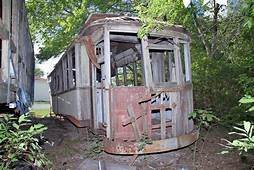
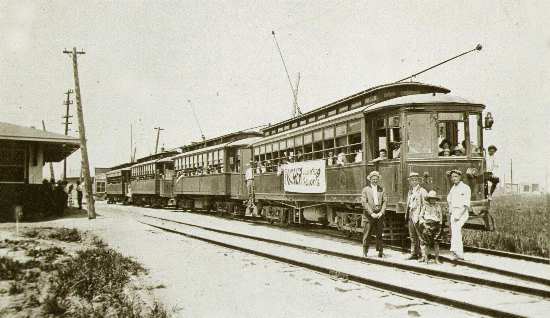
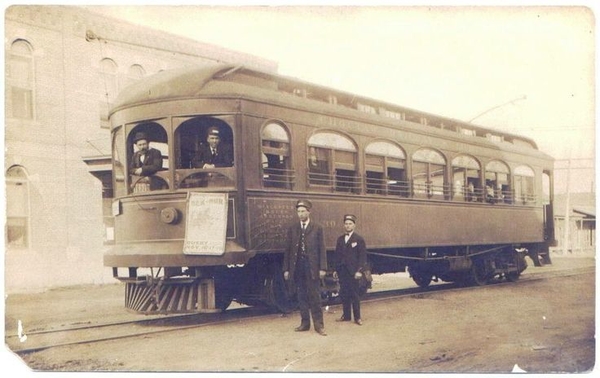
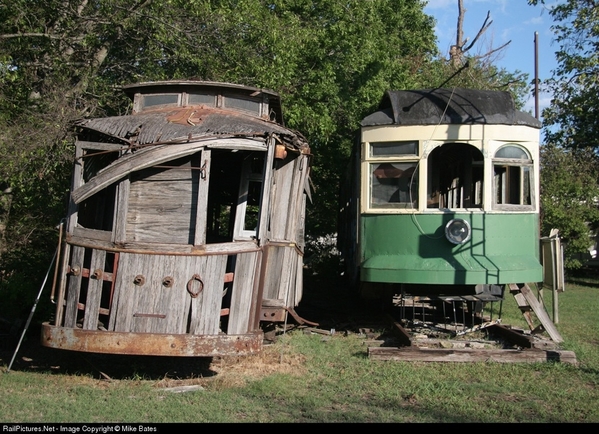
 This car may be a trailer that operated in Texas.
This car may be a trailer that operated in Texas.
Attachments
The Youngstown & Southern of Ohio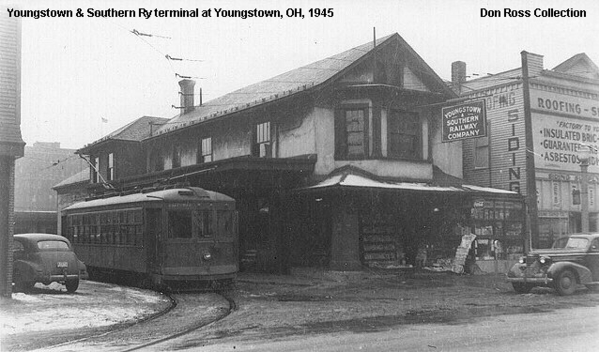
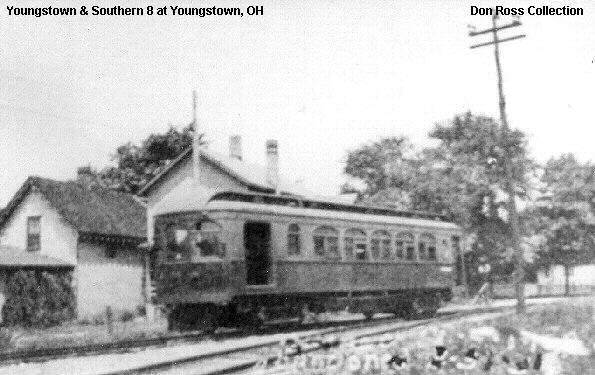
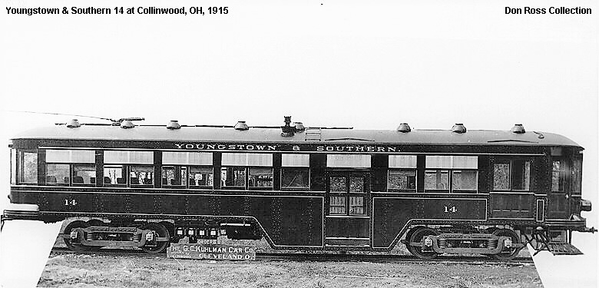
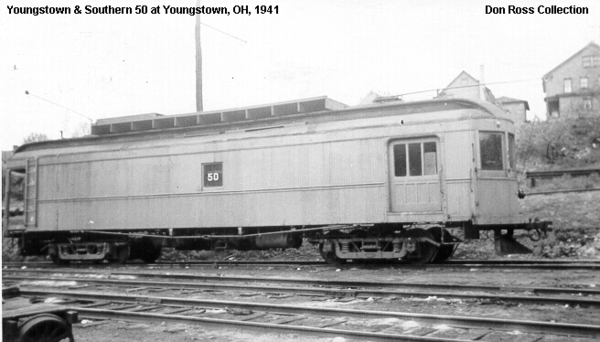
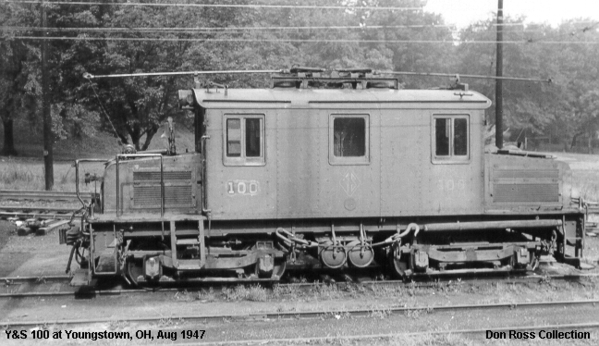
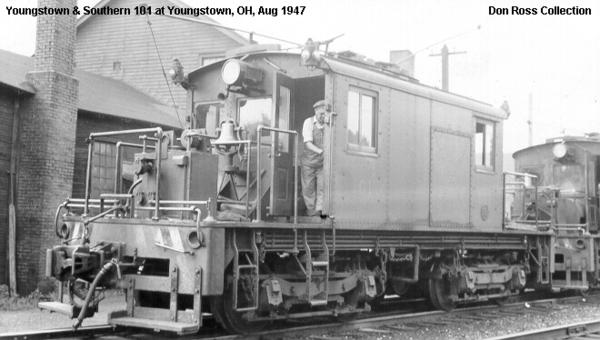
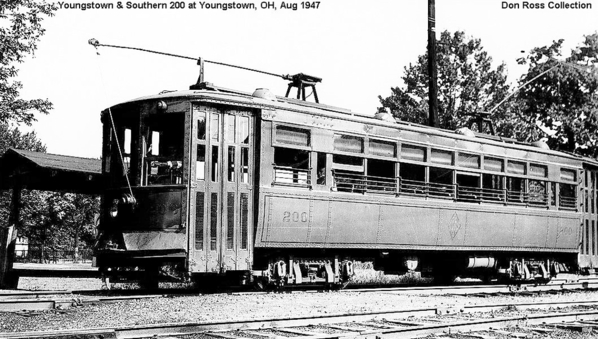
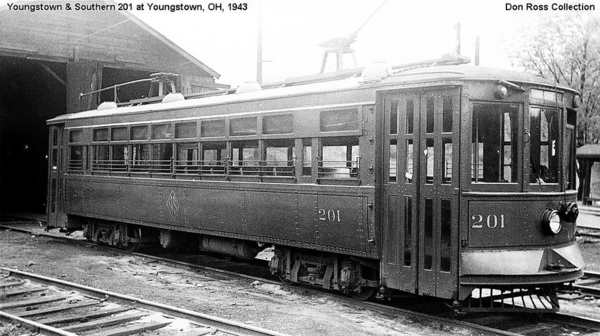
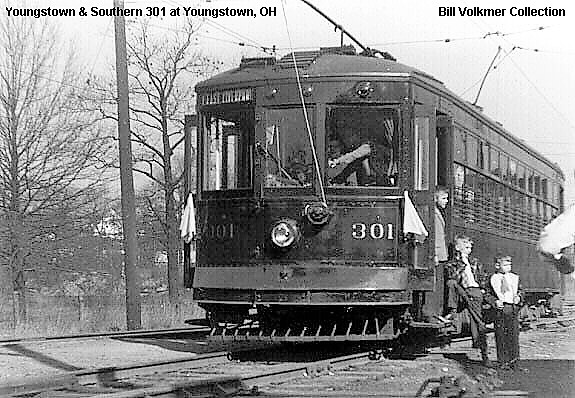
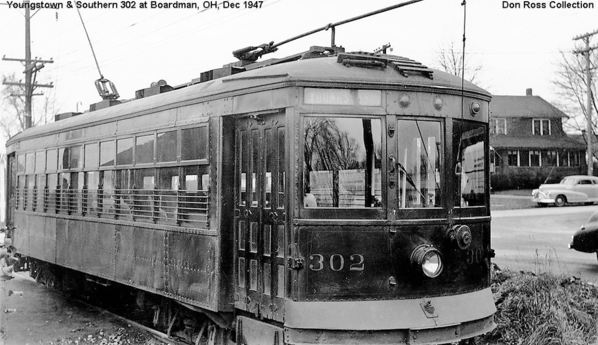
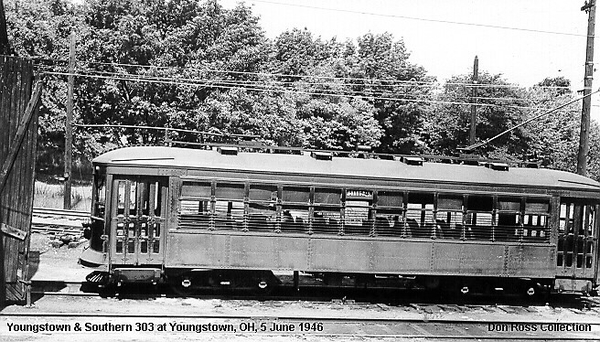
The Youngstown & Southern of Ohio began operations in 1904 as a 16-mile steam line between Youngstown and Columbiana. In 1907 the line was electrified with overhead wires and extended 3 miles to Leetonia on the Youngstown & Ohio River Railroad. In addition to carrying passengers as an interurban railway, the company handled freight, primarily coal from the electric Youngstown & Ohio River Railroad and the steam Pittsburgh, Lisbon & Western Railroad. After the Youngstown & Southern entered receivership in 1915, a 1916 reorganization produced the Youngstown & Suburban Railway.
Attachments
Mason City & Clear Lake Car 19 was built by Pullman as New York & Brooklyn Bridge 97. It was purchased in April, 1909 as a trailer. It was later motorized and converted to a freight motor. Car 19 was retired in the late 1930s, but it was not scrapped until 1963.
I could not find any information about Car 97 or others of its type on the New York & Brooklyn Railway. Could Car 97 have been a cable car trailer that operated on the Brooklyn Bridge?
Attachments
Terre Haute, Indianapolis and Eastern Traction Company of Indiana
The Terre Haute, Indianapolis and Eastern Traction Company (THI&E) was formed on 1 March 1907. The Indianapolis and Western Railway, the Indianapolis and Eastern Railway, the Richmond Street and Interurban Railway, and the Indianapolis Coal Traction Company were predecessor companies. On 25 March 1907, the THI&E acquired the Terre Haute Traction and Light Company and in 1912 it purchased the Indianapolis, Crawfordsville and Danville Electric Railway. The company also controlled the Indianapolis Street Railway. Profits from the street railway and the power company assured the survival of the THI&E through the 1920s, but the company went into receivership on 2 April 1930.
The Terre Haute, Indianapolis and Eastern Traction Company was the second largest interurban in Indiana at the height of the "Interurban Era." The system had over 400 miles of track, with lines radiating from Indianapolis to the east, northwest, west and southwest as well as streetcar lines in several major cities. The THI&E was formed in 1907 as a combination of several predecessor interurban and street car companies and was operated independently until its incorporation into the Indiana Railroad in 1931. The THI&E served a wide range of territory, including farmlands in central Indiana, the mining region around Brazil, and numerous urban centers.
Attachments

Attachments
PCCs of Birmingham Electric in Alabama
Street cars in Fort Collins, Colorado
Trolley cars in Connecticut
Street cars in Washington, DC
Attachments
Attachments
Attachments
Attachments
Attachments
Attachments
Trolley cars in the State of Washington
Interurban Depot, Valley Traction Co, 6th & Main, Walla Walla 1910
Trolley in Spokane
Attachments
Attachments
Attachments
Attachments
Interesting post card depicting a grumpy trolley car motorman. I have a suspicion that the card depicts a big city union motorman.
Attachments
Great Streetcar Strikes
The worst & bloodiest streetcar strikes may have been those in Winnipeg, Canada in 1906, 1909 and 1919. All of the photos below were taken of the strikes in Winnipeg except for the last photo which was taken in St. Johns
1906 Strike
1906 Strike
1909 Strike
1906 Strike
1919 Strike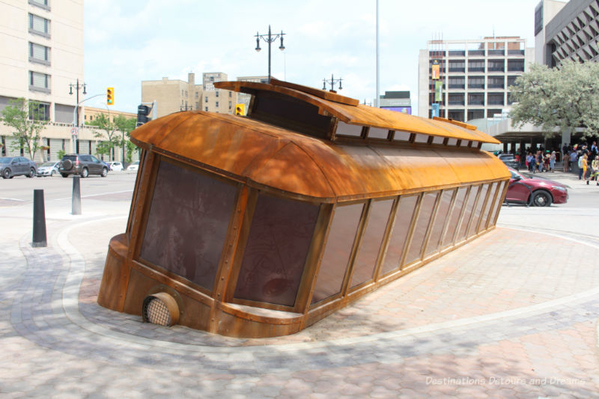
Monument to Winnipeg Streetcar Strikes
St. Johns 1914




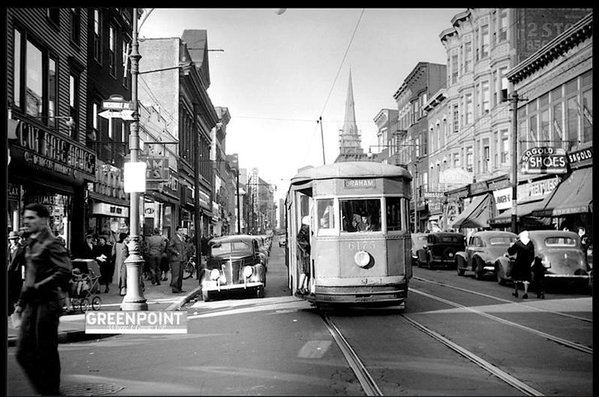
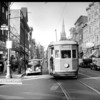
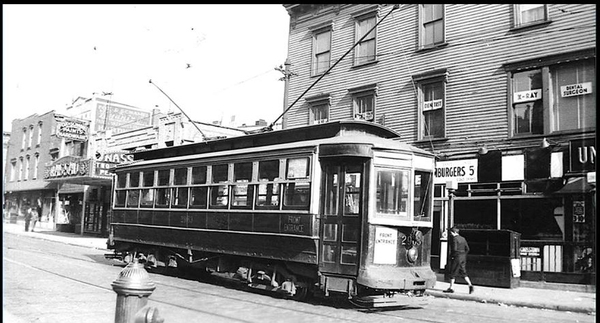


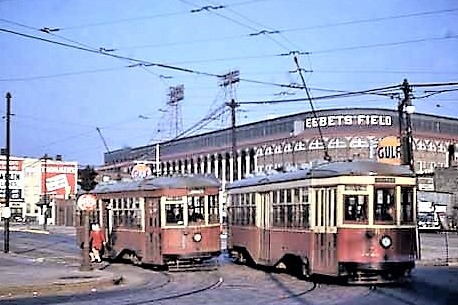
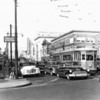
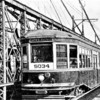
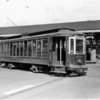
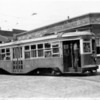
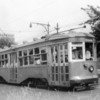
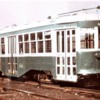
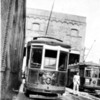

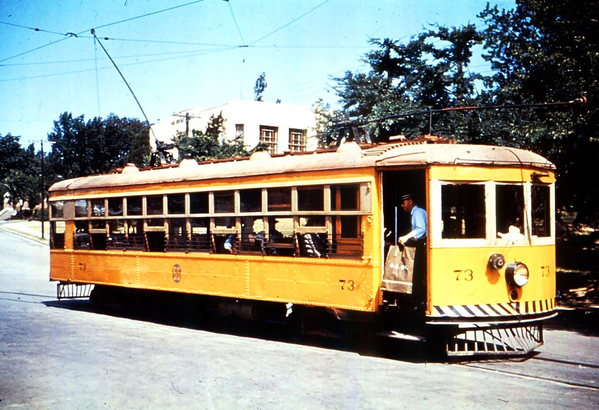
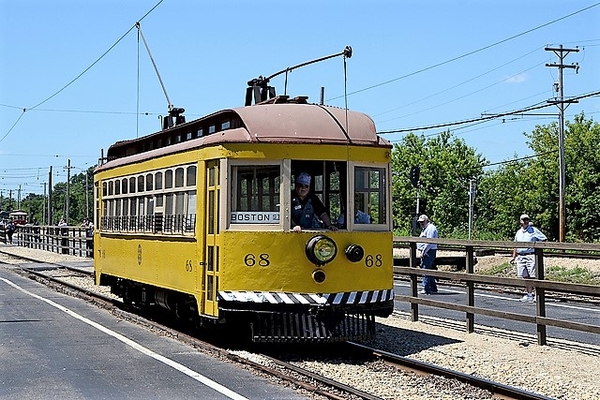
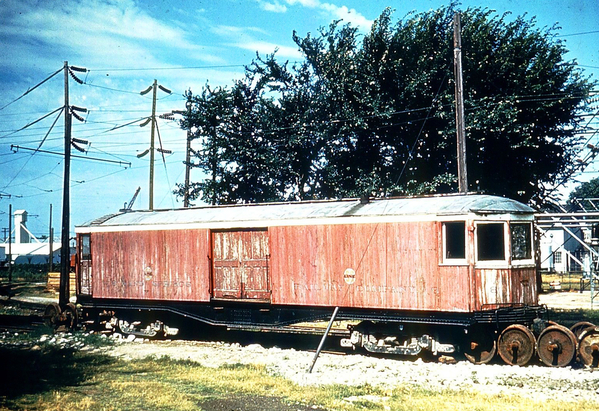
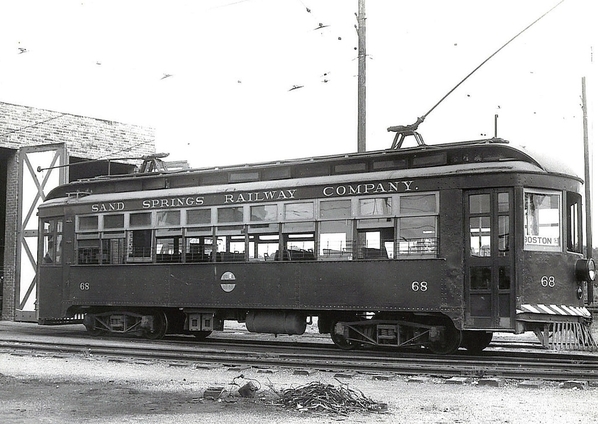
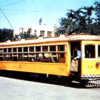
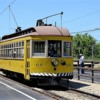
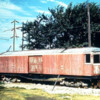
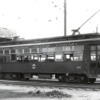
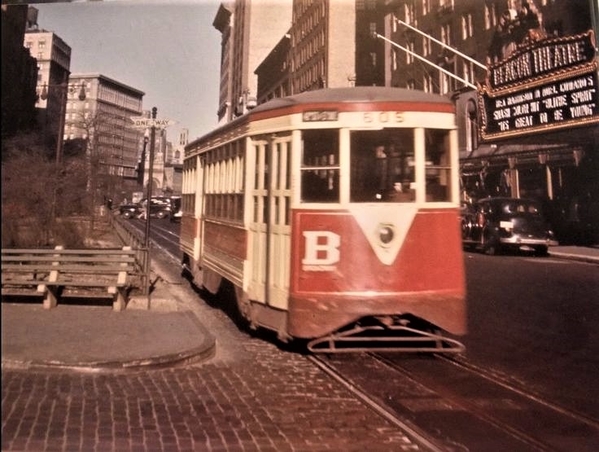
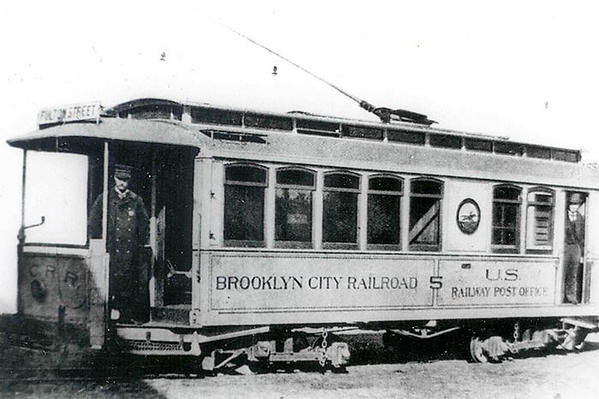
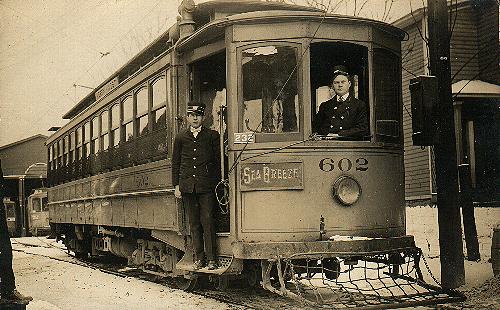
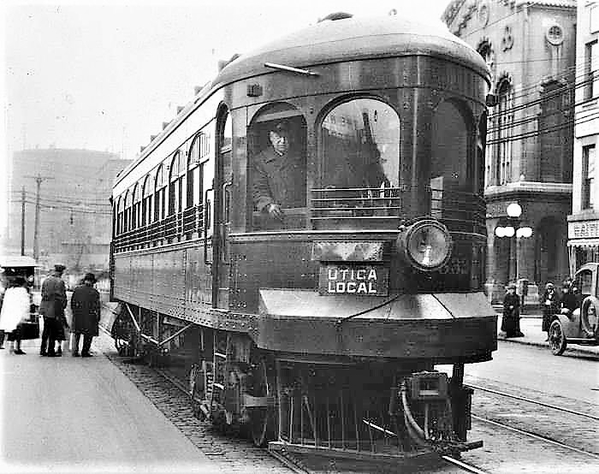


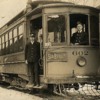
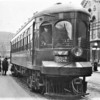
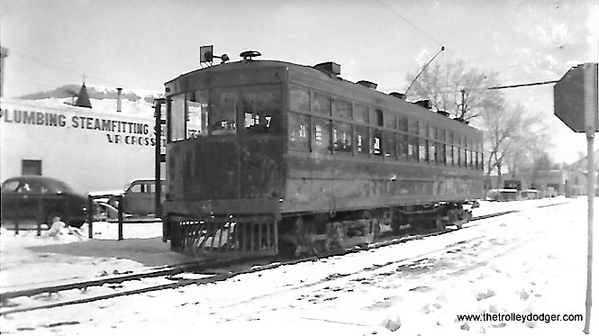

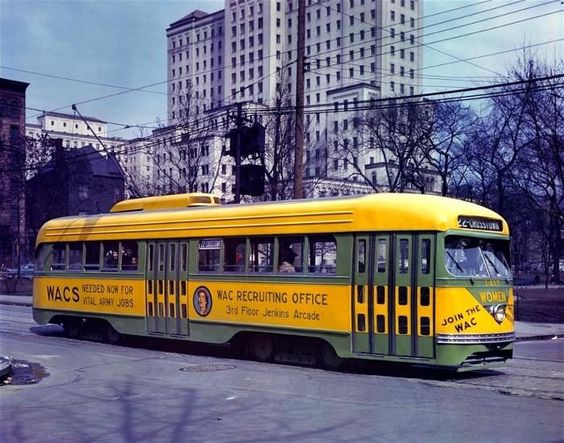
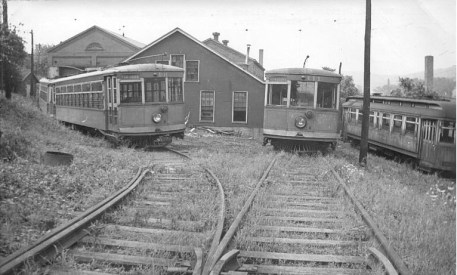
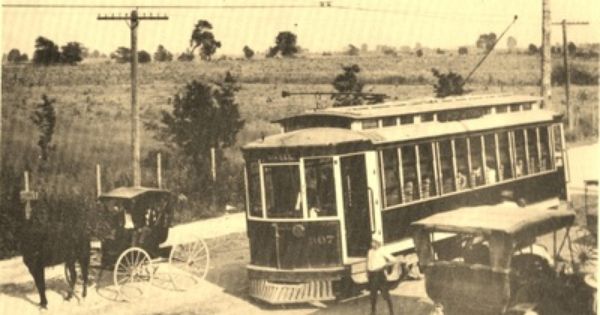
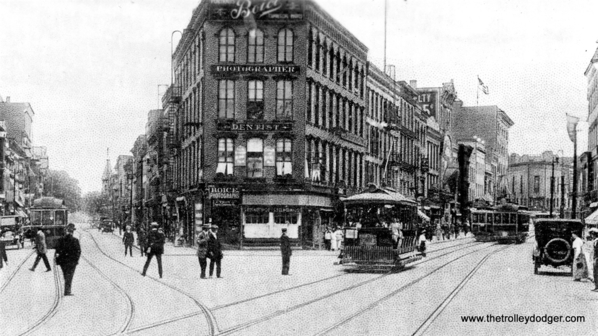
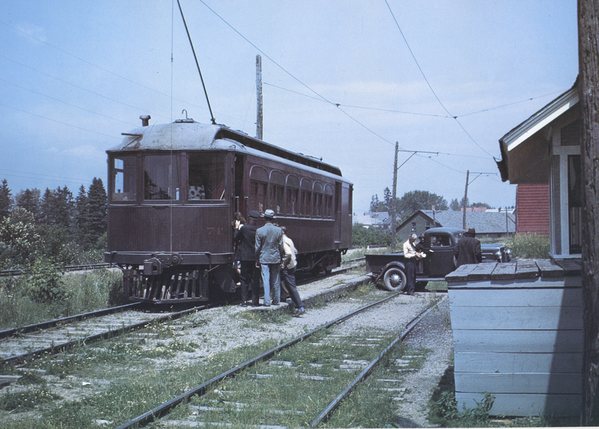


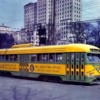

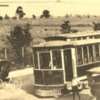

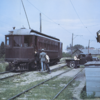
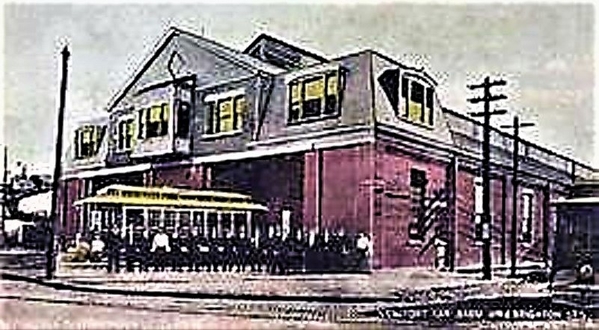
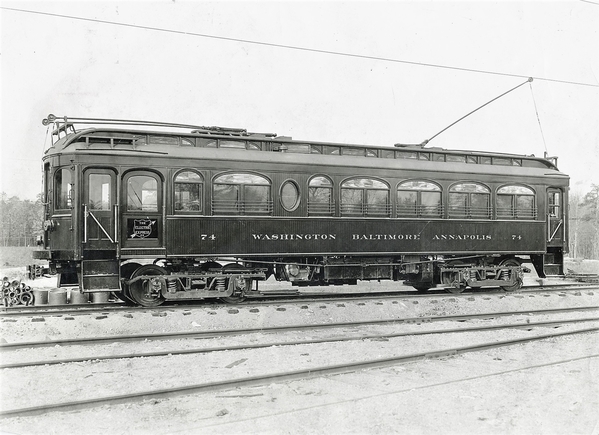
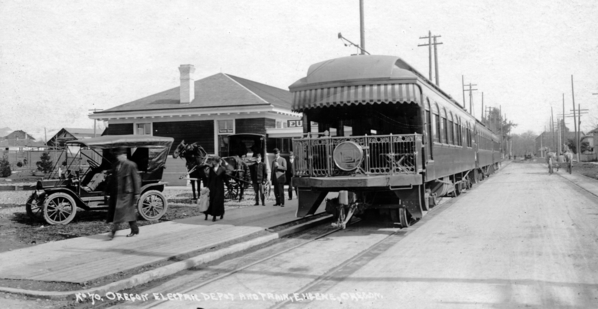
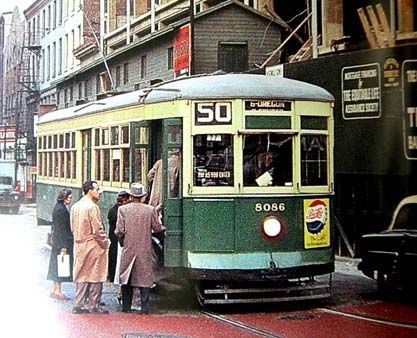
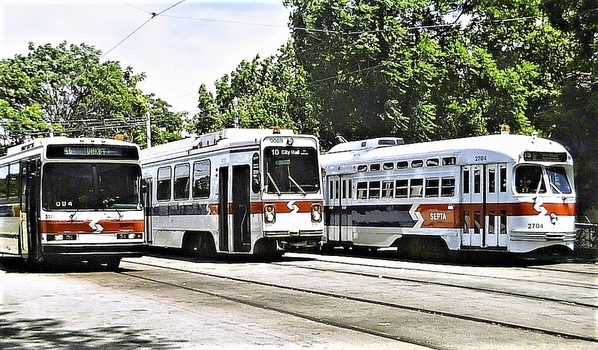
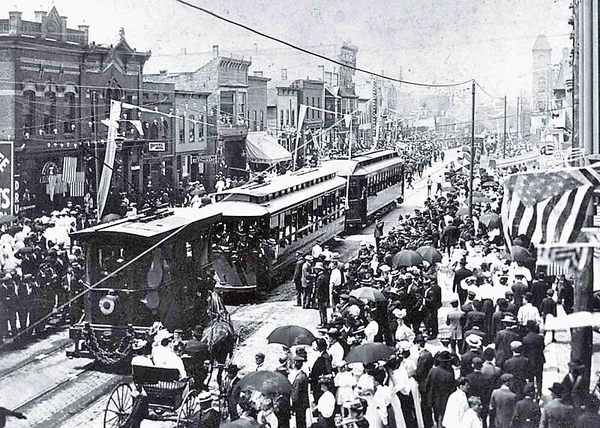 Holland Electric, Rhode Island
Holland Electric, Rhode Island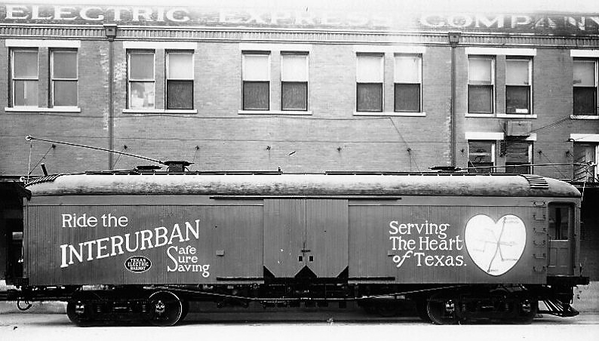
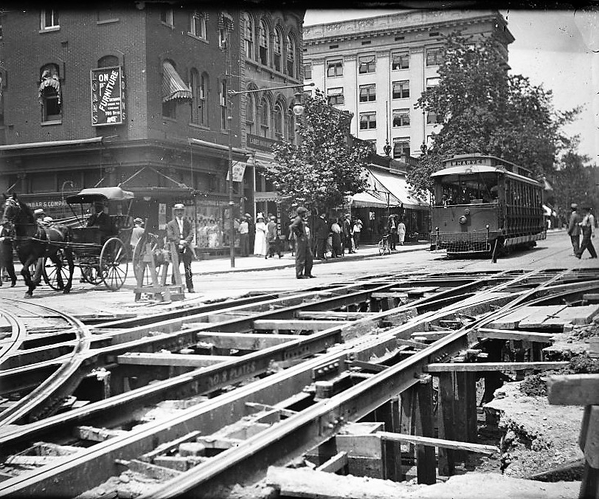
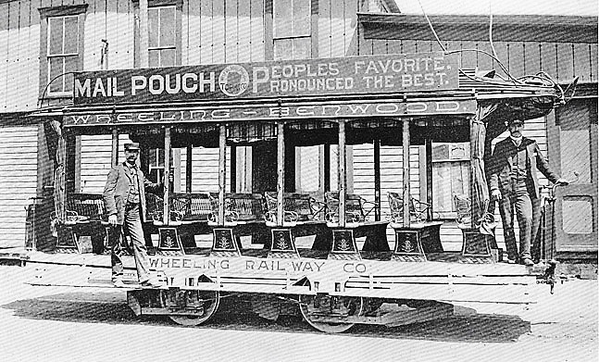
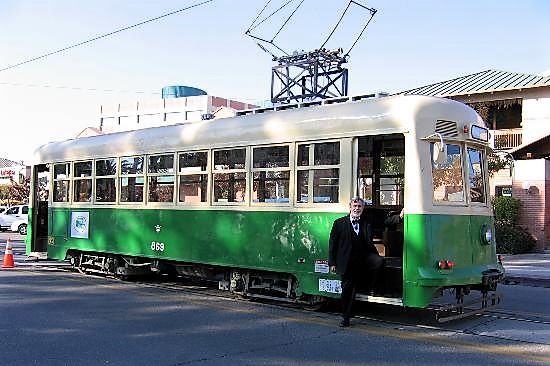
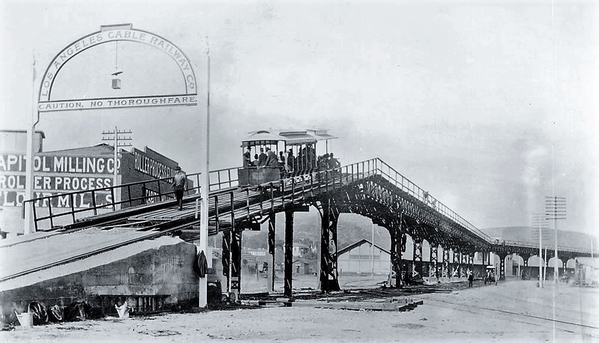
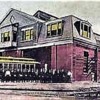


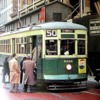
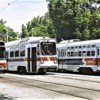






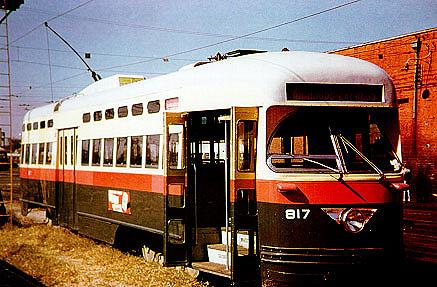
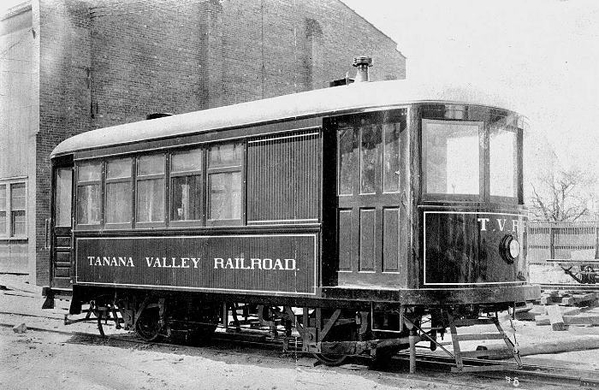
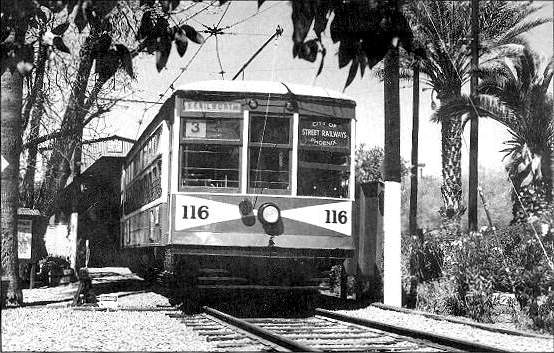
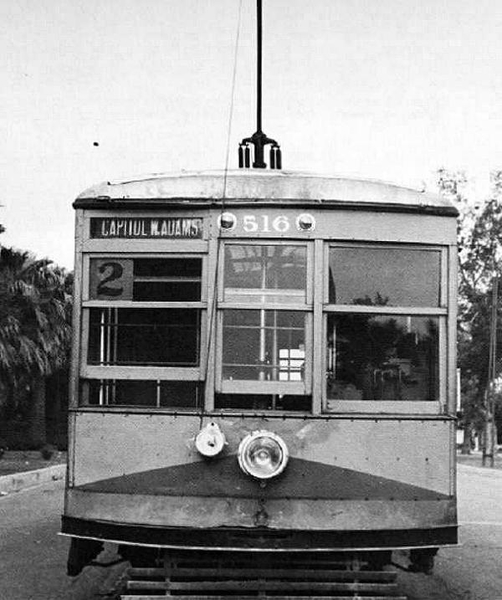
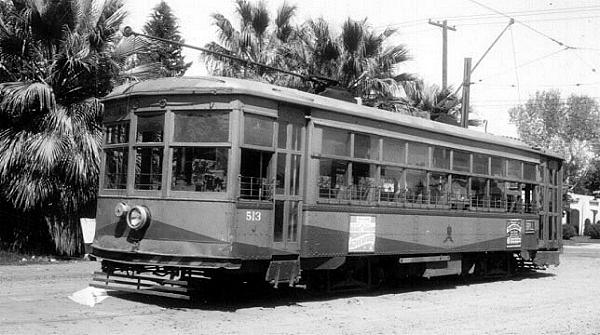
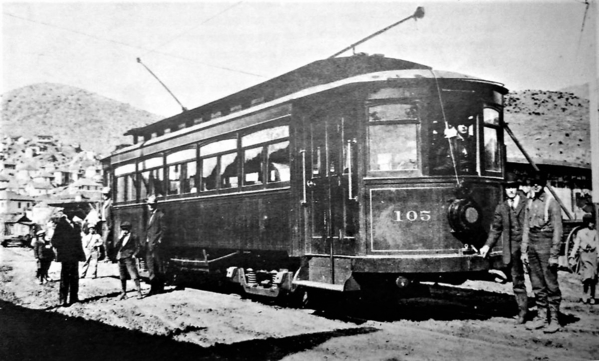
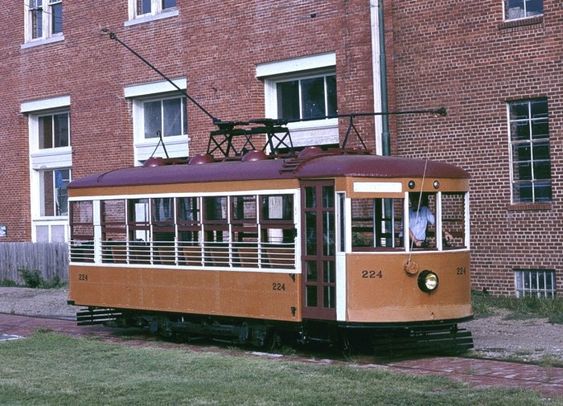
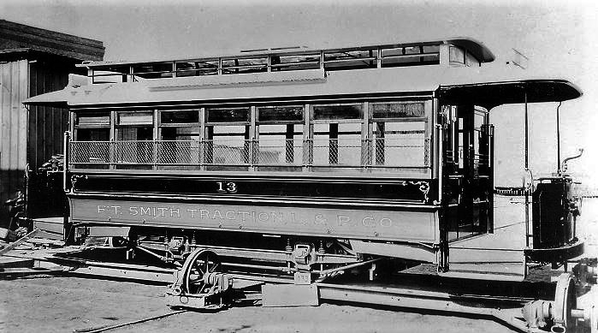
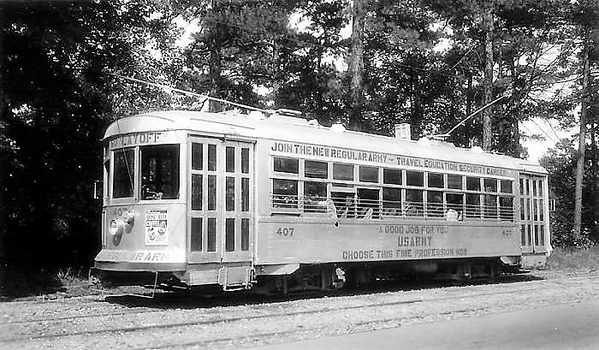
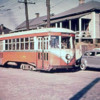
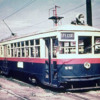
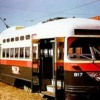
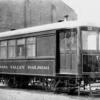
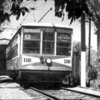
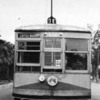
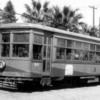
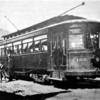

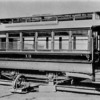
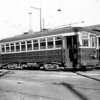
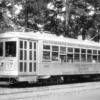
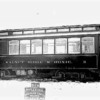
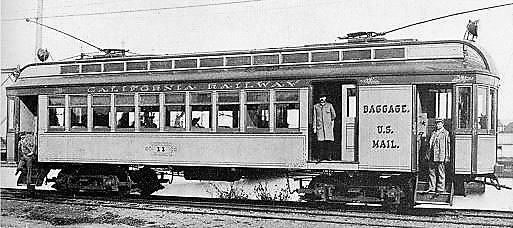


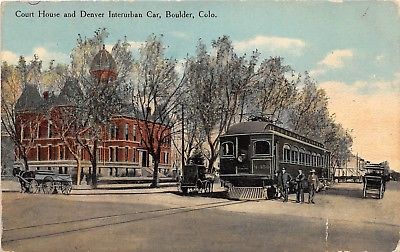
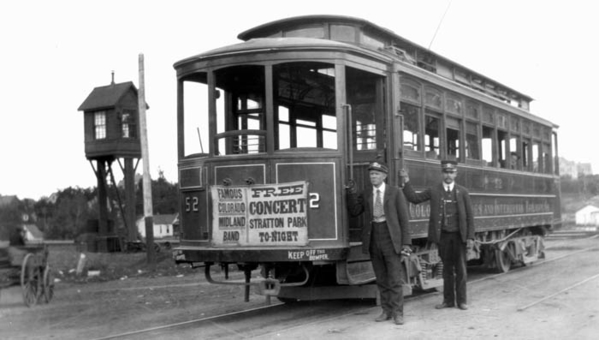
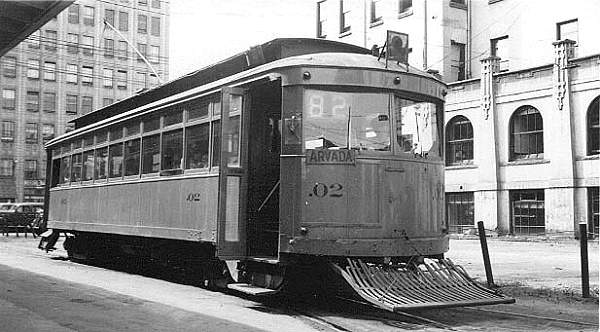
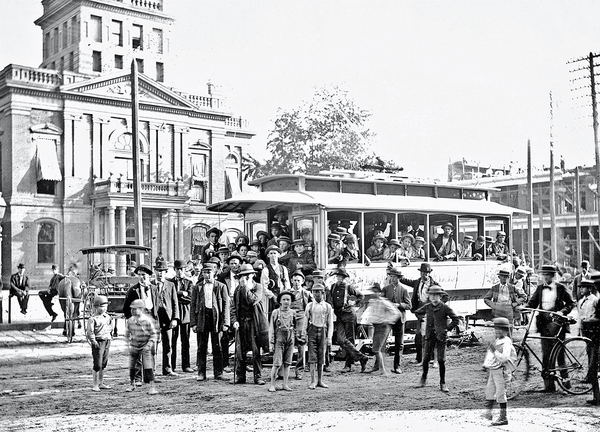
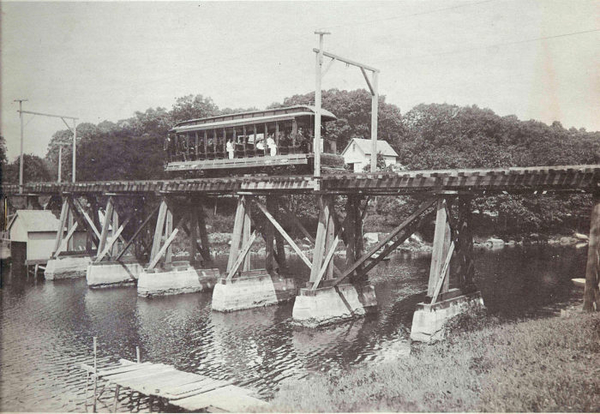
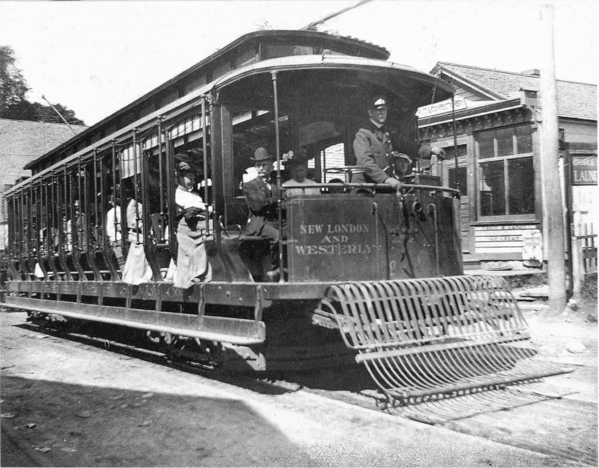 New London & Westerly Car in Groton, Connecticut
New London & Westerly Car in Groton, Connecticut
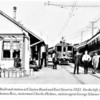

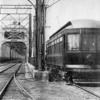
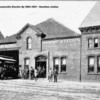

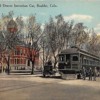
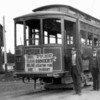
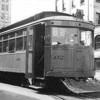



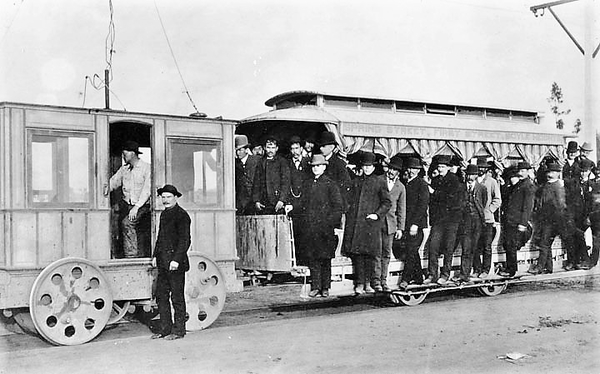 Los Angeles 1st Electric Car
Los Angeles 1st Electric Car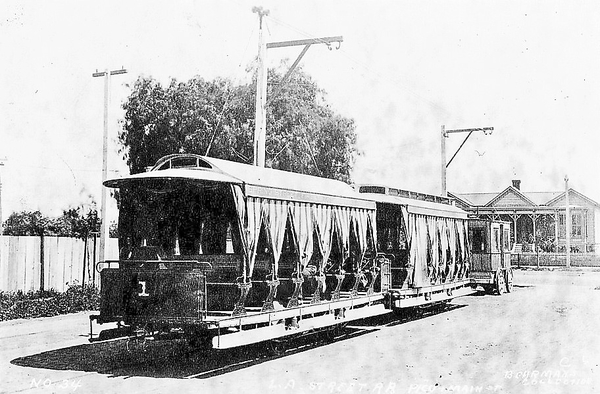
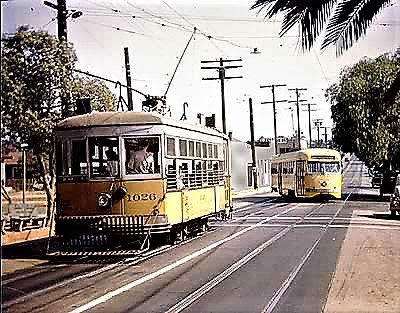
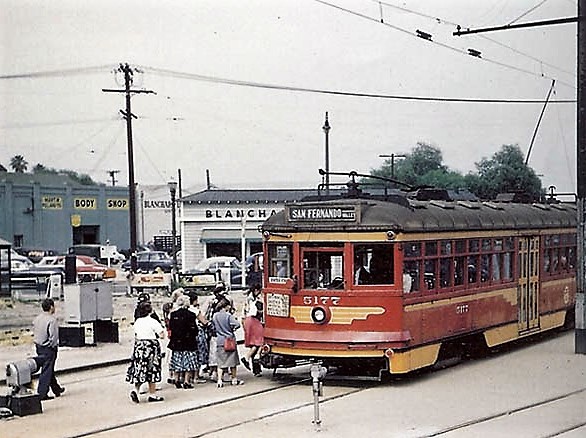
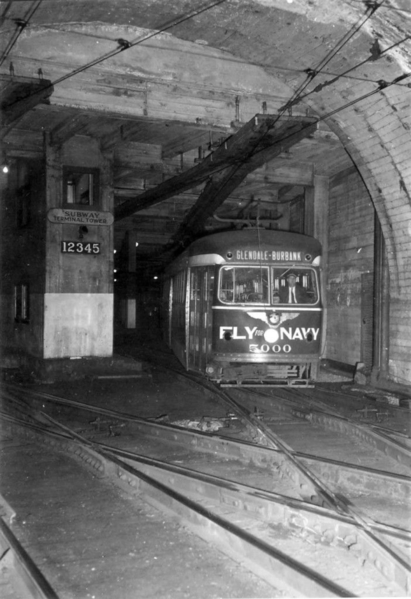

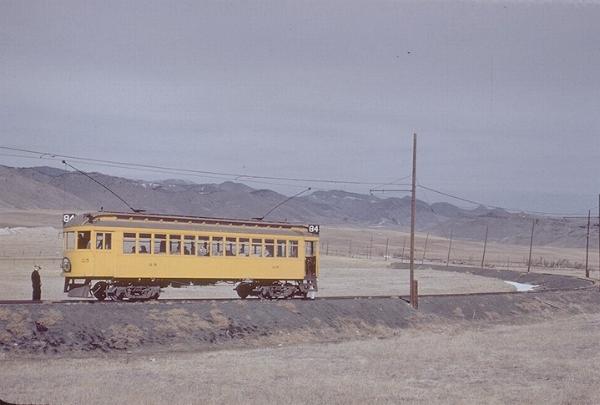

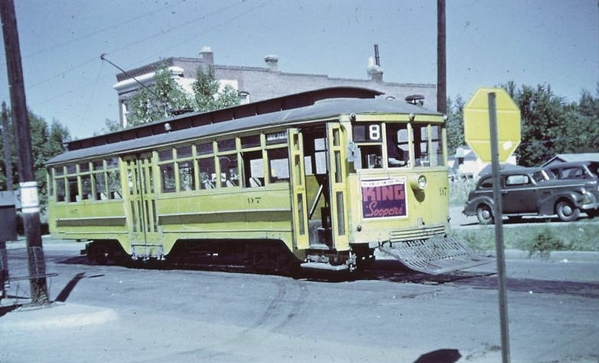

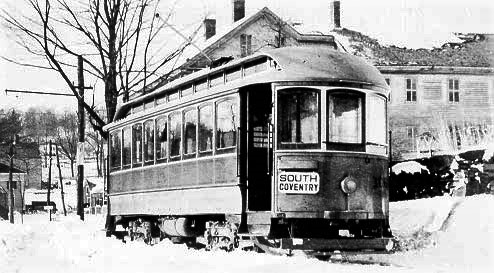


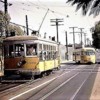
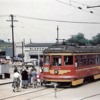
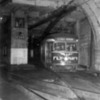
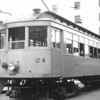
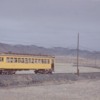
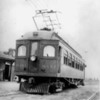
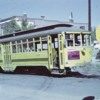

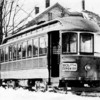
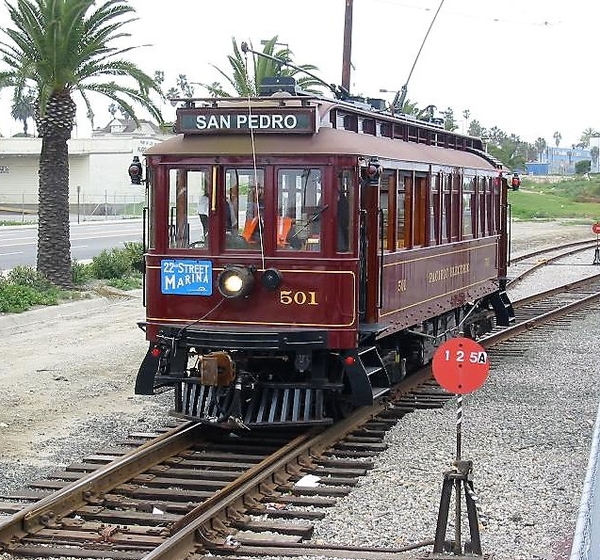
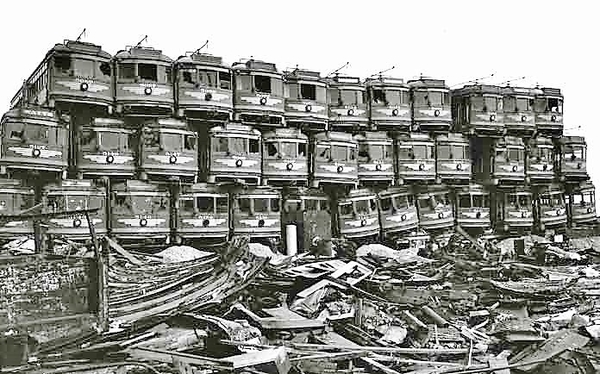
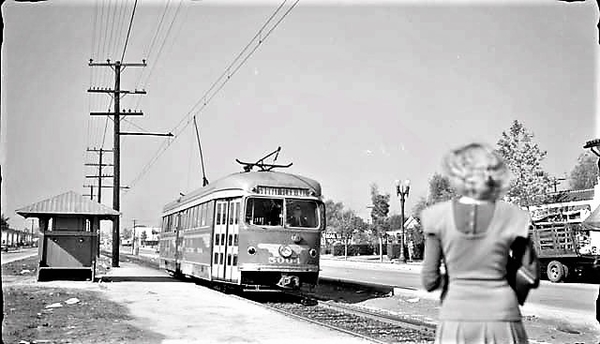
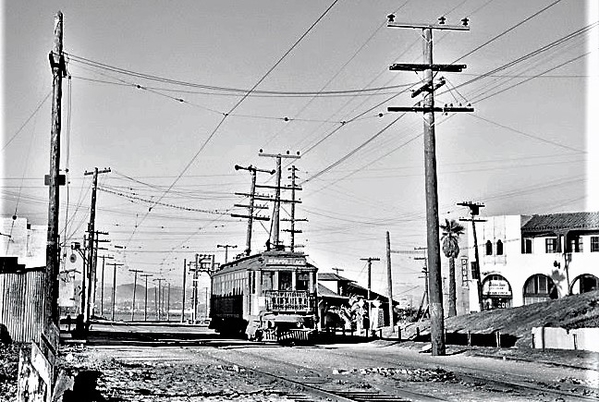


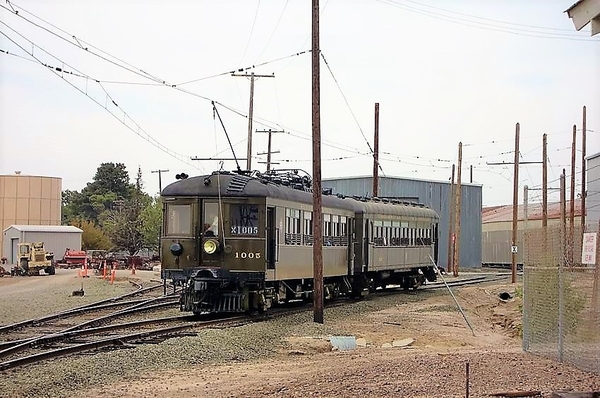
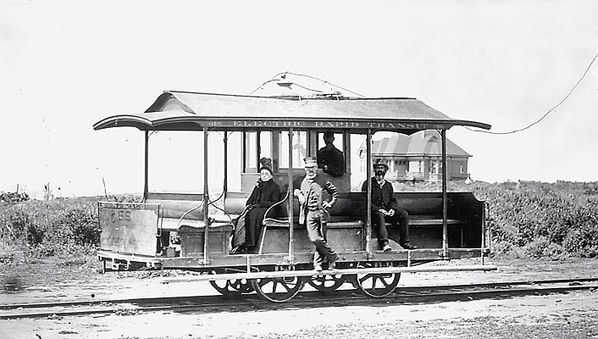
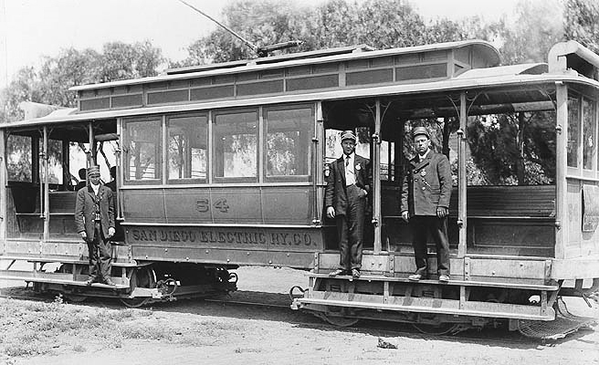
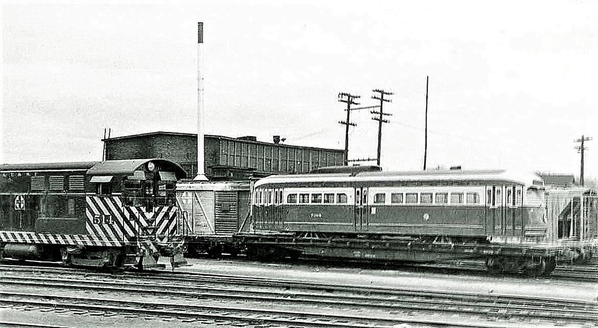




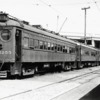
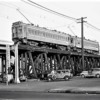
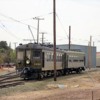



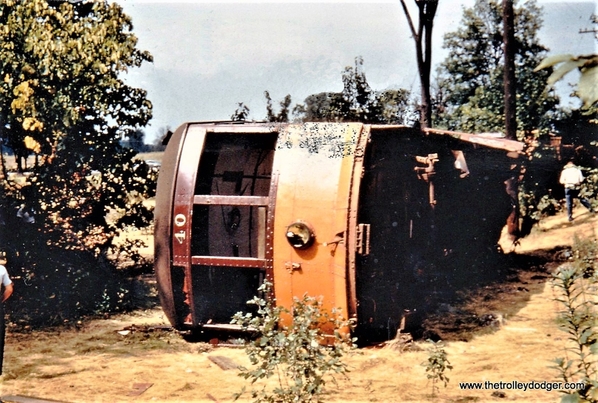
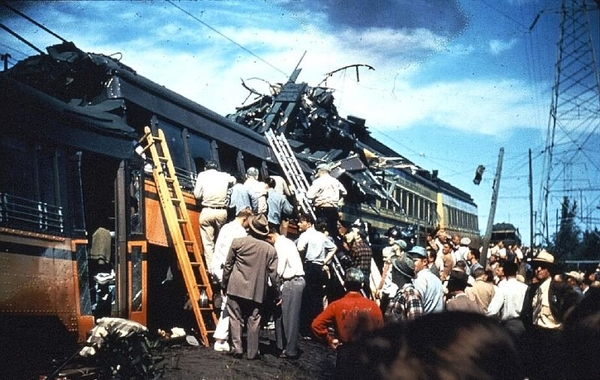
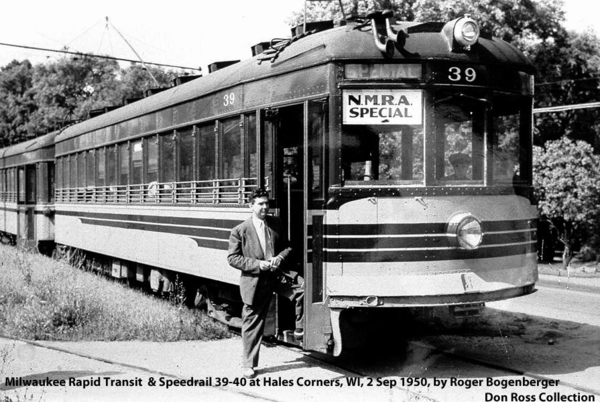
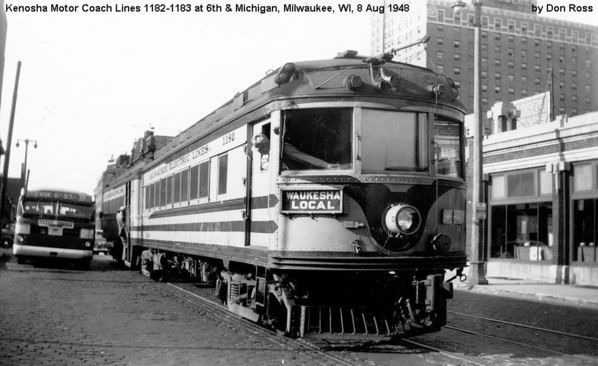
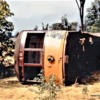



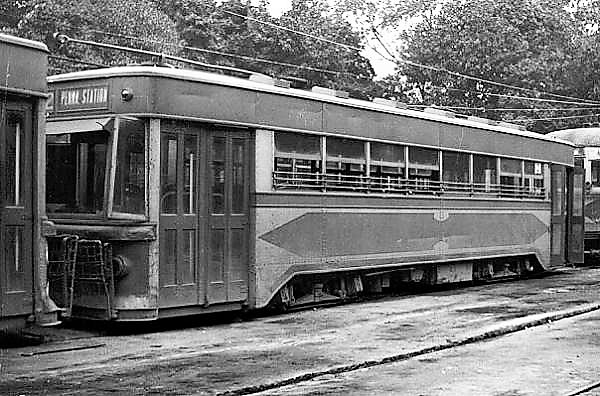
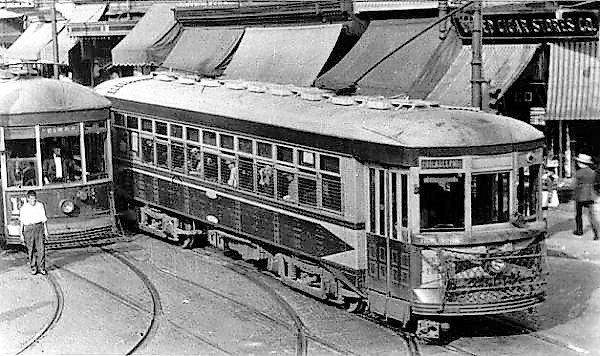
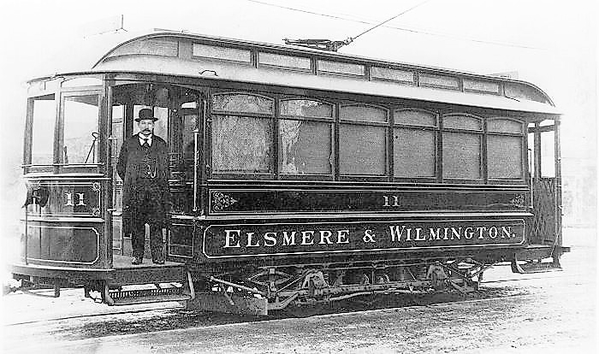
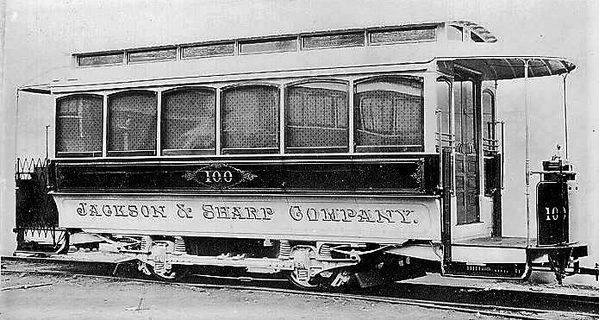
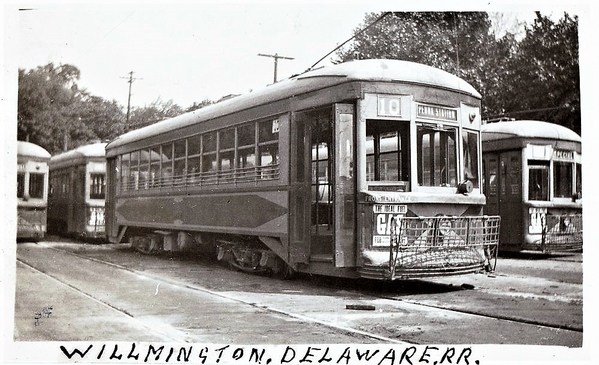
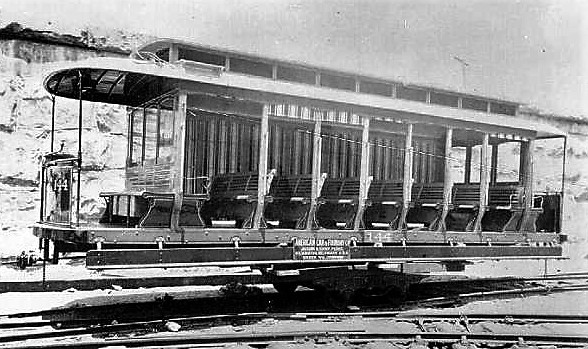

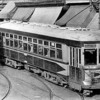

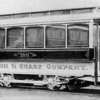
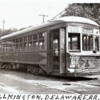
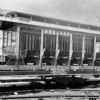
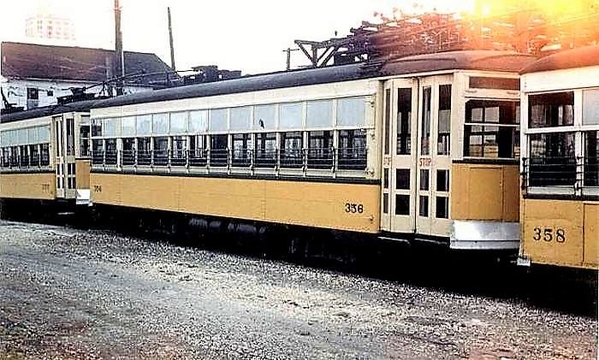
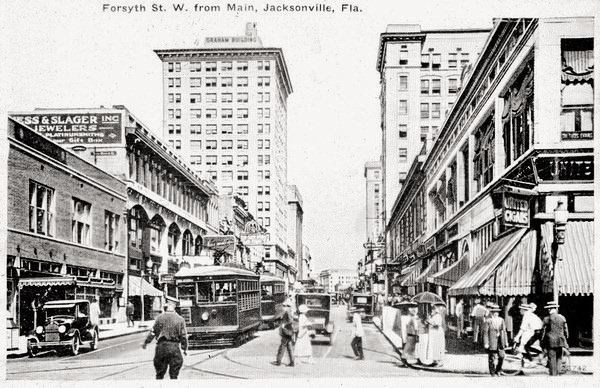
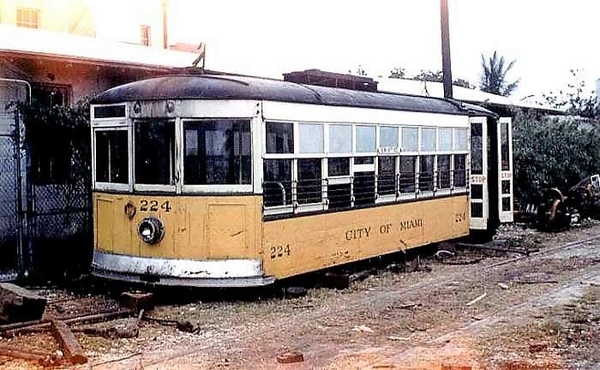
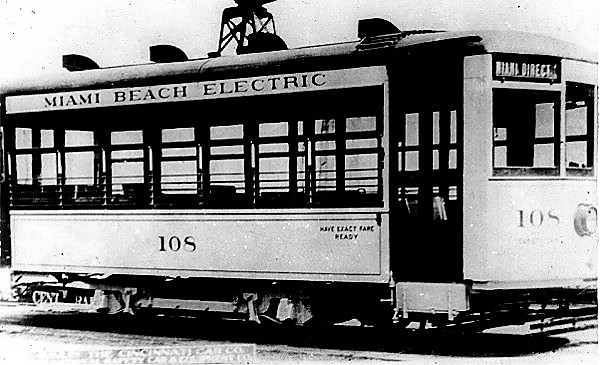
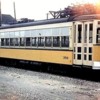


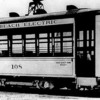
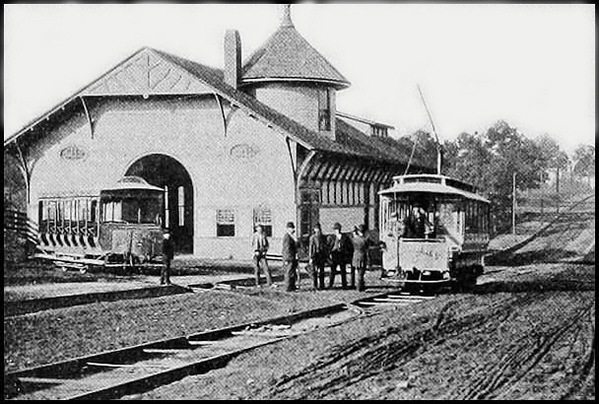
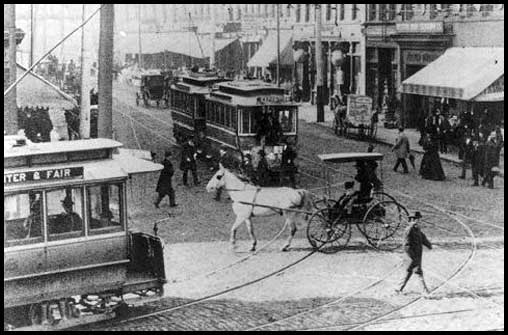
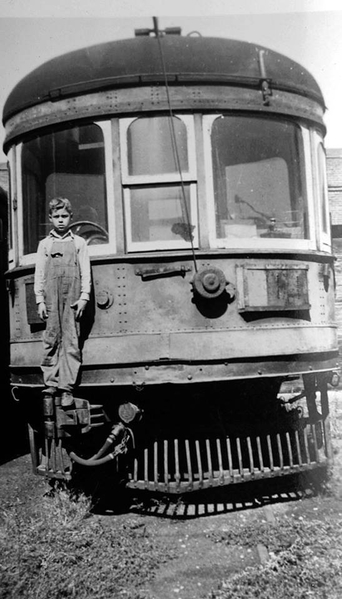
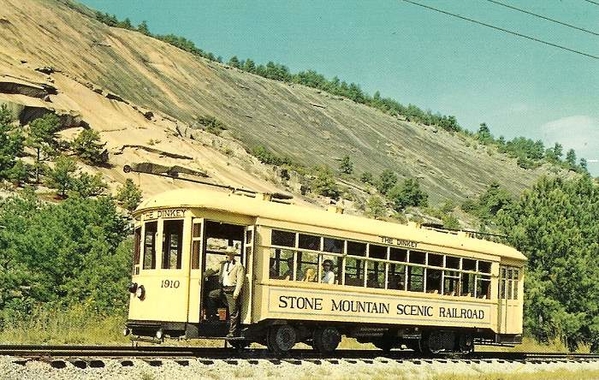
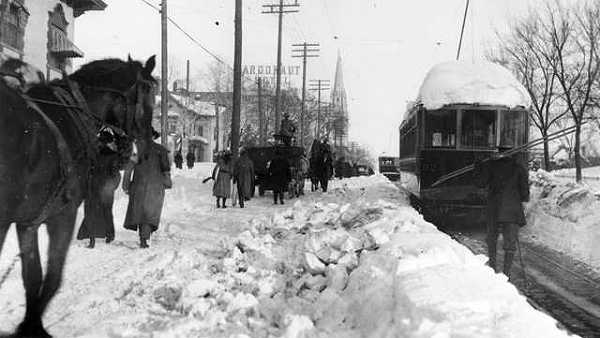
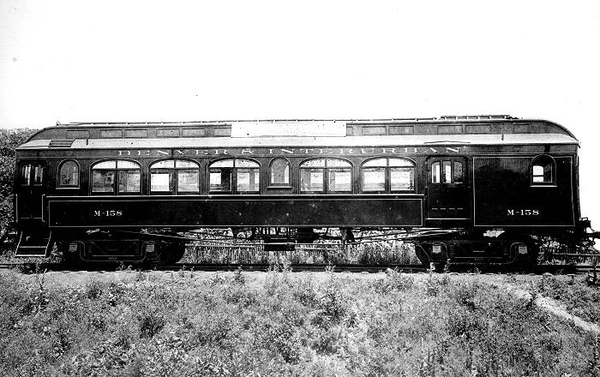
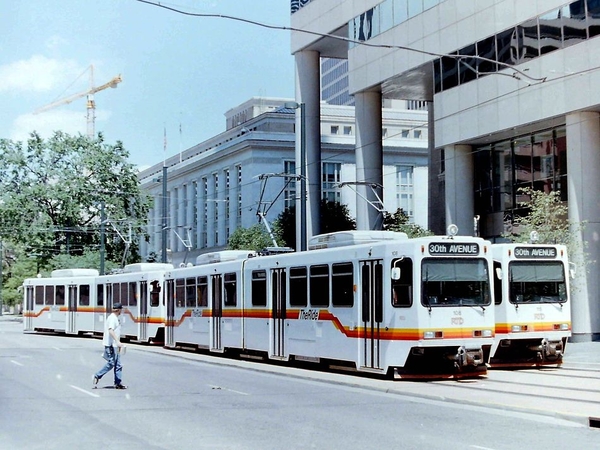
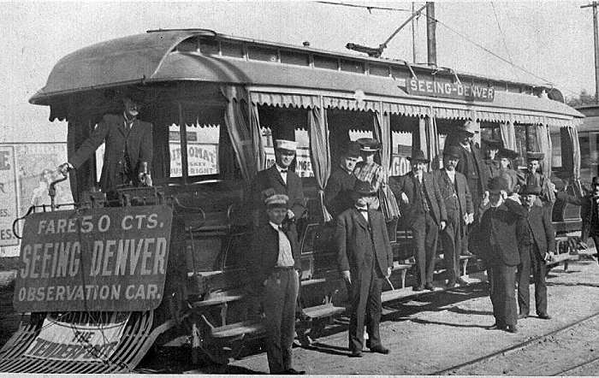


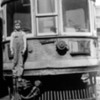
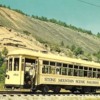




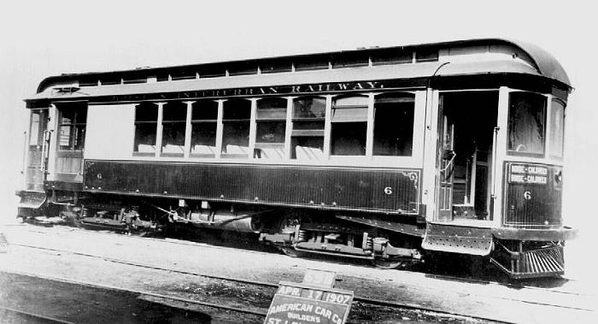
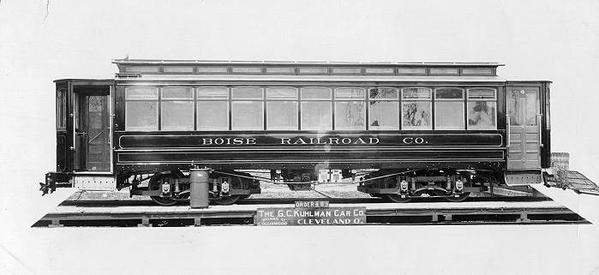
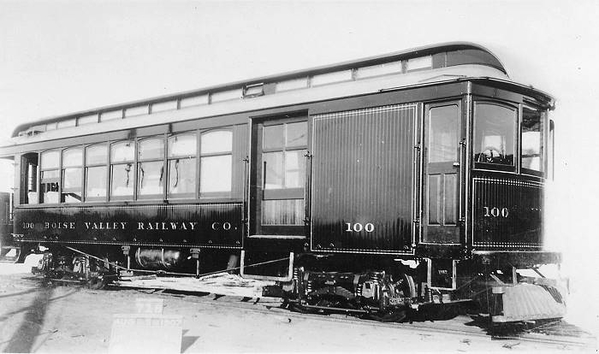
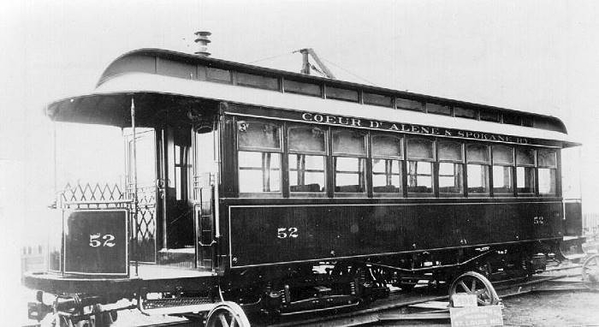
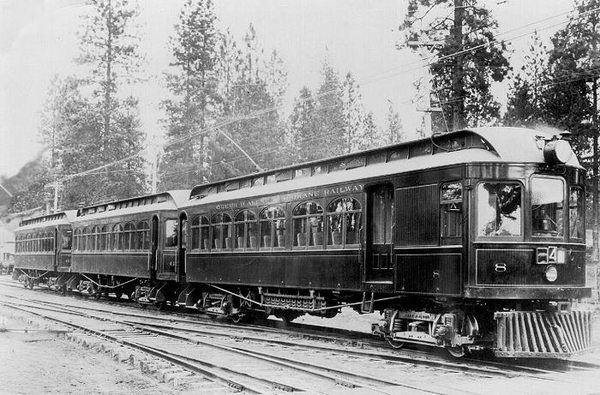
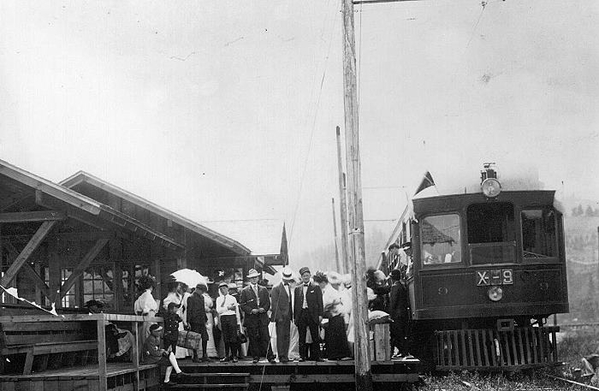
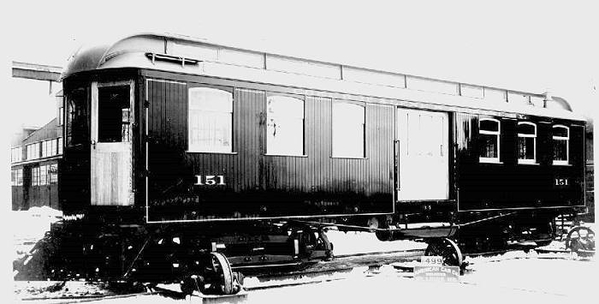
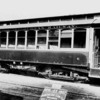
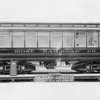

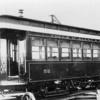
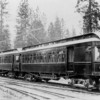
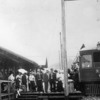


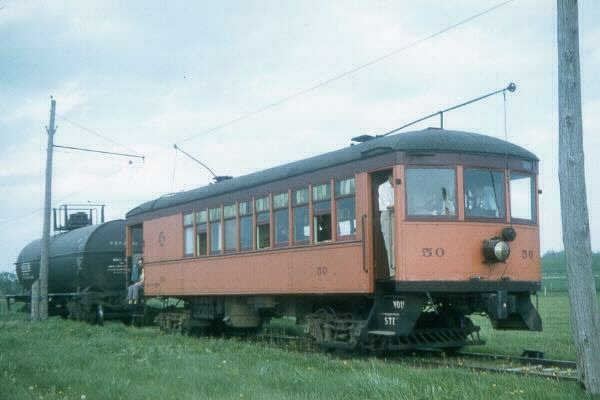
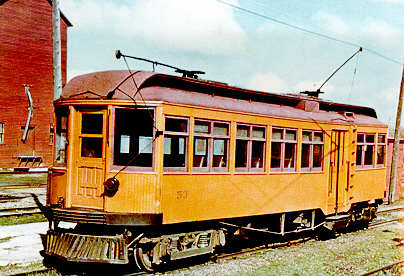
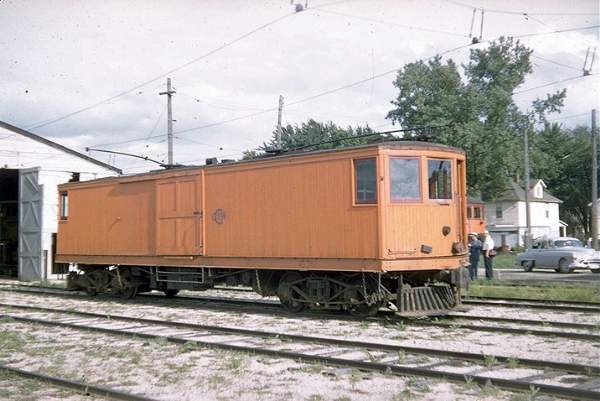
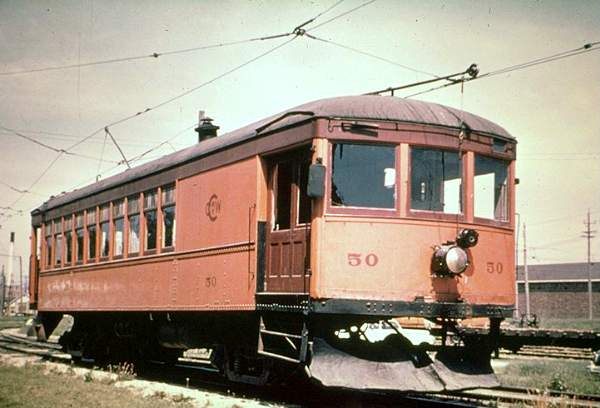

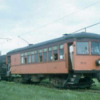
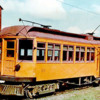
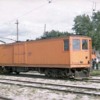
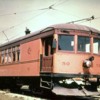

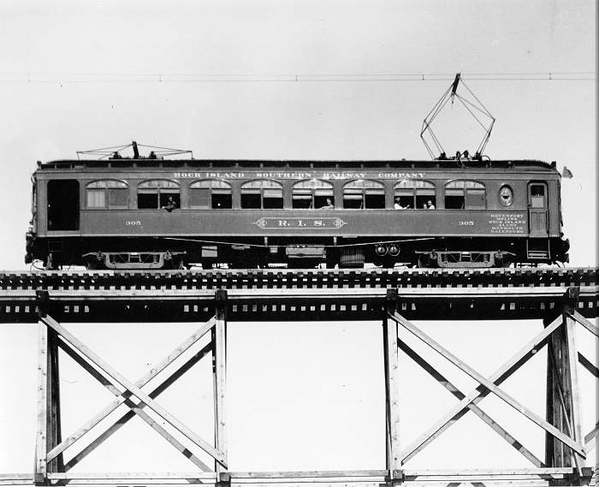
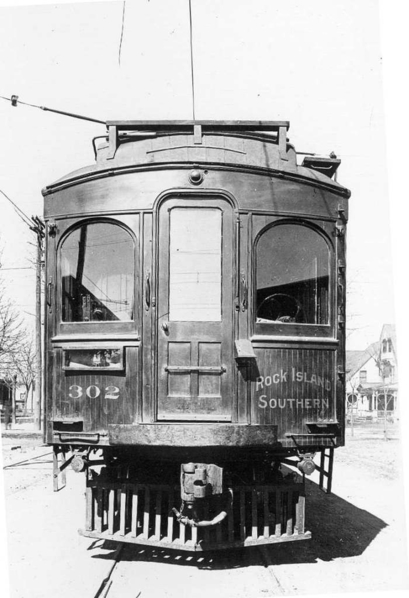
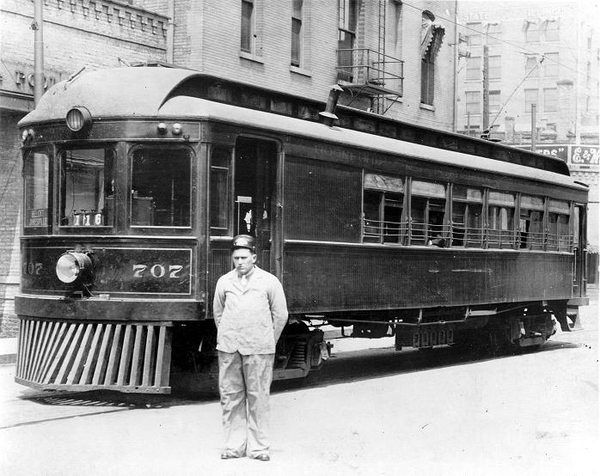 Rockford & Interurban Railway
Rockford & Interurban Railway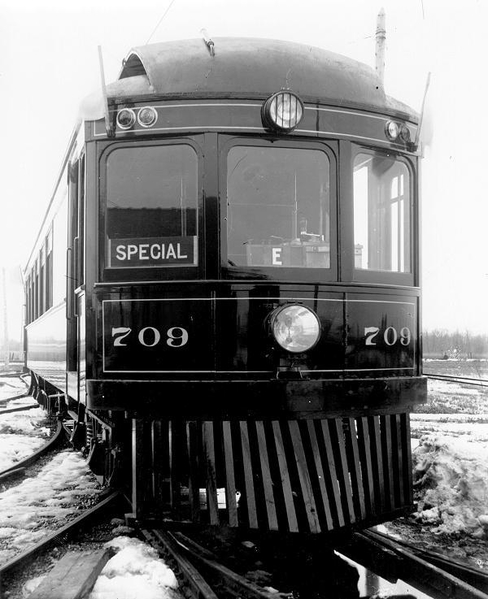
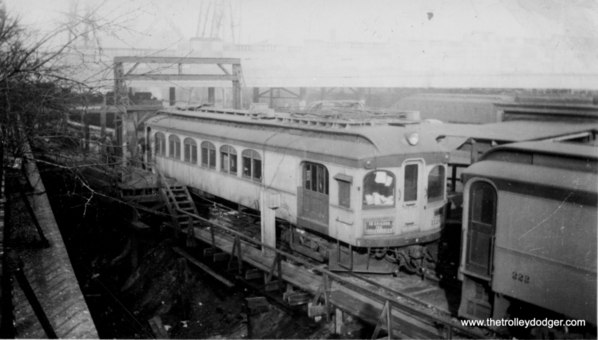
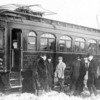
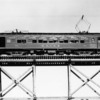
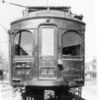
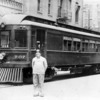
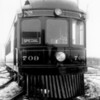
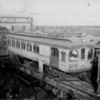
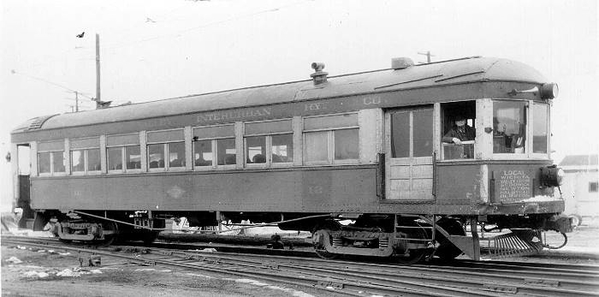
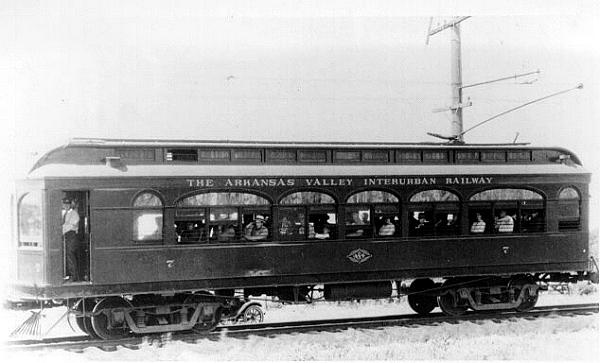
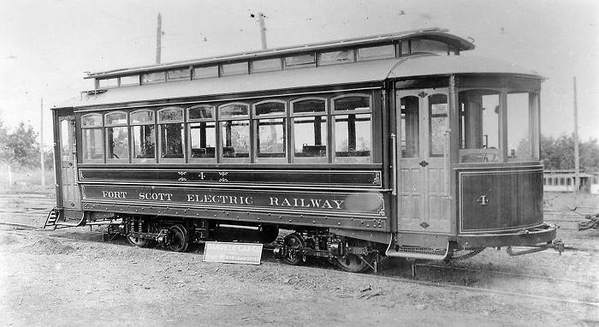
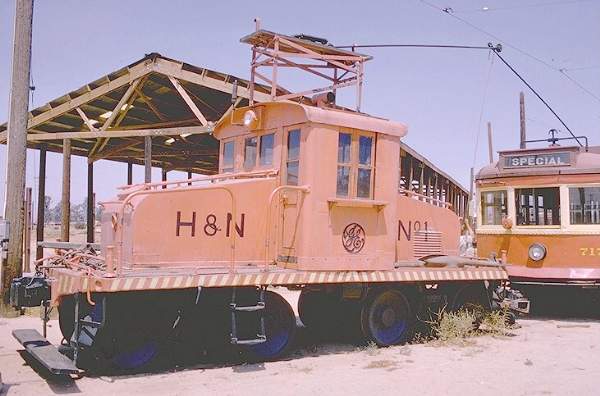
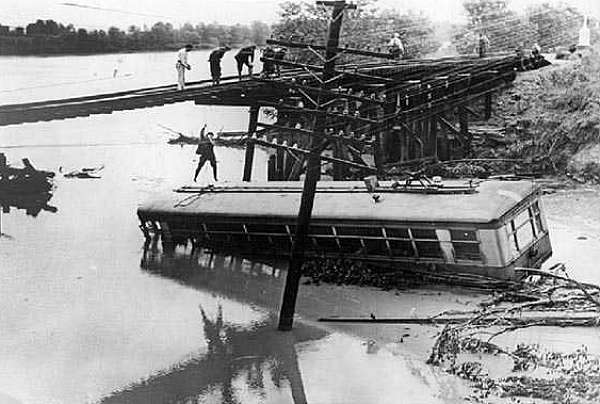
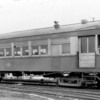
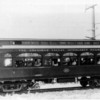
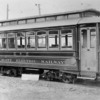
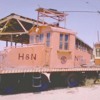
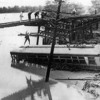
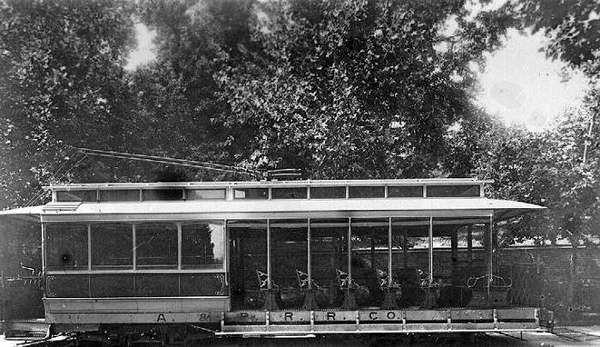
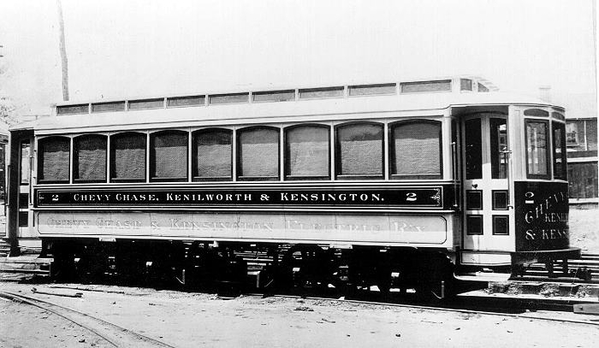
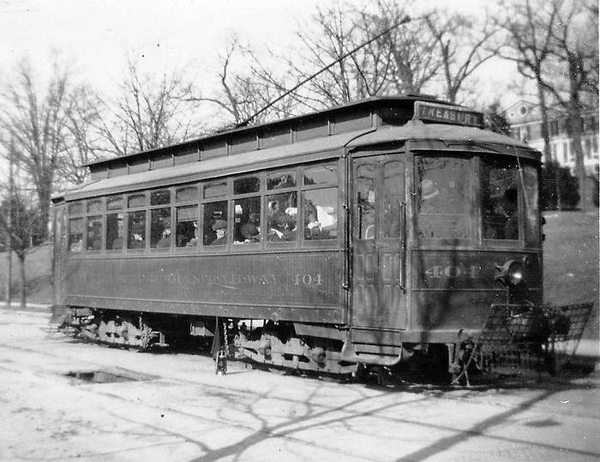
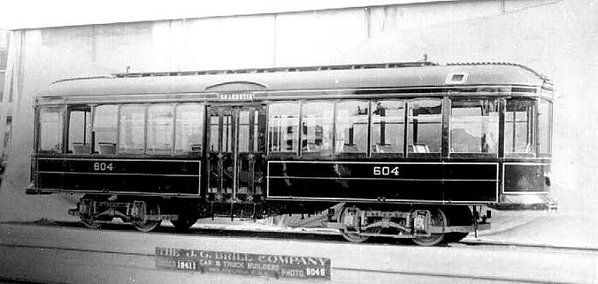
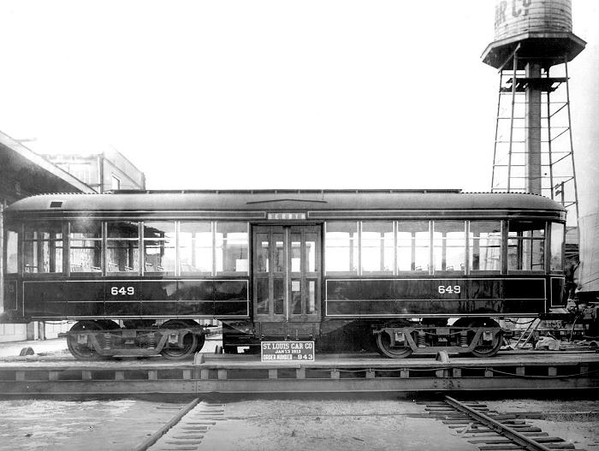
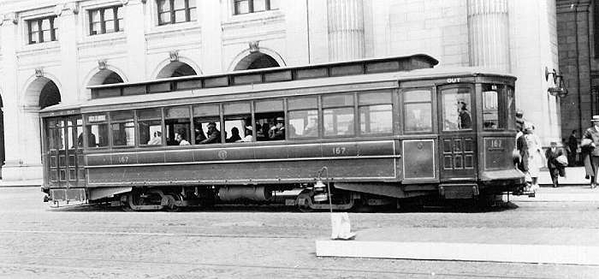 Capital Traction Co #167
Capital Traction Co #167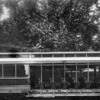
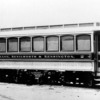
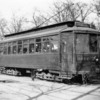
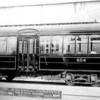
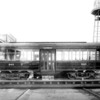
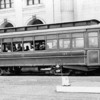
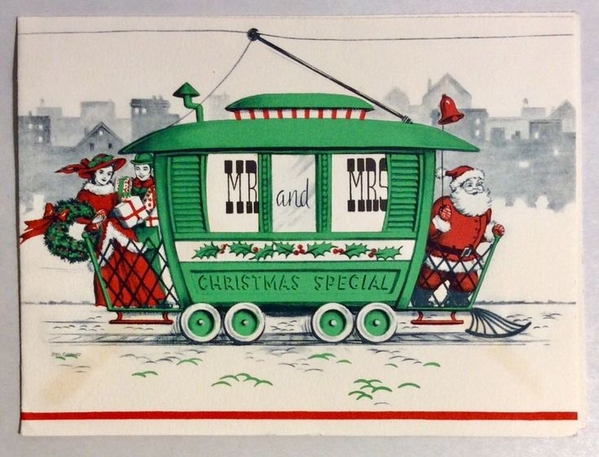

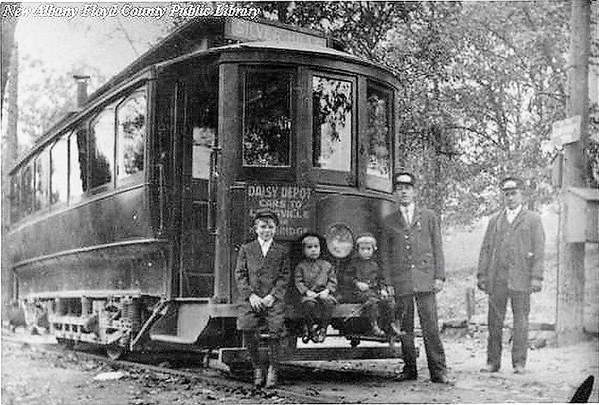
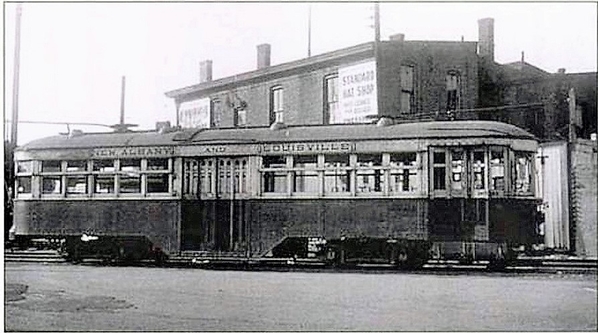
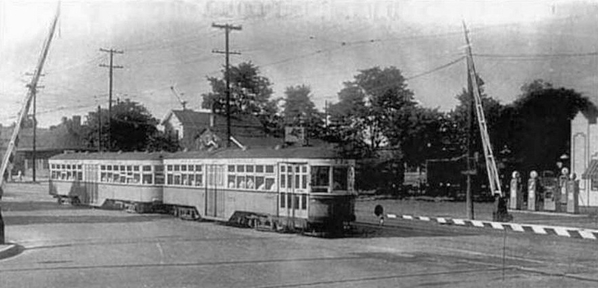
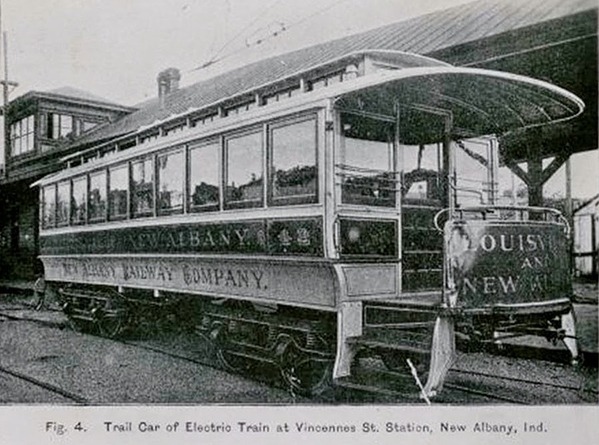
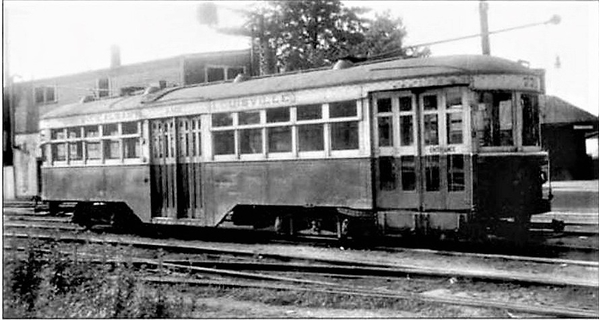

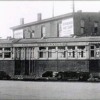
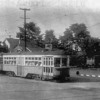
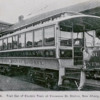
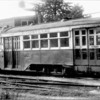
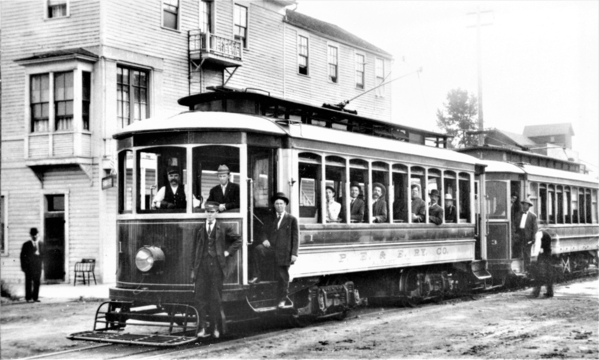
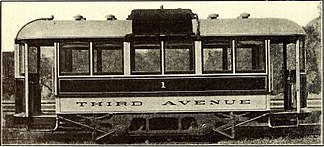
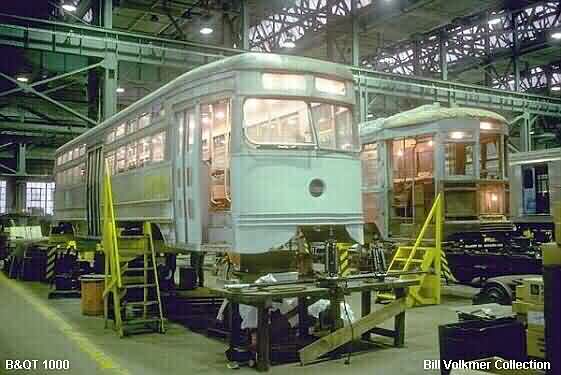
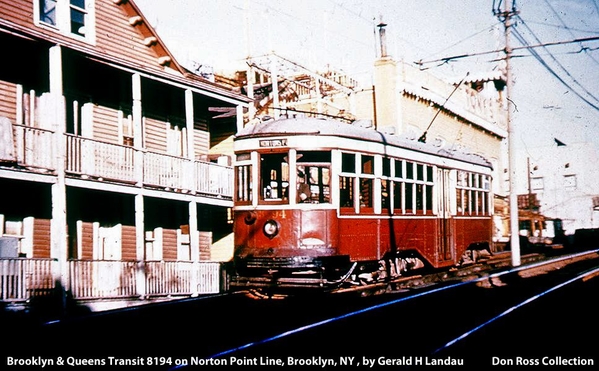
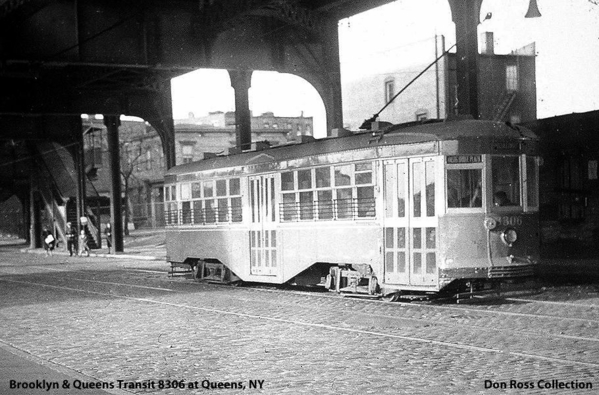

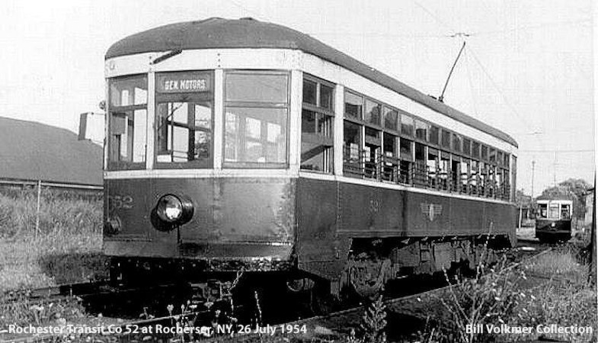
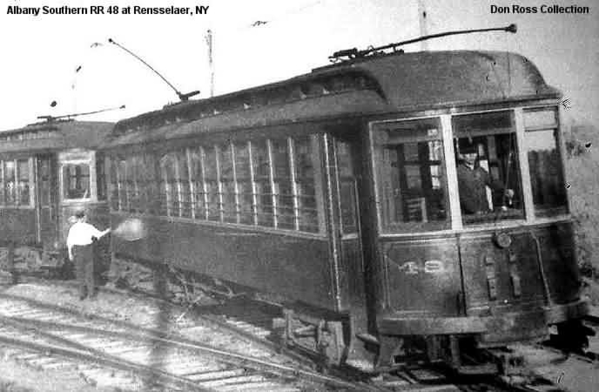
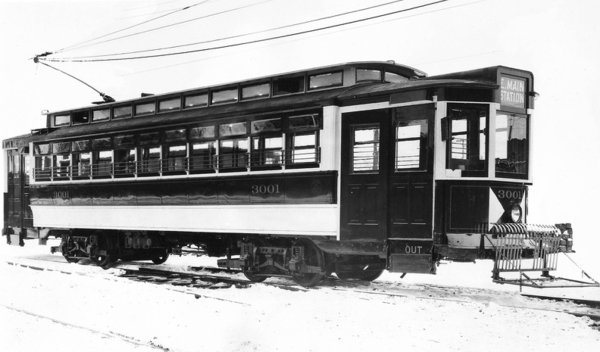
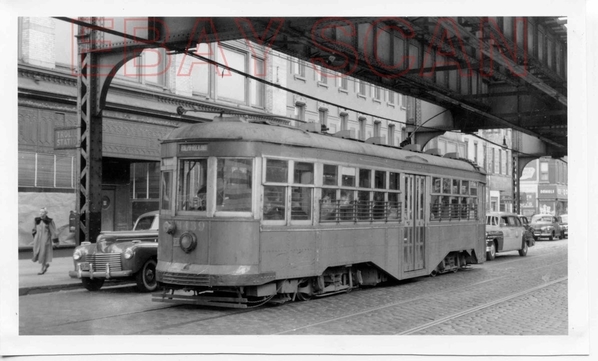
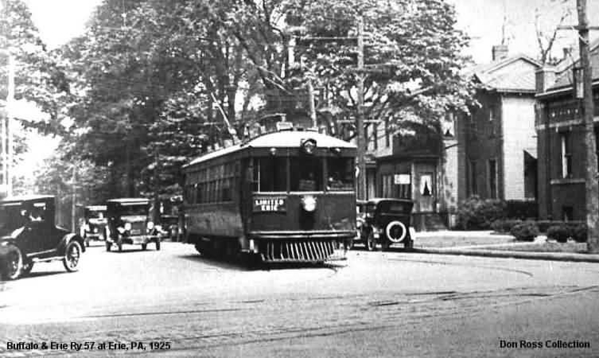
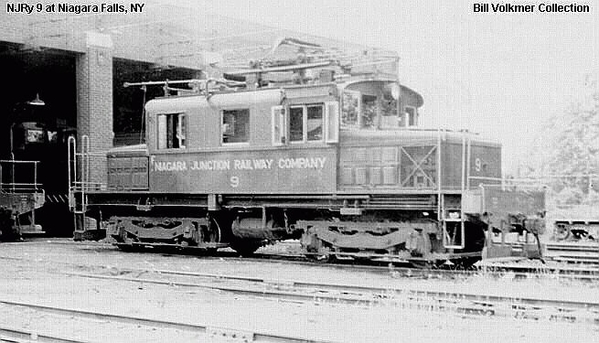
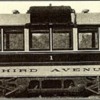










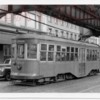

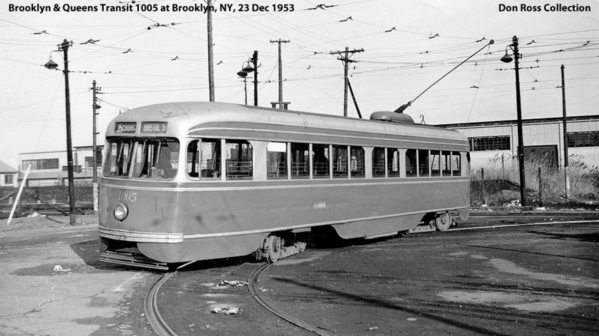
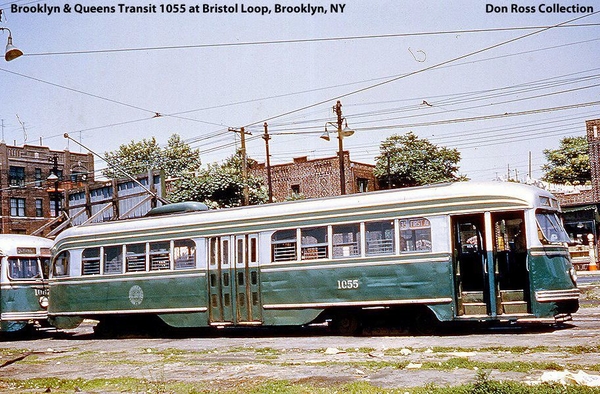

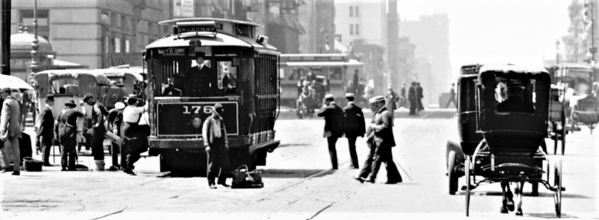

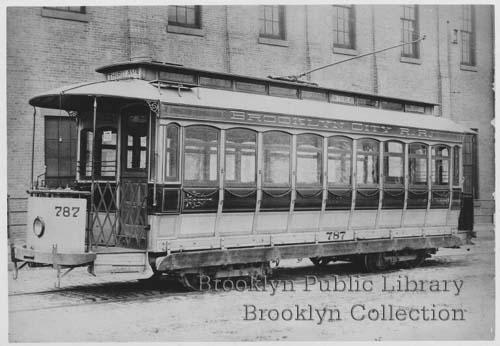
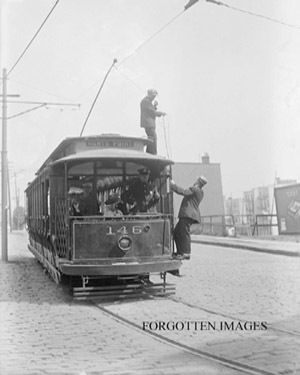
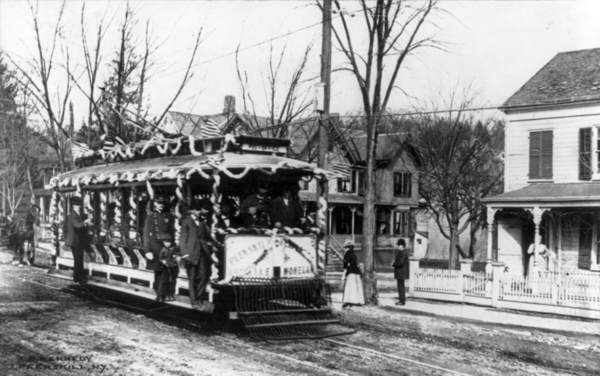
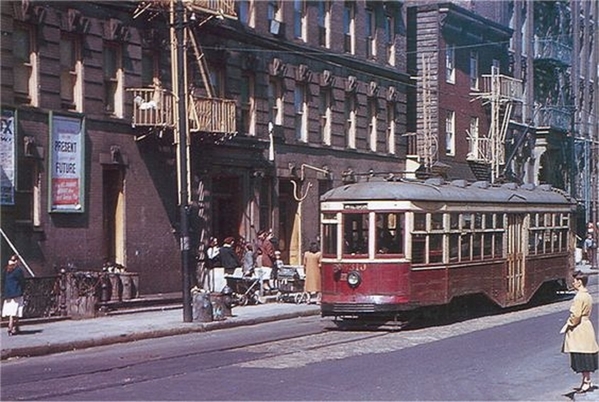
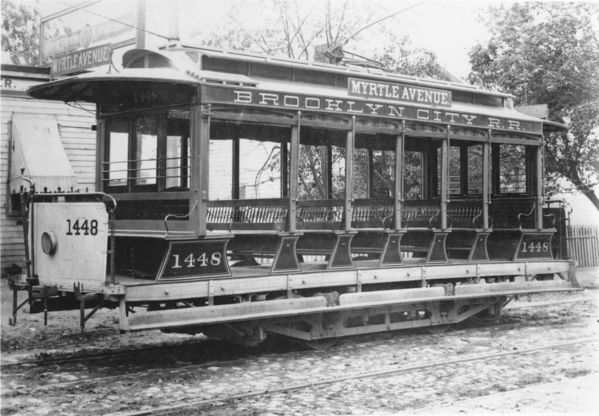

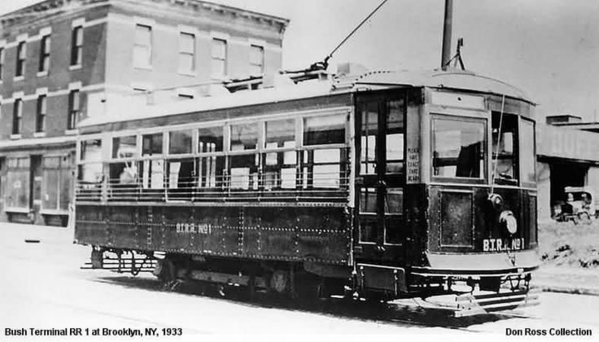

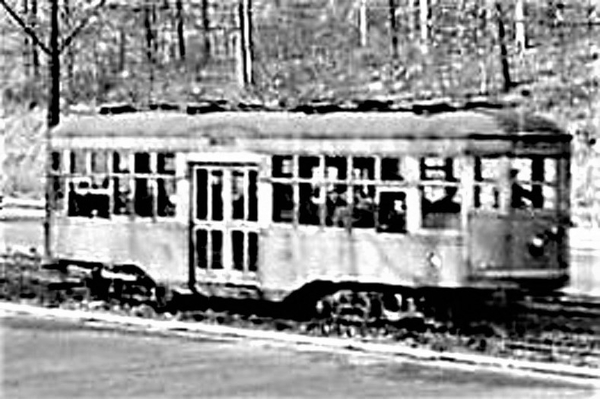
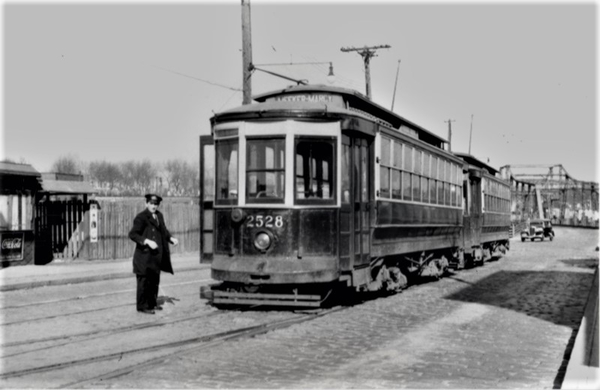
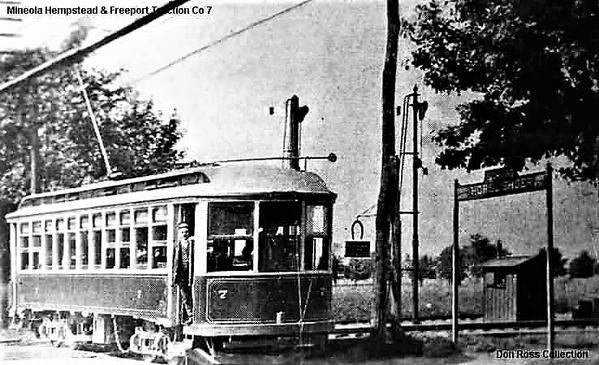
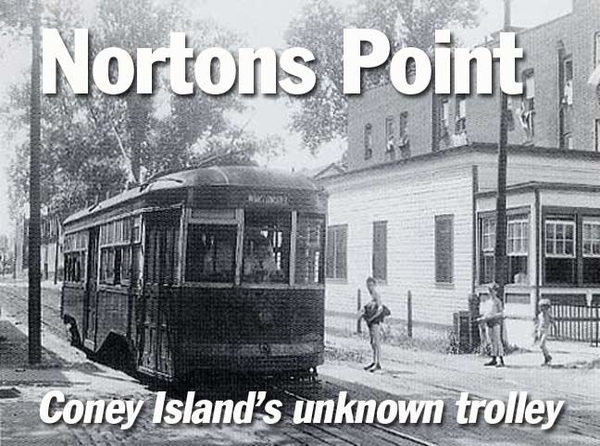
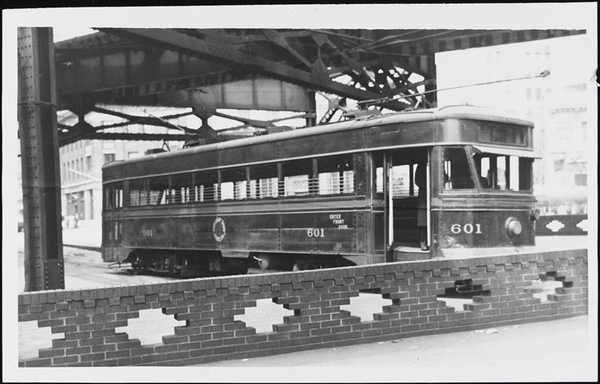
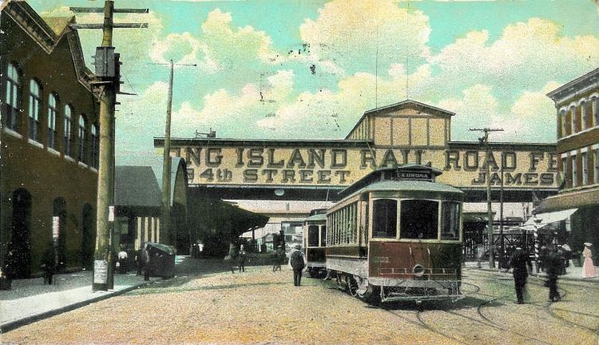




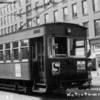

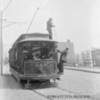
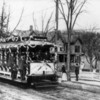

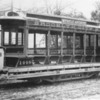
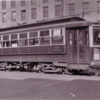
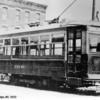
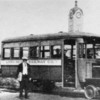
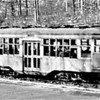
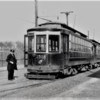
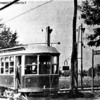

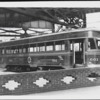
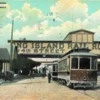


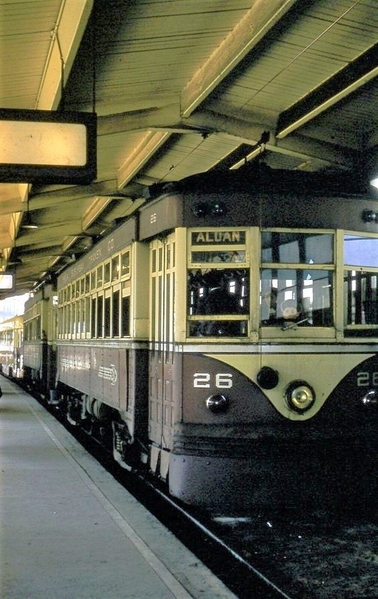
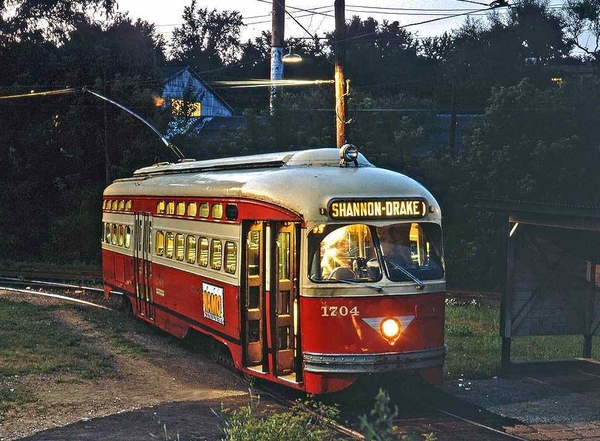
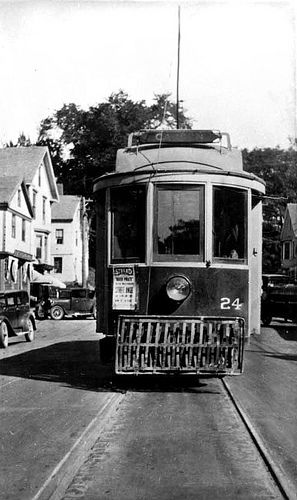


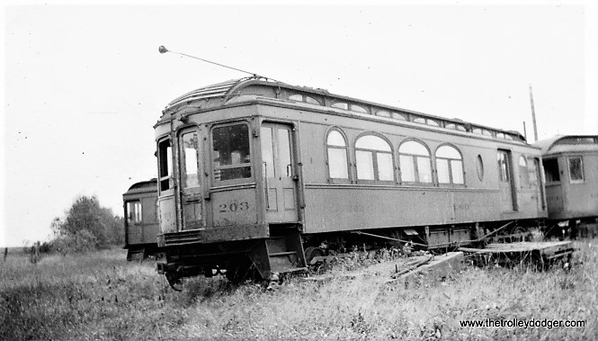








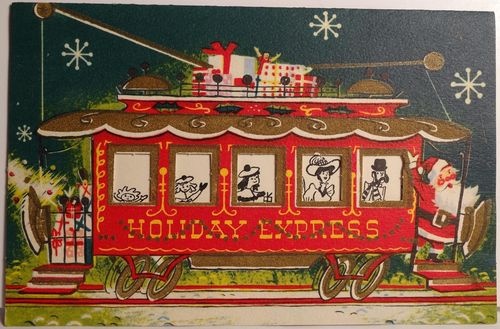

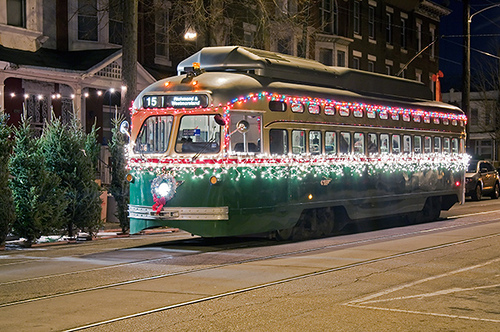
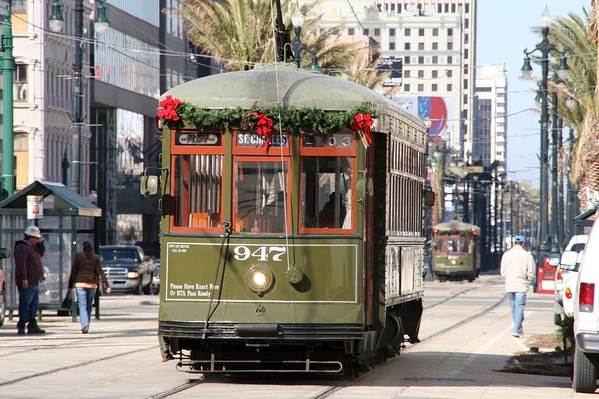
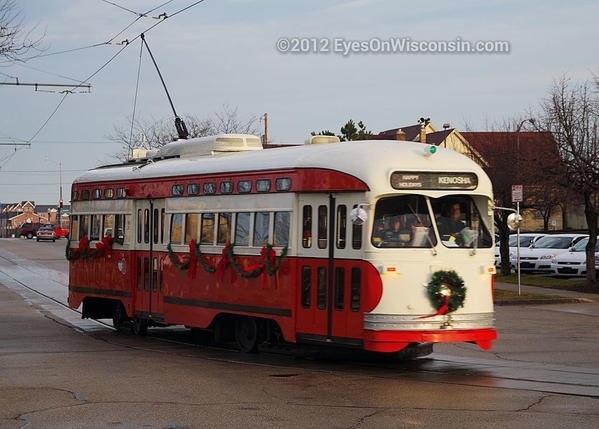
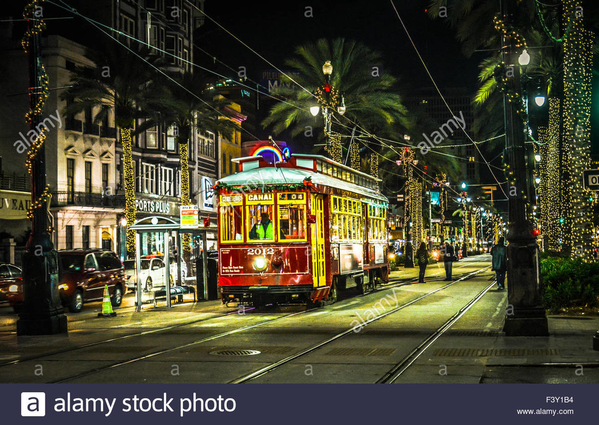
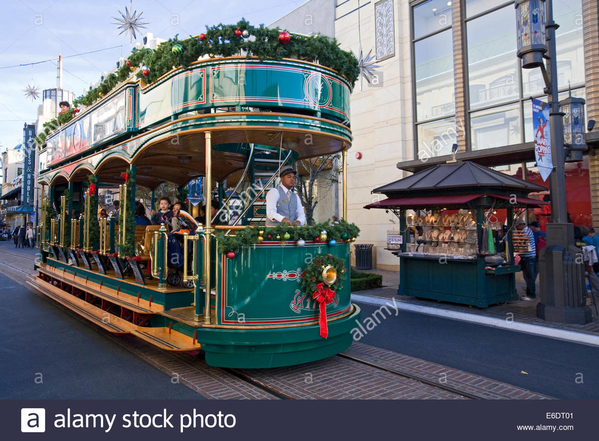

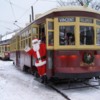





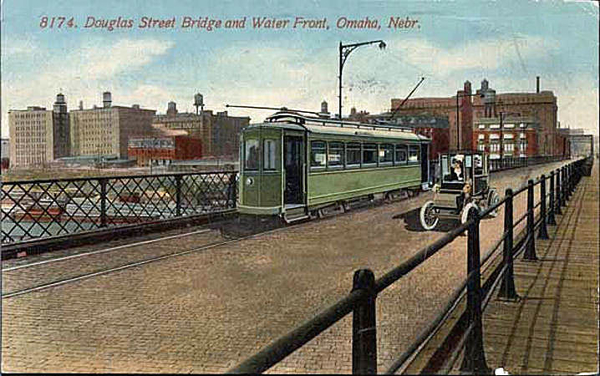
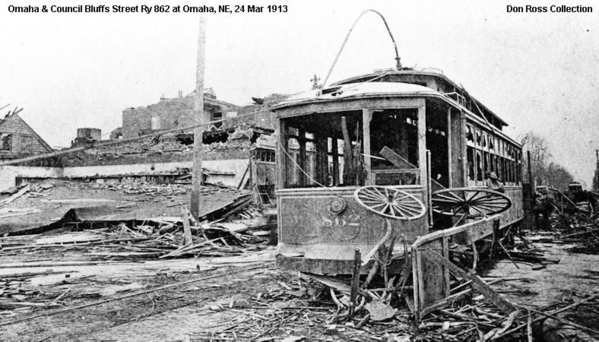
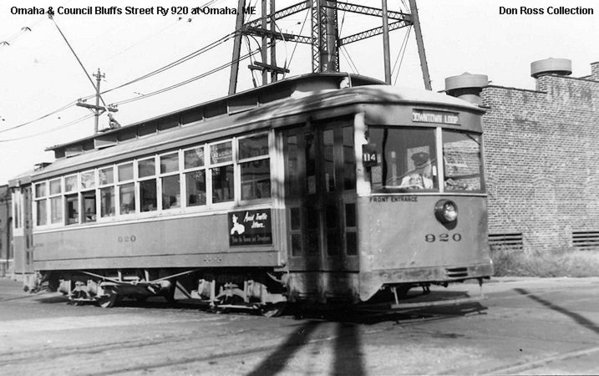

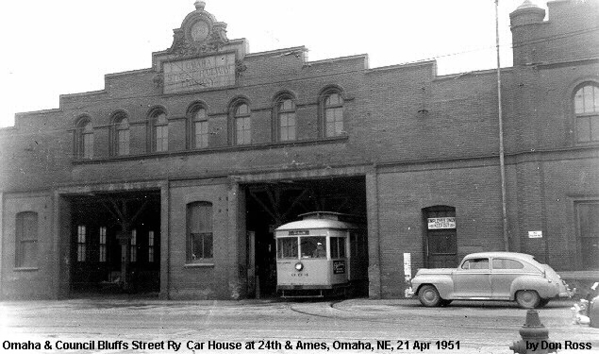
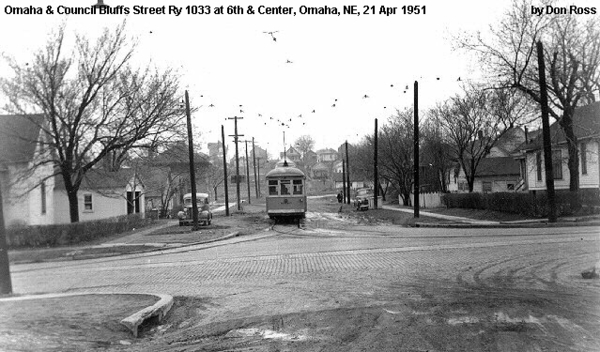
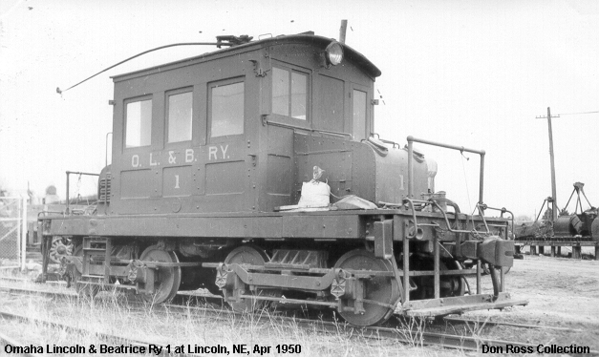
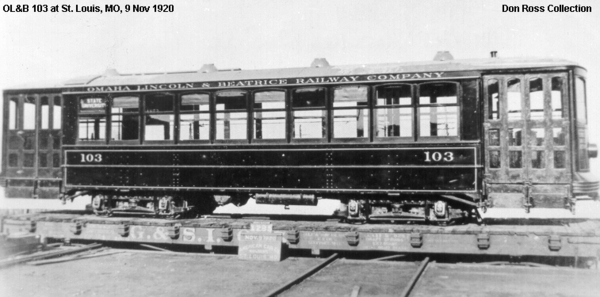



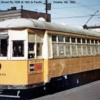




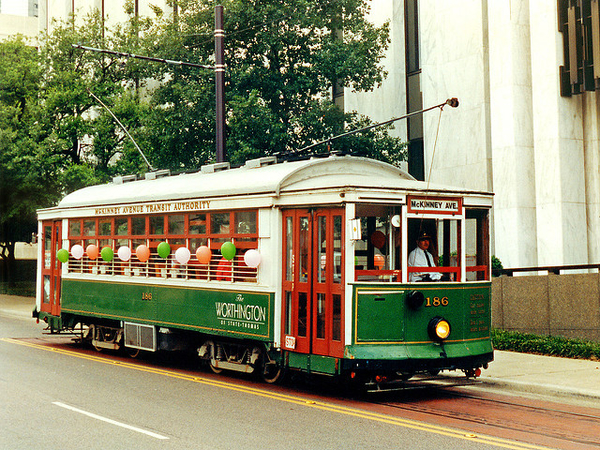
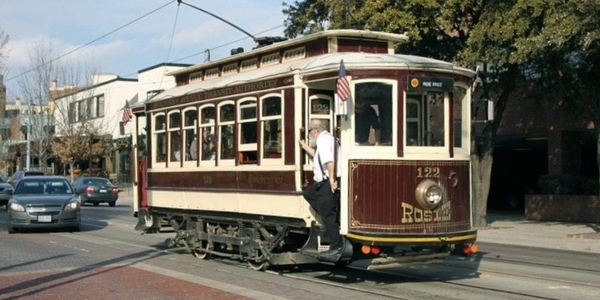
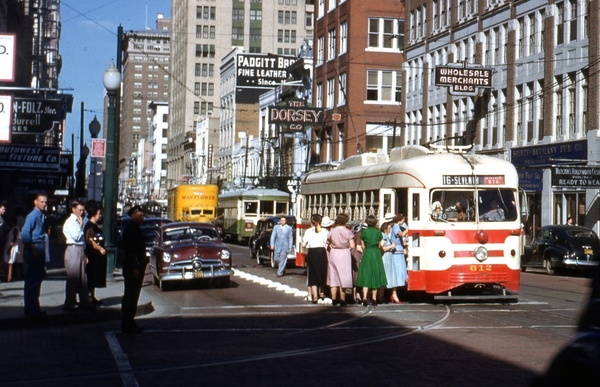
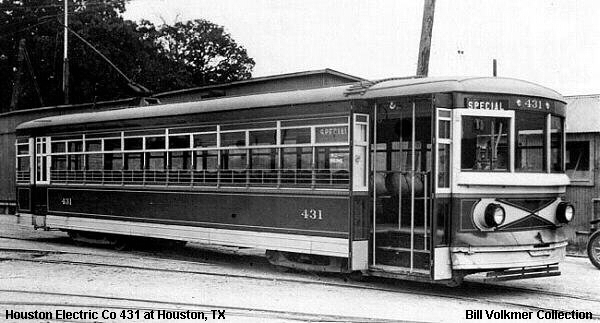
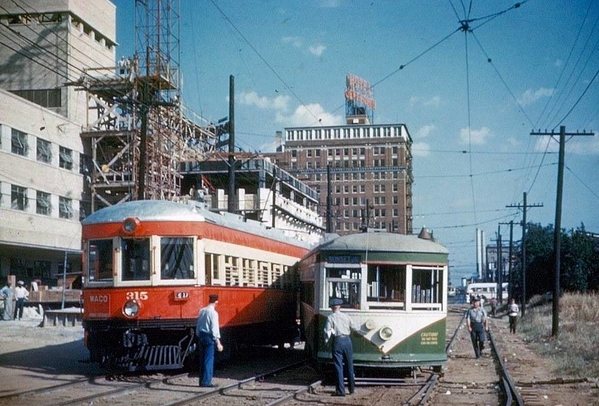
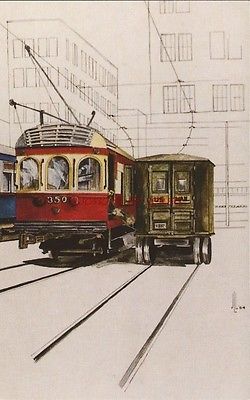


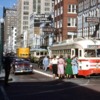

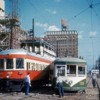
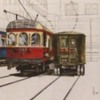
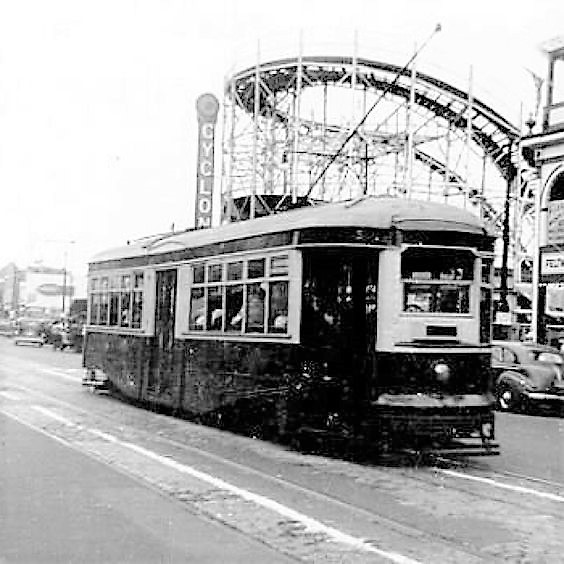
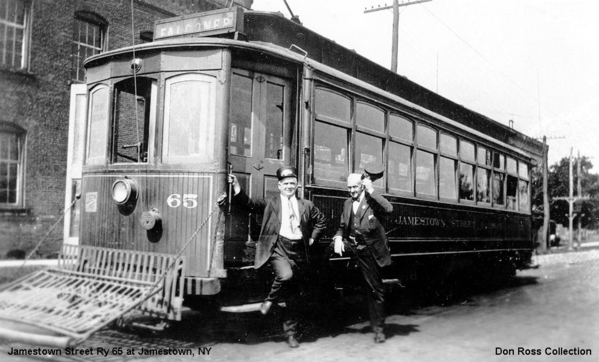
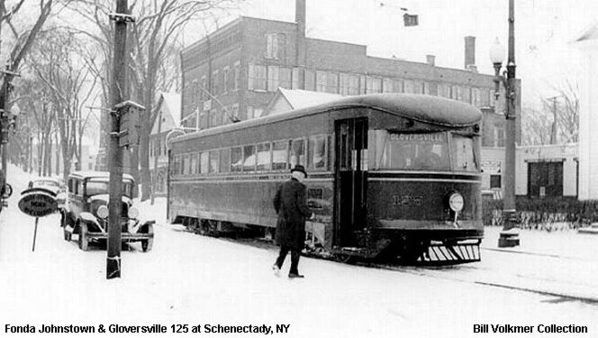
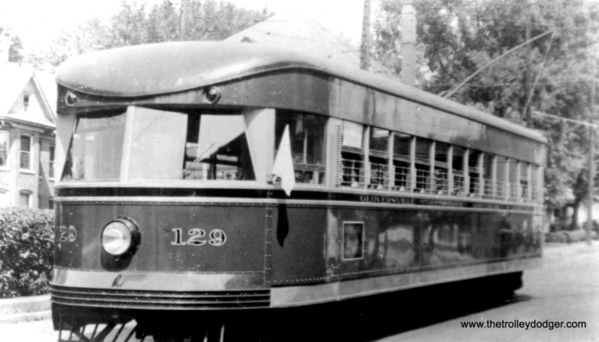
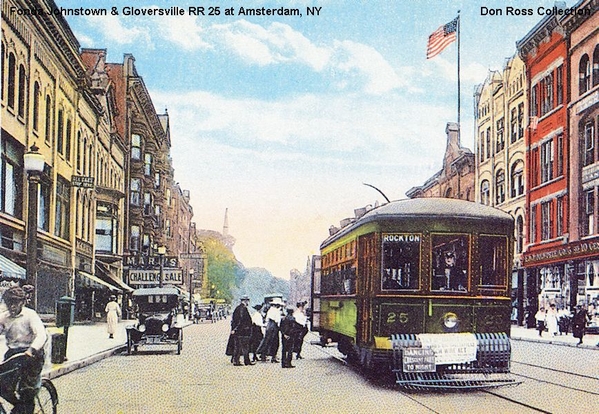
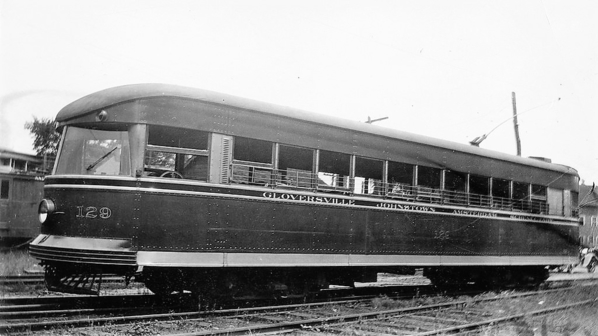
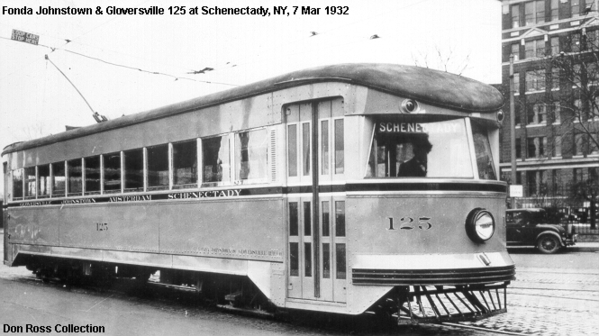
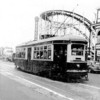


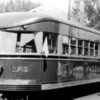



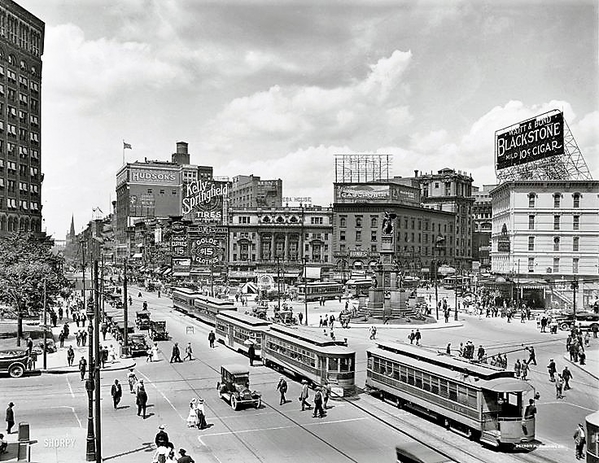
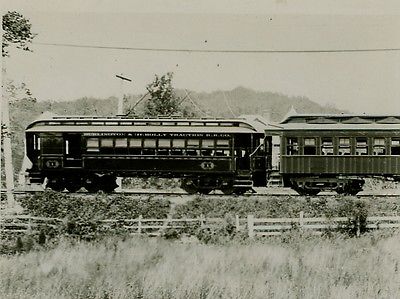
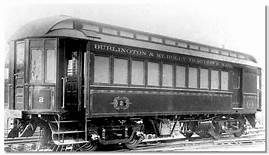
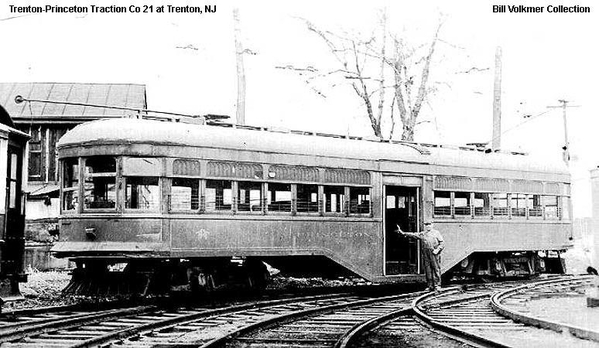
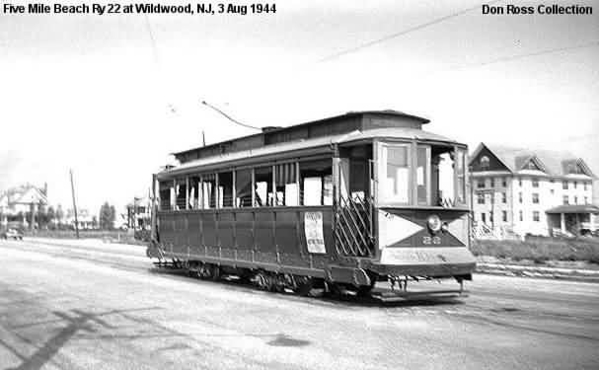
 Newark
Newark